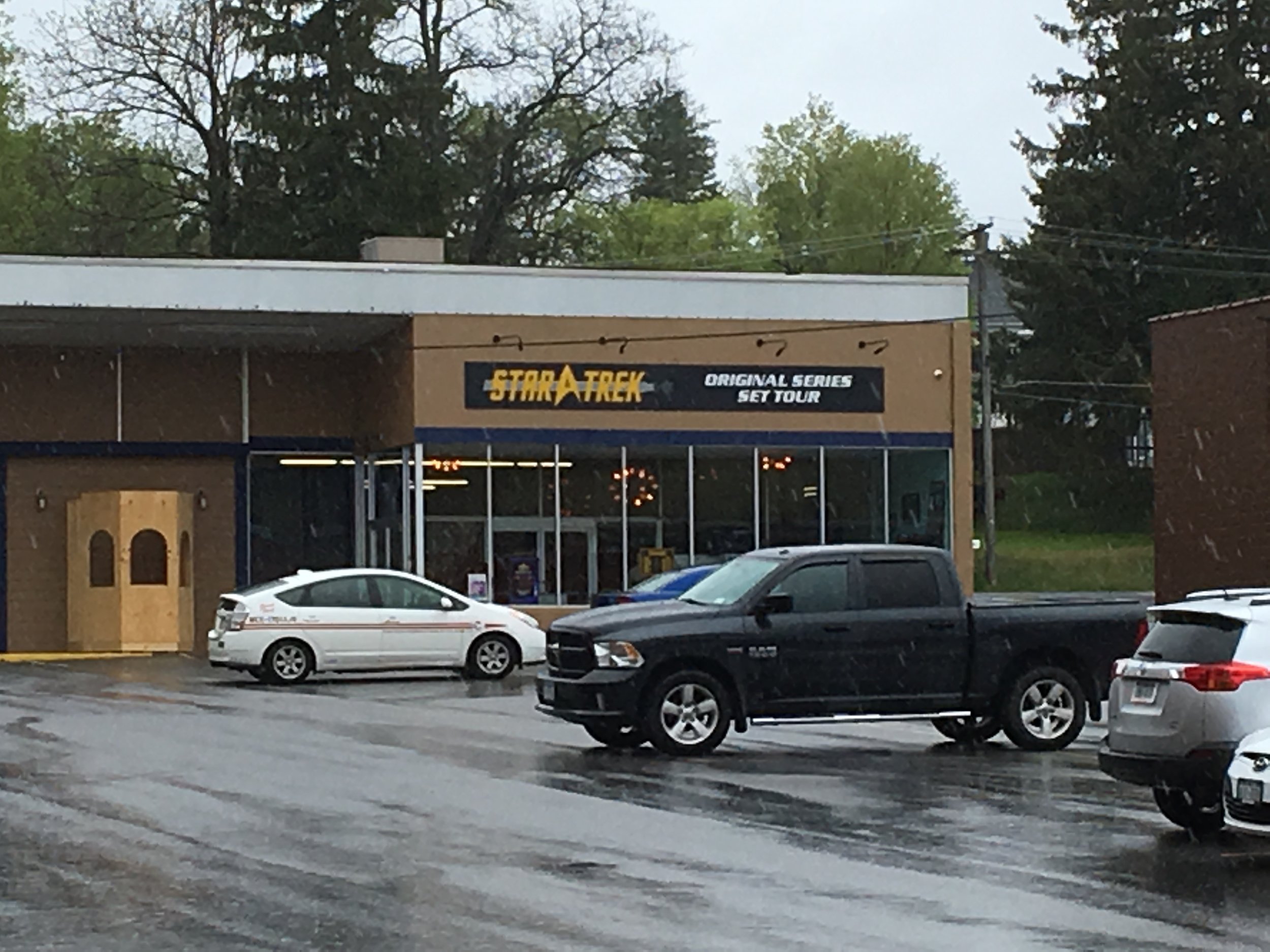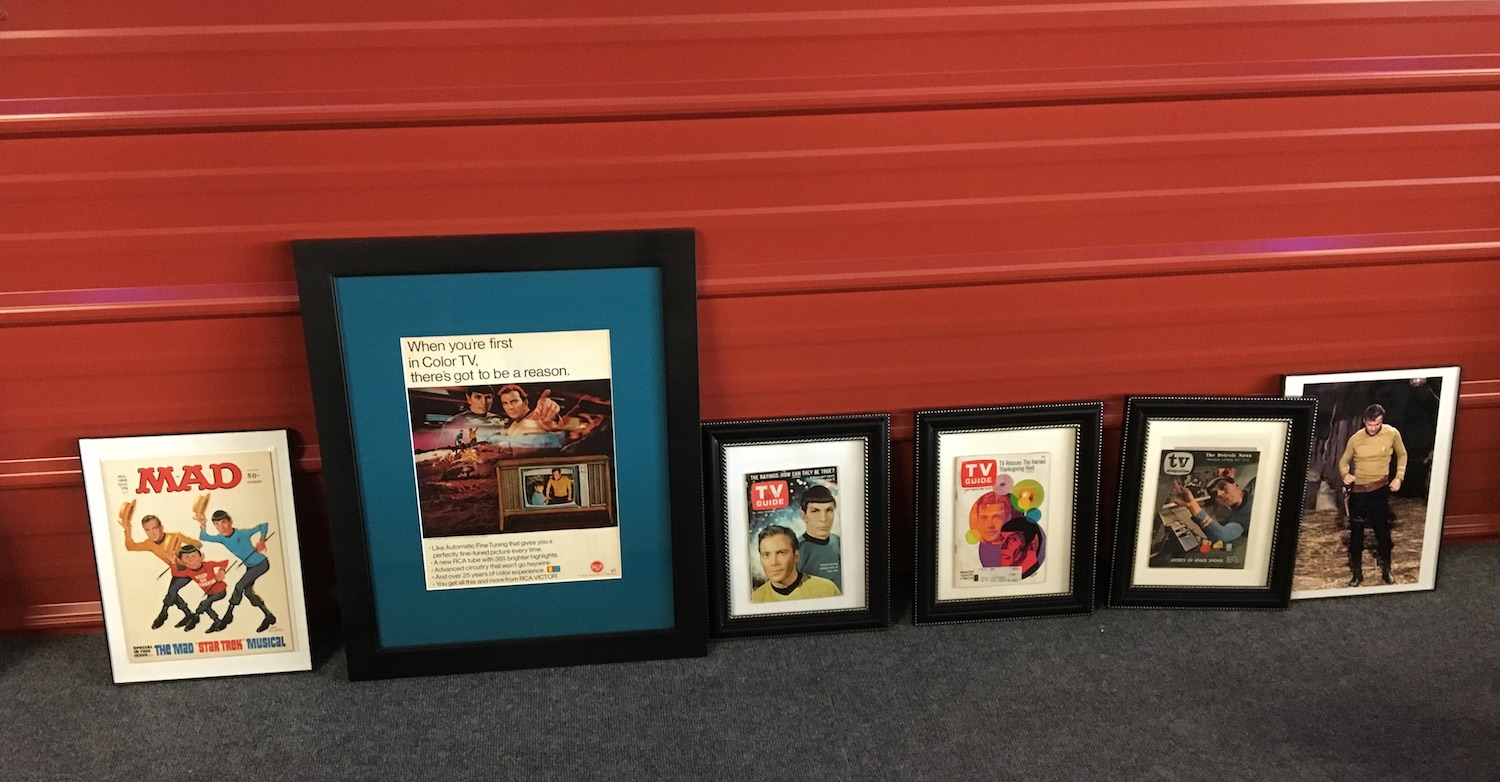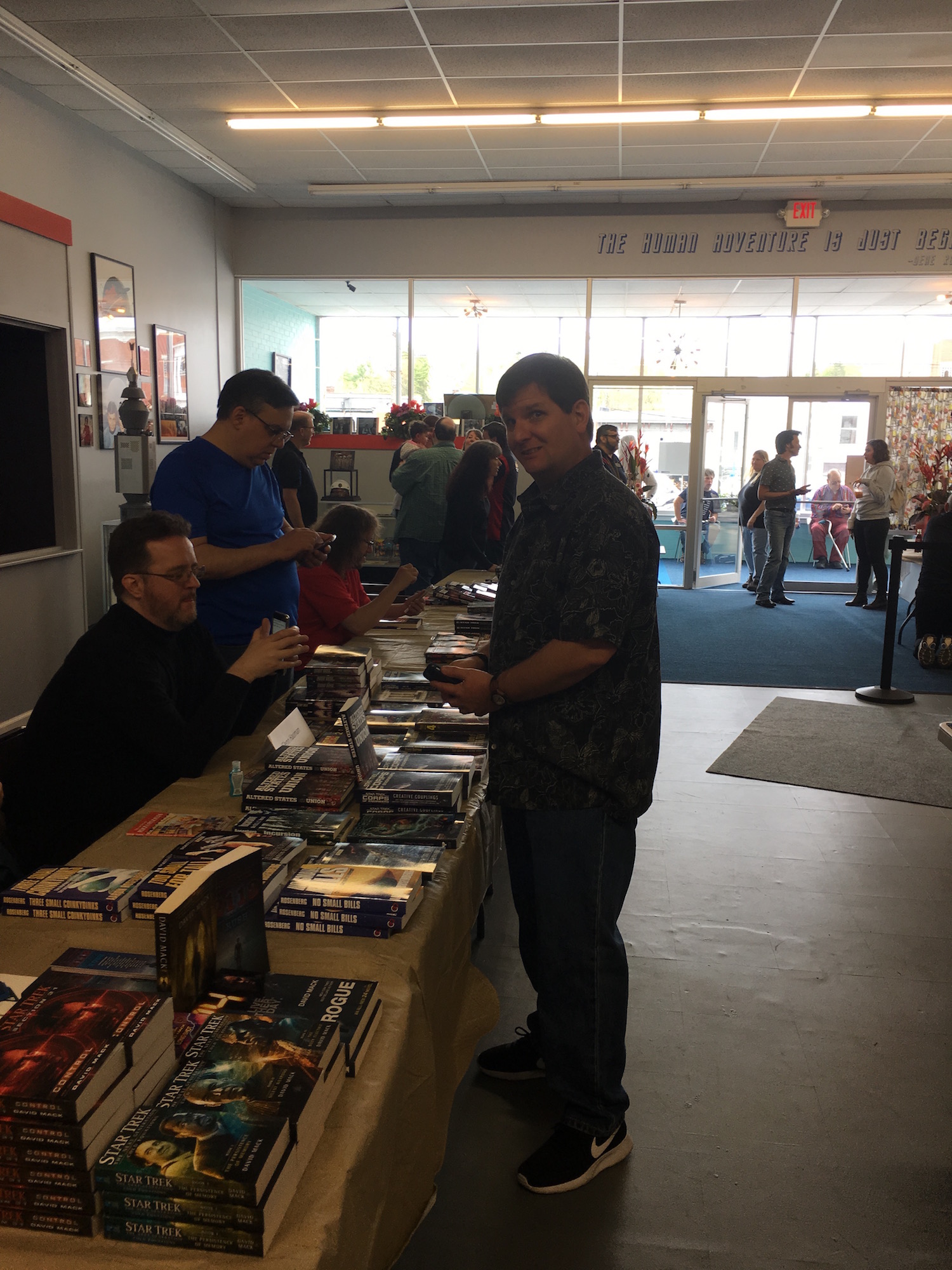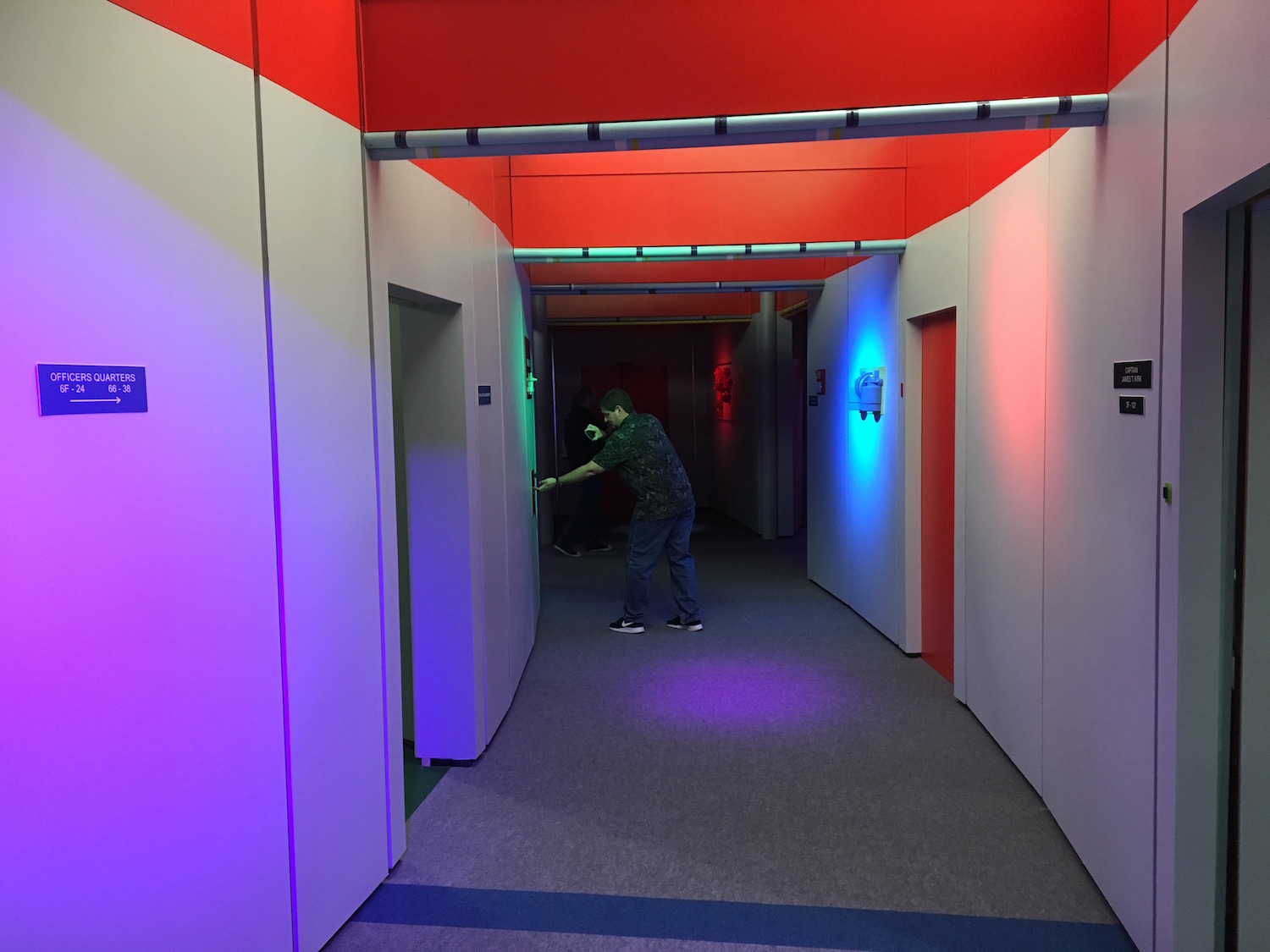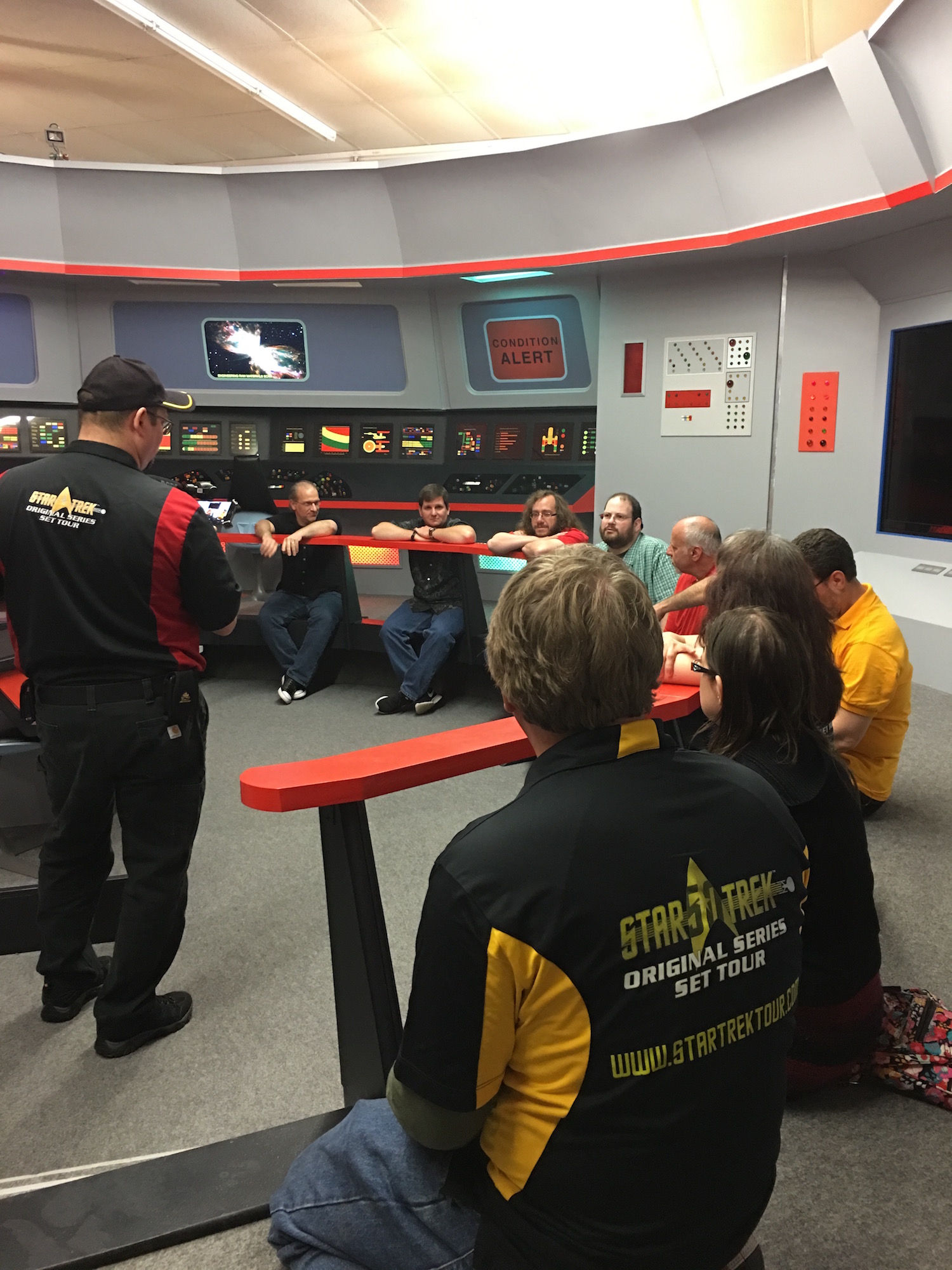A visit to upstate New York ends up being out of this world!
U.S.S. Enterprise Bridge Set
©2017 David R. George III
Last week, a veritable quire of Star Trek writers descended upon historic Ticonderoga, New York. All right, not a quire, but at least half a quire—more than a dozen of us traveled to the picturesque upstate town, which hosts a population of just over five thousand. It marked the third time in the past six years that we purveyors of Trek literature have gathered for a weekend of camaraderie. Prior to those get-togethers, many of us had gotten to know each other; we’d sometimes worked together on various projects—by telephone or e-mail—and we’d occasionally spent time together at conventions. Since we enjoyed each other’s company, we collectively decided that it made sense to socialize absent the responsibilities required of us and the time constraints imposed on us at such events. And so in 2012, seven intrepid writers met in Kansas City for a long weekend of revelry and bonhomie. In 2013, even more of us made it to Houston, where we shared a once-in-a-lifetime, all-day, private tour of the National Aeronautics and Space Administration’s Lyndon B. Johnson Space Center—replete with robots, mission control rooms, a pass through a decontamination chamber, meteorites, moon rocks, full-size space station mock-ups, and real live astronauts. In 2016, we began contemplating another trip, and a couple of our number hit upon the idea of convening at the Star Trek Original Series Set Tour. Dave Galanter had actually visited the site before, and he also knew the owner. Before long, thanks to Dave, we not only had a place to rendezvous, but we’d been asked to participate in an Authors Day event at the one-of-a-kind venue.
My wife, Karen, and I arrived in Ticonderoga at midday on Friday. Gray skies and a steady rain didn’t diminish our anticipation. I texted most of the group—those writers for whom I had cell phone numbers—and discovered that nobody else had yet arrived. Karen and I decided to head out from the hotel for lunch. We ended up on the town’s main drag, Montcalm Street, at a charming, old-fashioned eatery called Burleigh’s Luncheonette. You can click on the photographs below—and everywhere else on this page—to see the images full-size and to read their captions.
As we started inside, Karen and I noticed a sign just down the block and across the street. Amid the old buildings and the small-town feel of the place, it looked incongruous, but we of course recognized it immediately. That quickly, without even trying, we had happened upon our ultimate destination. We couldn’t help but snap a few pictures.
After a delicious lunch at ridiculously low prices, Karen and I drove around Ticonderoga. Though officially founded in 1804, the history of the town’s European visitors goes back to the 17th century, when the French explorer Samuel de Champlain surveyed the area. Of course, Native American tribes such as the Mohawk and the Onondaga have inhabited the region for millennia. Karen and I enjoyed seeing both the historical sites in the town and the natural beauty of its setting.
Clockwise from Bottom Left: Karen Ragan-George, Kara Bain, Bob Greenberger, Dave Galanter, Aaron Rosenberg, Kevin Dilmore, Sam Galanter, and Scott Pearson
©2017 David R. George III
Afterward, we headed back to the hotel. I knew that one of the primary organizers of our event, the inestimable Bob Greenberger, had arranged for our group to have the use of a room in the facility, and so I checked with the woman at the front desk about it. I soon found myself alone in the hotel’s banquet room, but before long, Dave Galanter and Scott Pearson arrived. Karen came down from our room to join our merry band, along with Kara Bain (David Mack’s wife), Kevin Dilmore, Simantha Galanter (Dave’s wife), Bob Greenberger, and Aaron Rosenberg. Eventually, the rest of the group appeared: Keith R. A. DeCandido, Glenn Hauman, Brandy Hauman (Glenn’s wife), Bill Leisner, David Mack, Wrenn Simms (Keith’s wife), Lisa Sullivan, and Dayton Ward. Michael Jan Friedman would be arriving the next day. As we had previously planned, we all went out to dinner together, then returned to the hotel to hang out until the wee hours, reveling in simply being together. Did we laugh? Continually. Did we tell stories? Yes, we did—that’s what we do. Did we talk out of school? You can never tell. All I can say is that, on the way back from the restaurant, some of our number made a detour to a liquor store, and Karen arranged for glassware to be delivered to the banquet room. A good time was had by all.
On Saturday morning, Karen and I met up with Bob Greenberger. As we left the hotel for breakfast, our sensors detected an unexpected vehicle—unexpected, but not unrecognizable. It would turn out to belong to one of the devoted and hardworking volunteers who have helped make the Star Trek Original Series Set Tour such a spectacular accomplishment, and who continue to ensure that visitors have a wonderful experience.
For those wondering, the shuttlecraft’s namesake, Zhang Heng, lived in China in the first and second centuries CE. Considered a polymath, he counted his achievements in numerous disciplines, including art, astronomy, cartography, engineering, geography, literary scholarship, mathematics, poetry, science, and statecraft. He created a catalogue of about 2,500 stars, improved calculations of pi, and invented both the first water-powered armillary sphere and the first seismoscope. All in all, not a bad choice as an individual for whom to name a Starfleet vessel.
Leaving Zhang Heng at its landing field, Karen and I returned to Burleigh’s Luncheonette for another fine meal, this time with Bob. The three of us then crossed the street to meet up with the rest of our group for the main event. As the writers arrived, we congregated outside the Star Trek Original Series Set Tour. Michael Jan Friedman finally made it to Ticonderoga, and we also ran into Ian Spelling, Yasmin Elachi, and Jordan Hoffman, three of StarTrek.com’s crew who had come out to cover the event. We were then all greeted by the owner and motive force behind the Set Tour, James Cawley. Sporting thick, dark hair arranged in a 1950s-style pompadour, the man looked as though he could’ve just stepped offstage after crooning an Elvis Presley tune—which is, as it turns out, something he’s done many times. Mr. Cawley has for years earned a living performing in concert as the King, often alongside Elvis’s background vocalists, the Jordanaires. For a taste of Mr. Cawley’s talents, you can check him out singing parts of “See See Rider,” “You’ll Never Walk Alone,” and “Can’t Help Falling in Love” in this video, just one of many posted to YouTube.
Before we even entered the Set Tour, I spotted a few items that suggested something special awaited inside. If you take a close look at the front windows in the photograph below, you can see two sentries standing guard: the creature from planet M-113—the so-called salt vampire—from the episode “The Man Trap,” and the Gorn captain from “Arena.” I also spied signage from the original sets and from Desilu Studios, Star Trek’s first production company. Promotional photographs from the earliest days of the series also adorned the front of the place.
Before embarking on our tour, Karen whispered to me that the writers should pose for a group photo. My wife always has good ideas. And although it’s easier to herd Denebian slime devils than Trek writers, we somehow managed to get it together long enough for people to take some pics.
From Left to Right, a Motley Crew: Dave Galanter, Dayton Ward, DRG III, Aaron Rosenberg, Keith R. A. DeCandido, Bob Greenberger, Glenn Hauman, Scott Pearson, Kevin Dilmore, David Mack, and Bill Leisner
©2017 Karen Ragan-George
At last, Mr. Cawley led us inside. We were greeted in the foyer not only by the Gorn captain and the M-113 creature, but by a cadre of dedicated volunteers: Penny Bennett, Ashley Brand, Ronnie Burroughs, Patrick Cawley, Linda Falvo, Rich Ferguson, Brian Gottschalk, Wendi Horan, Brian Hudon, Ed Kear, Sandy Kear, Deb Mailhotte, Jess Mailhotte, Mike Perry, Marybeth Ritkouski, Mike Rizzo, Charles Root, Mark Strock, and Dr. Willie Yee. They welcomed us warmly and, as they hosted us throughout the day, they made a great experience even better.
After entering the building, we stepped from the foyer into a lobby adorned with a multitude of Star Trek paraphernalia. Artwork bedecked the walls. Models and props filled display cases. Even a vintage camera dolly sat parked in the middle of the floor.
I couldn’t believe how many items Mr. Cawley had collected from the original Star Trek. Everywhere I looked, I beheld objects that held me in thrall, sending bursts of artistic appreciation, nostalgia, and flat-out awe through my mind. Tribbles. A Klingon uniform shirt and vest. Balok’s alter ego from “The Corbomite Maneuver.” A Saurian brandy bottle. Scanners, tricorders, communicators, and phasers. Cuboctahedra and Scotty’s whisky bottle from “By Any Other Name.” A Melkotian head from “Spectre of the Gun.” But given what lay ahead, I hadn’t seen anything yet.
Mr. Cawley stepped up to a pair of pale-blue sliding doors. He explained that his vision for the Star Trek Original Series Set Tour had not been to create a reproduction of the U.S.S. Enterprise. He didn’t want to induce fans to feel as though they had boarded an actual 23rd-century starship. Rather, he wanted to provide visitors the experience of what it must have been like to step onto the sets of the original Star Trek television series. And with that, Mr. Cawley reached up to a string that opened the sliding doors—just as a stagehand had once done during the show’s production.
James Cawley about to open the doors to his Star Trek sets
©2017 William Leisner
Our ragtag group of writers enters the re-created sets from the original Star Trek television series
©2017 David Mack
Finally, we entered the sets. Even though I’m a professional writer, I can’t adequately describe how I felt, either as I first walked past those pale-blue doors or as I revisited the sets over and over again throughout the day. Yes, it felt surreal. But it also felt like coming home—home to a place I’d never lived and that didn’t actually exist. It made no sense and yet felt completely right. I think I had fantasized as a boy about re-creating the Enterprise bridge, but even then I realized that I never would. Who would do such a thing? Why would anybody do it? How could they do it? That day, I learned the answers. Who: James Cawley. Why: because he loves Star Trek and felt impelled to do it. How: with incredible care, with unparalleled attention to detail, and completely legally—which is to say, in consultation with CBS Television Studios, the show’s current copyright owner.
Star Trek fans show up to experience the Set Tour and see the visiting writers
©2017 Karen Ragan-George
The plan had been for the writers to tour the sets from 10:00 to 11:30 that morning, break for lunch, and then return in the afternoon to autograph books and interact with fans from 1:00 to 6:00. We did all of that, and we all had a wonderful time. Mr. Cawley and his staff could not have treated us better, and we all enjoyed chatting with visitors throughout the day. But between the times I spoke with people, I couldn’t help heading back onto the sets—not just once, not just twice, but many times. Nor was I the only one.
I’ve assembled a slide show of photographs that Karen and I and some of our friends took that day.

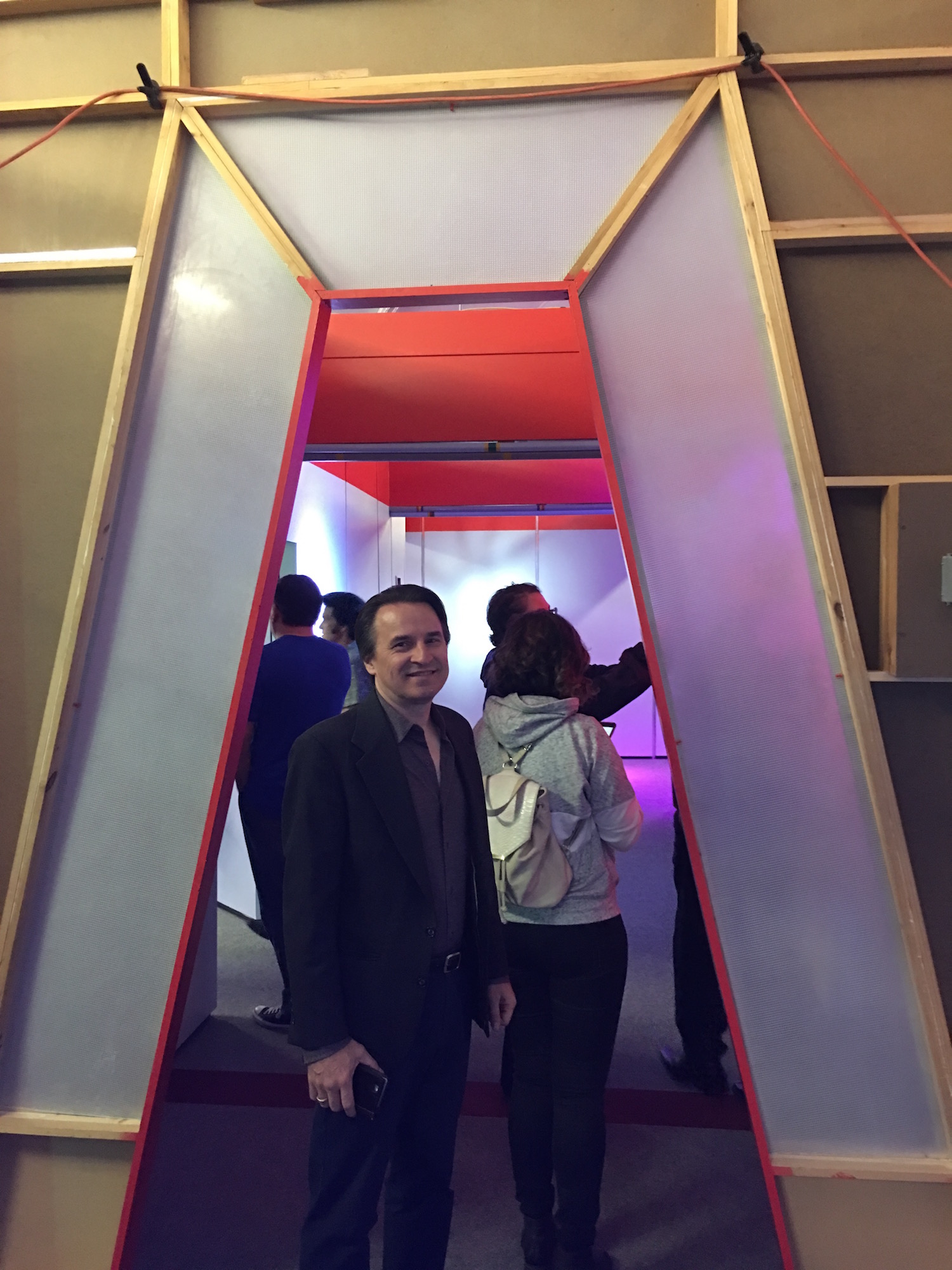
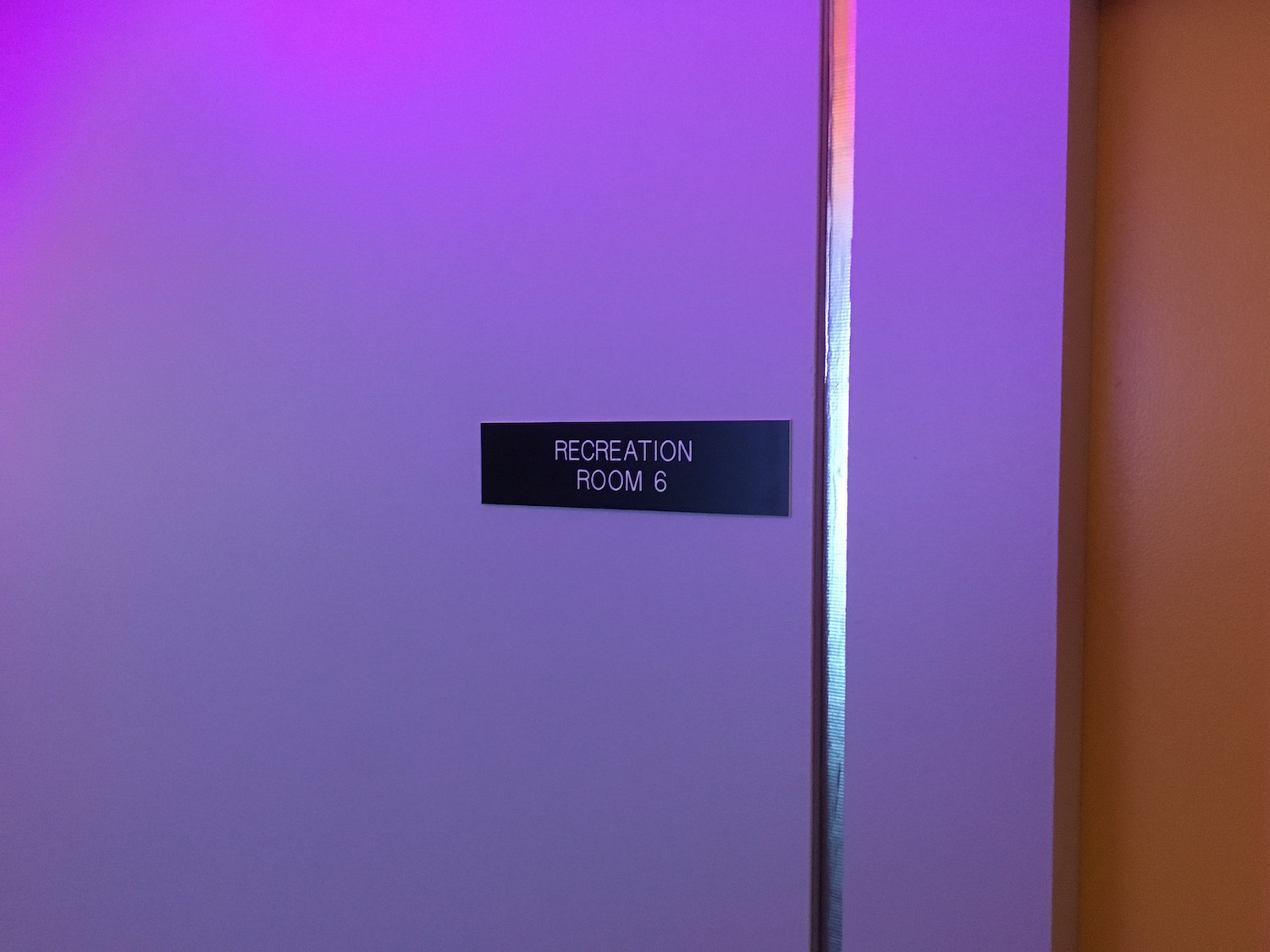

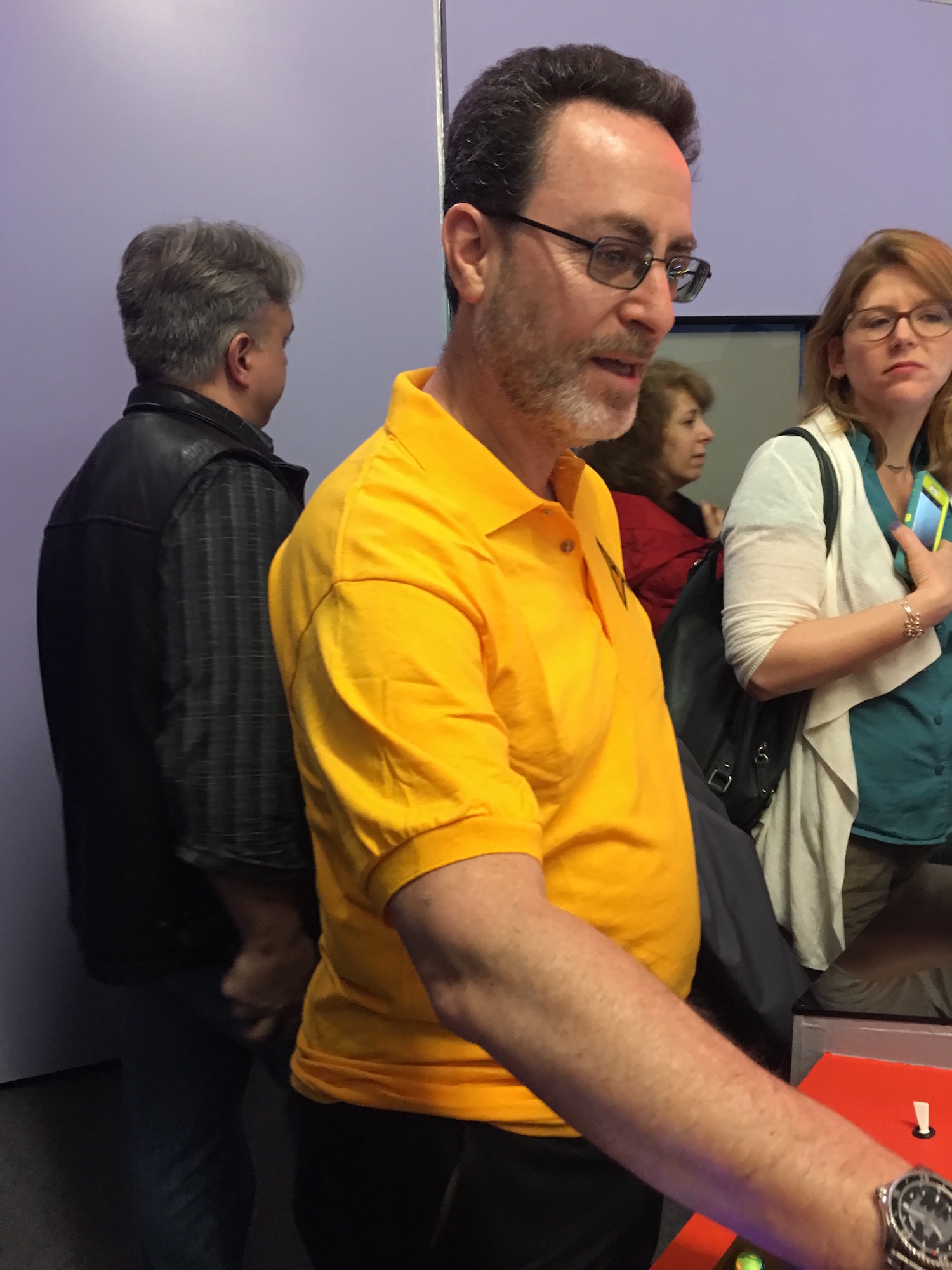
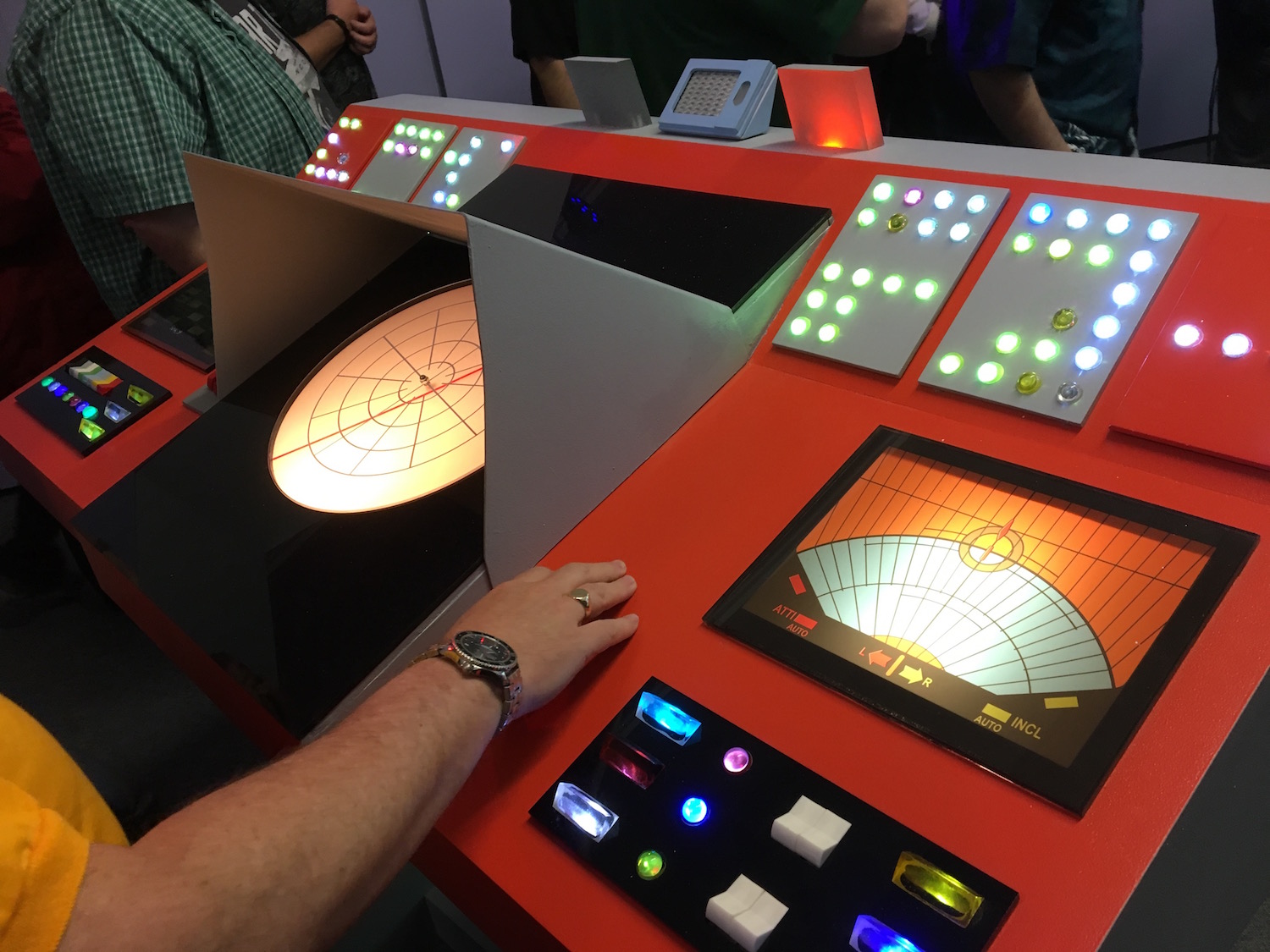
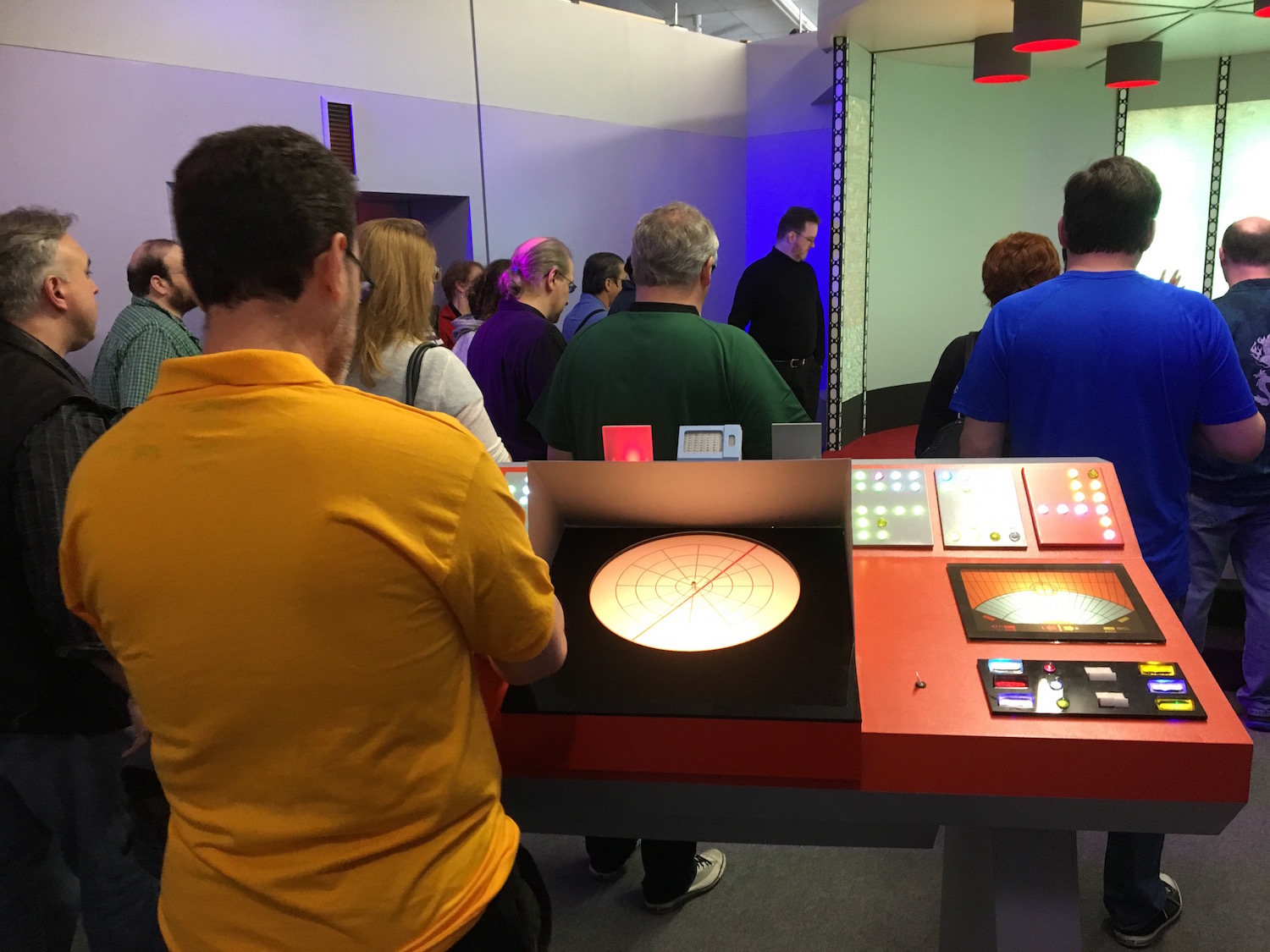
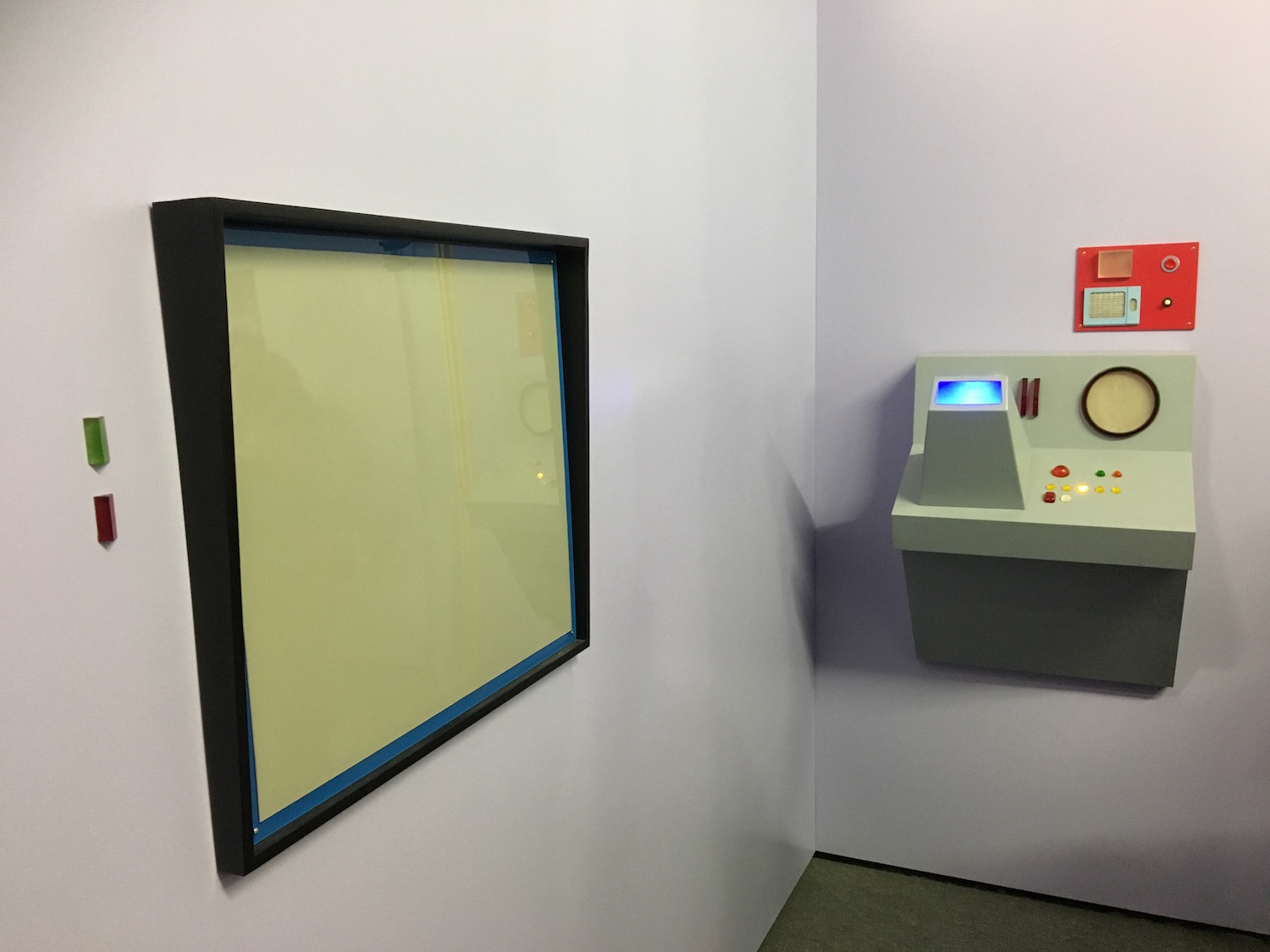
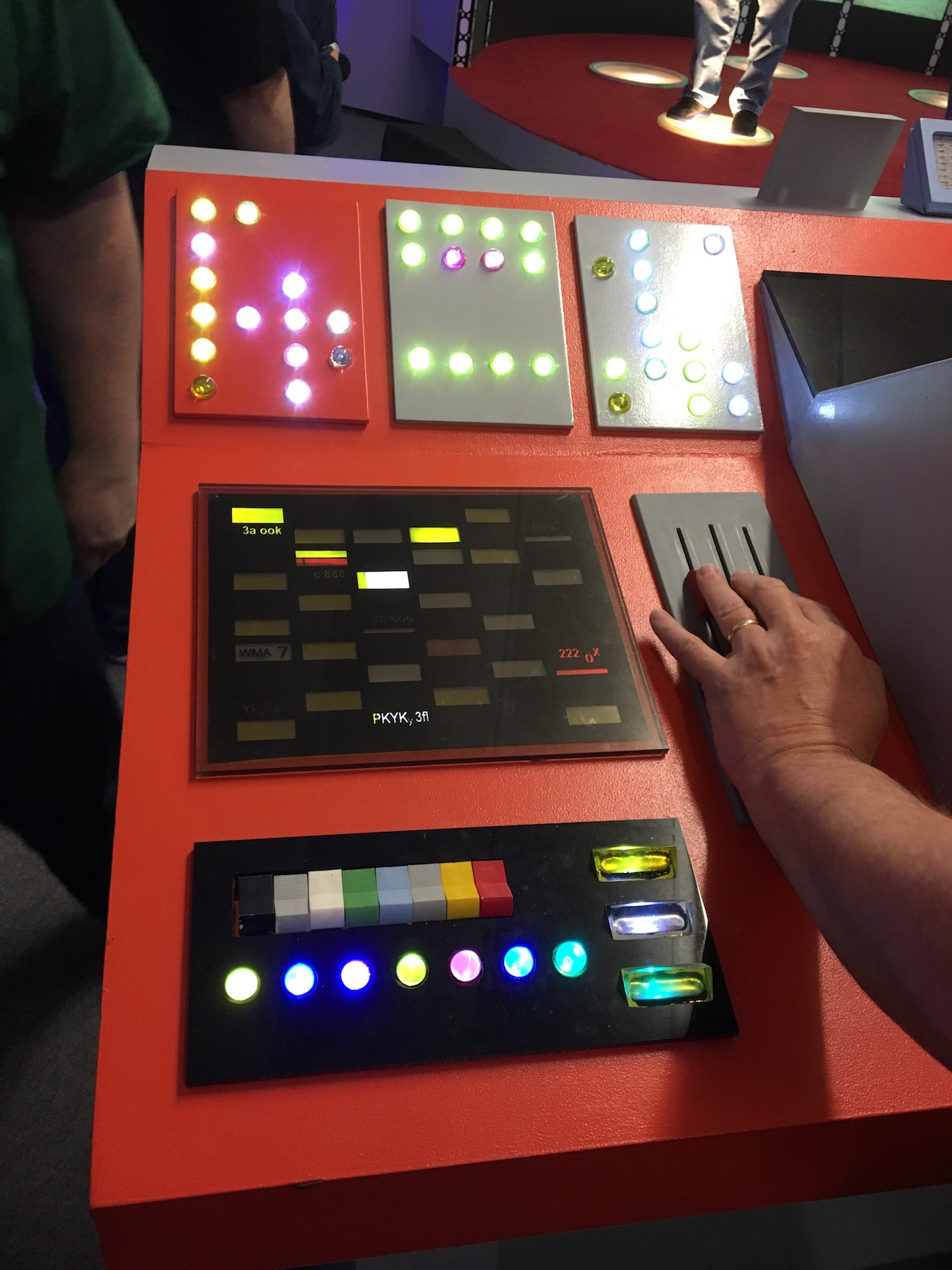

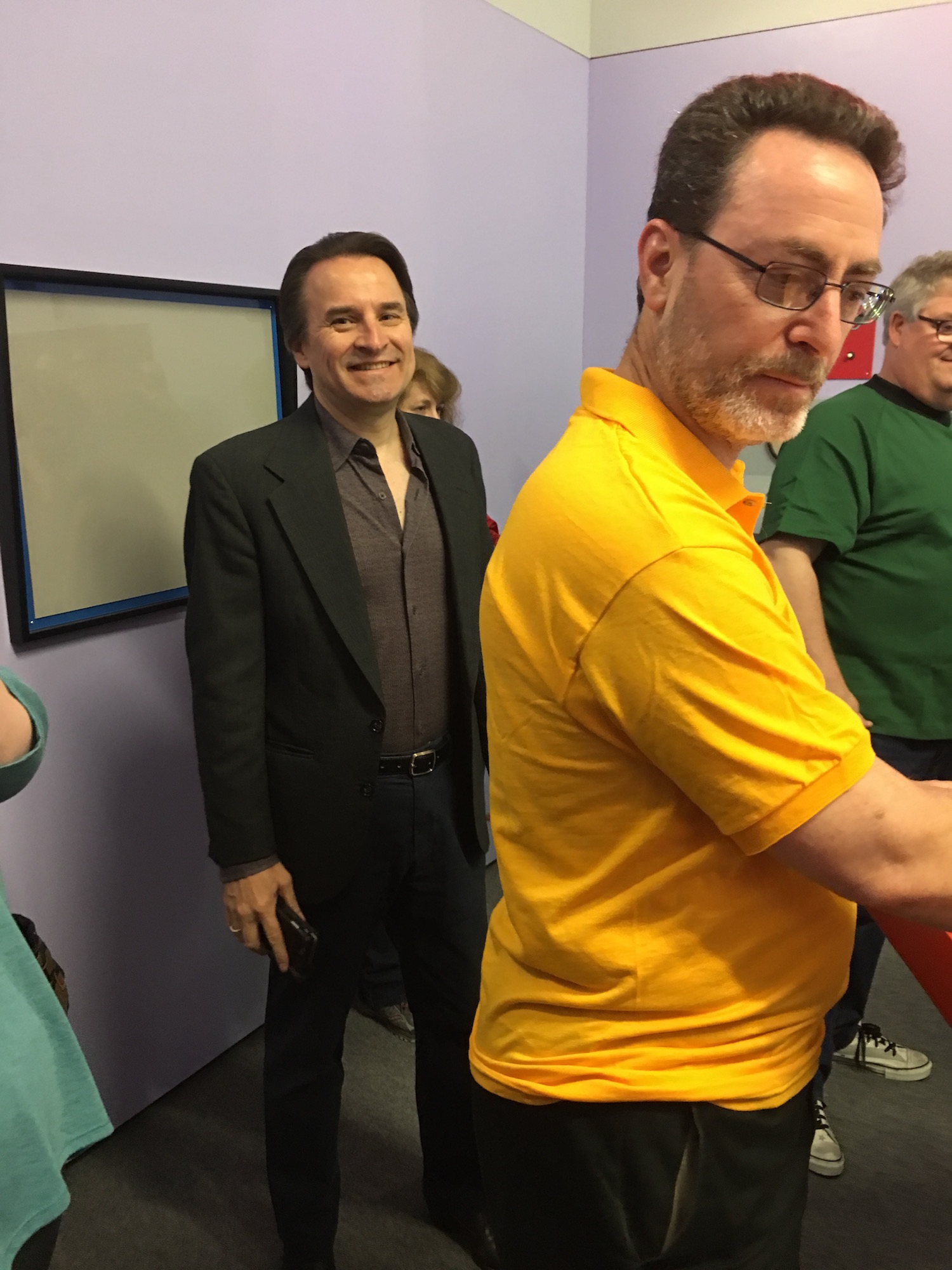

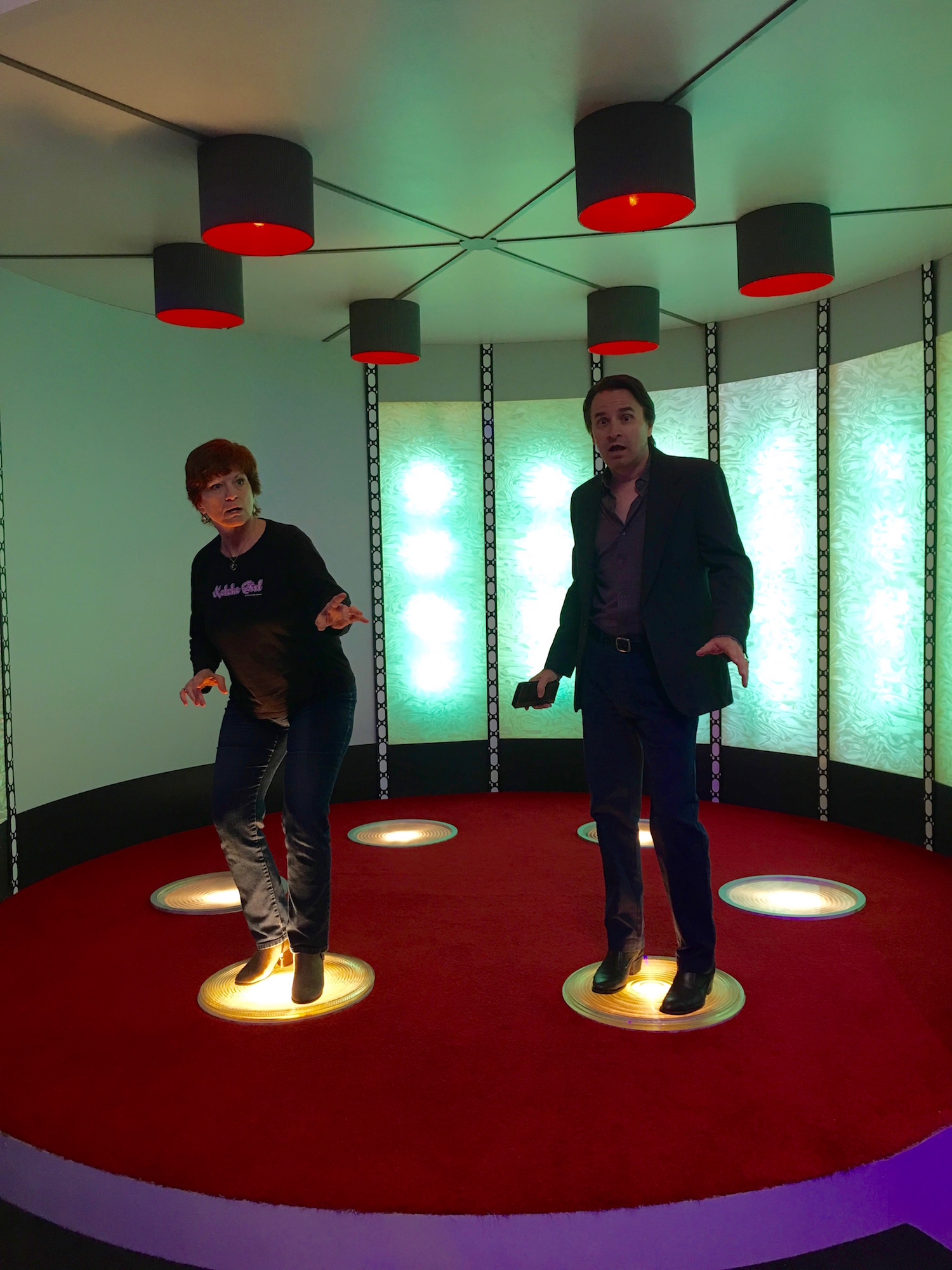
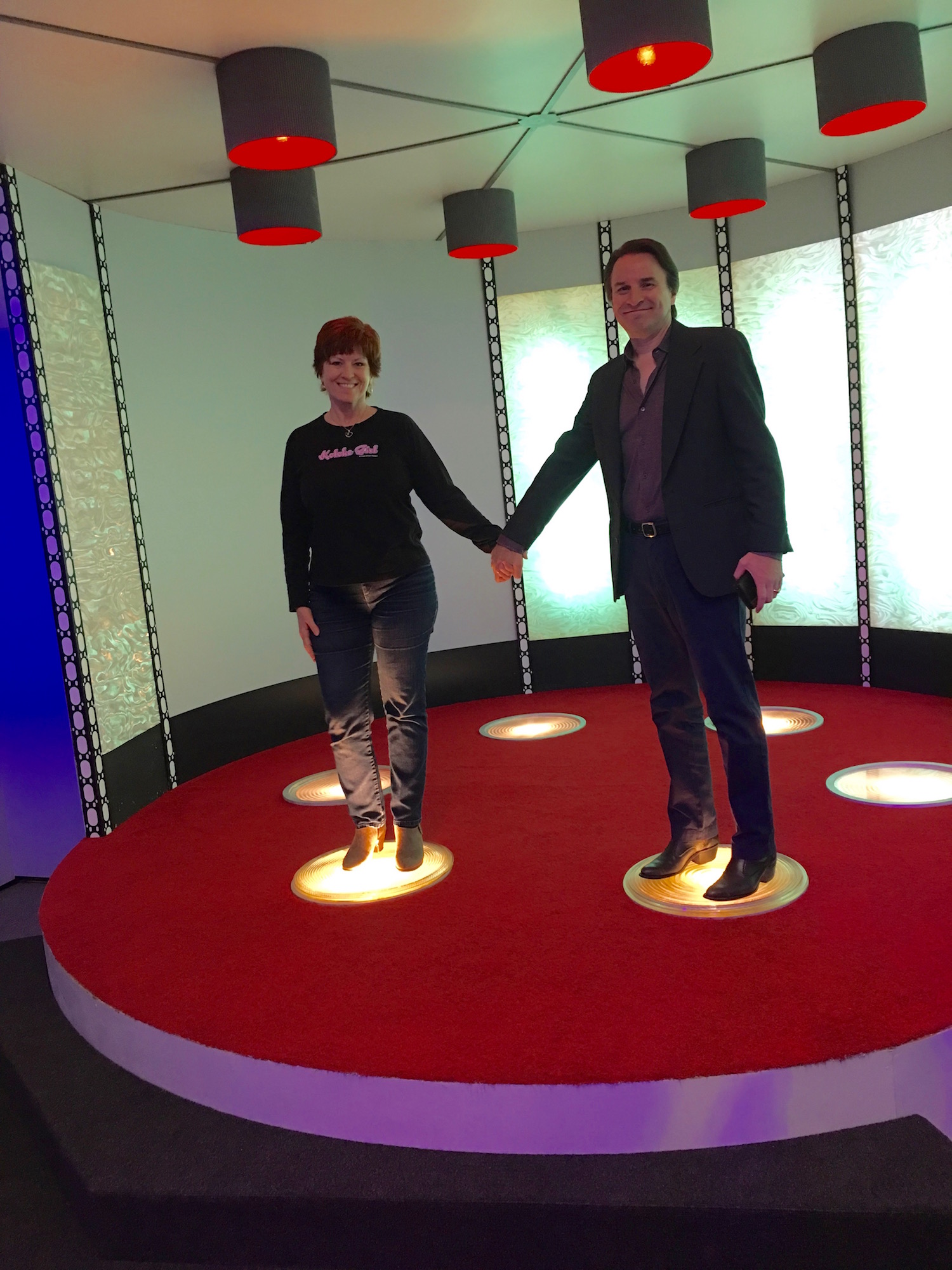
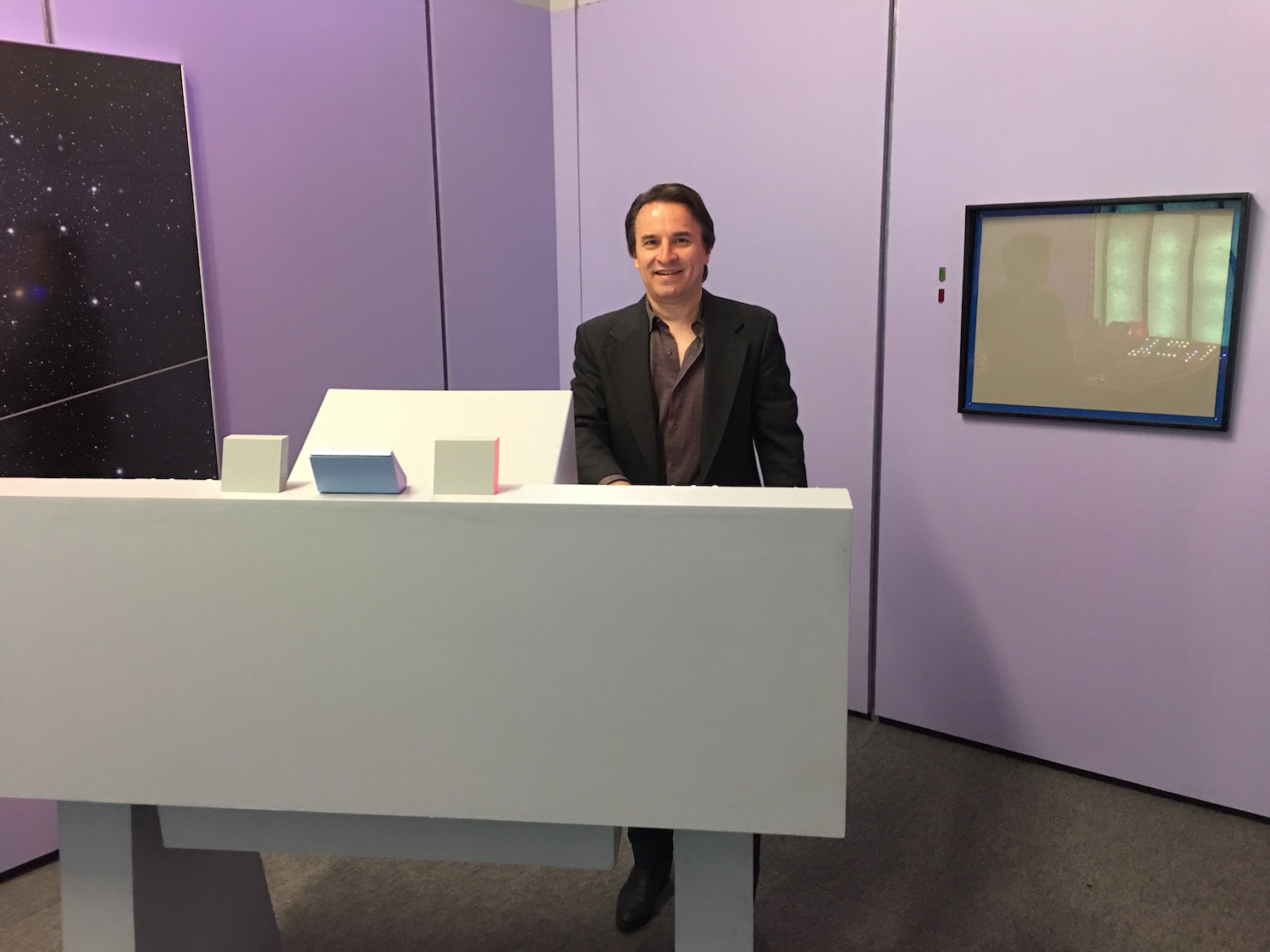
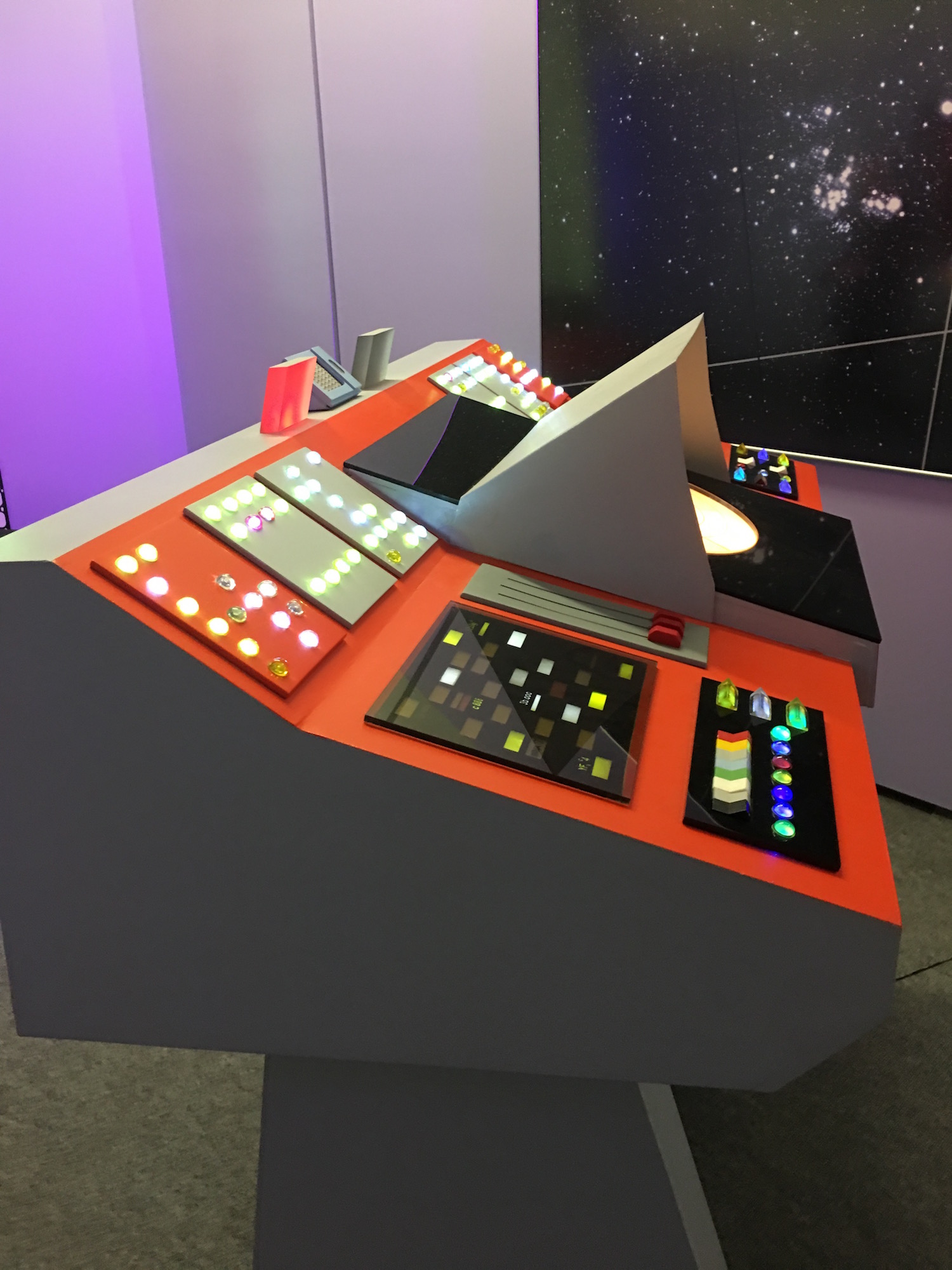

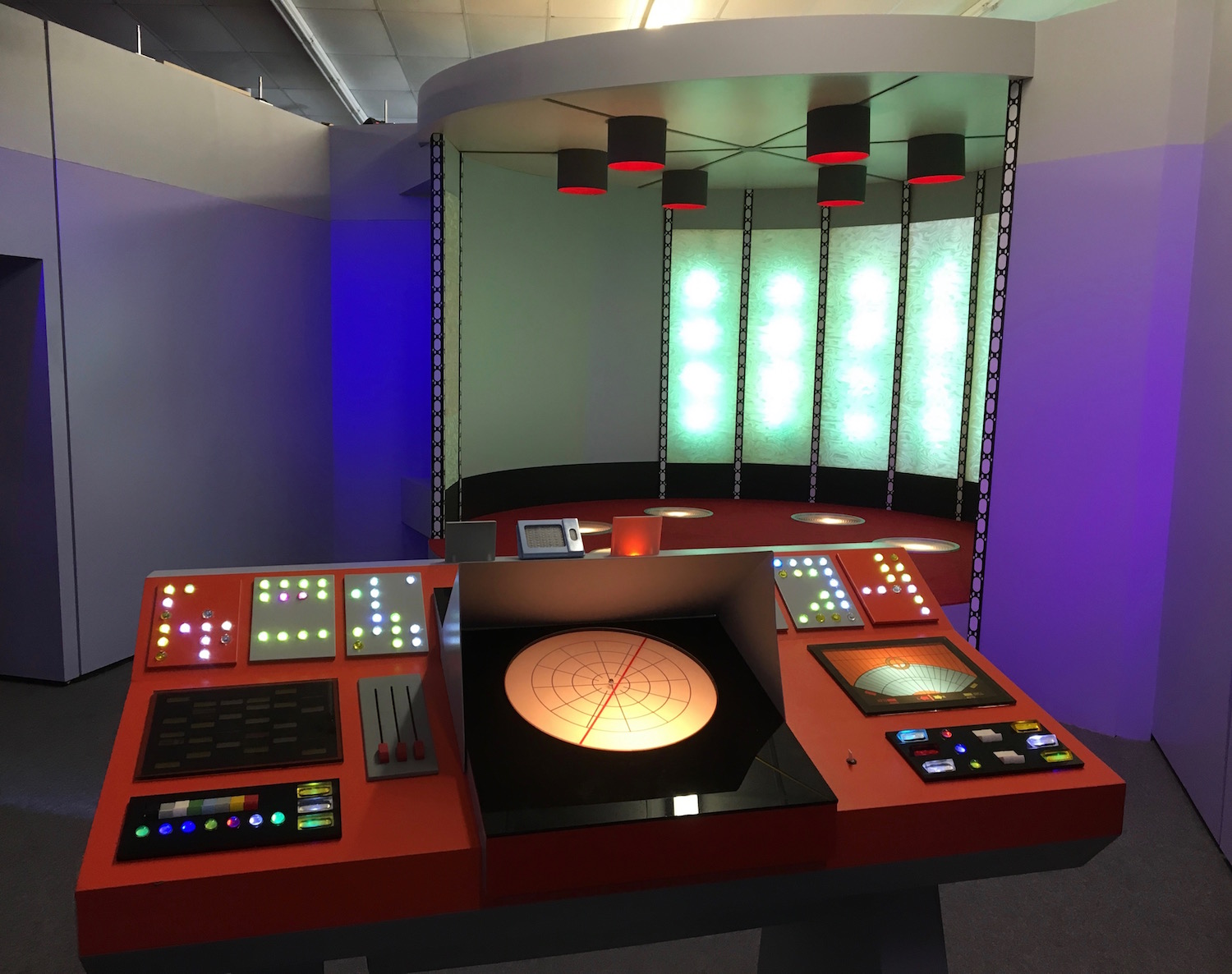
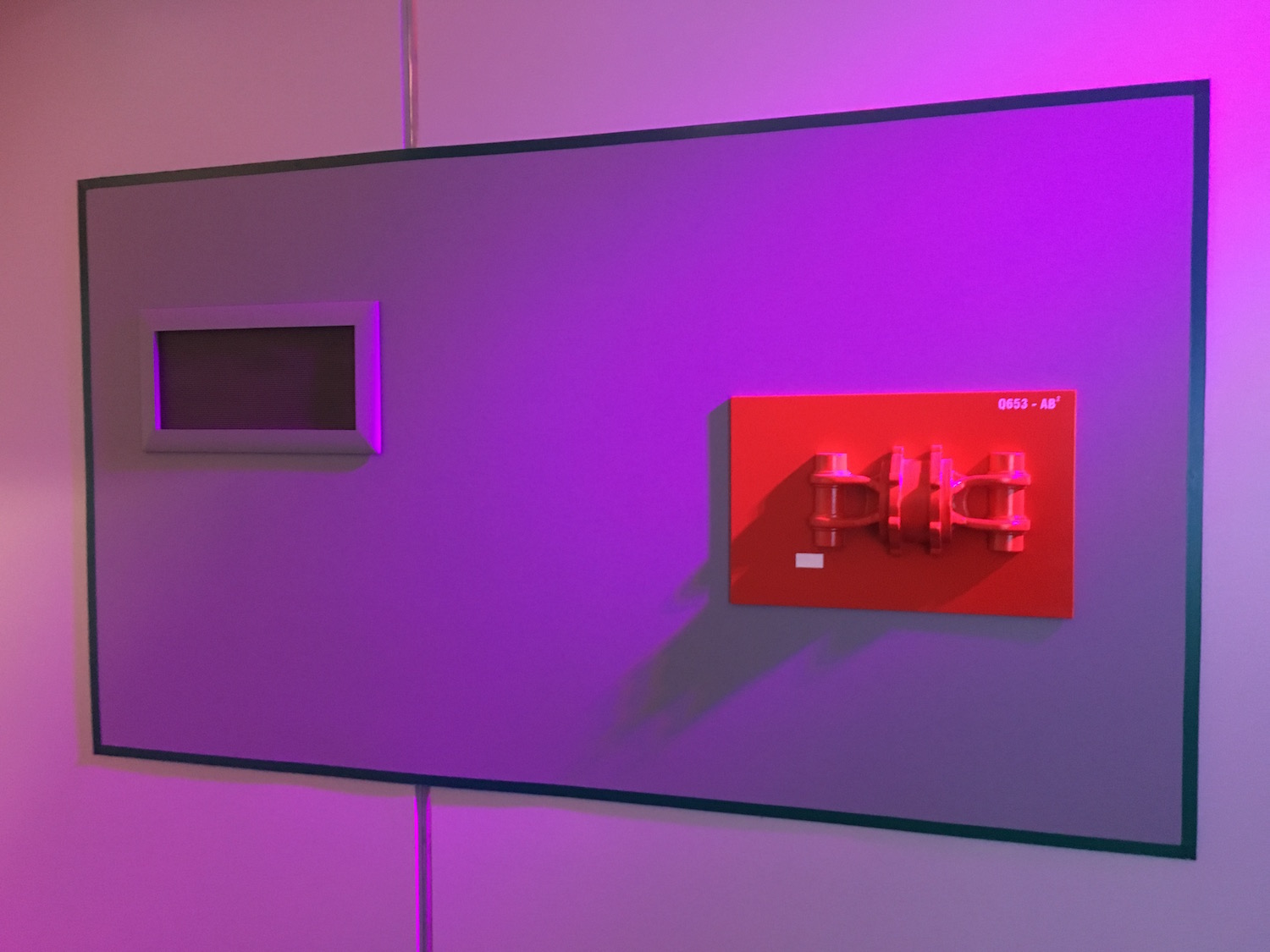
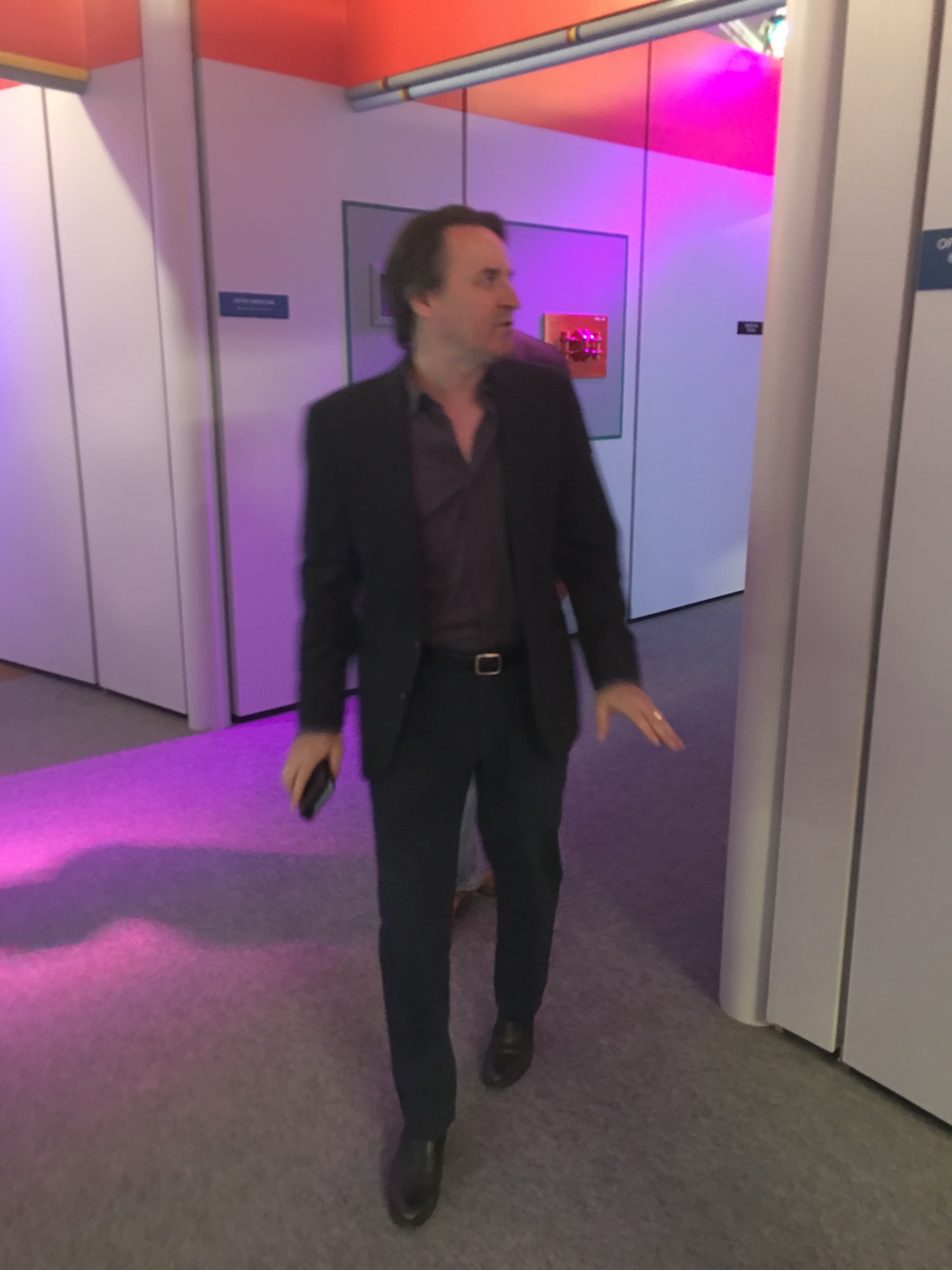

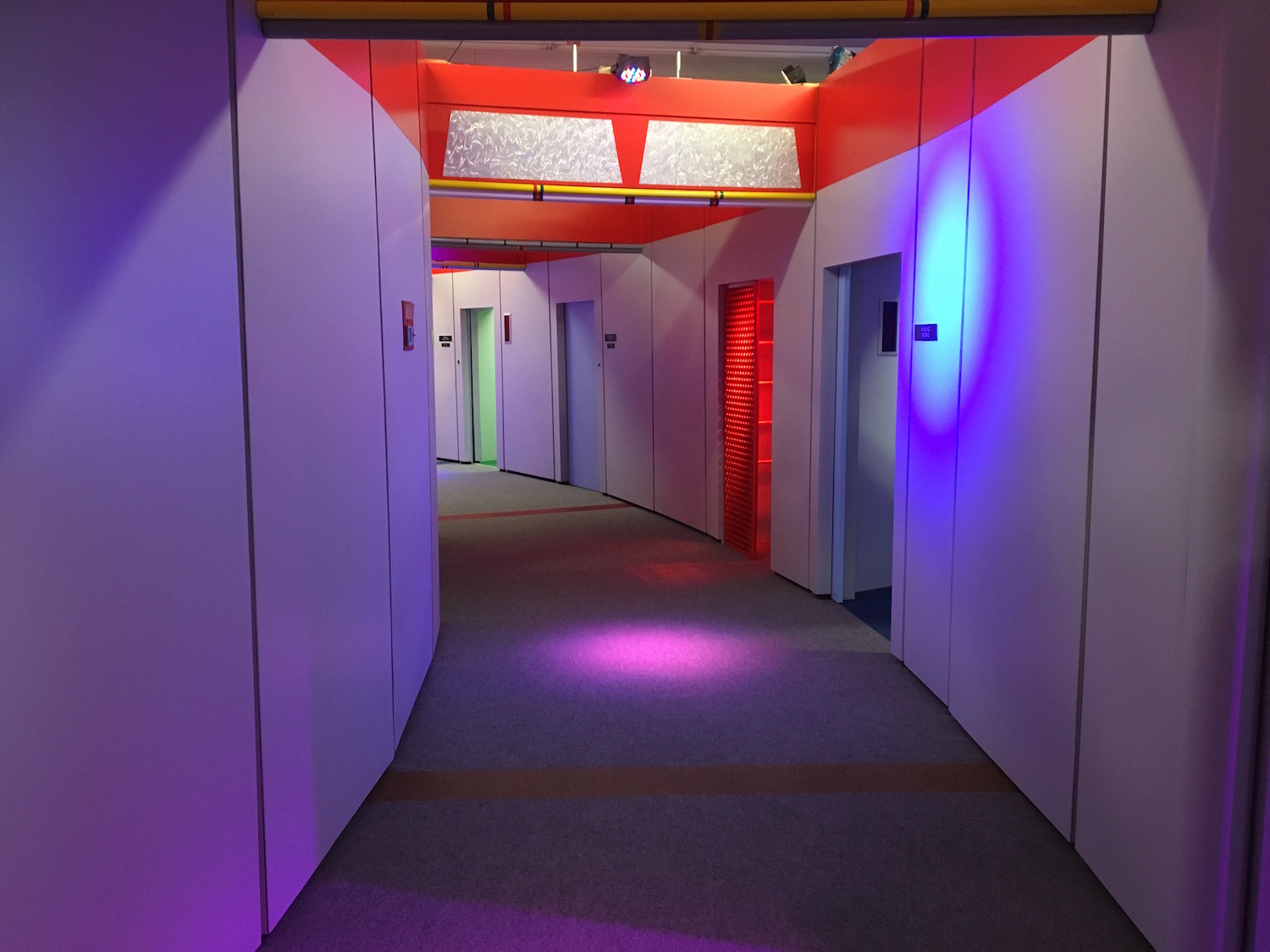
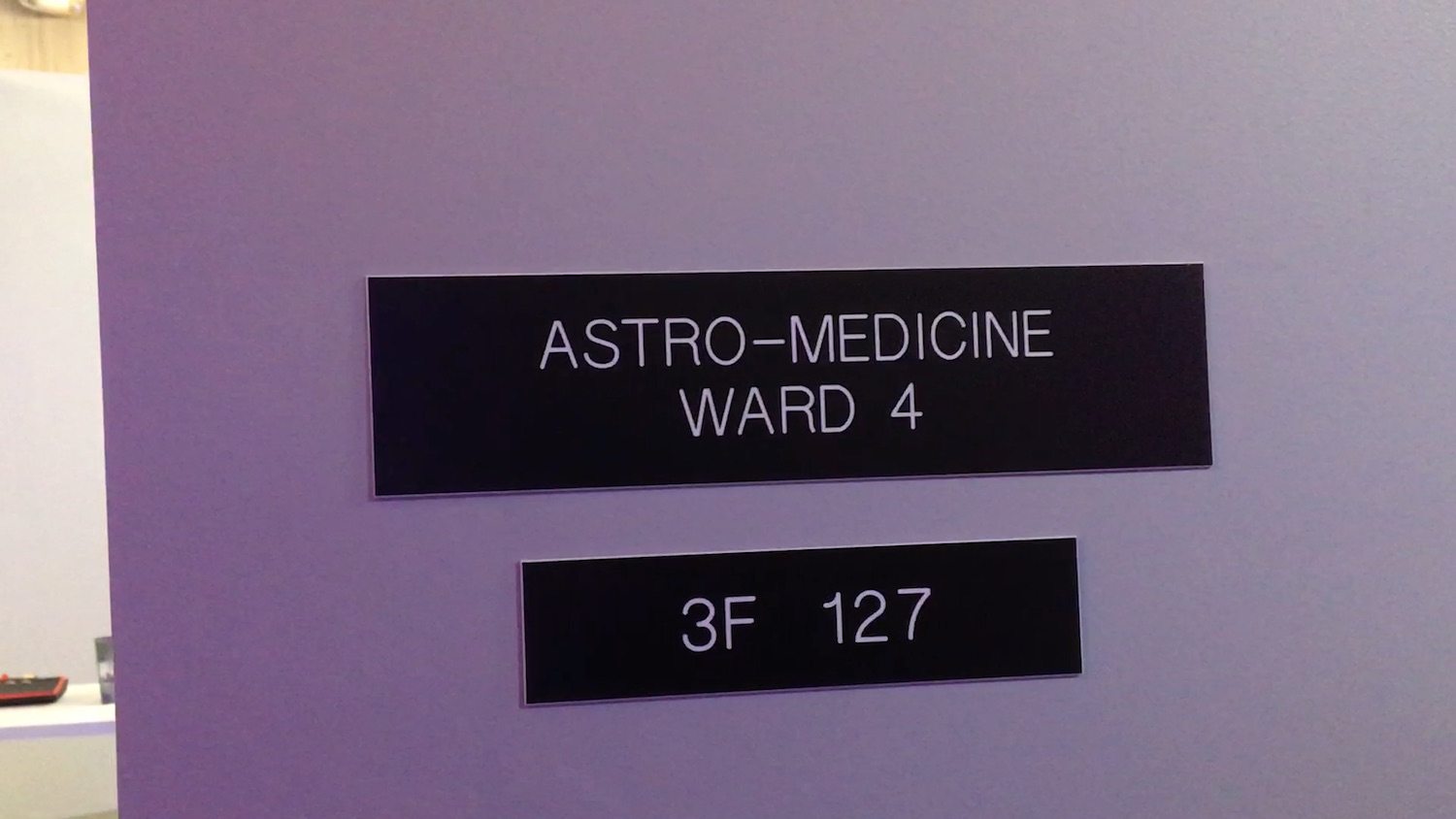
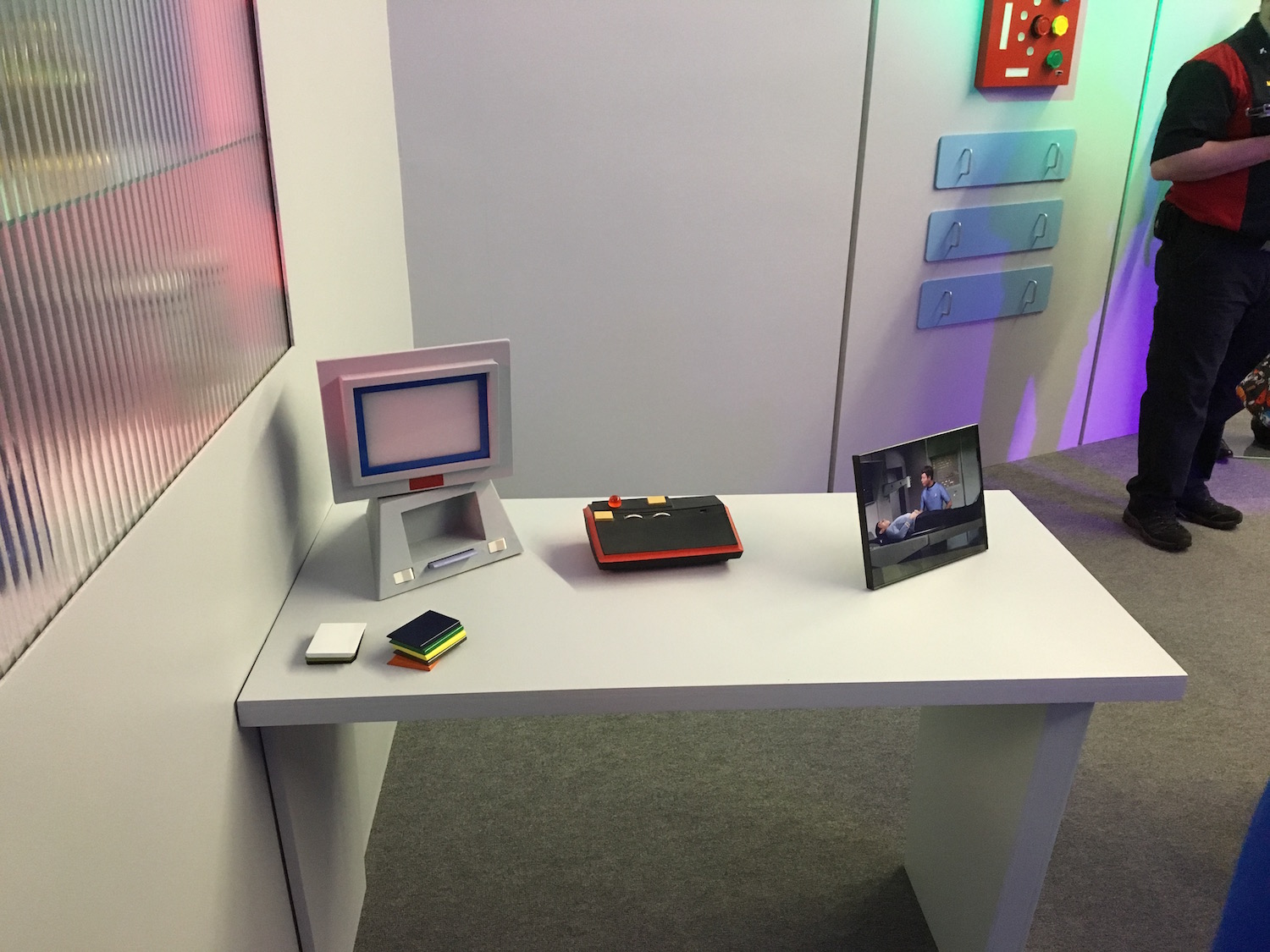
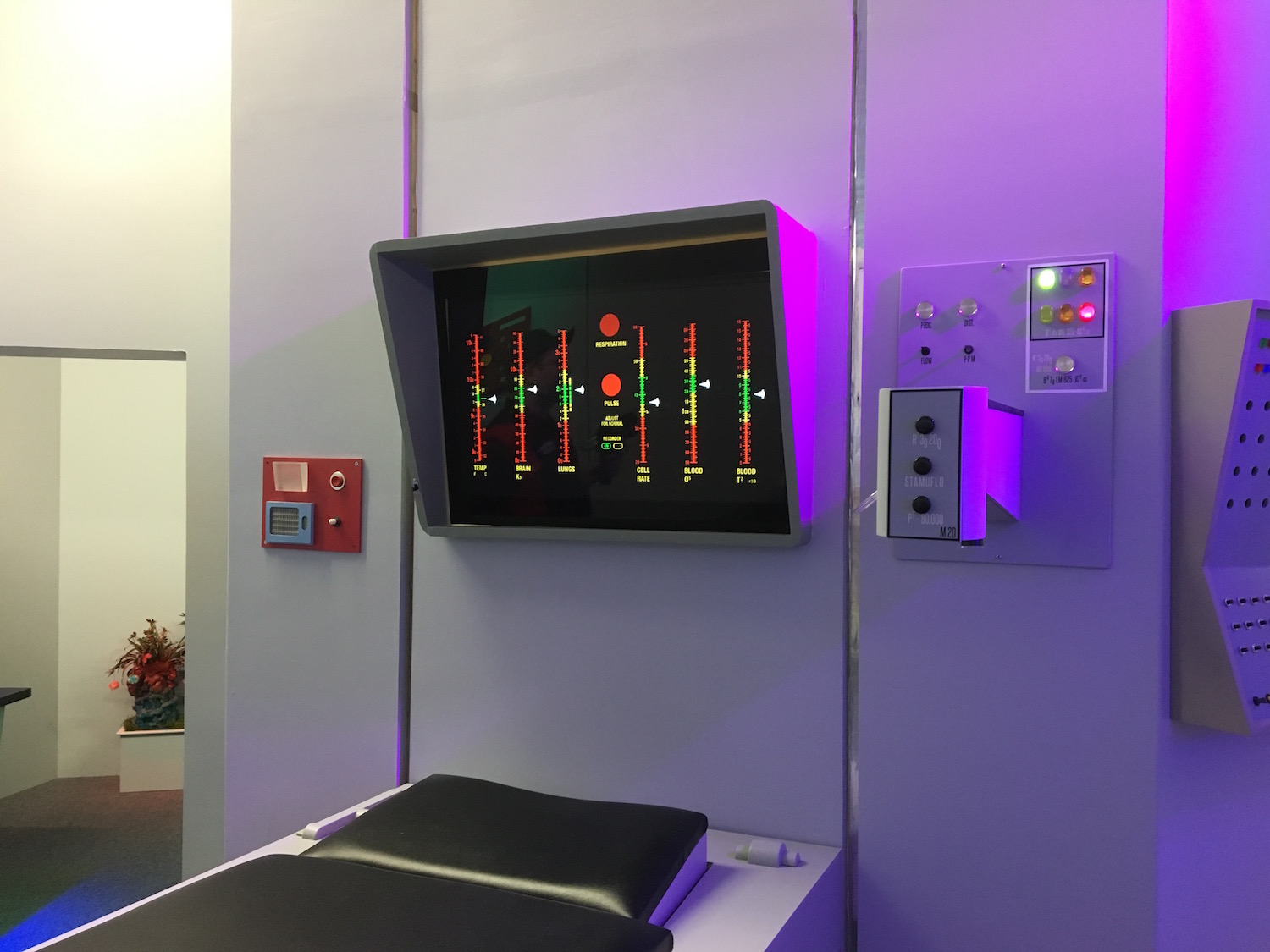
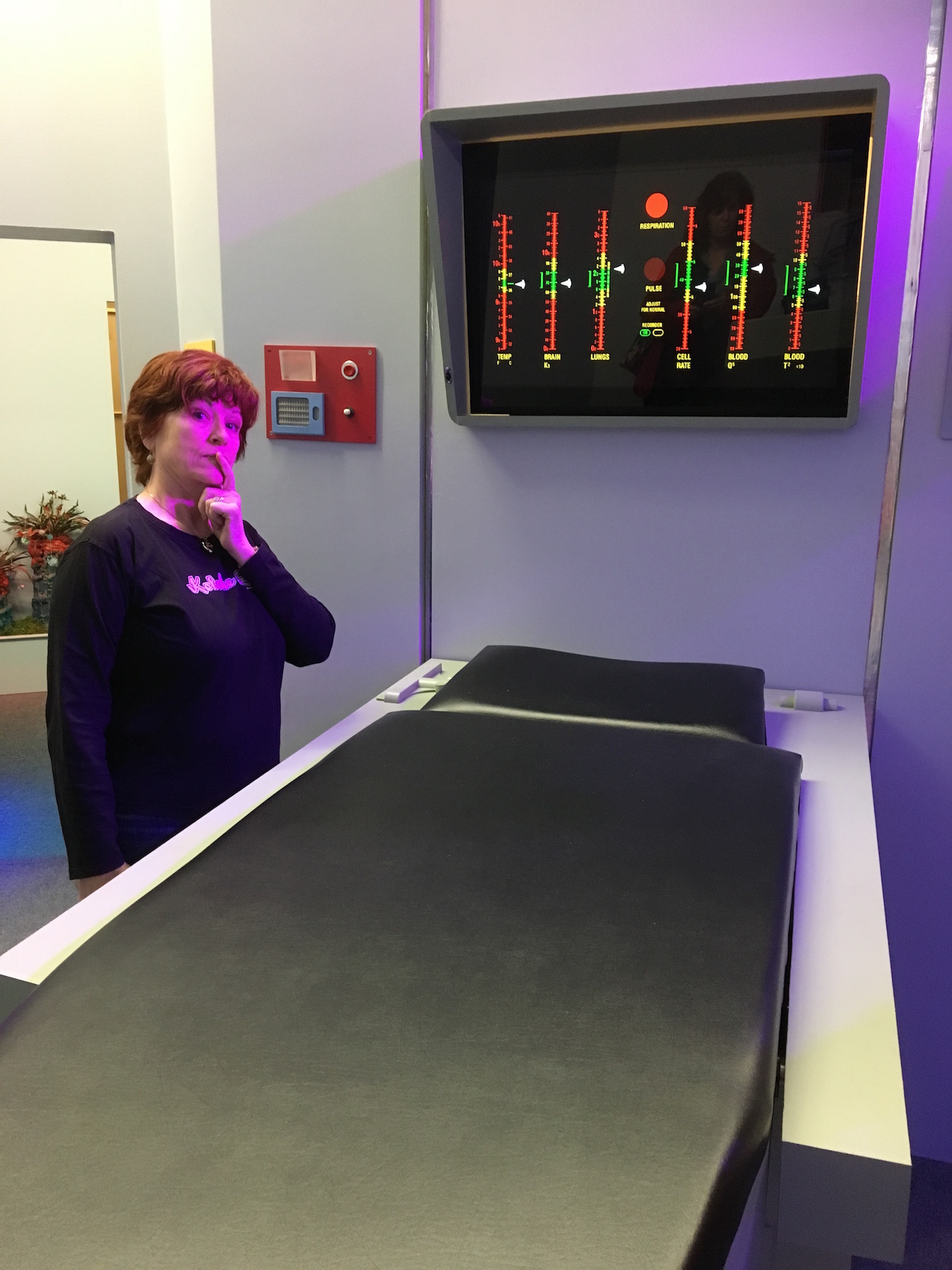
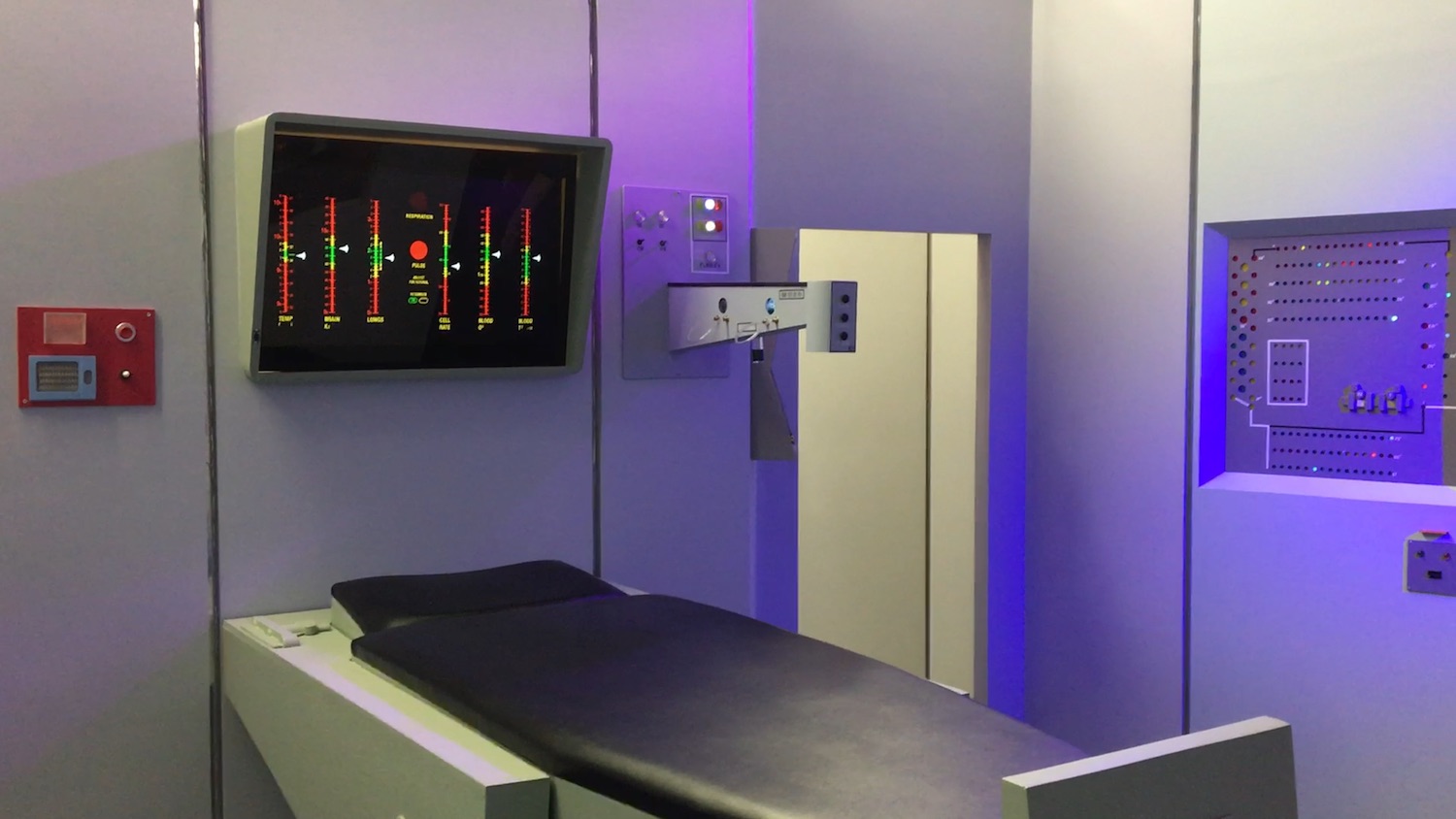
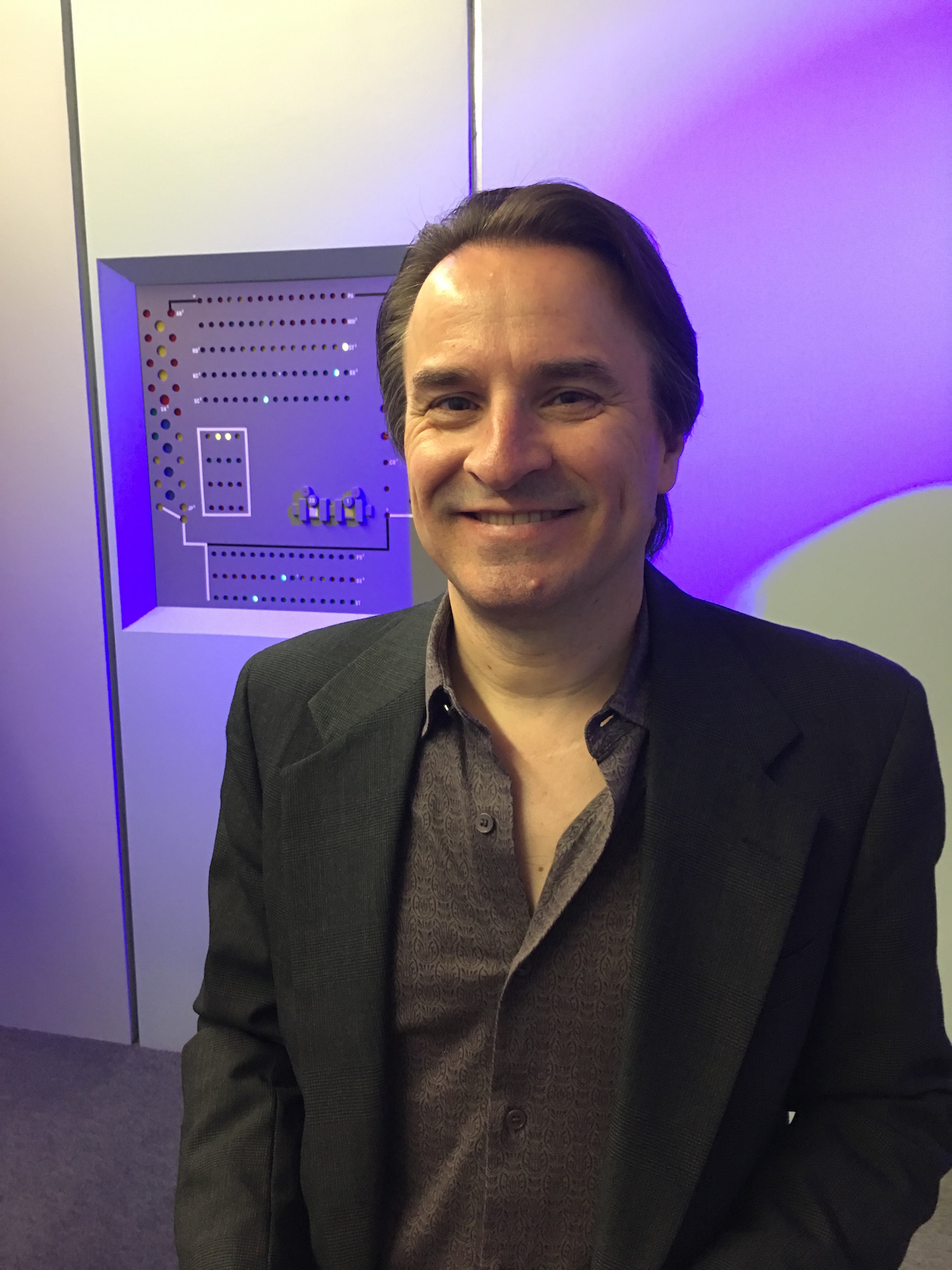
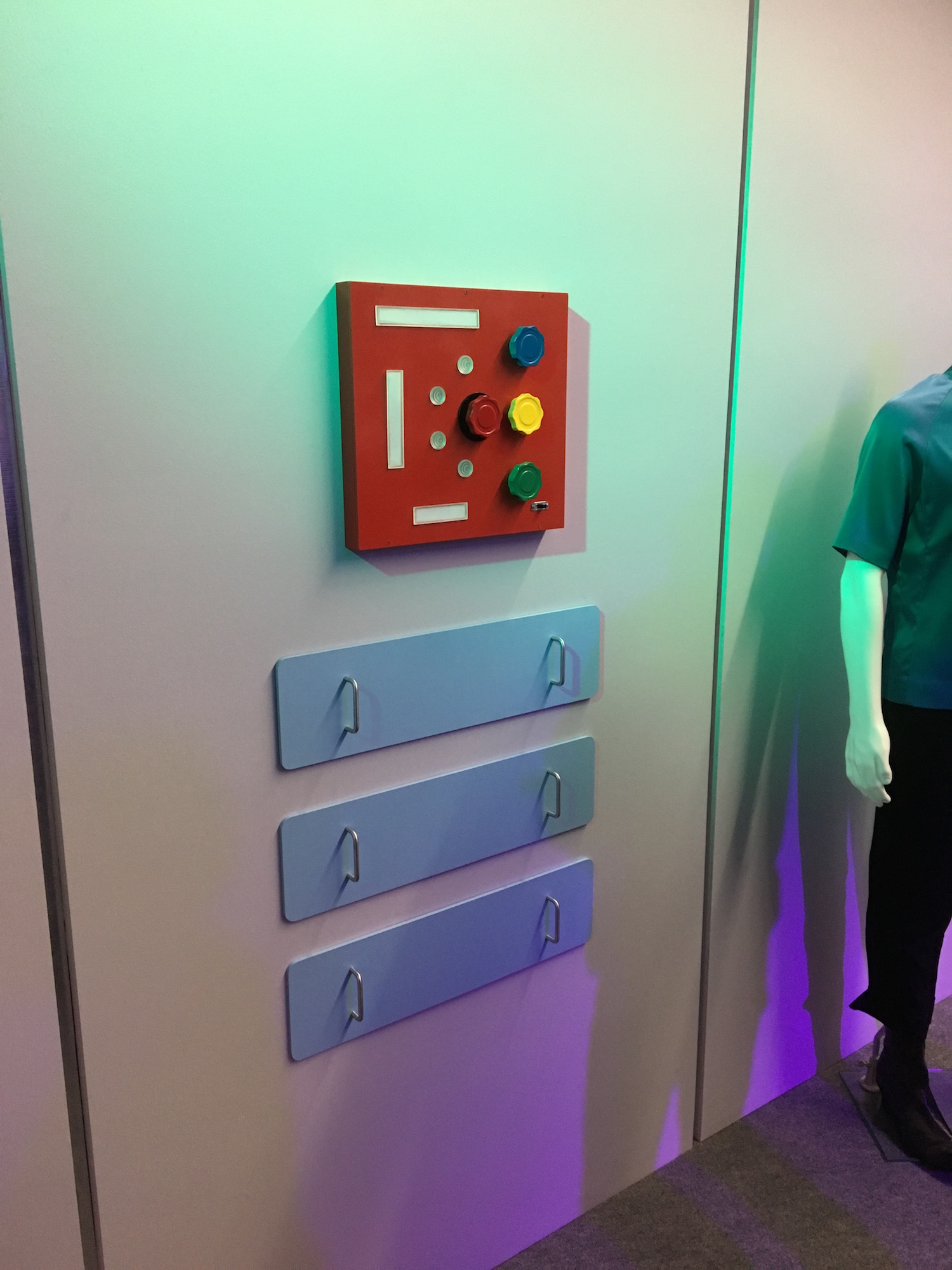
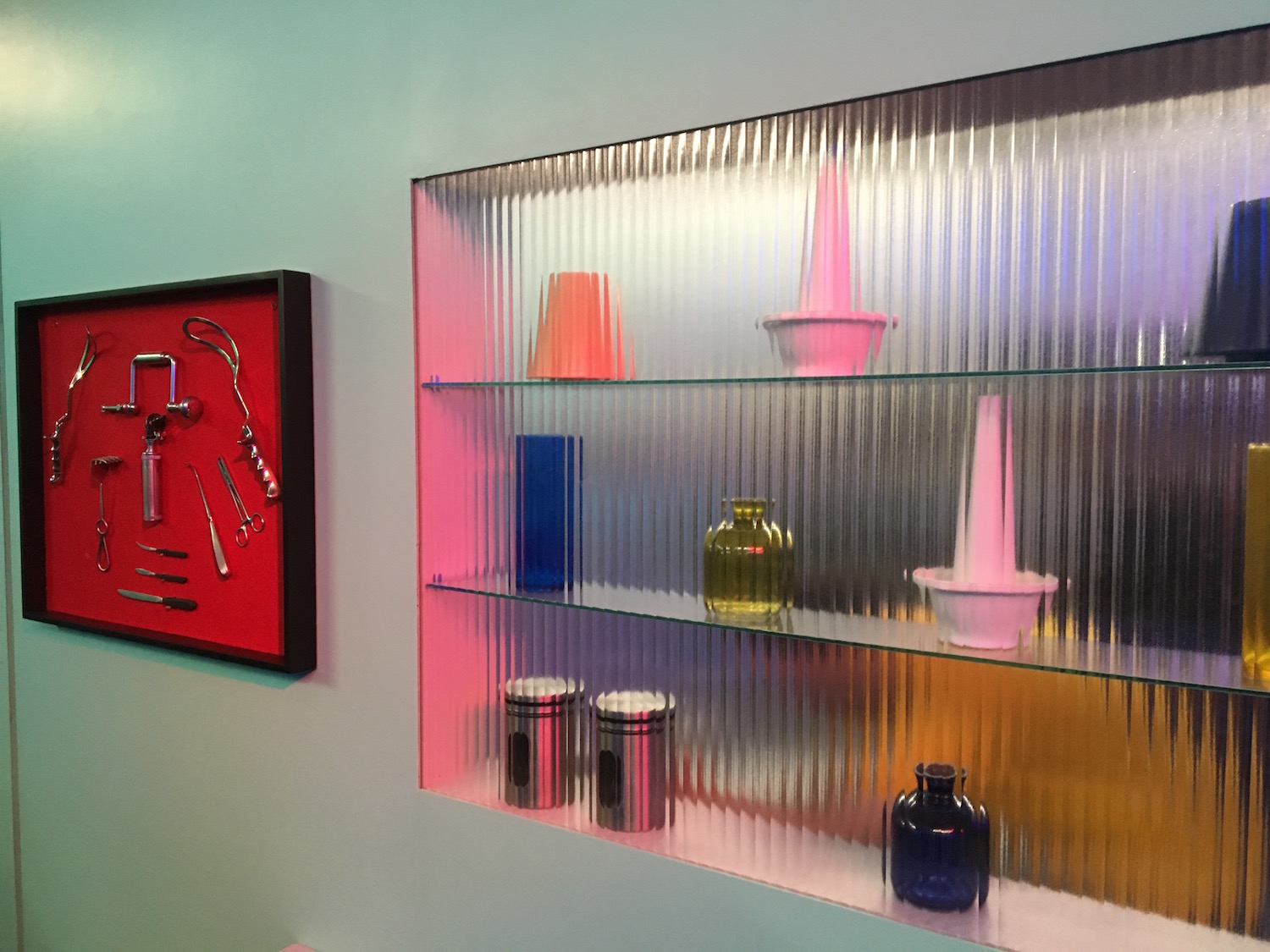
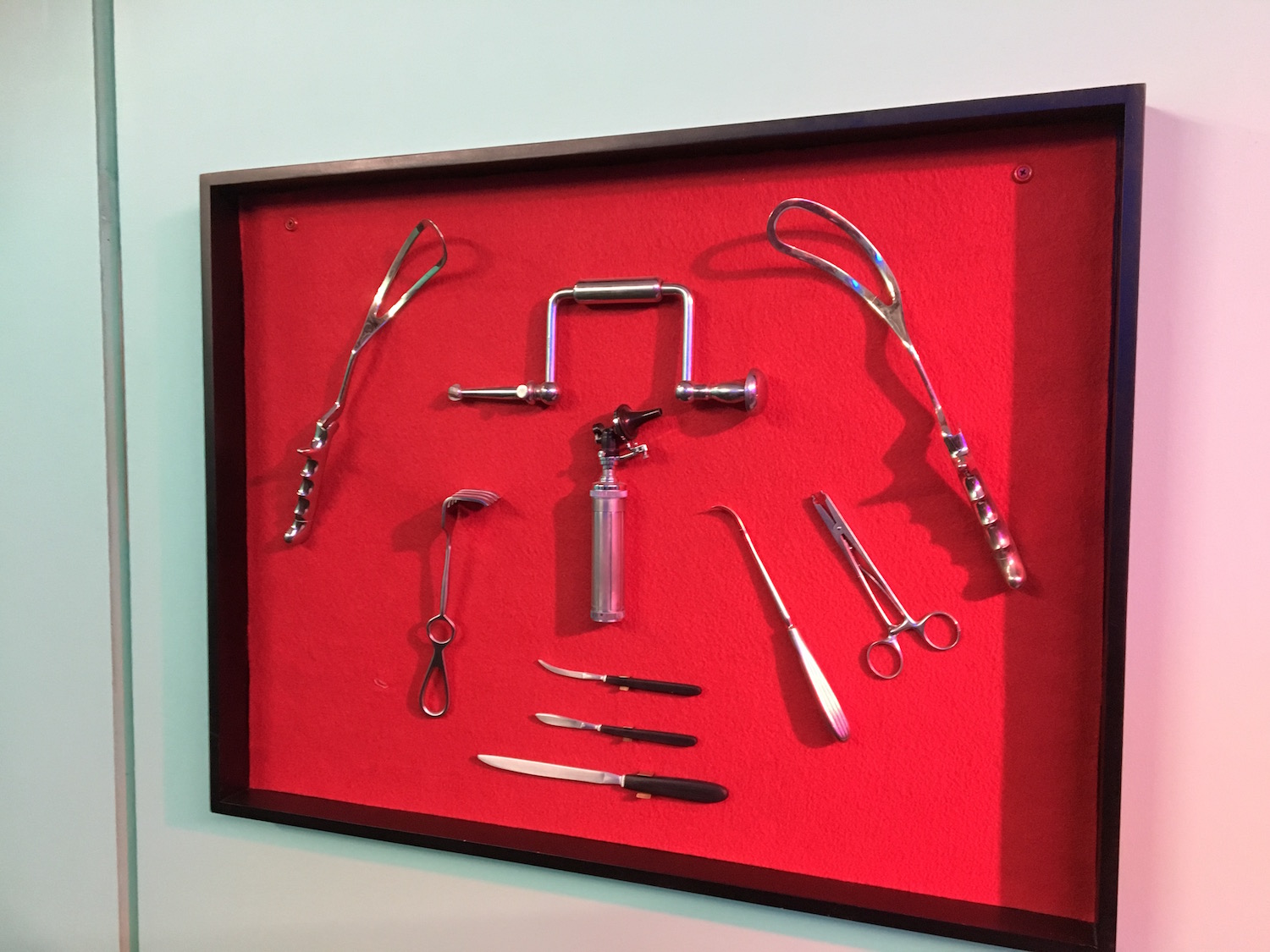
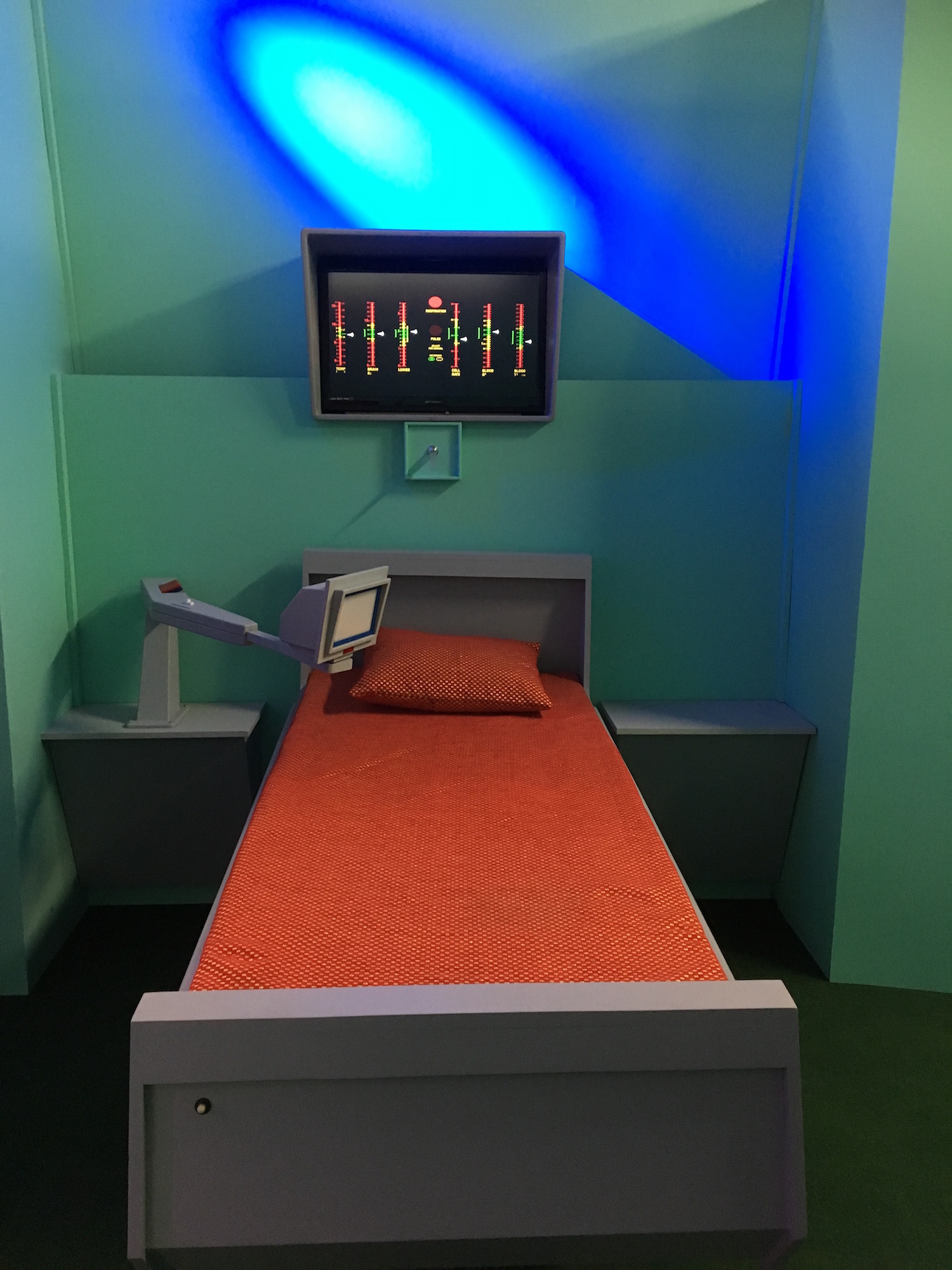
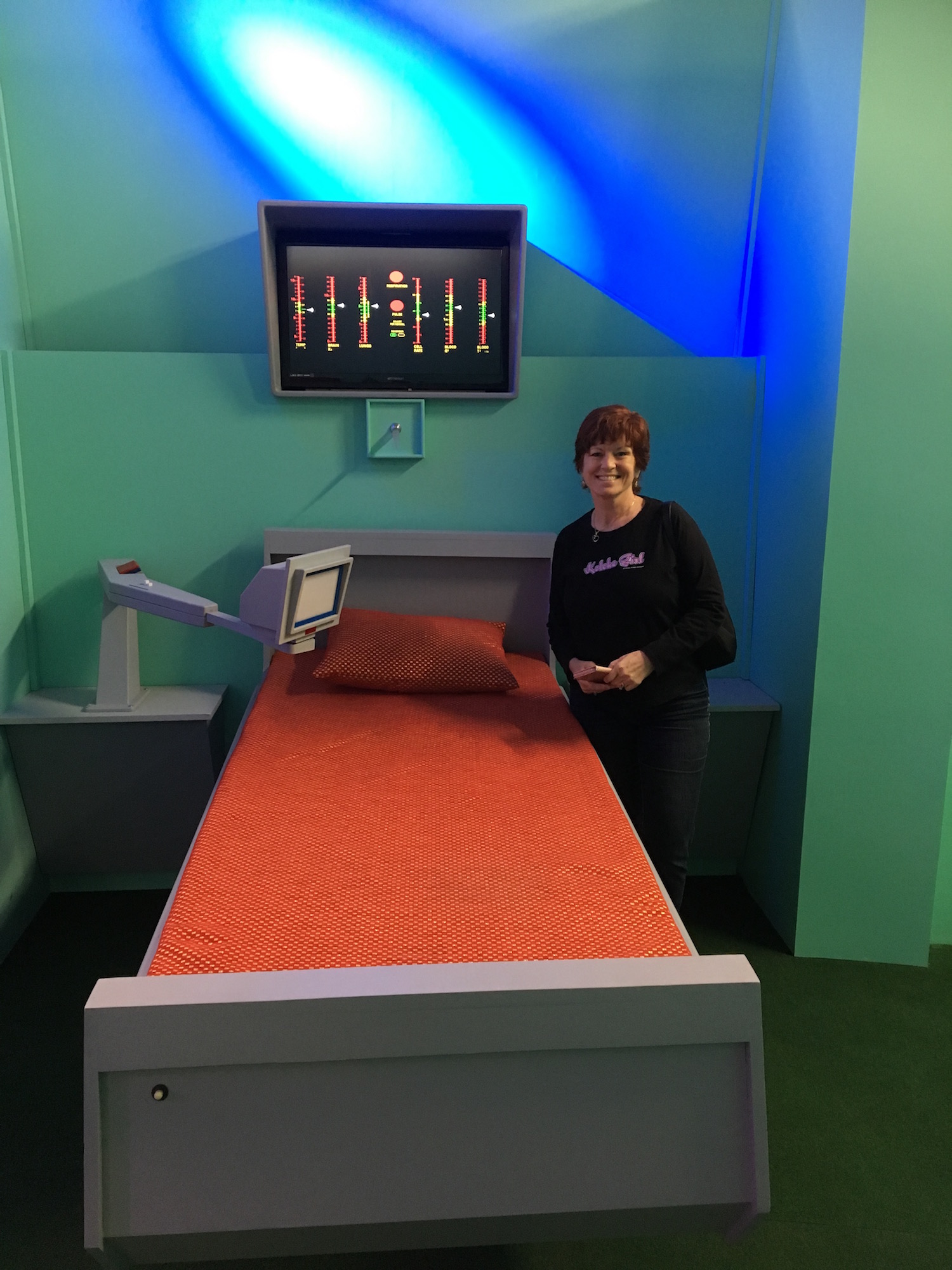

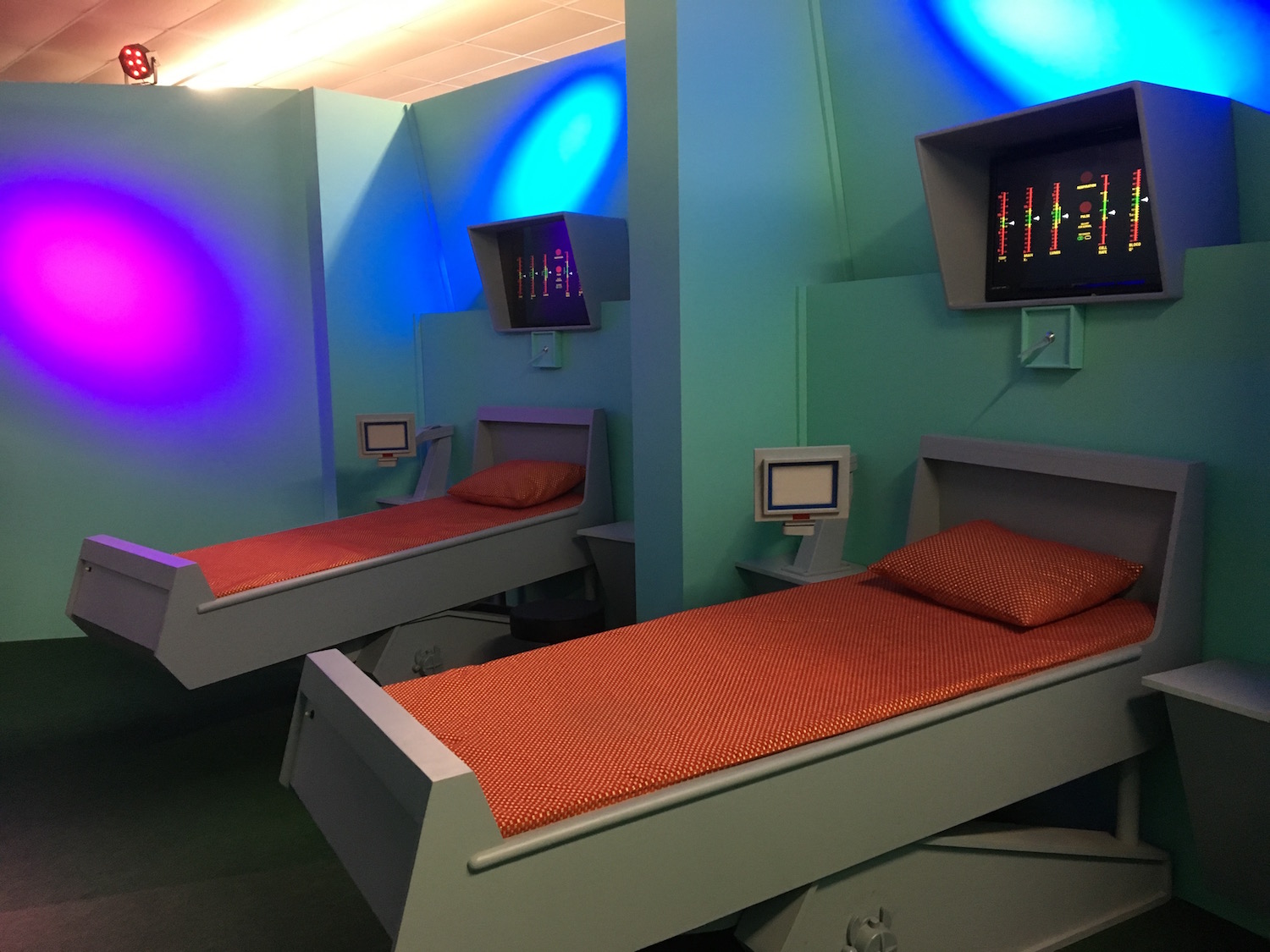
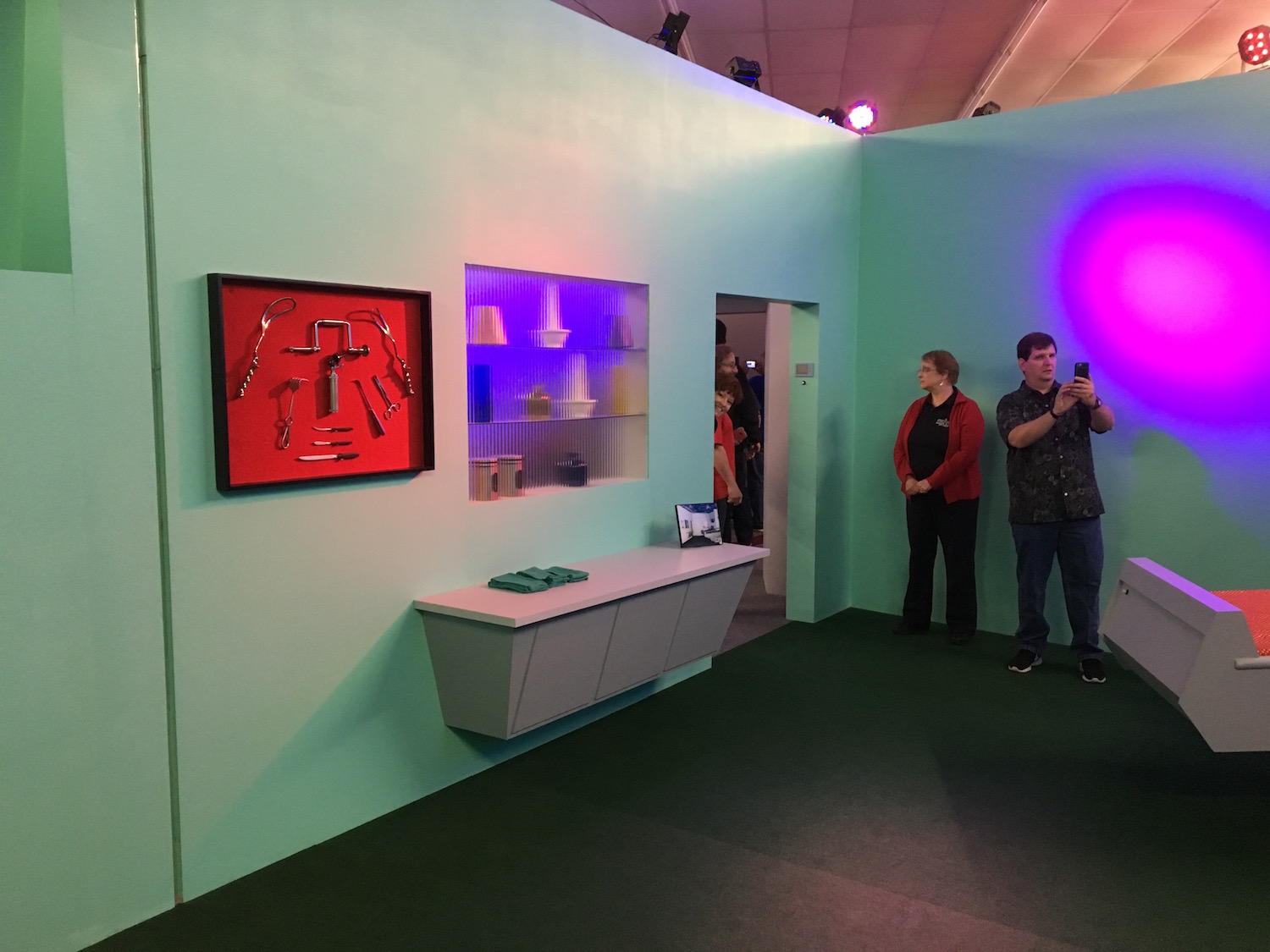
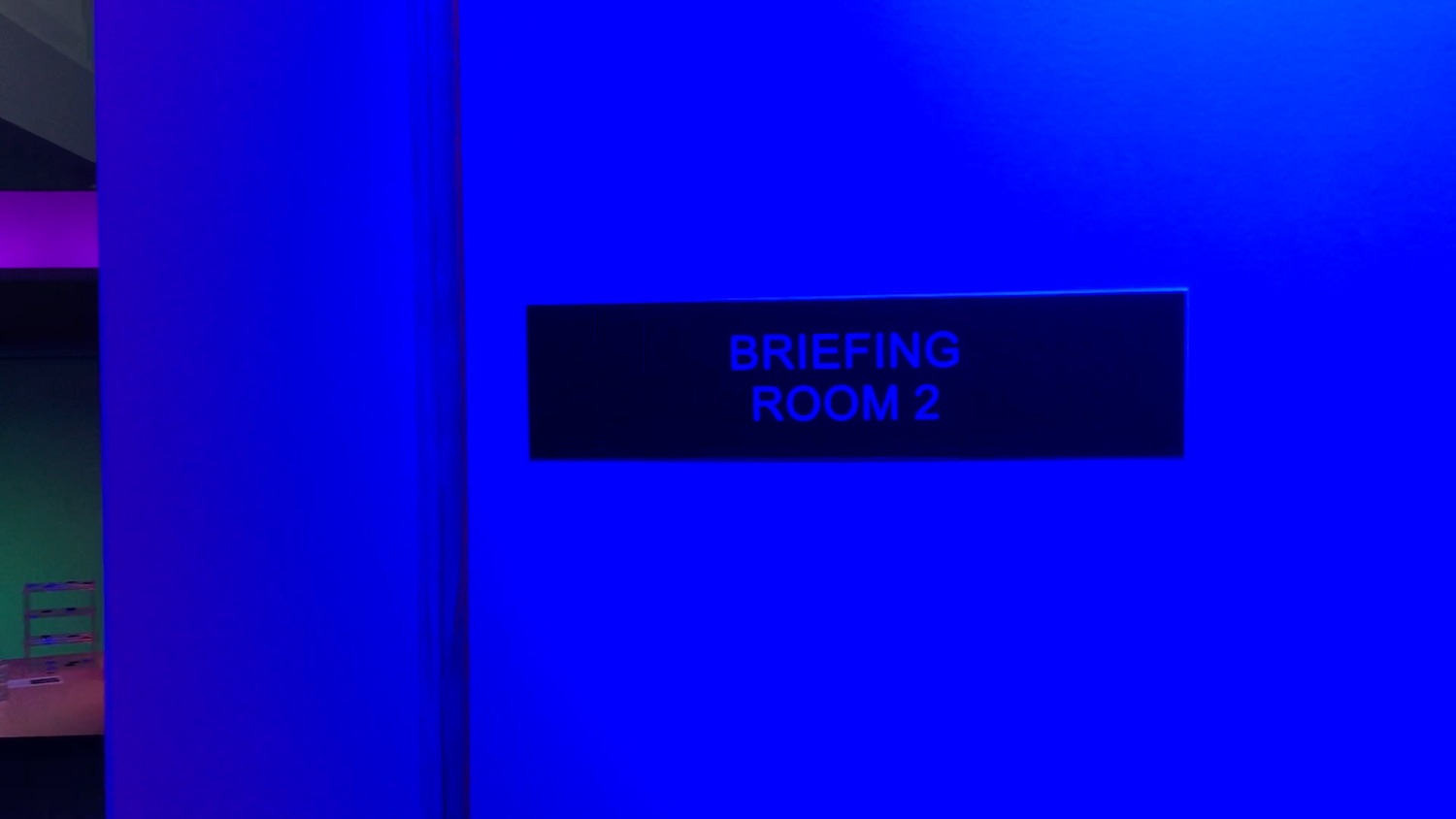
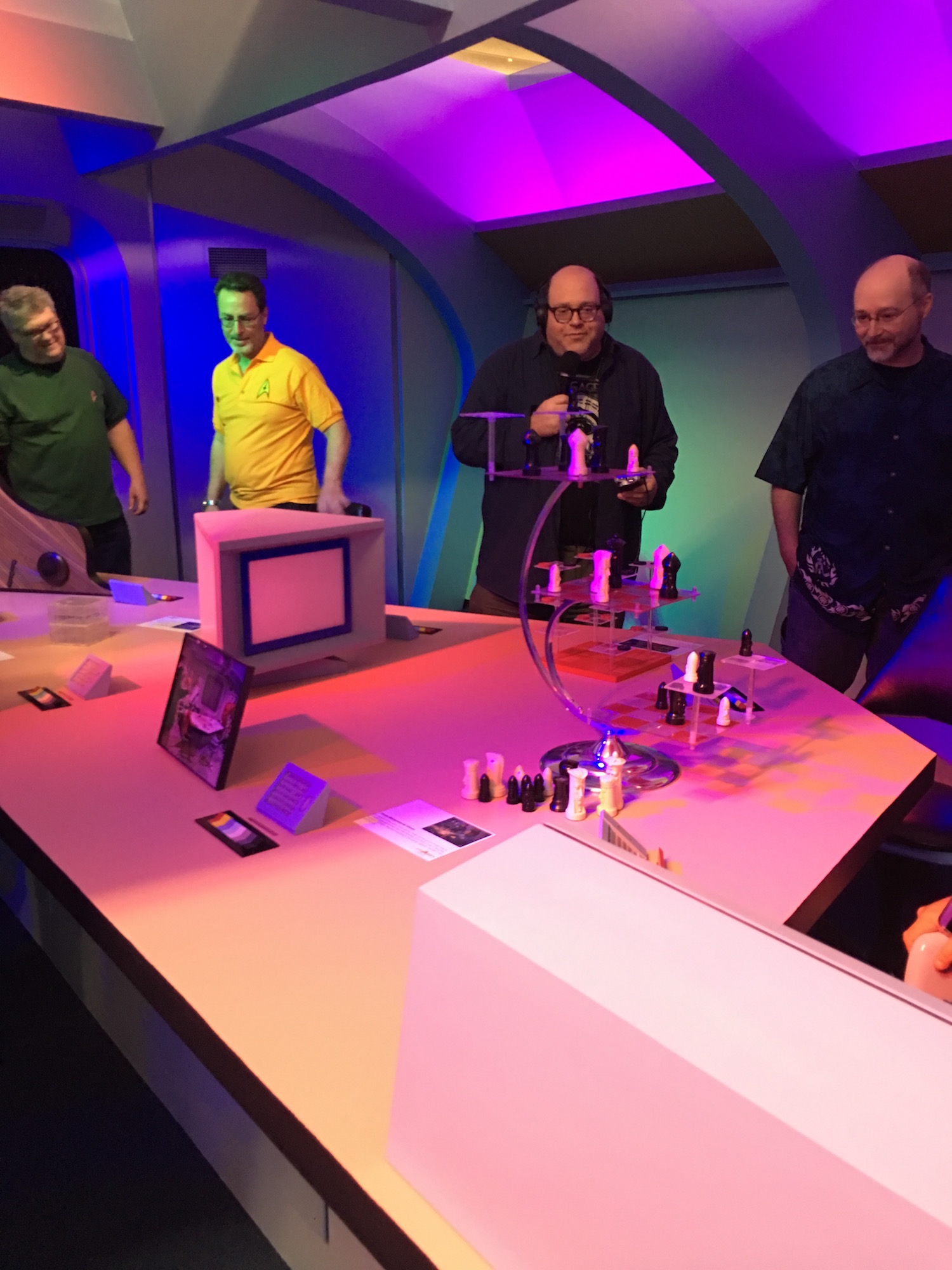

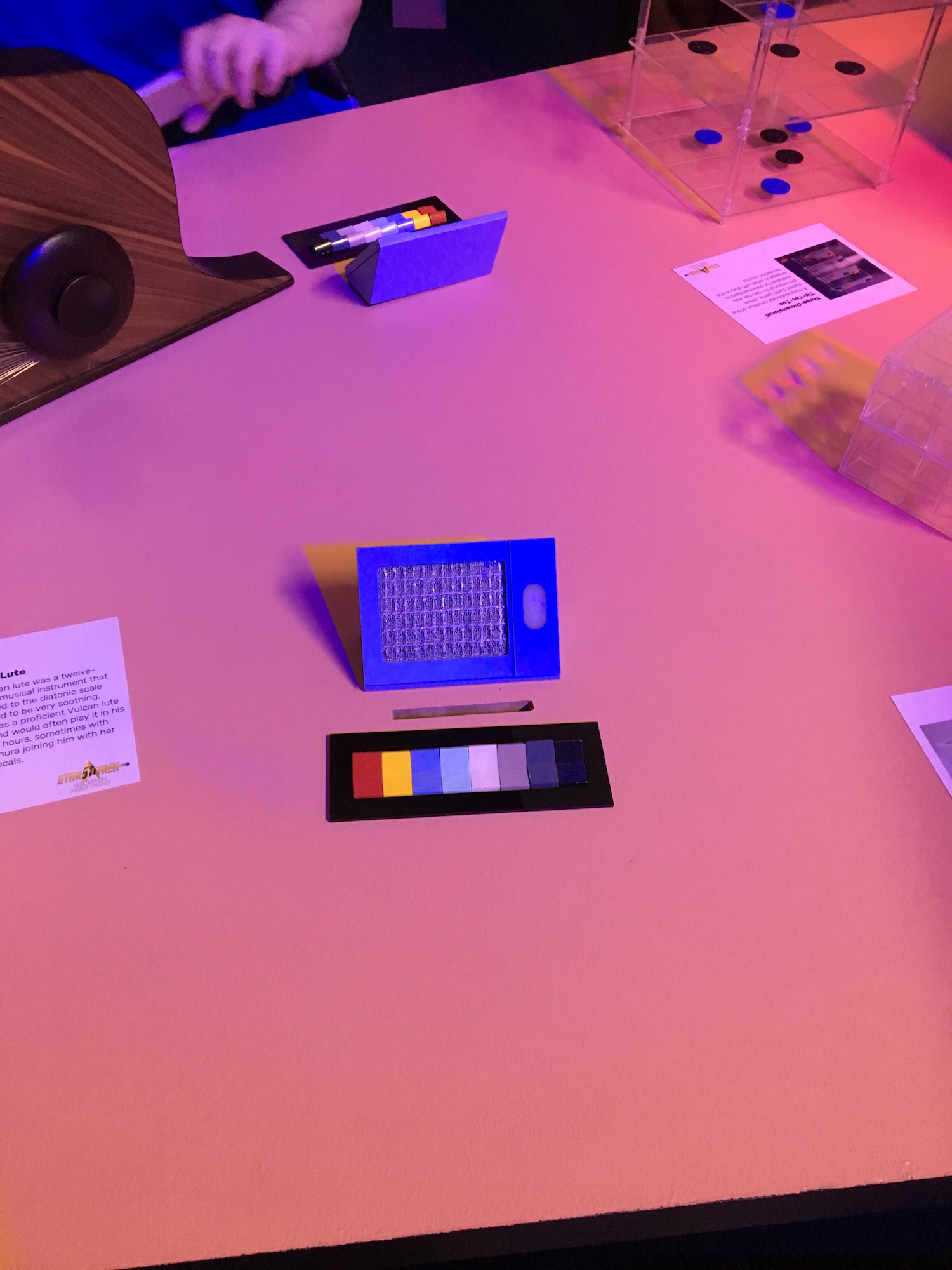

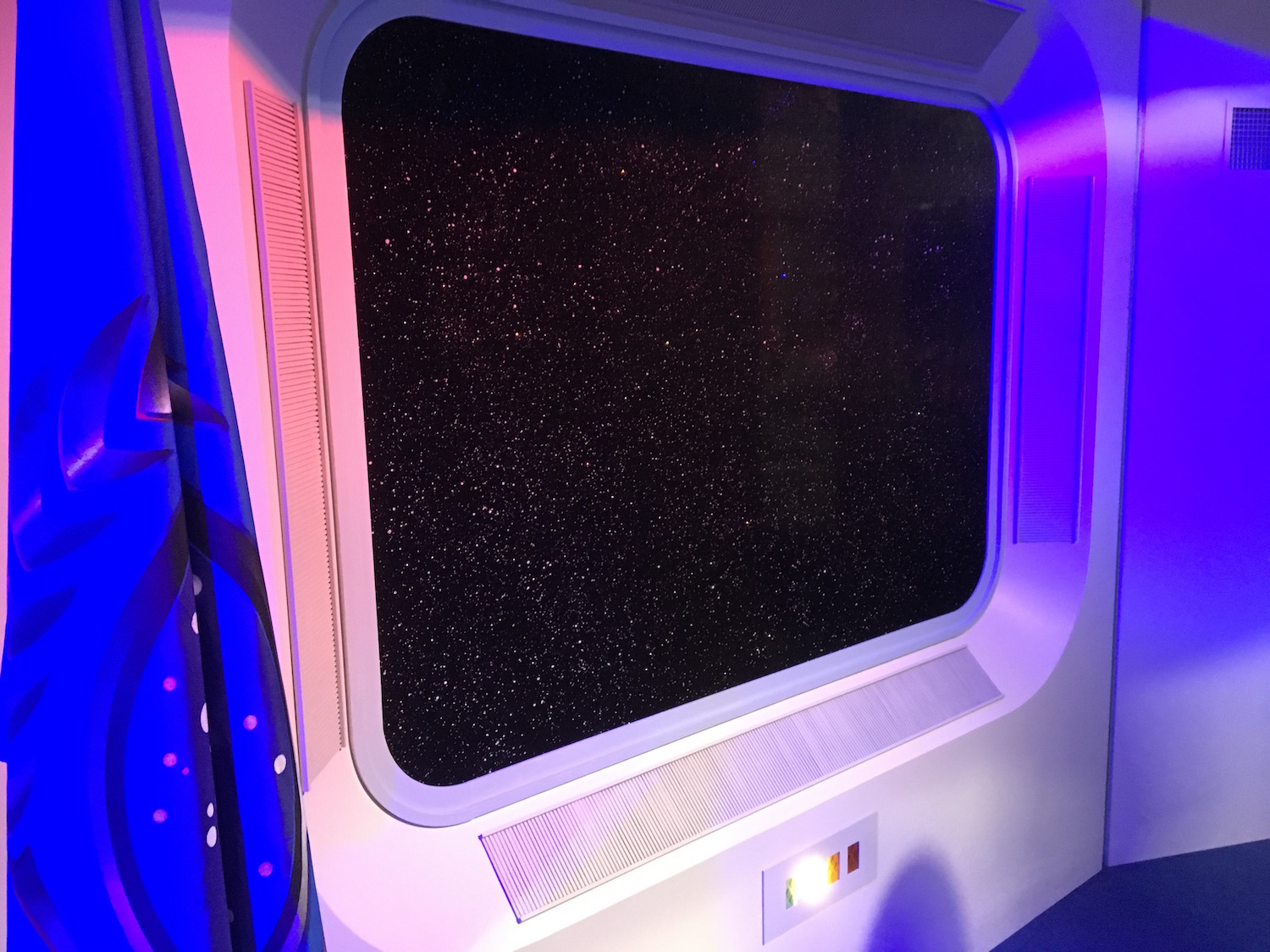
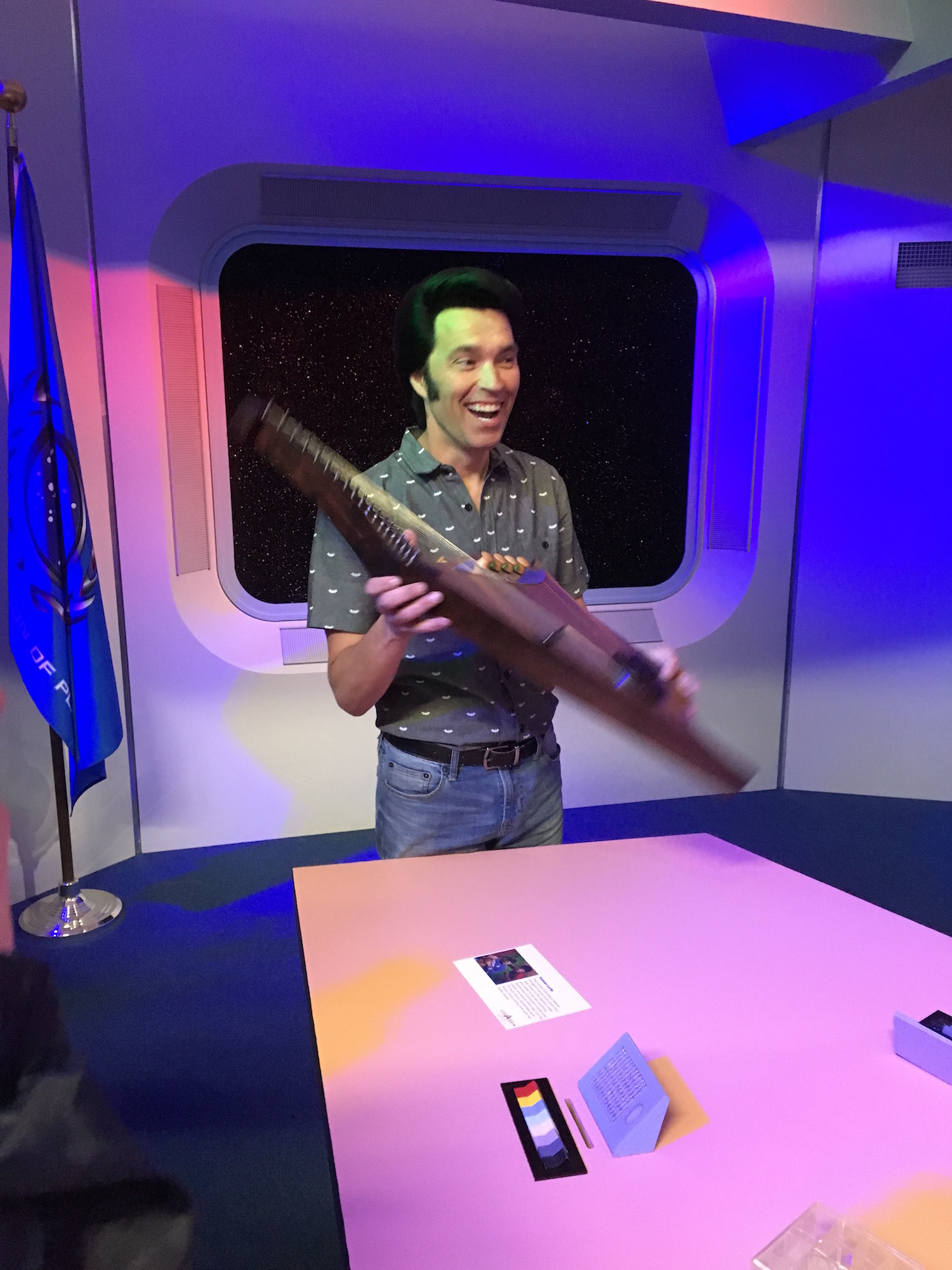
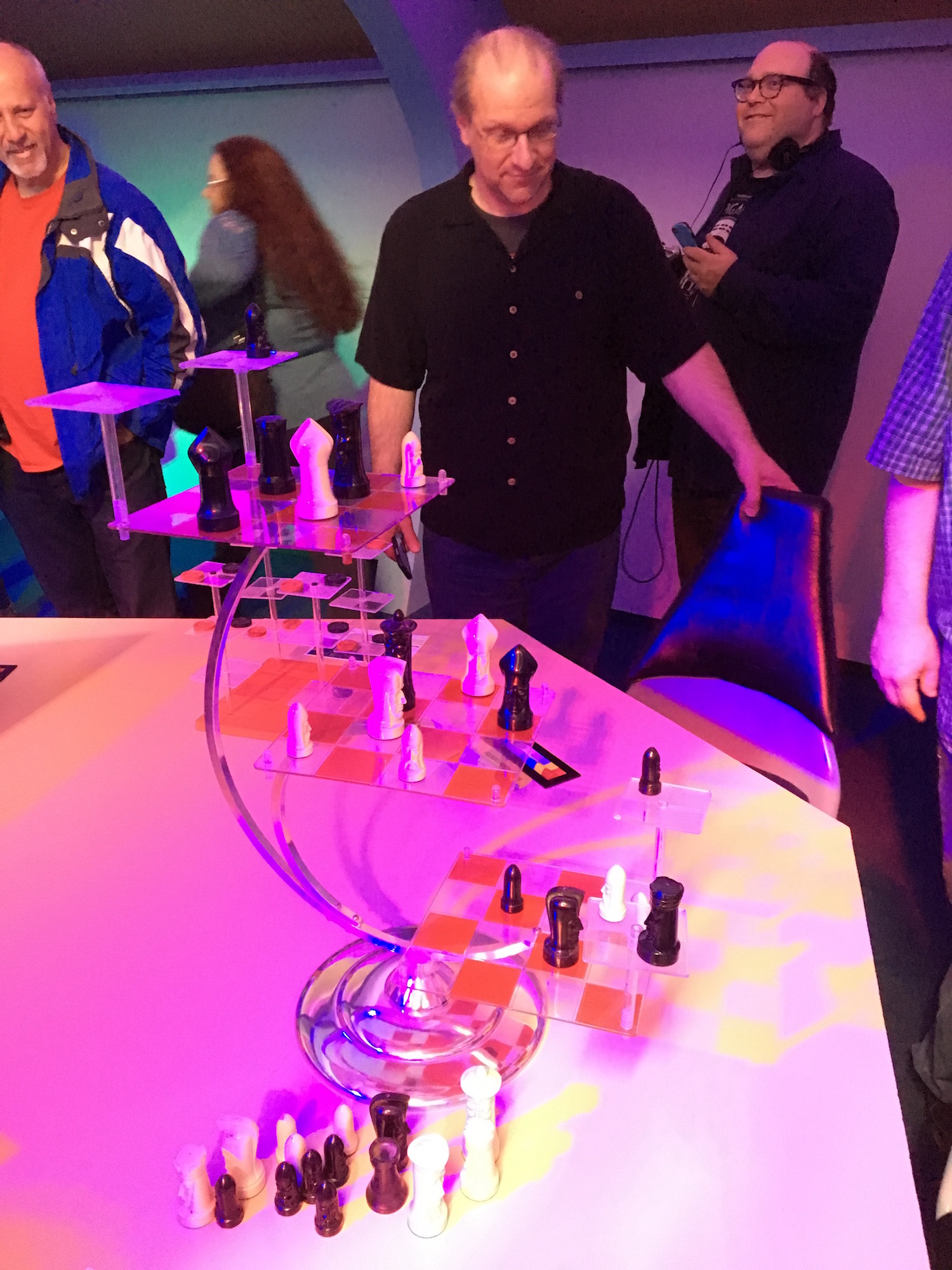
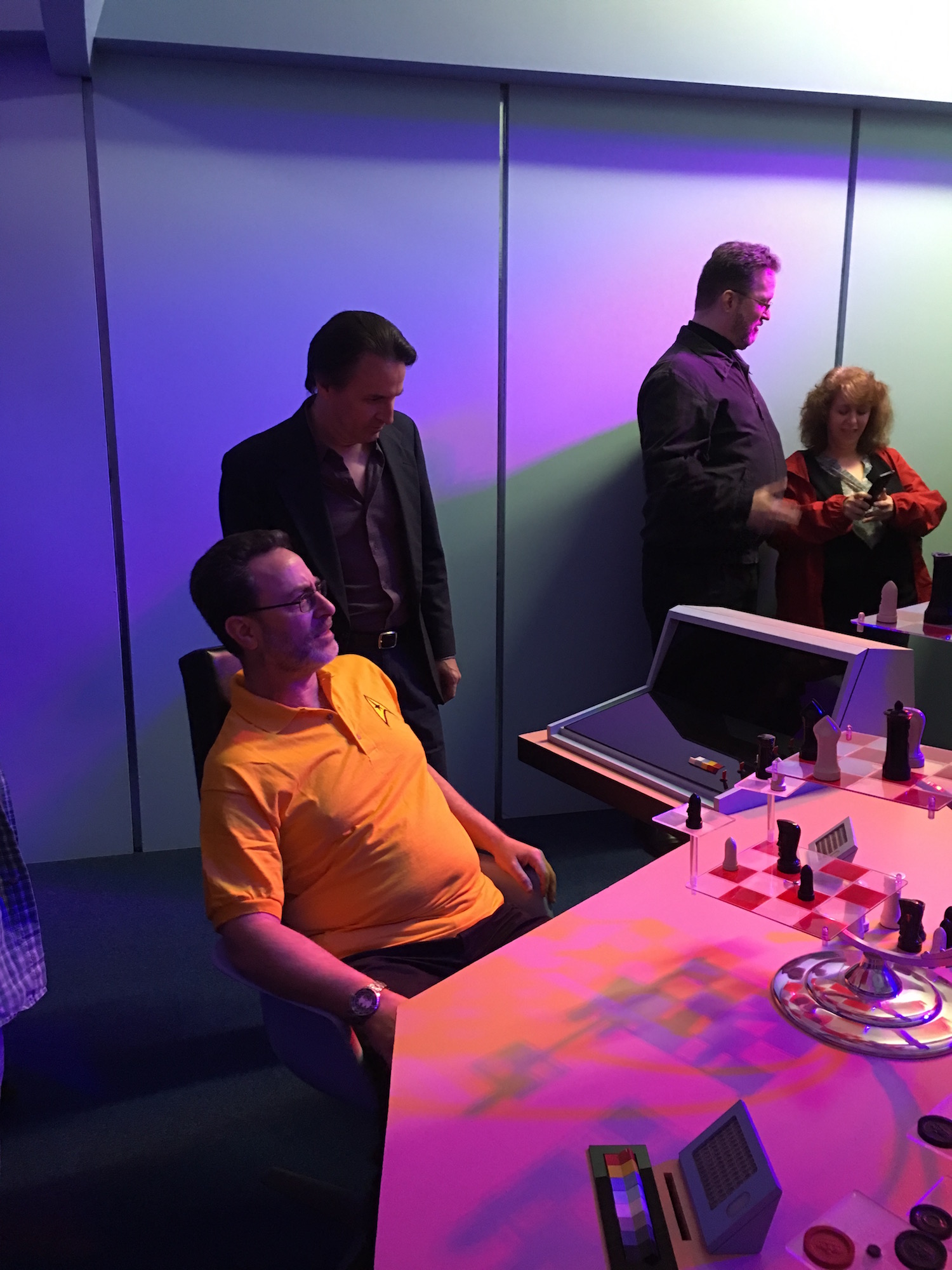
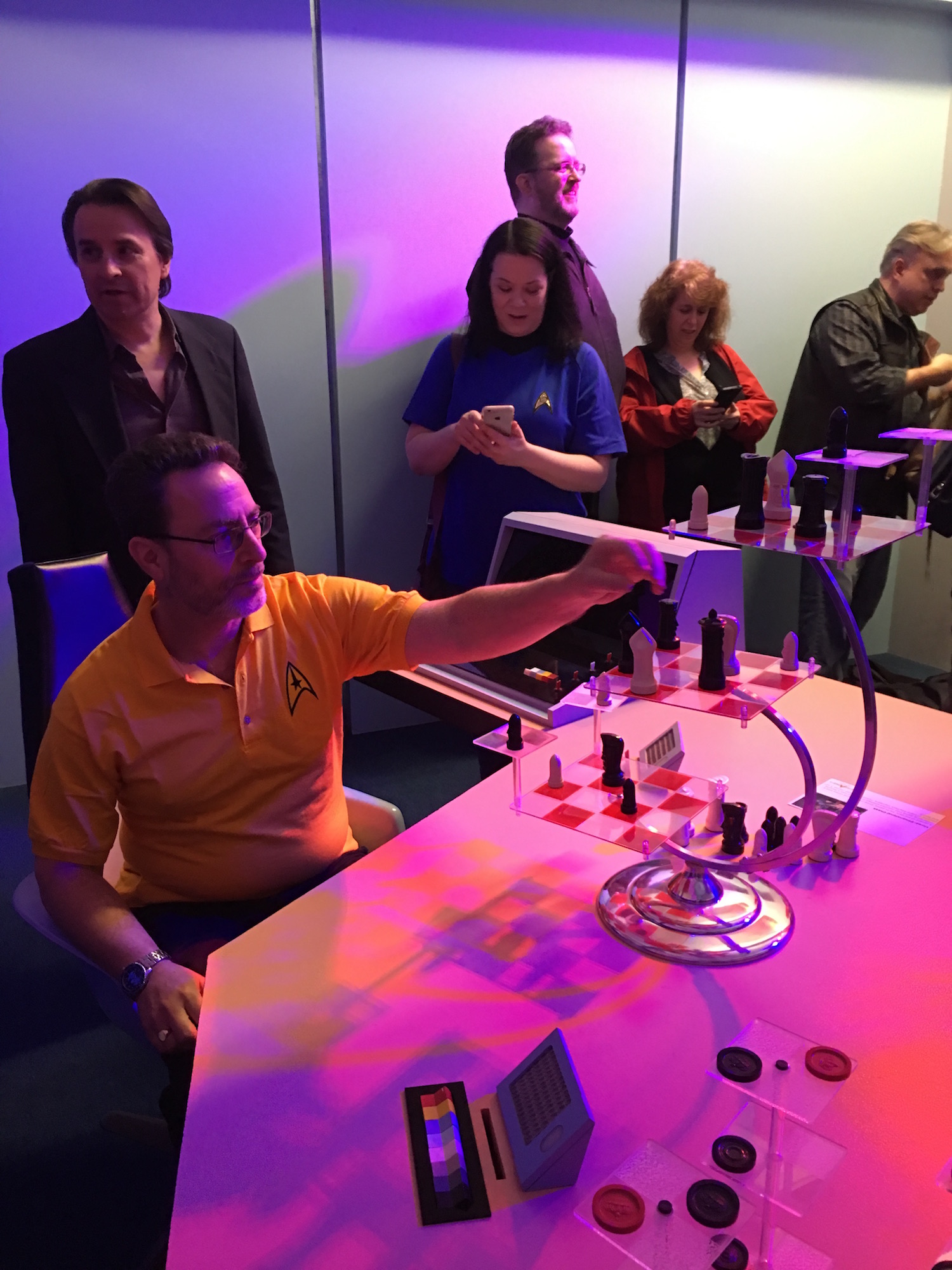
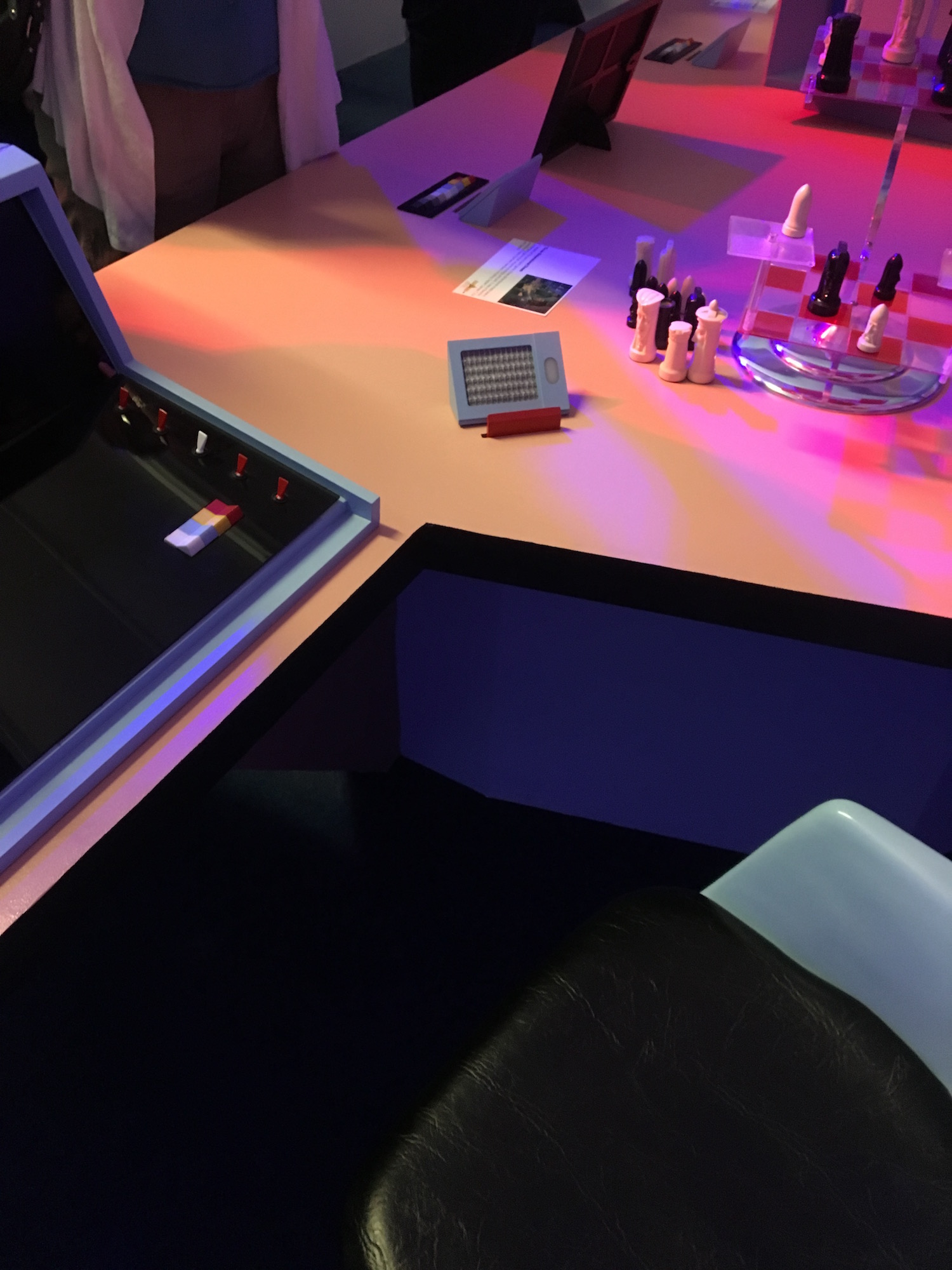
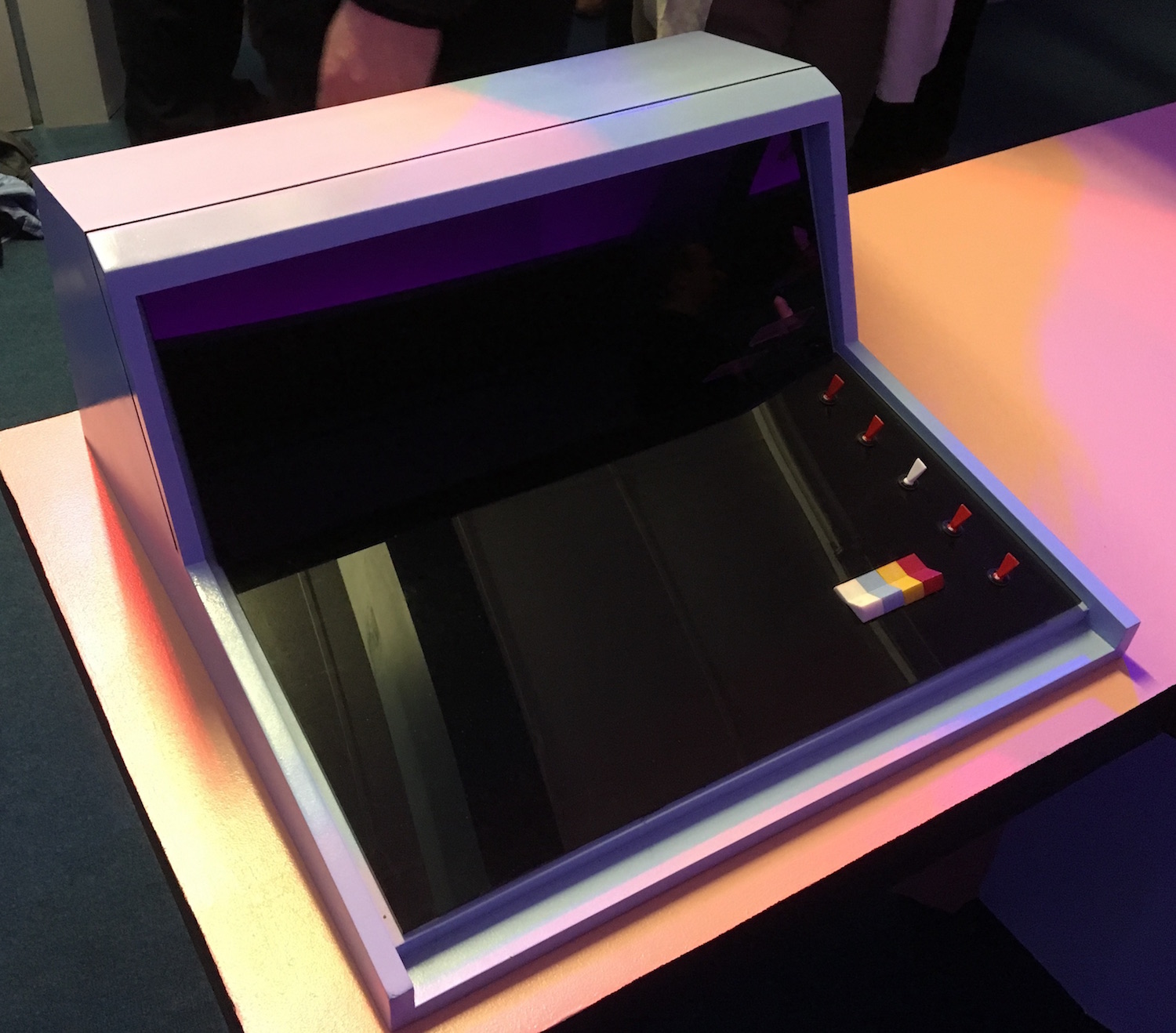
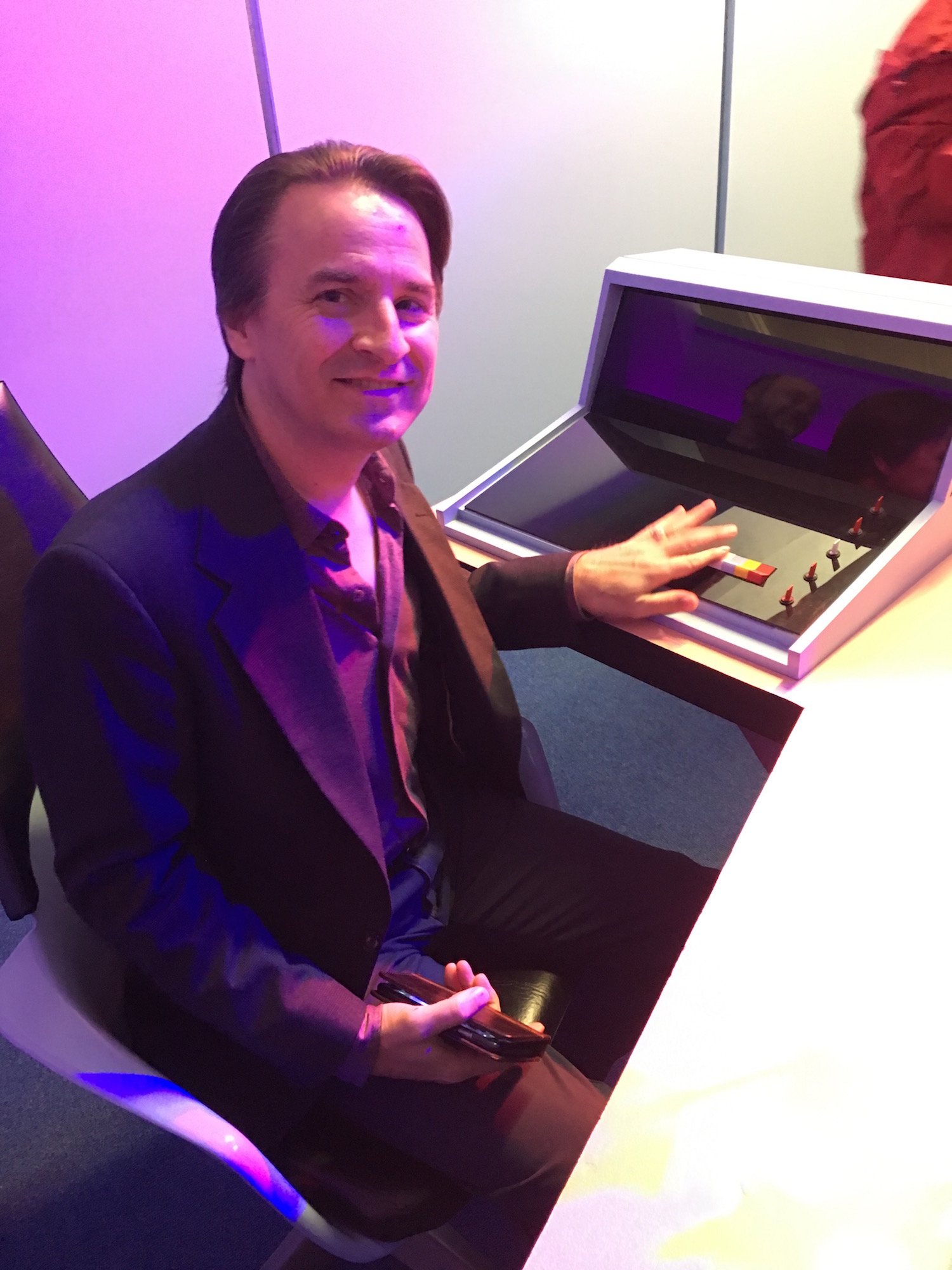
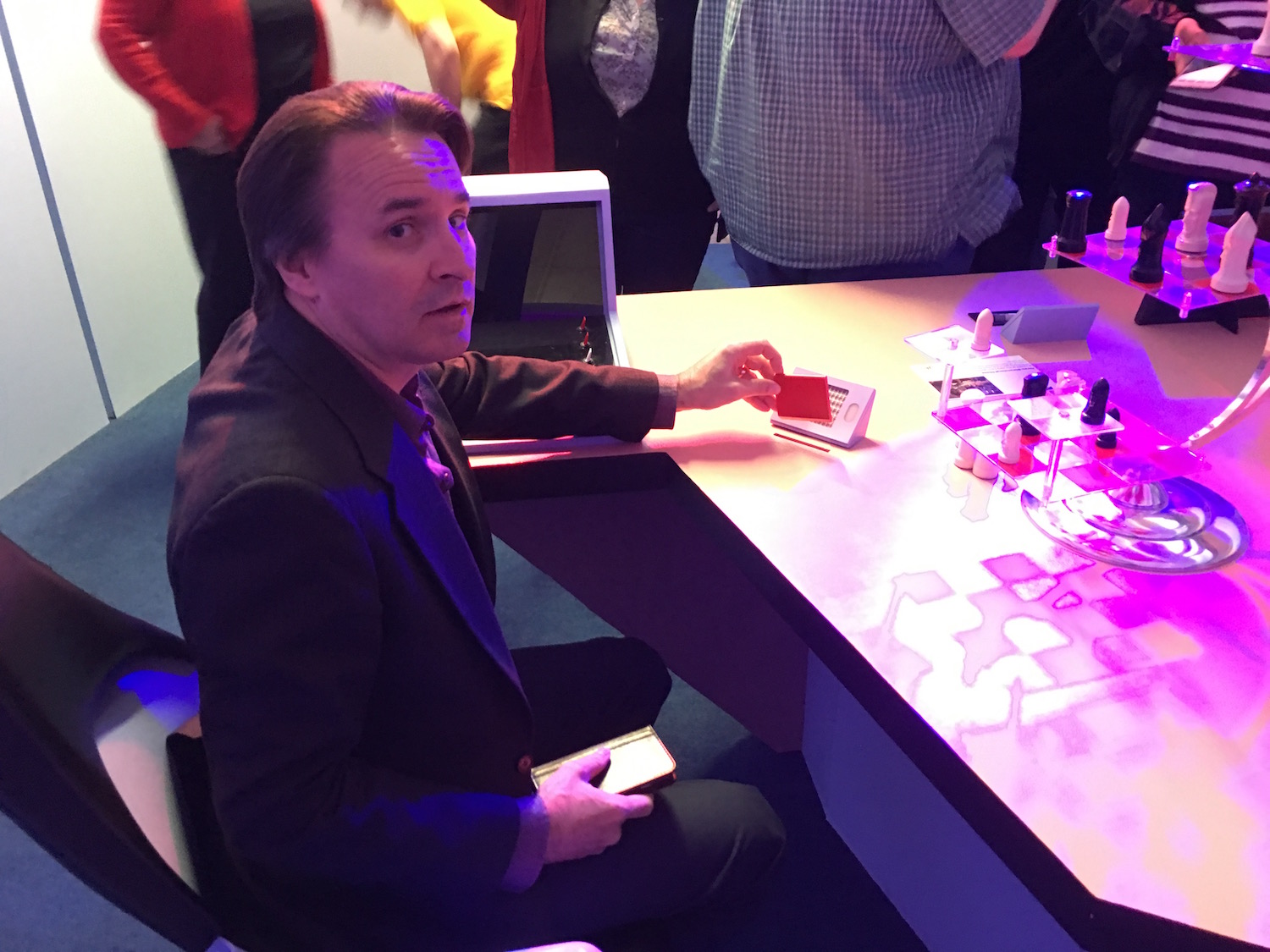
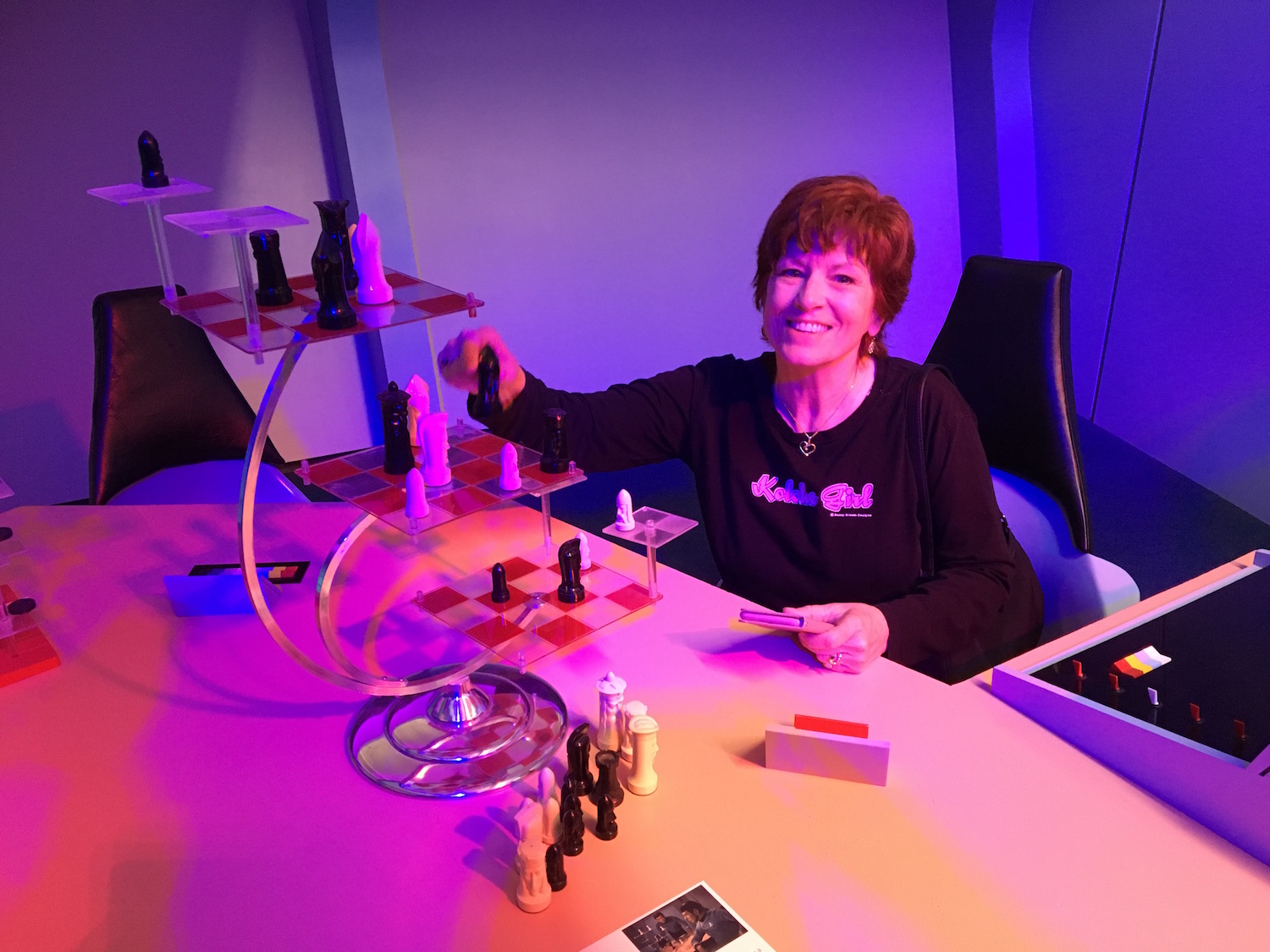
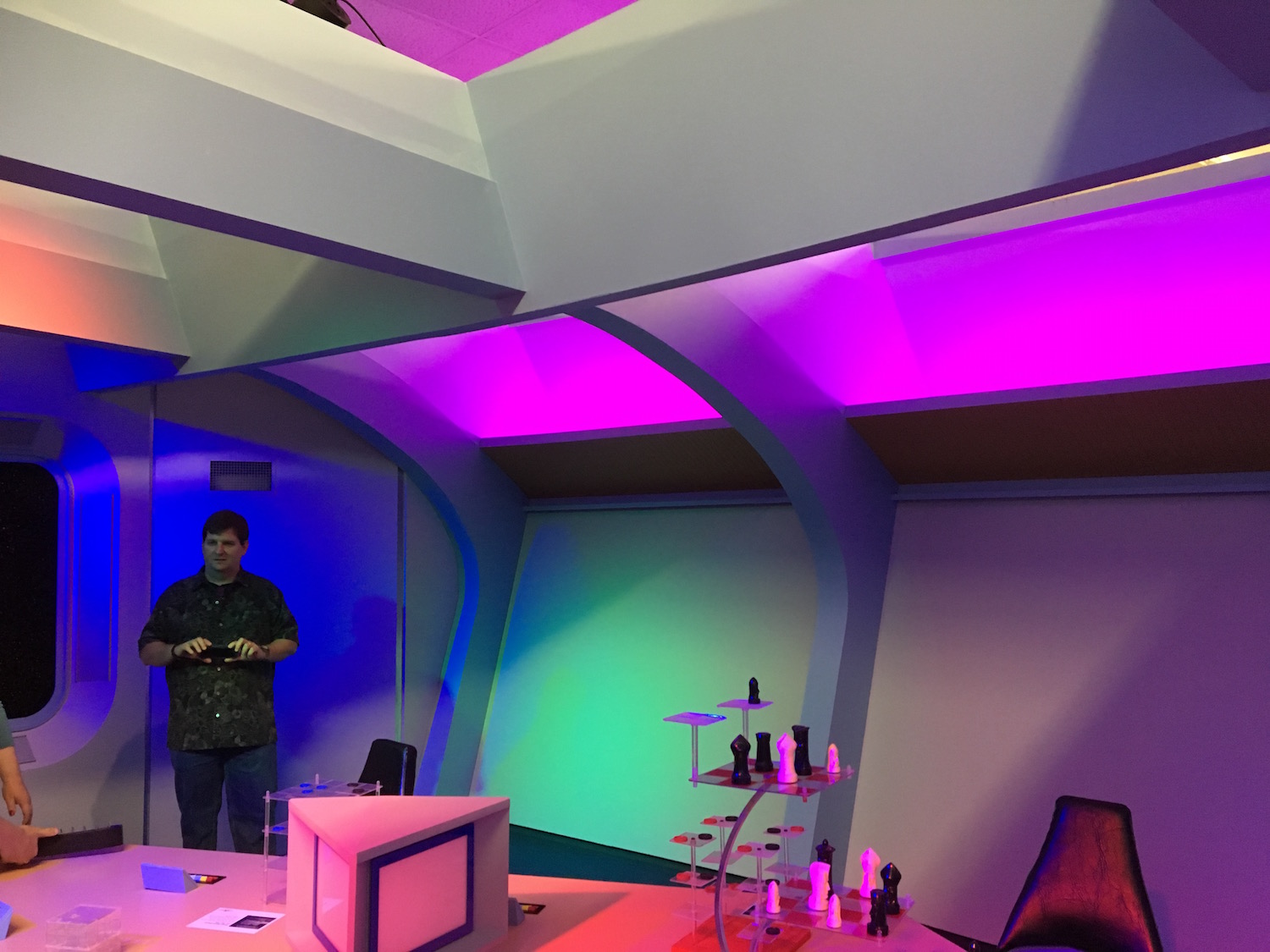
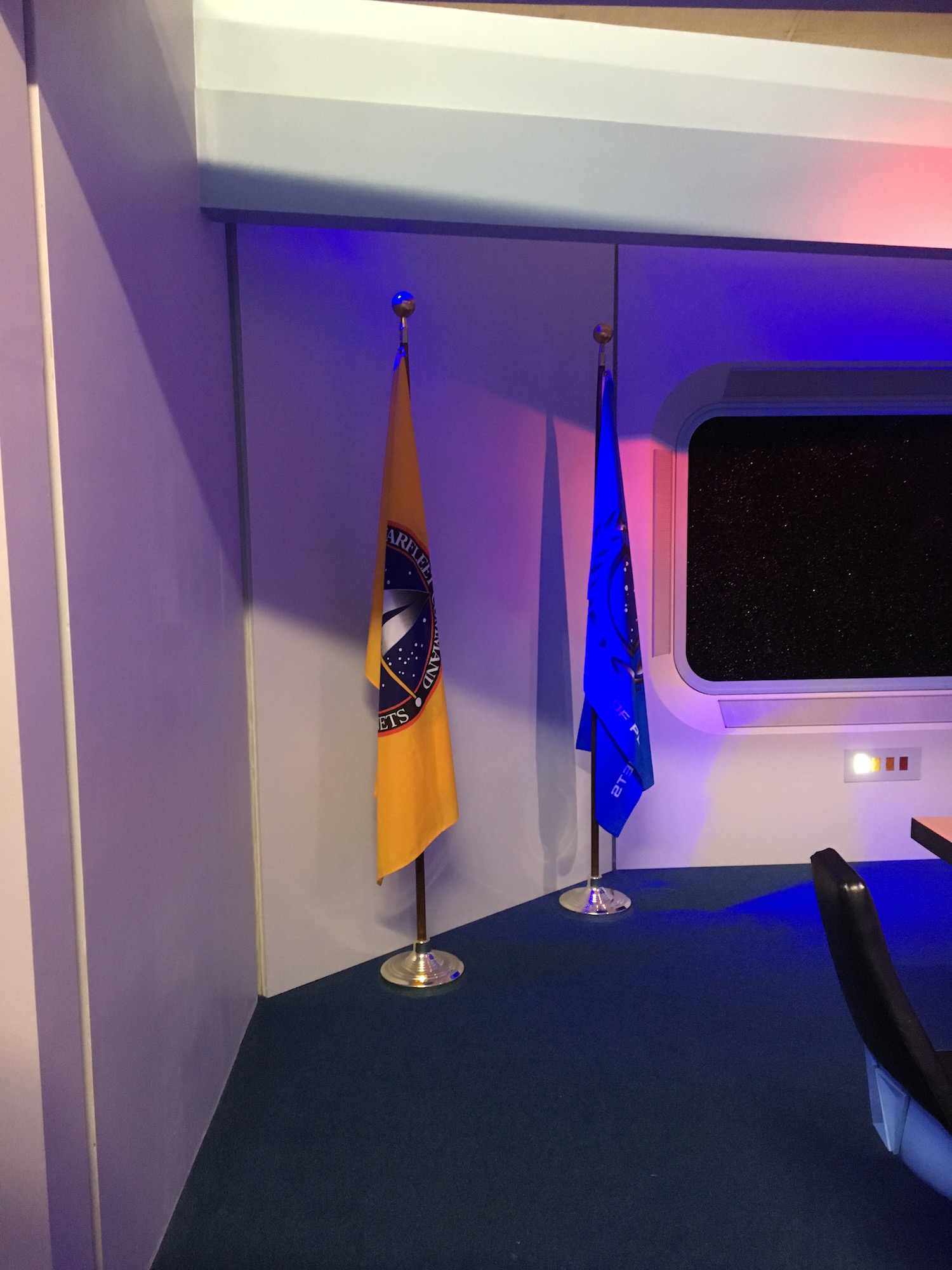
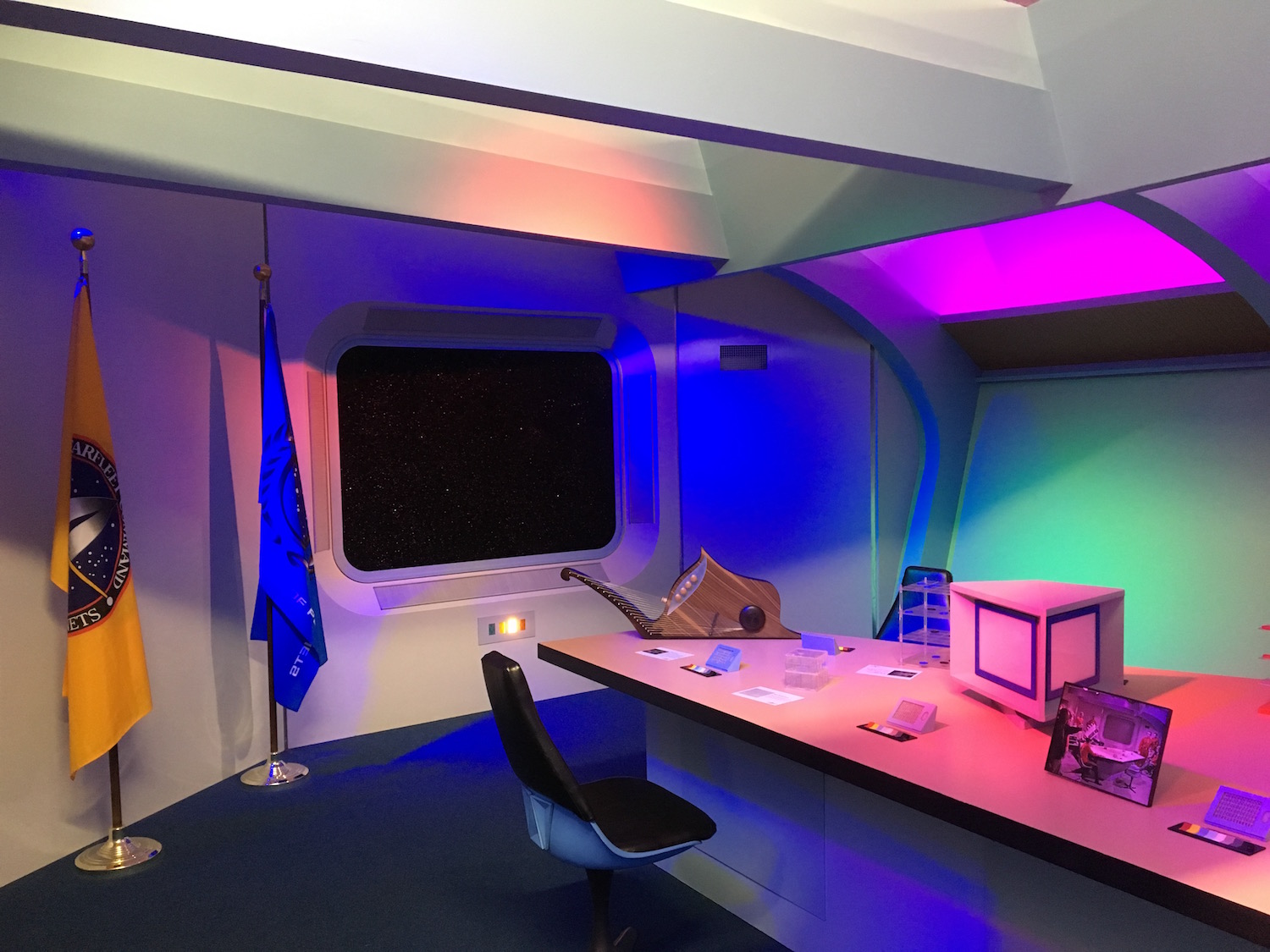

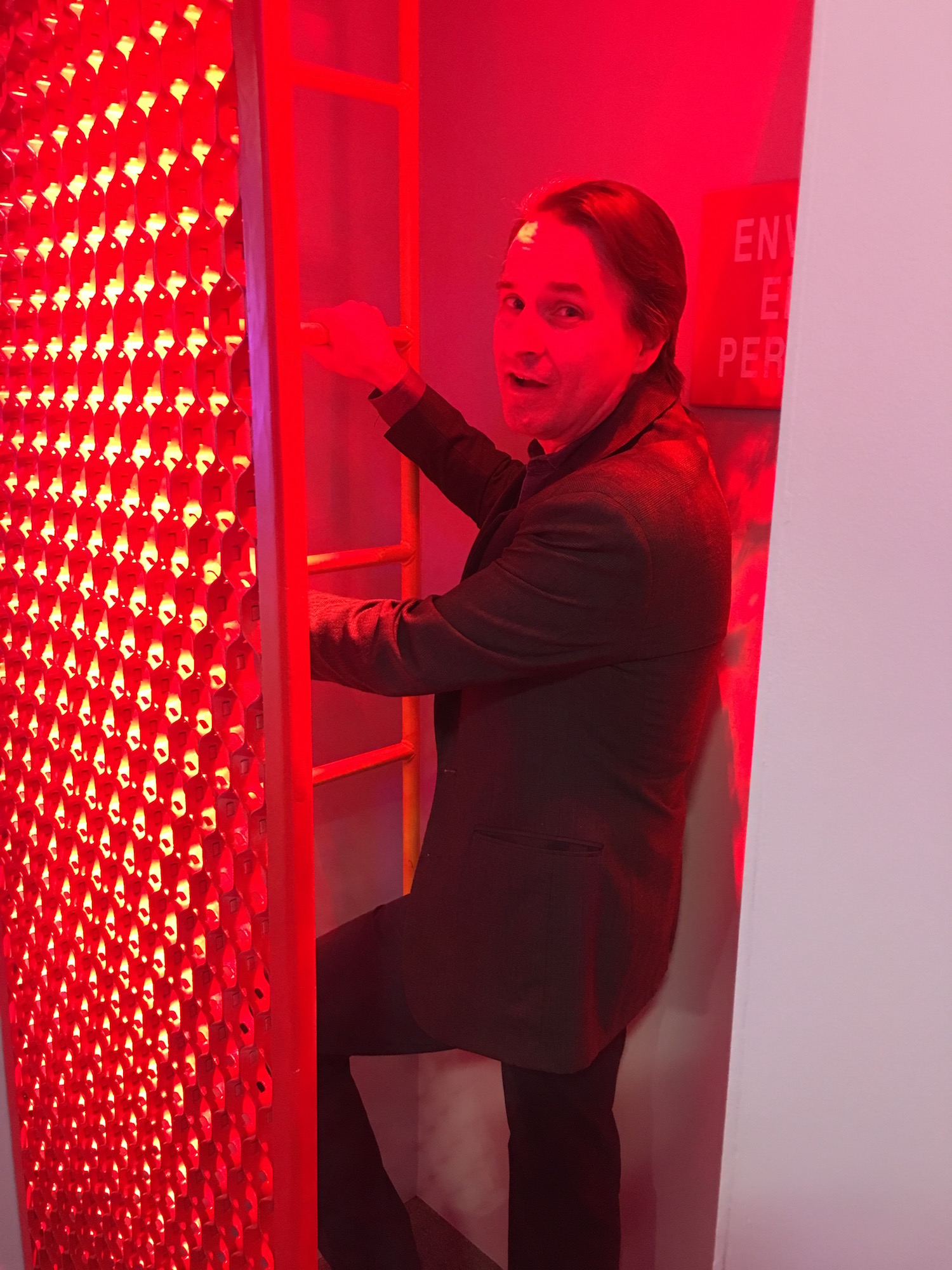
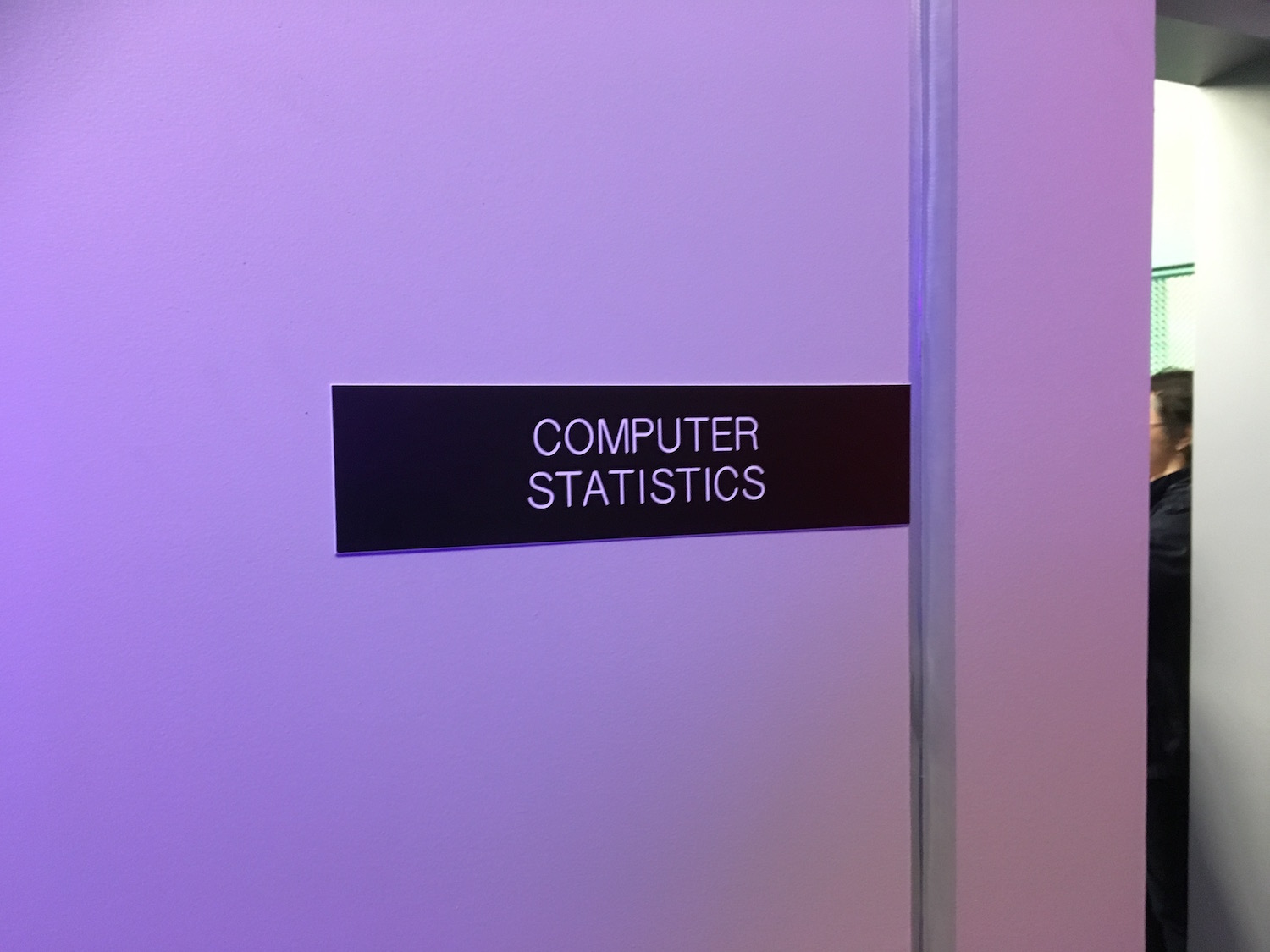
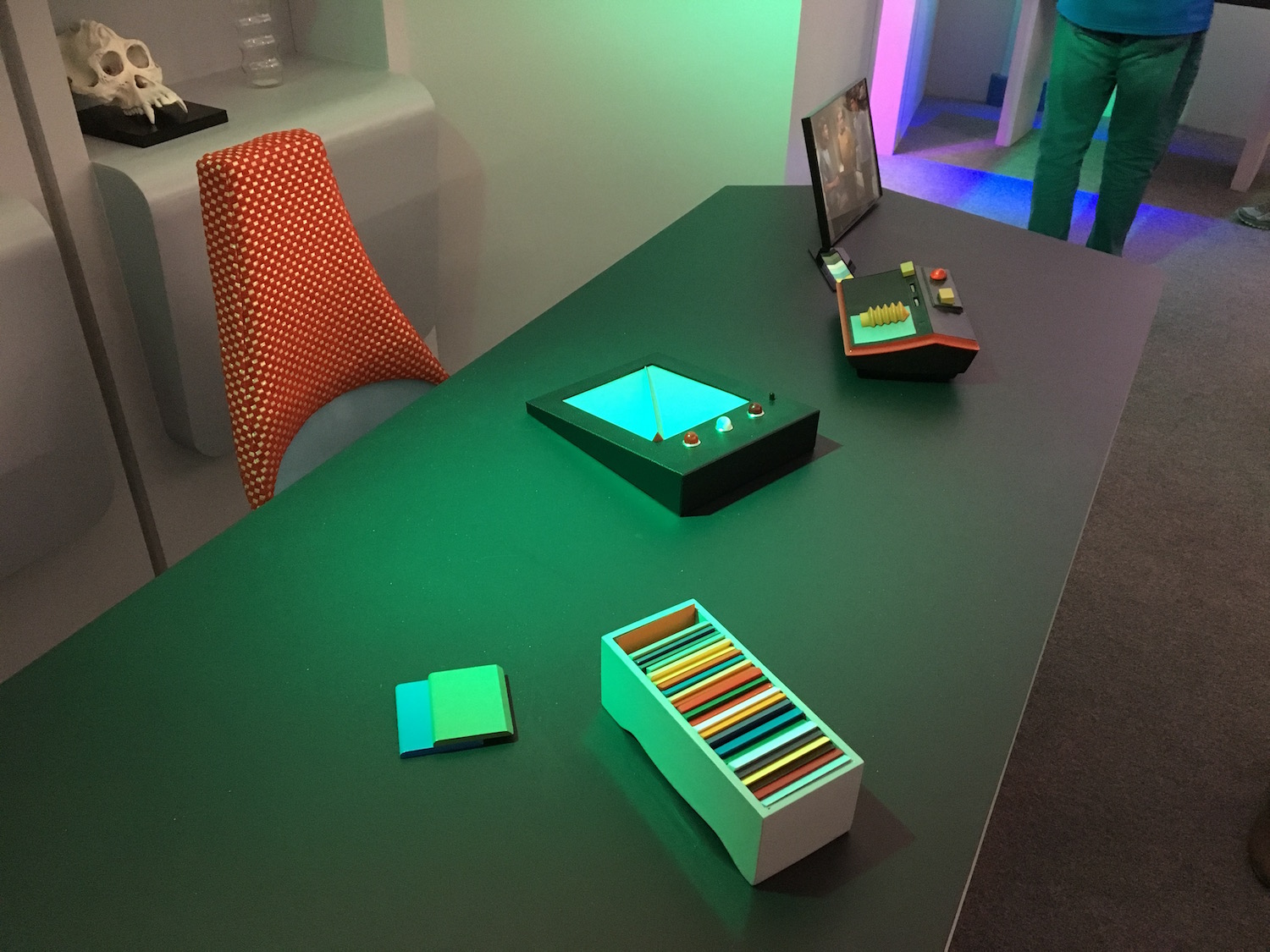
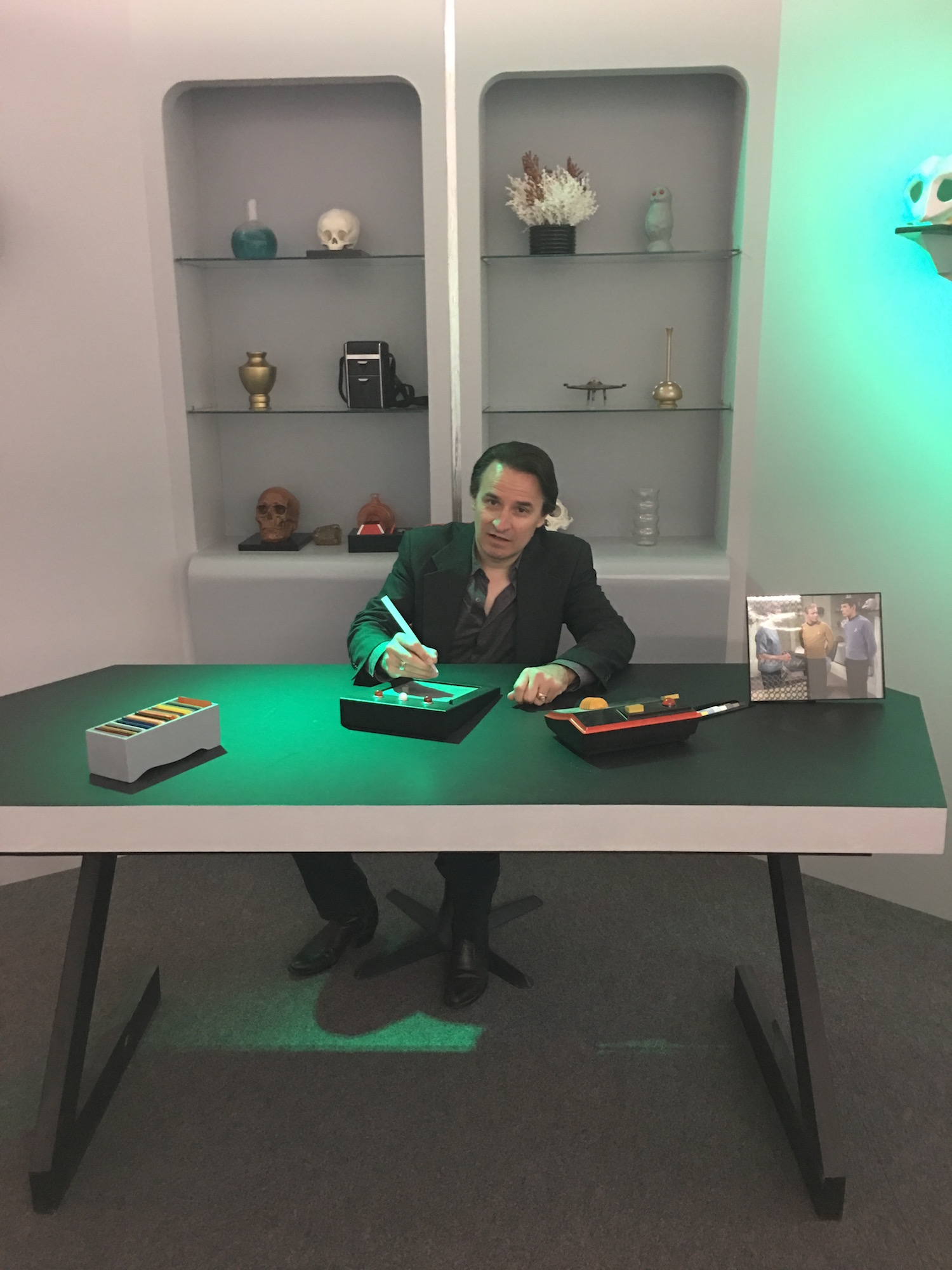
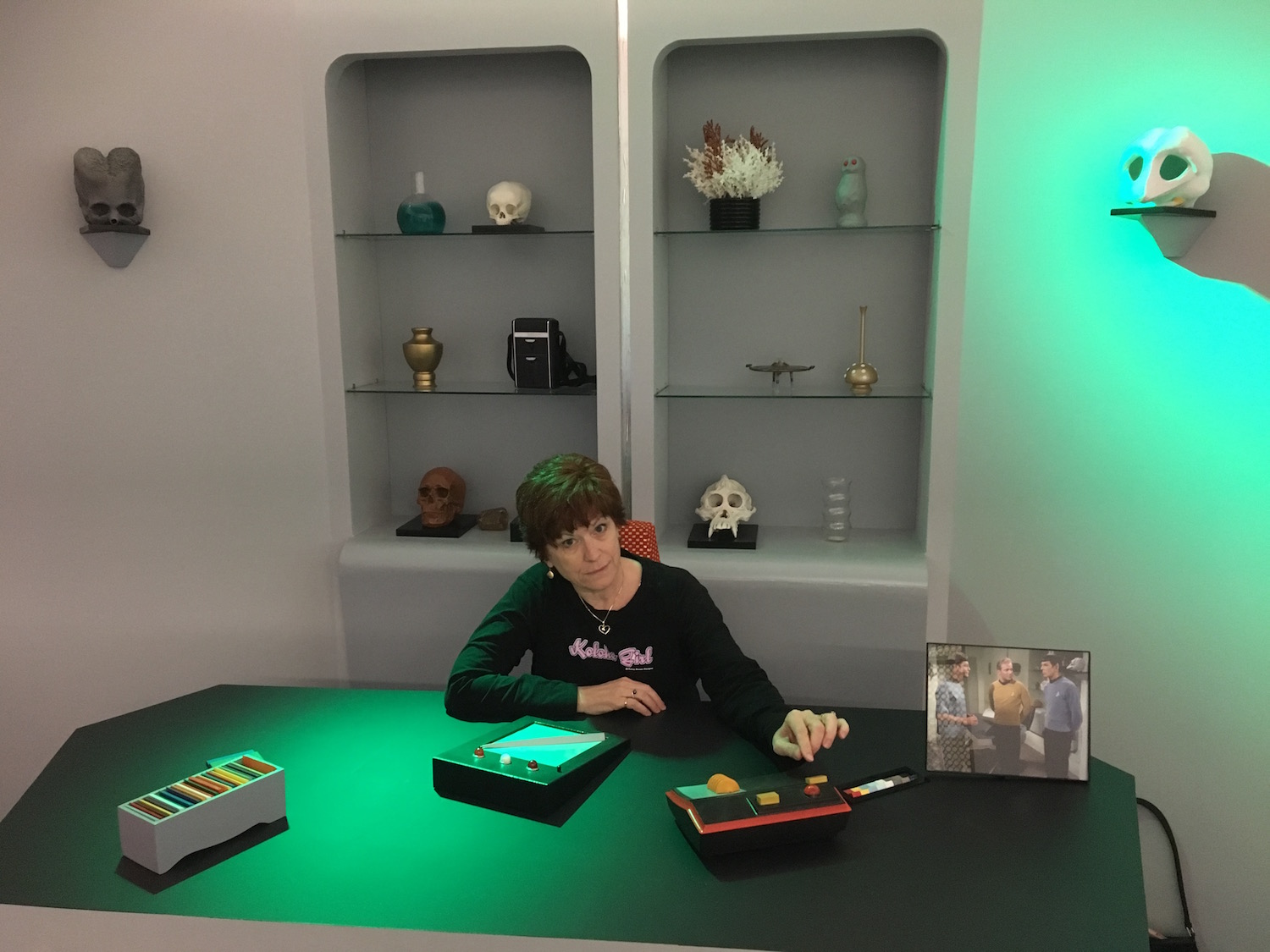
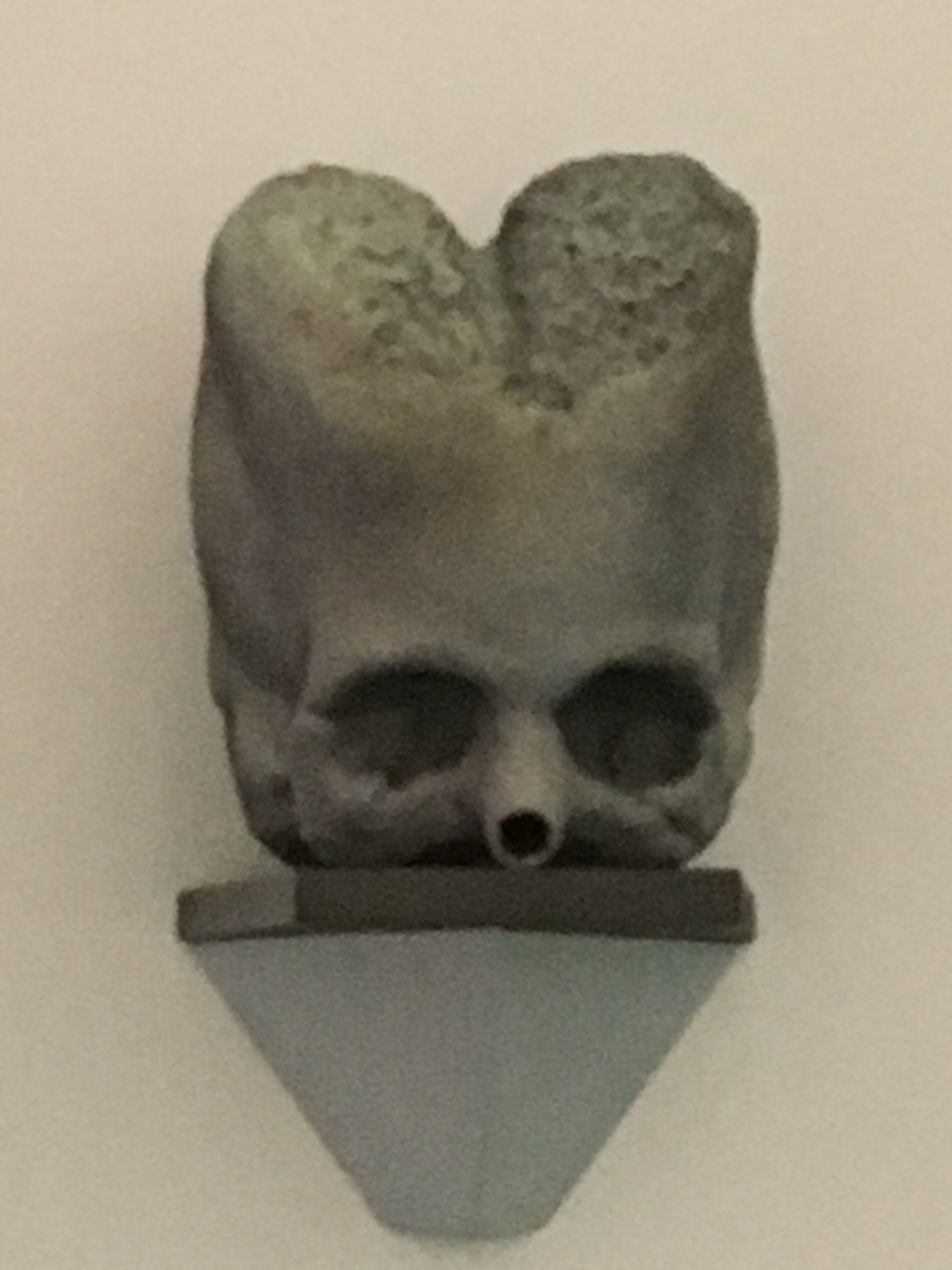

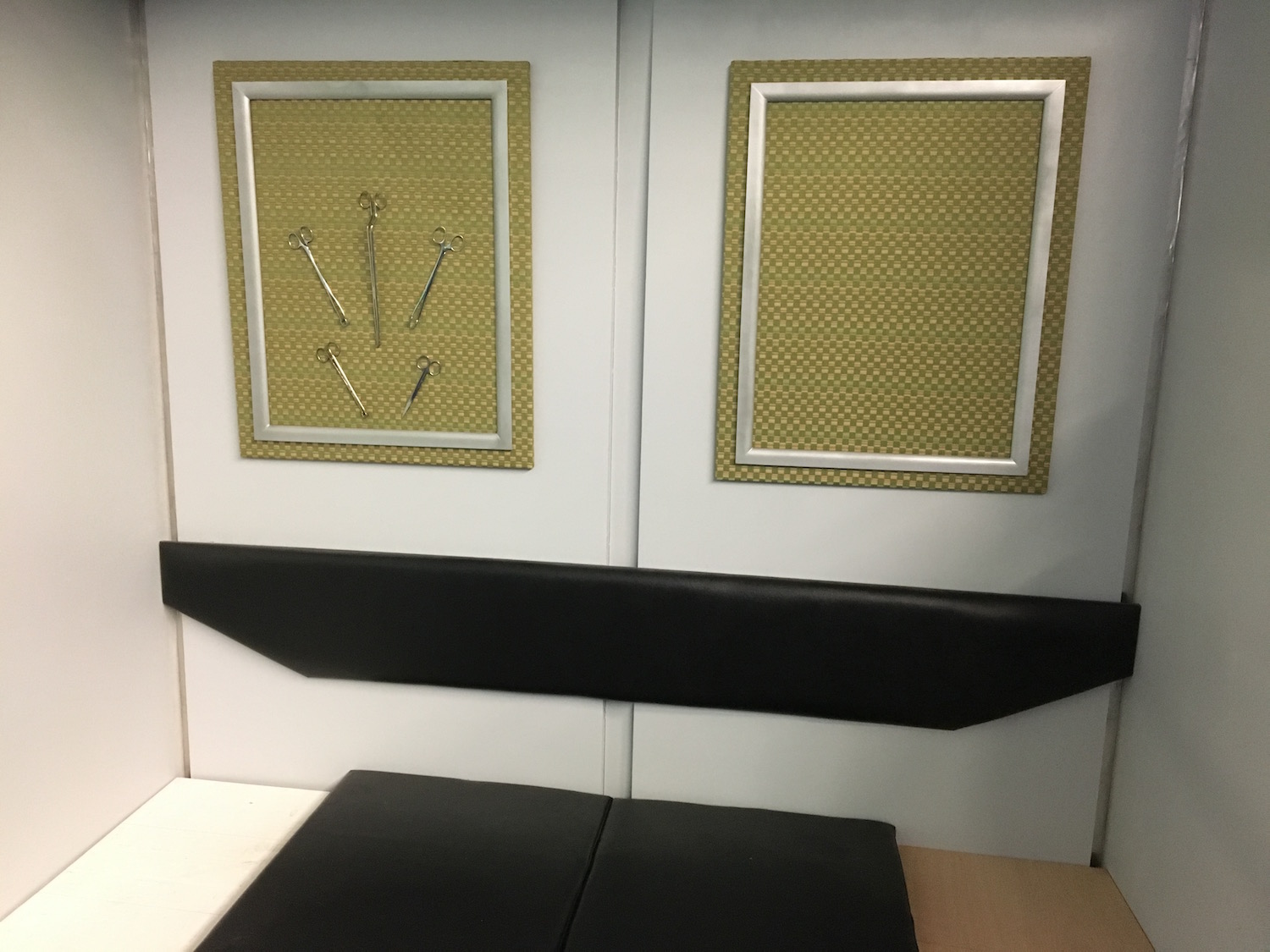
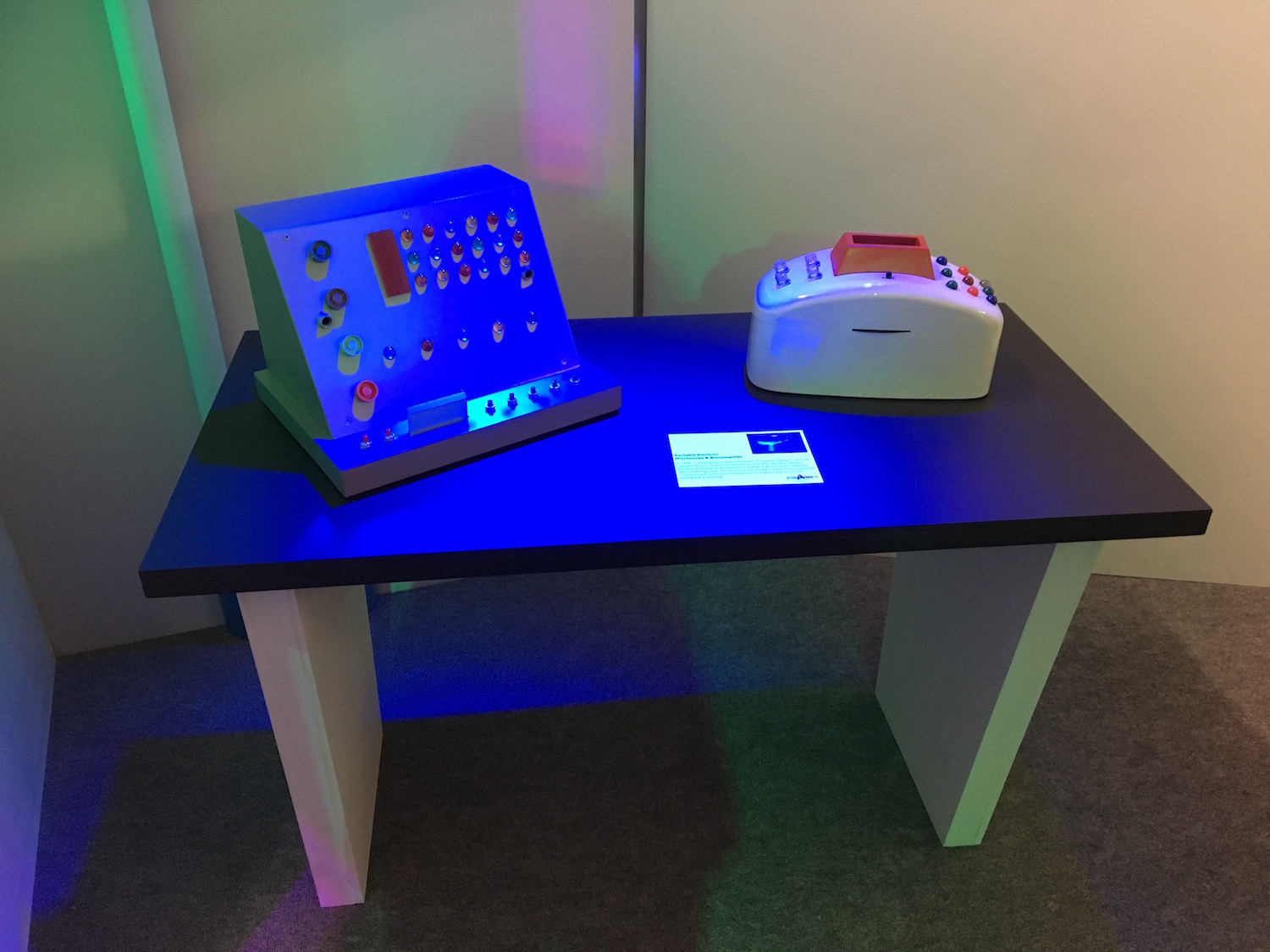
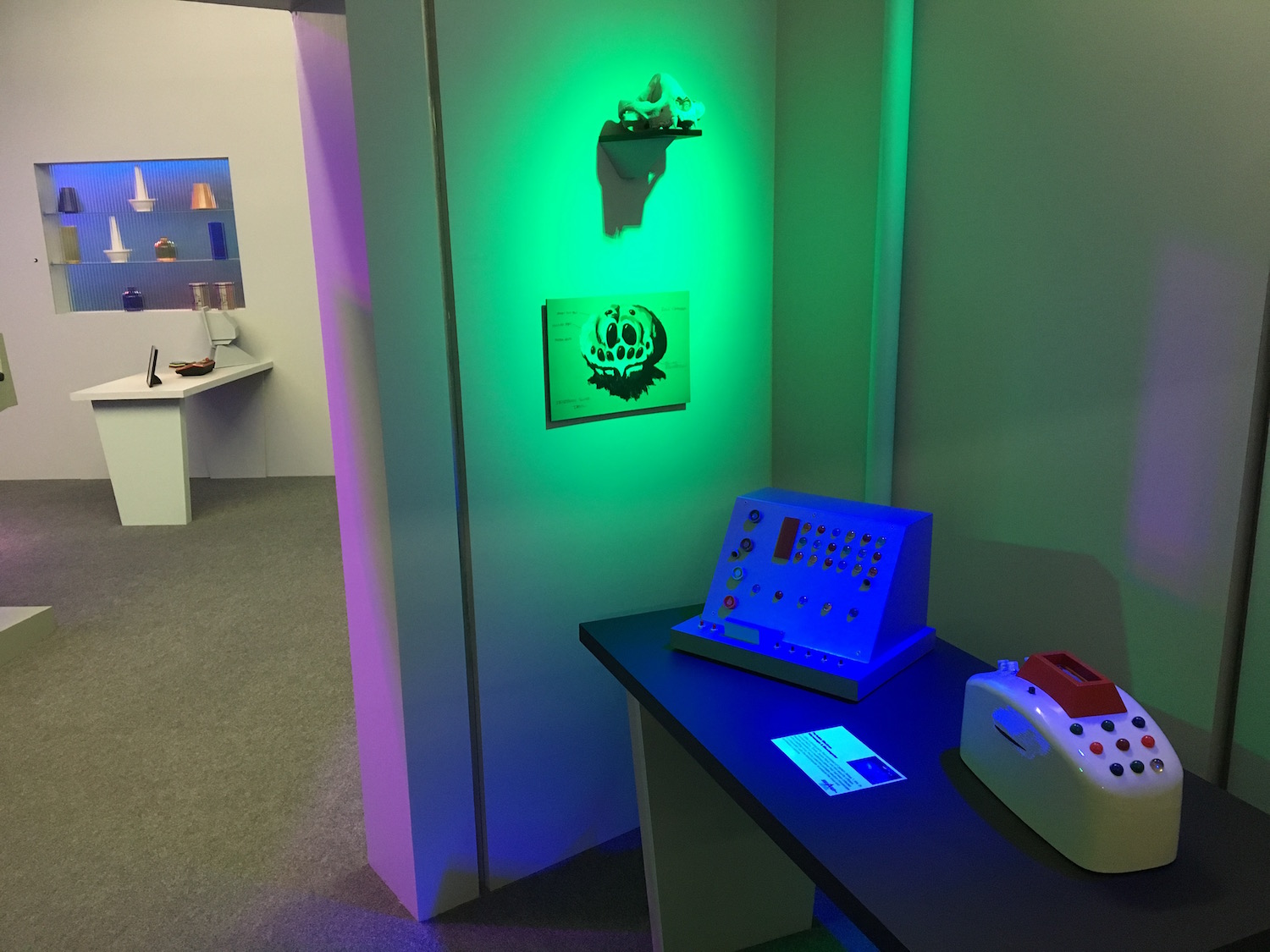
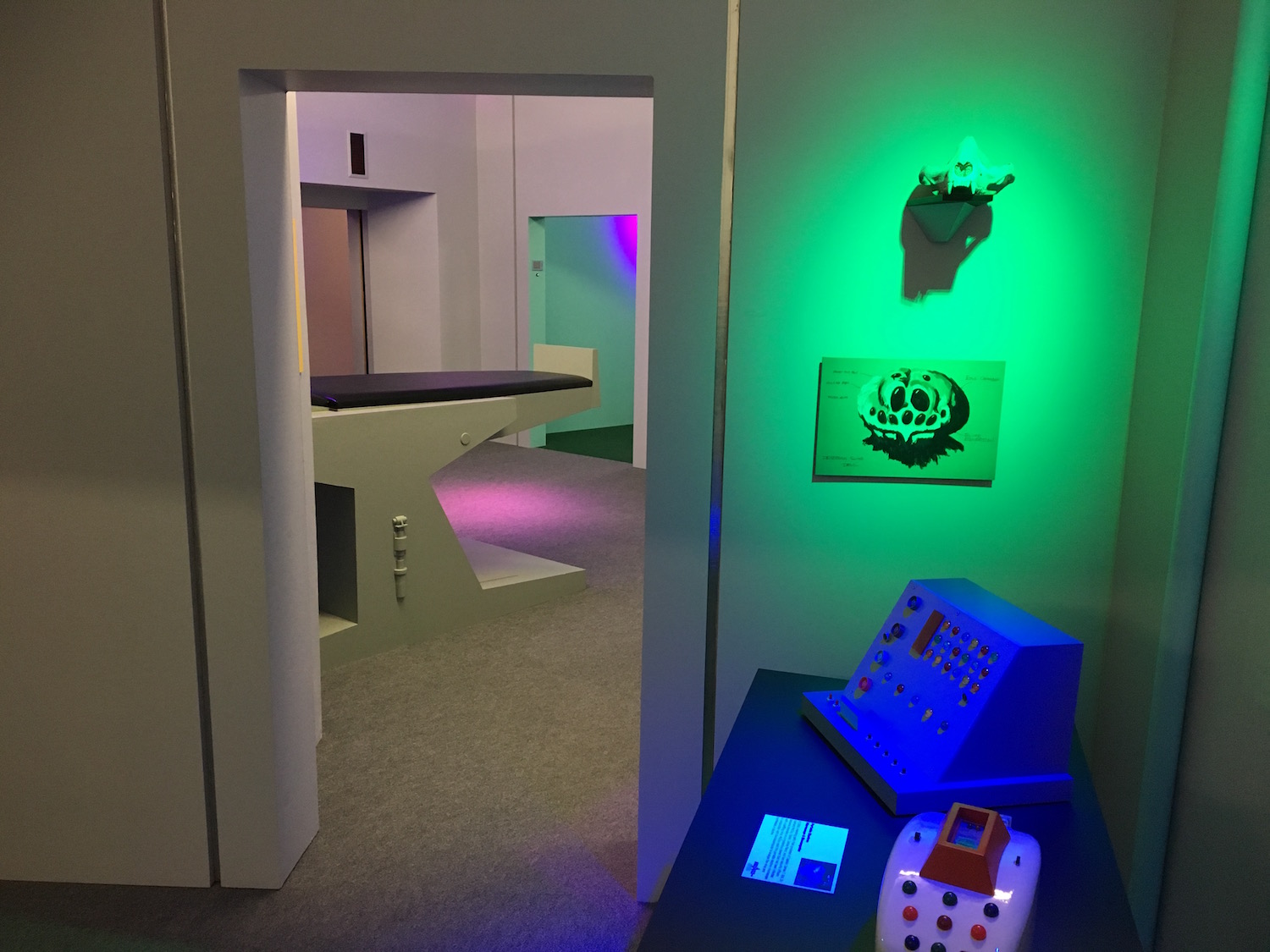
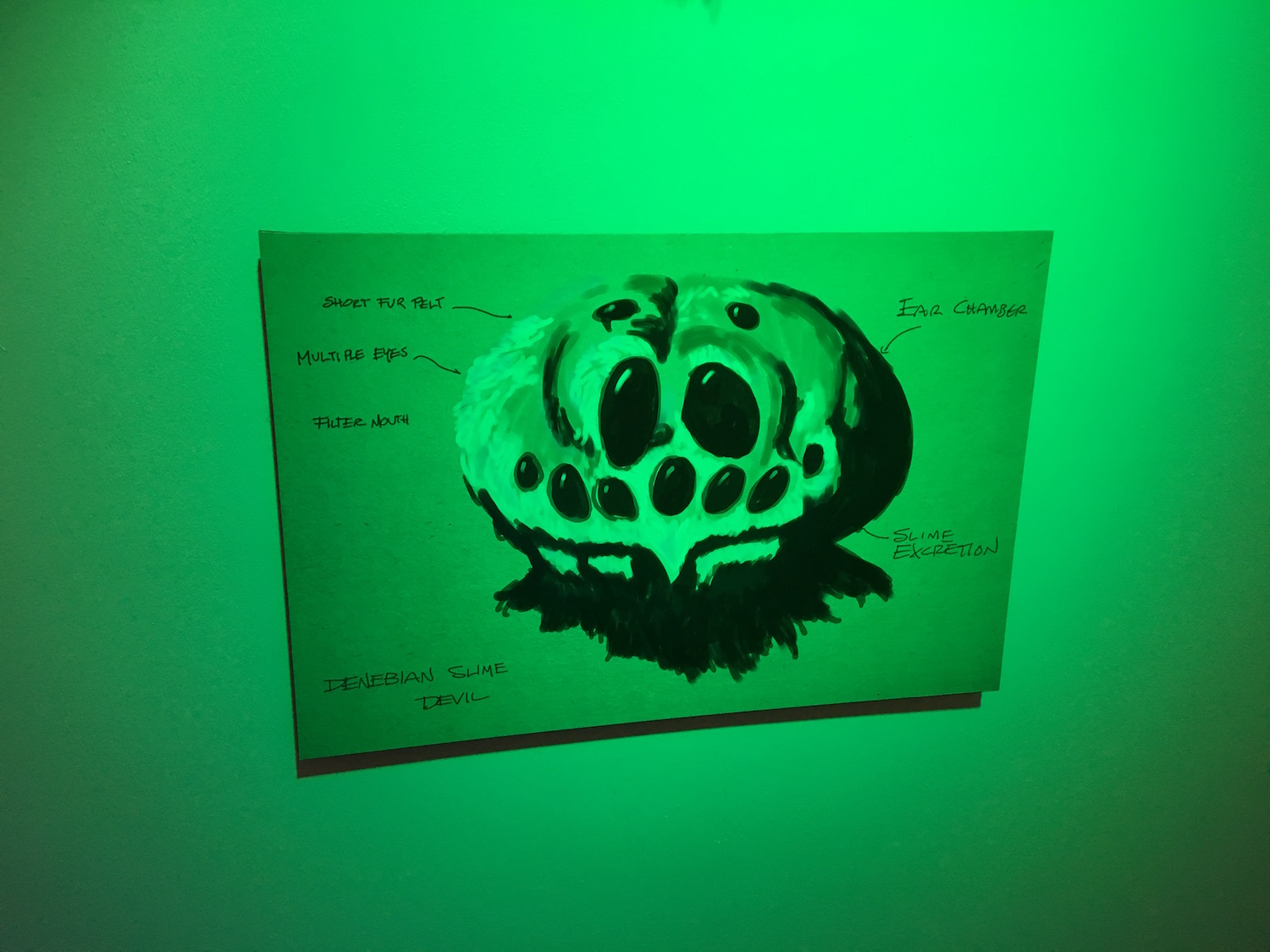
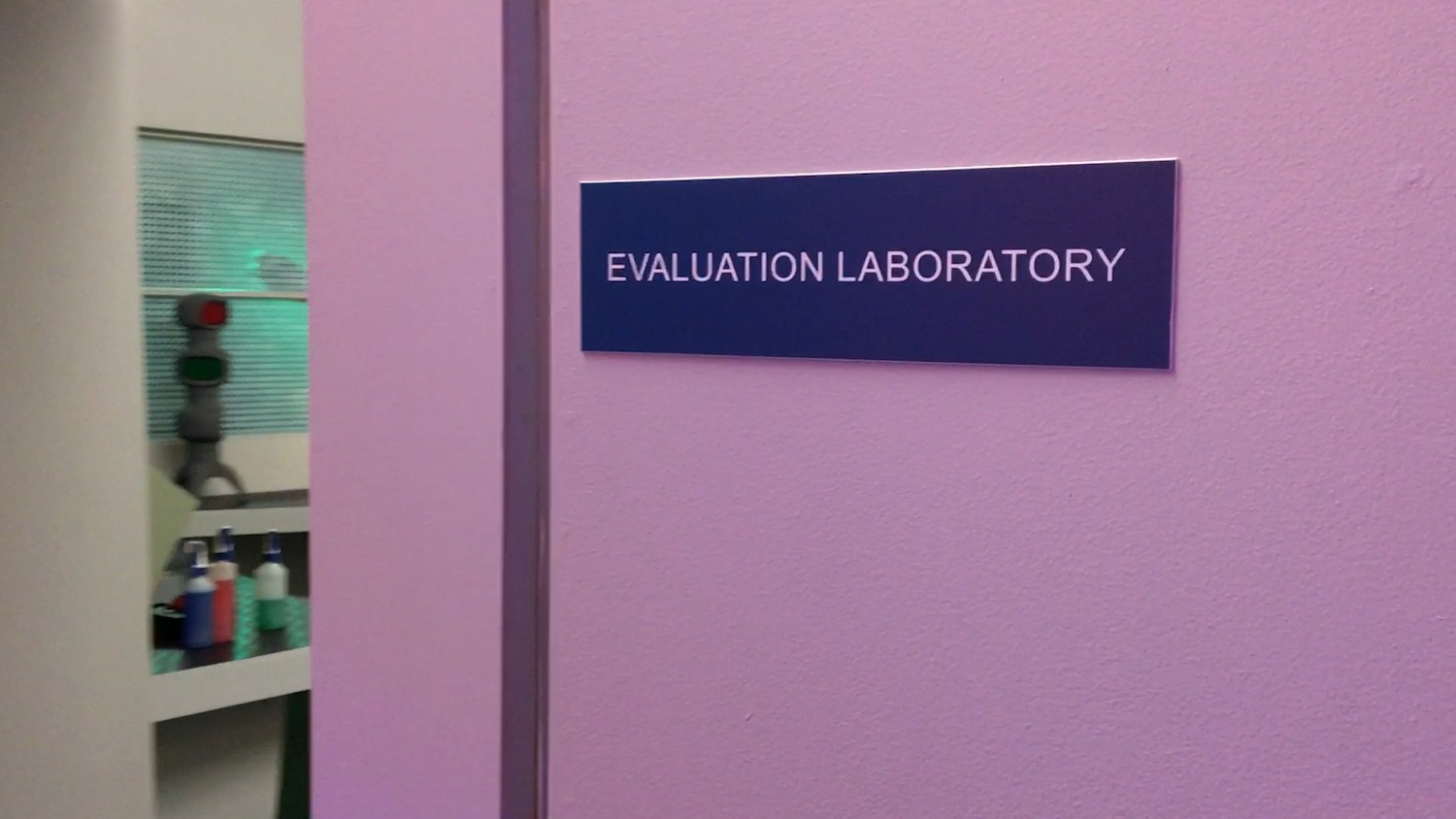
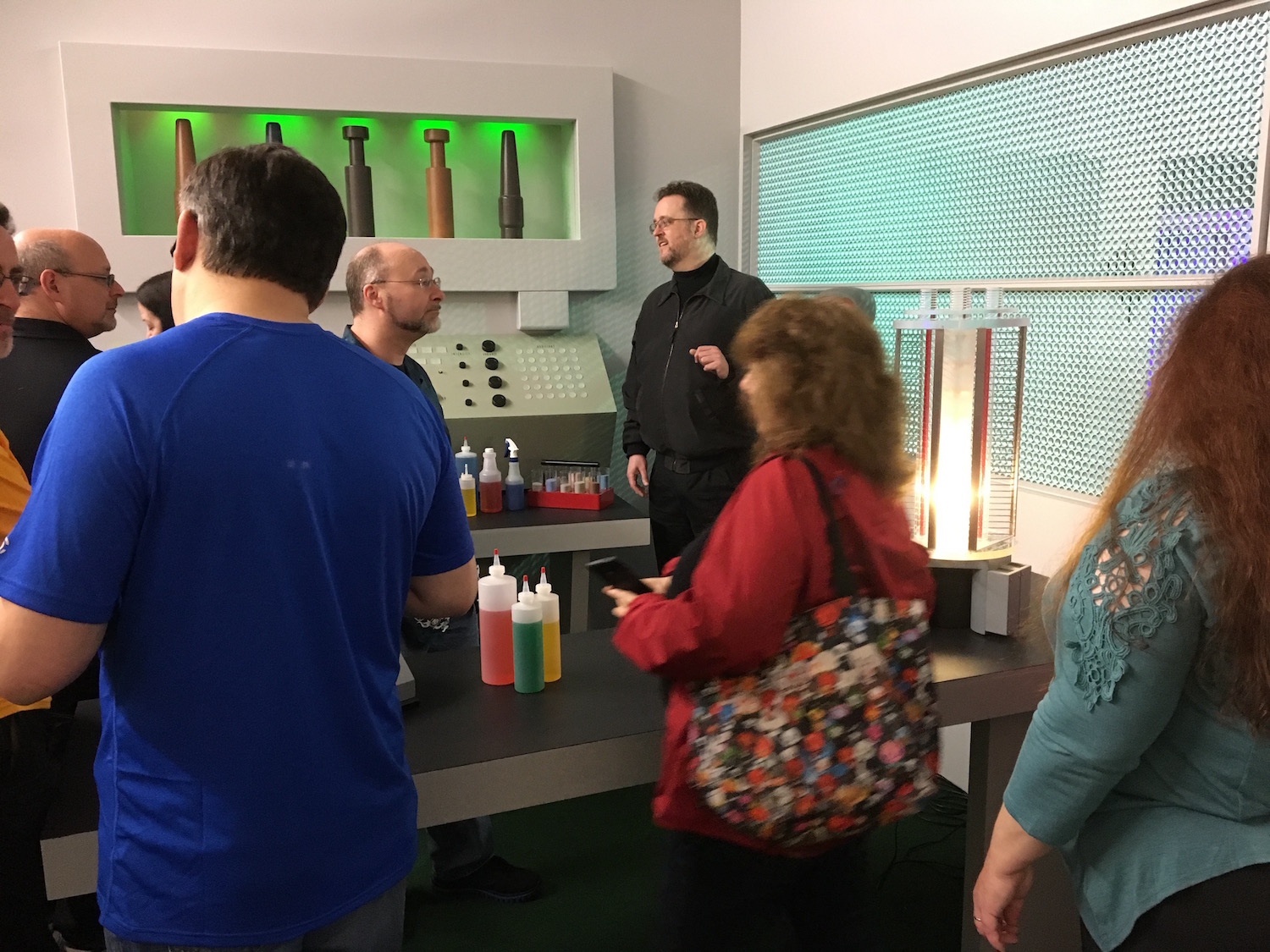
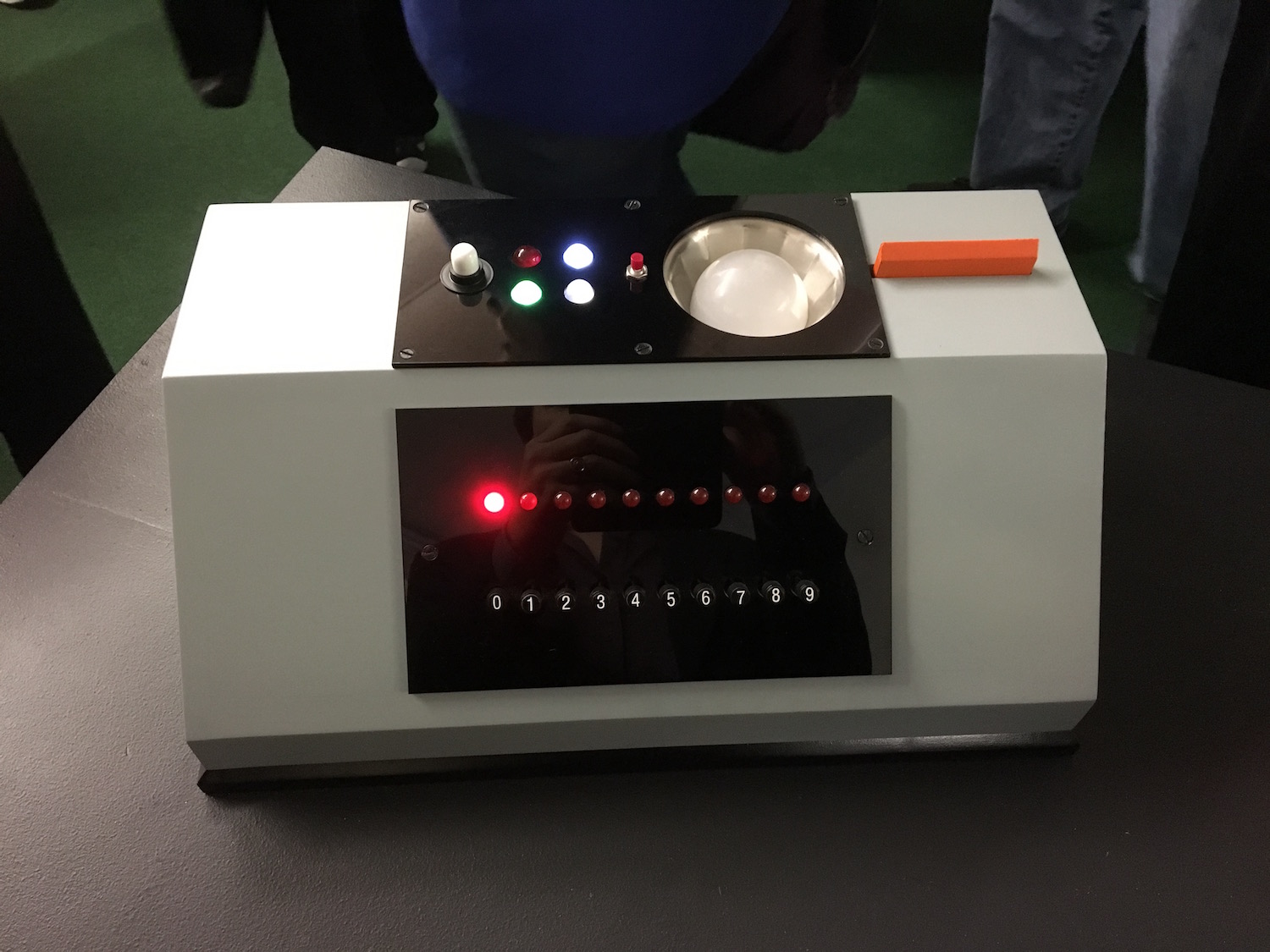
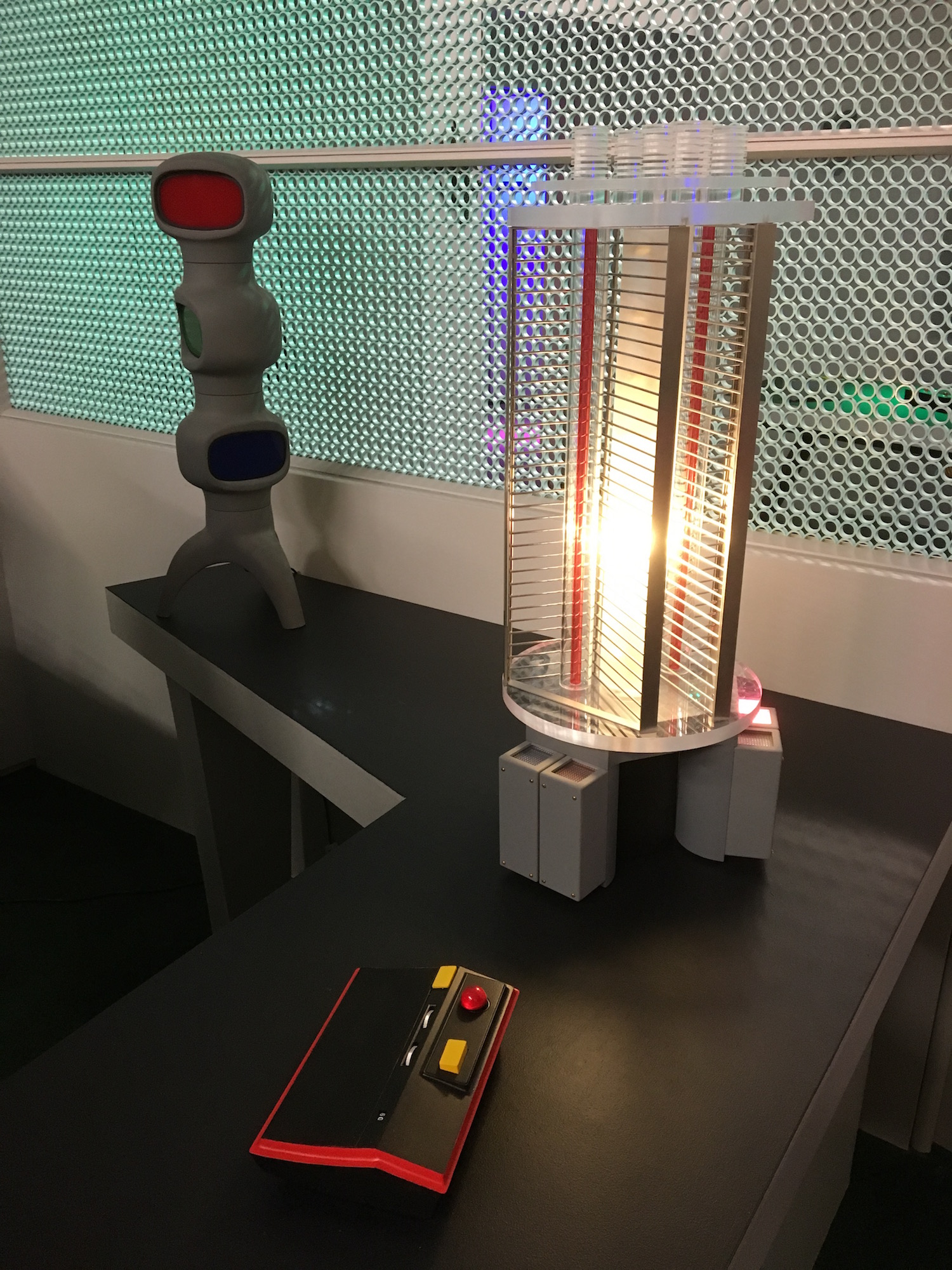
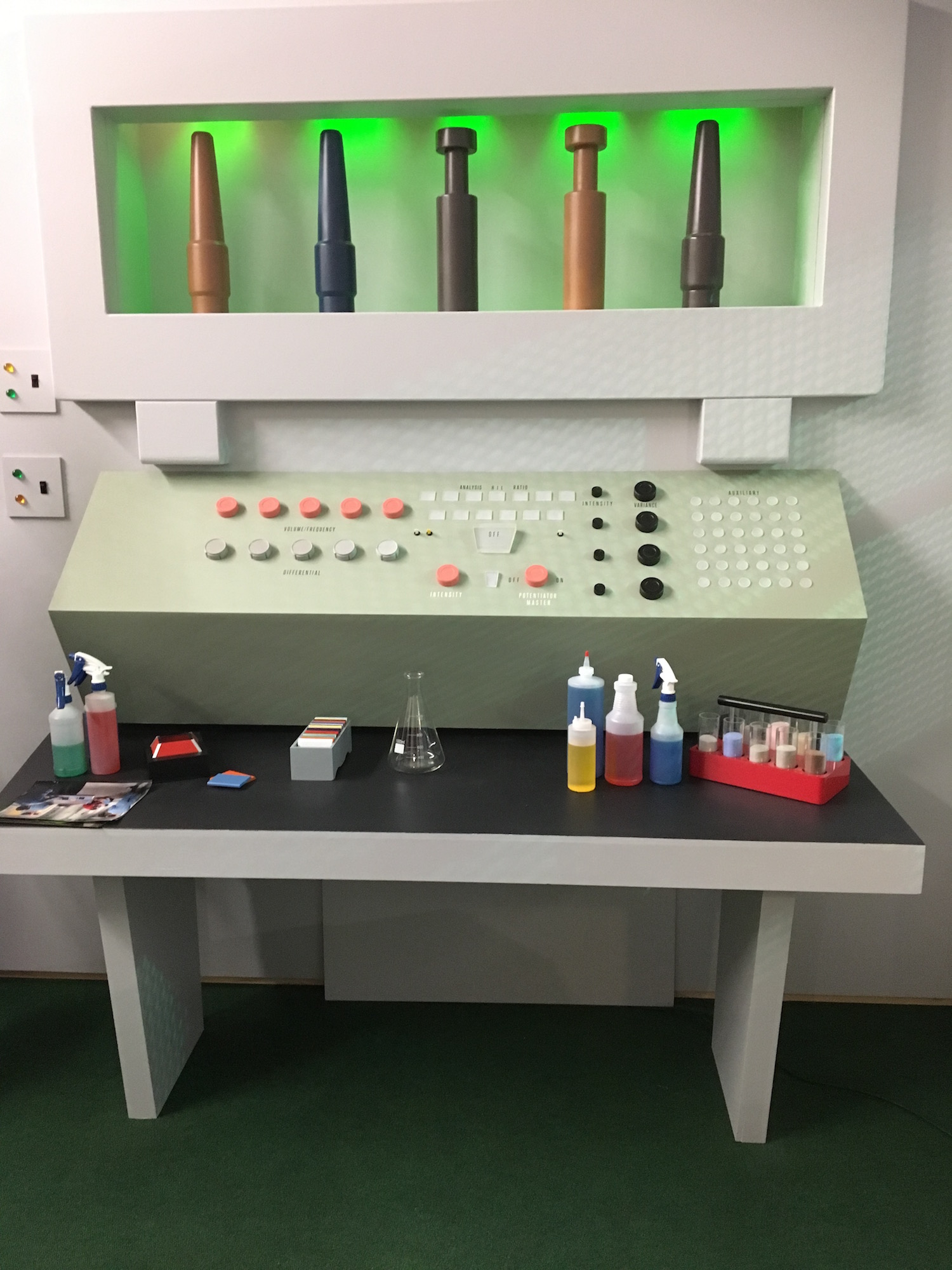
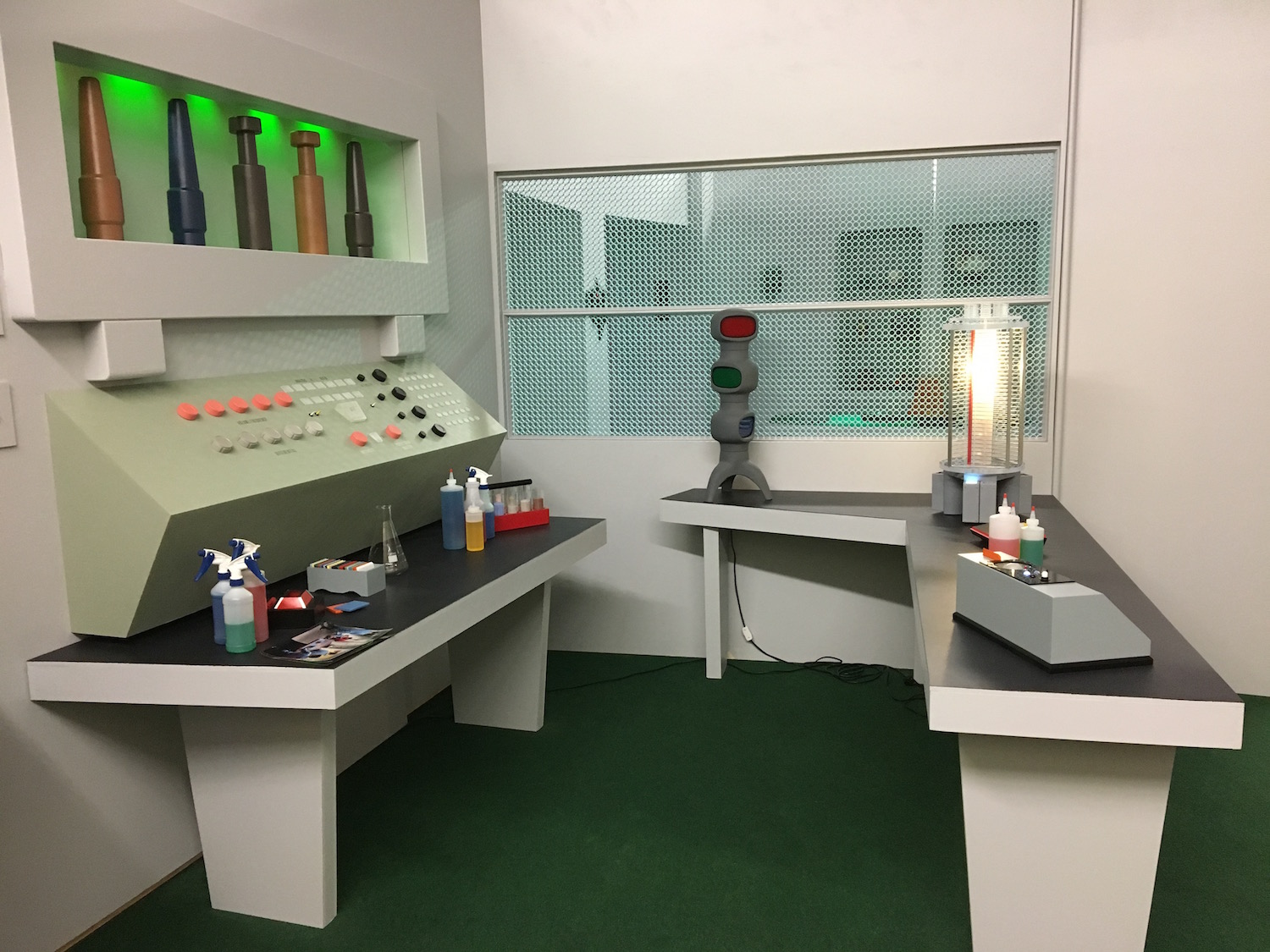
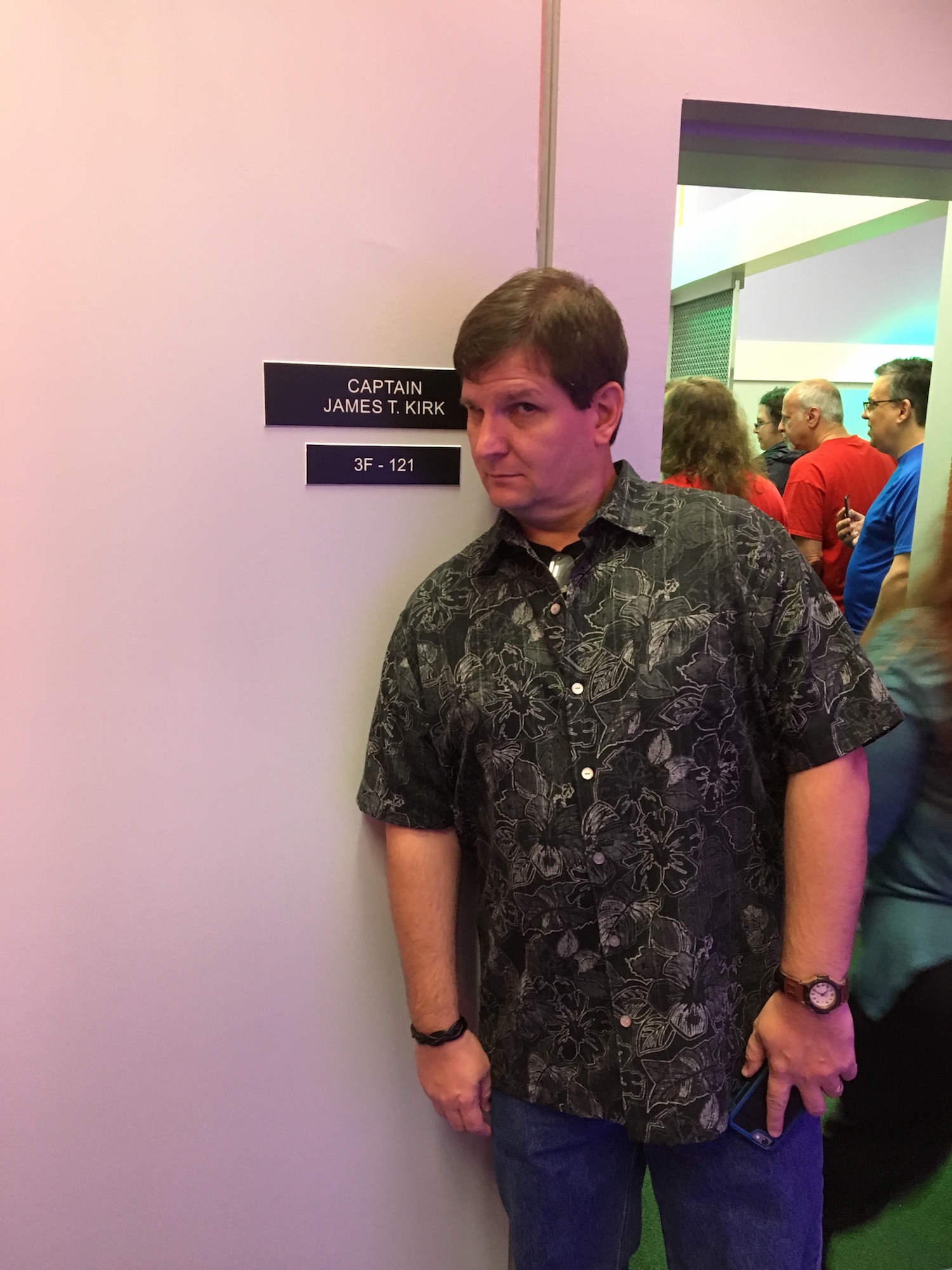
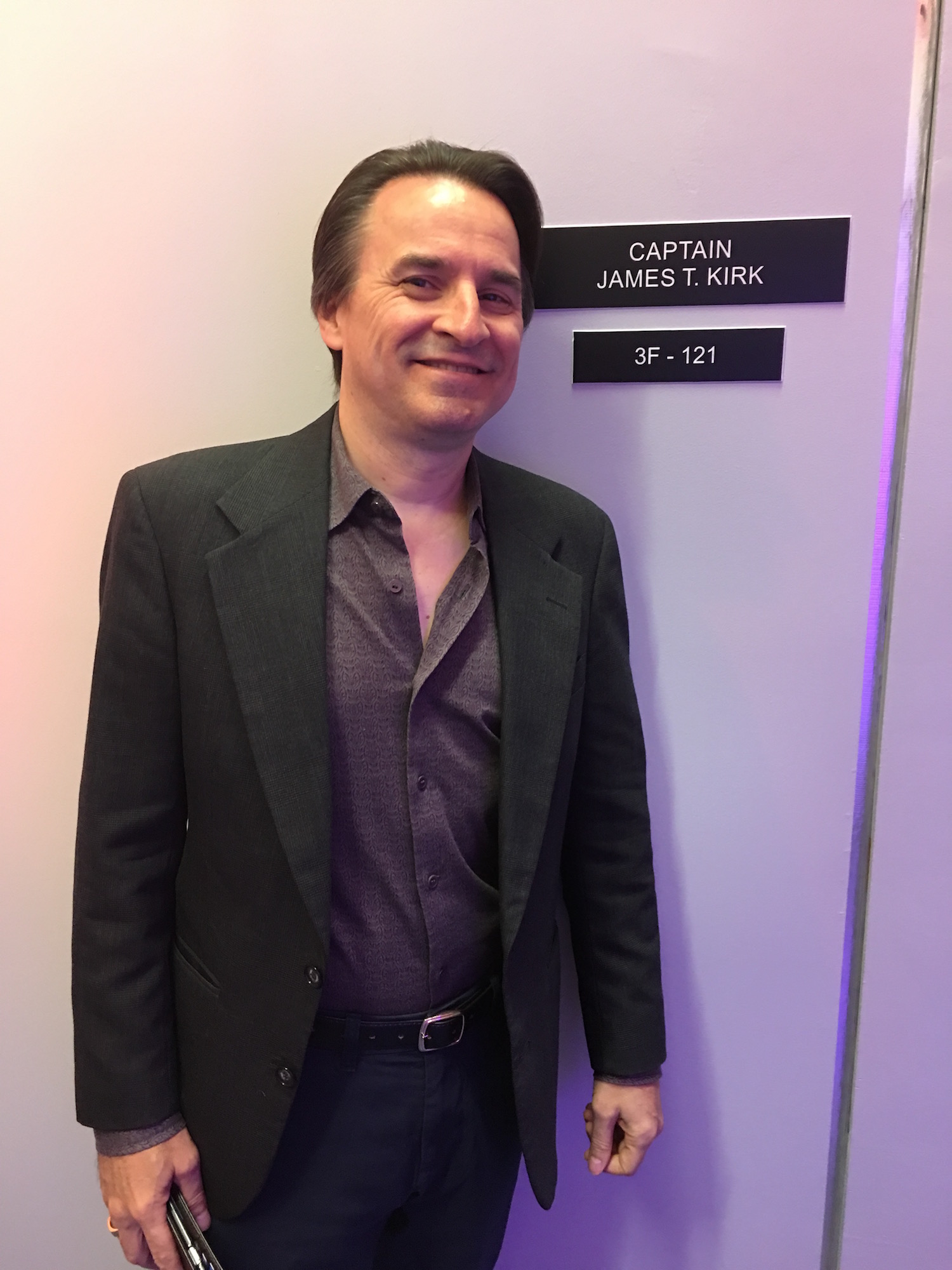
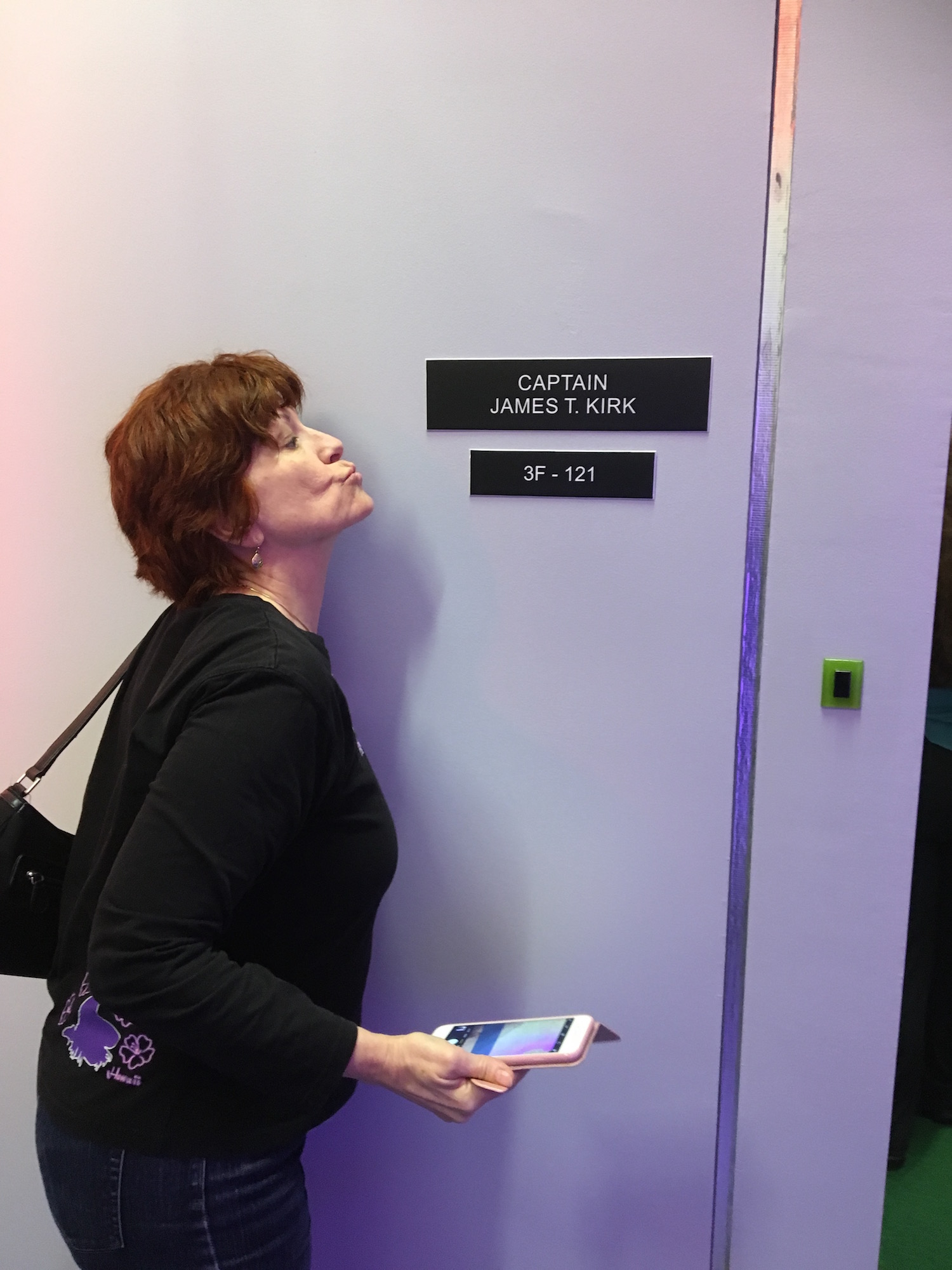
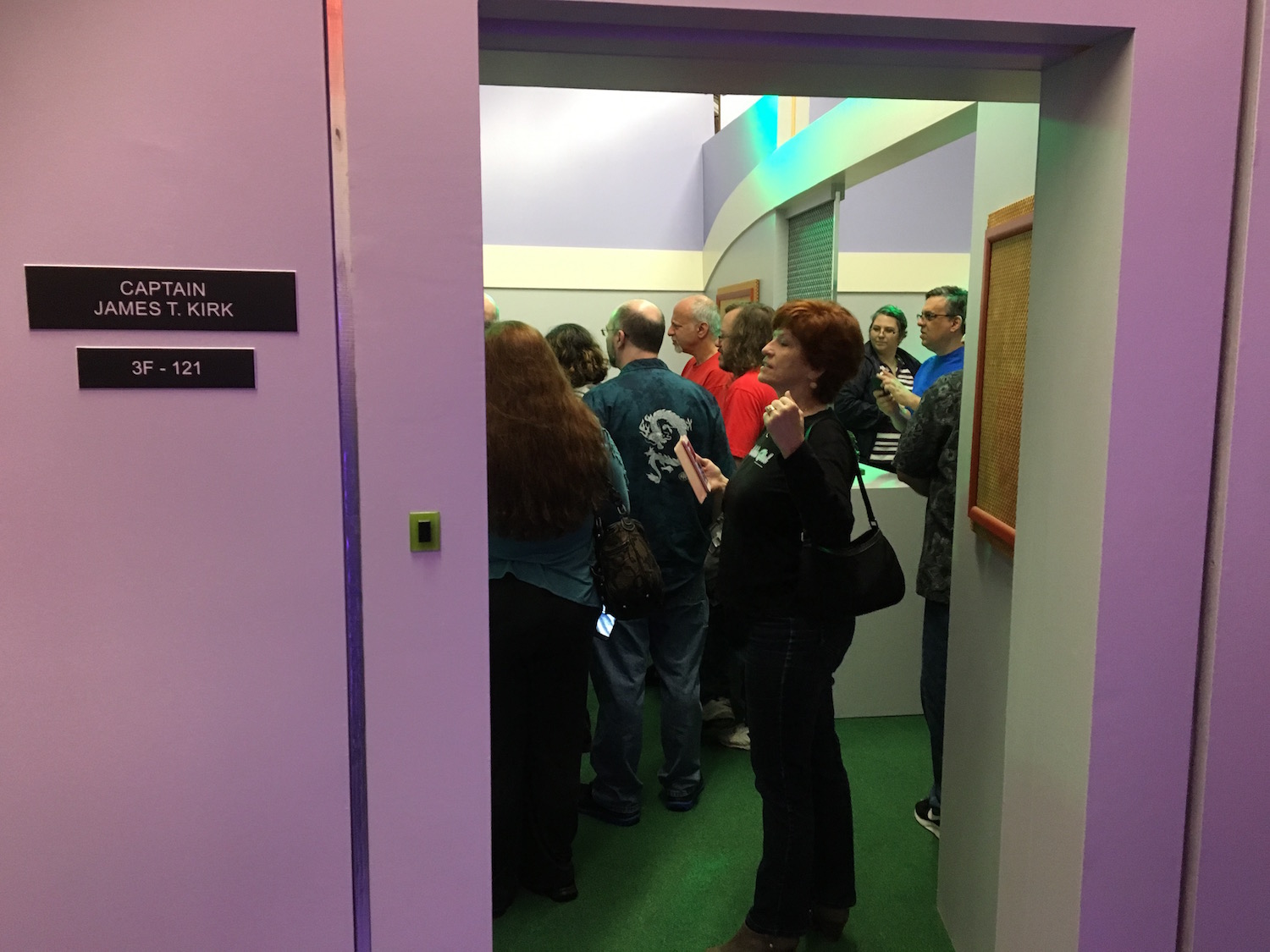
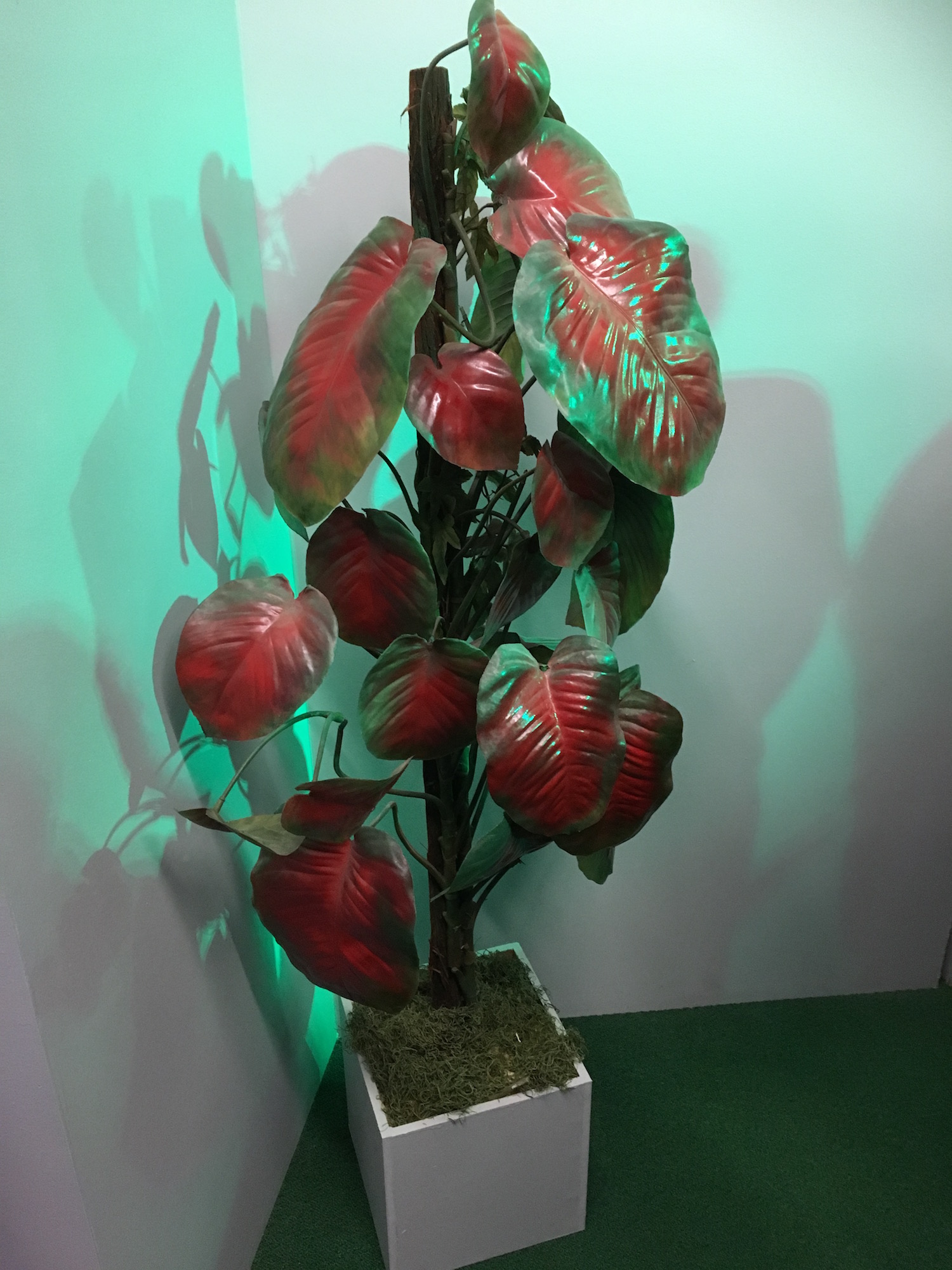
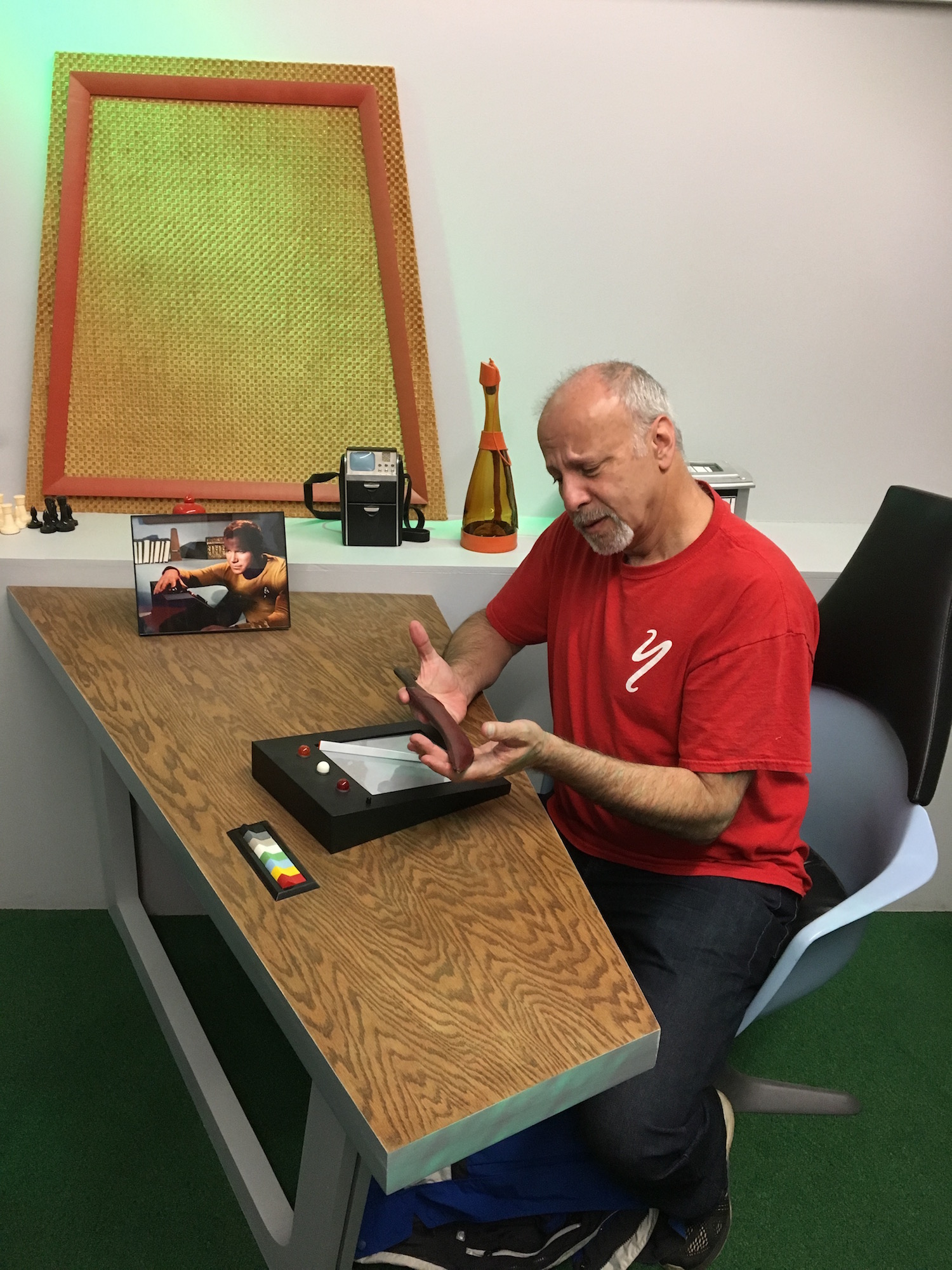
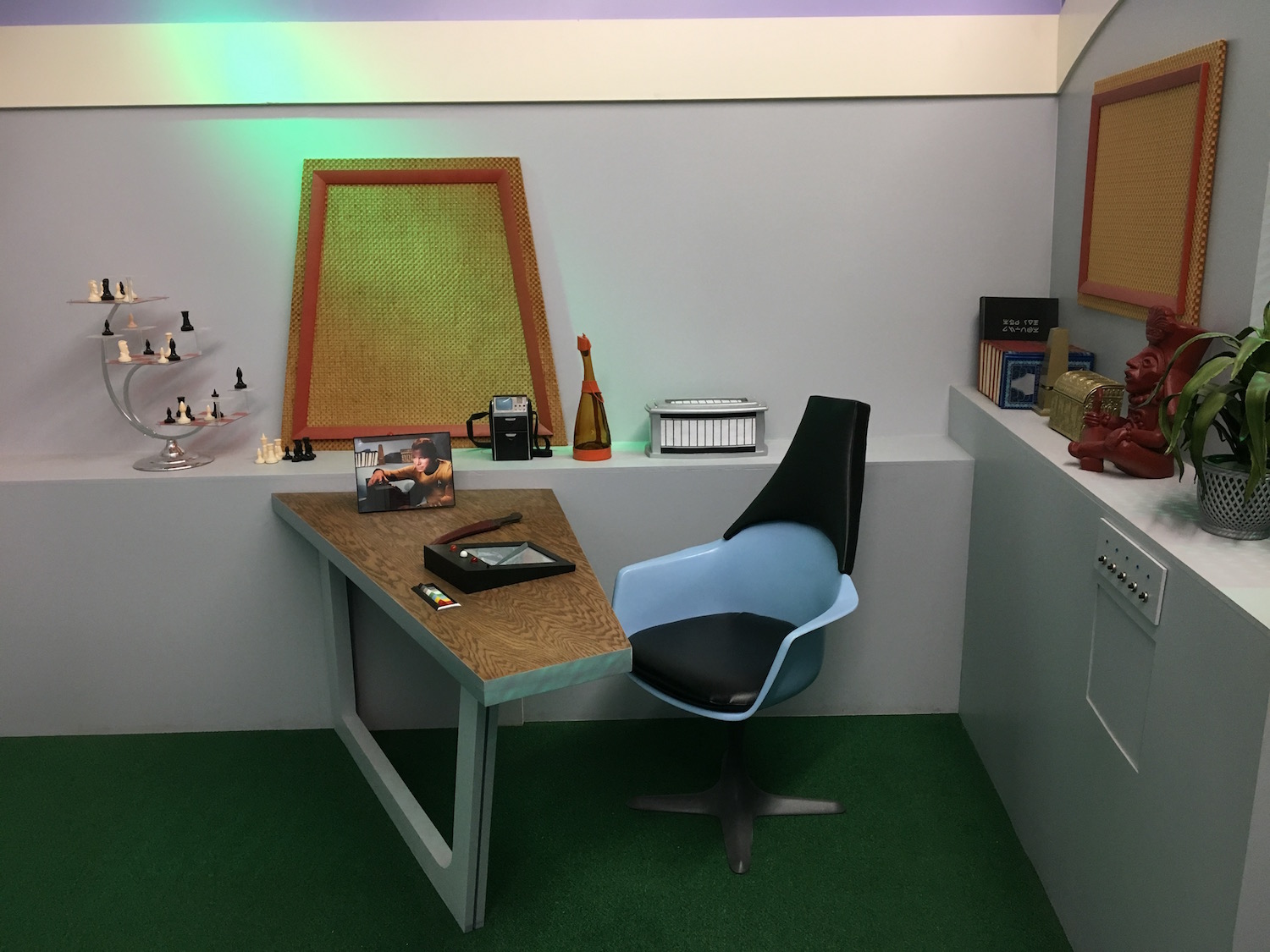
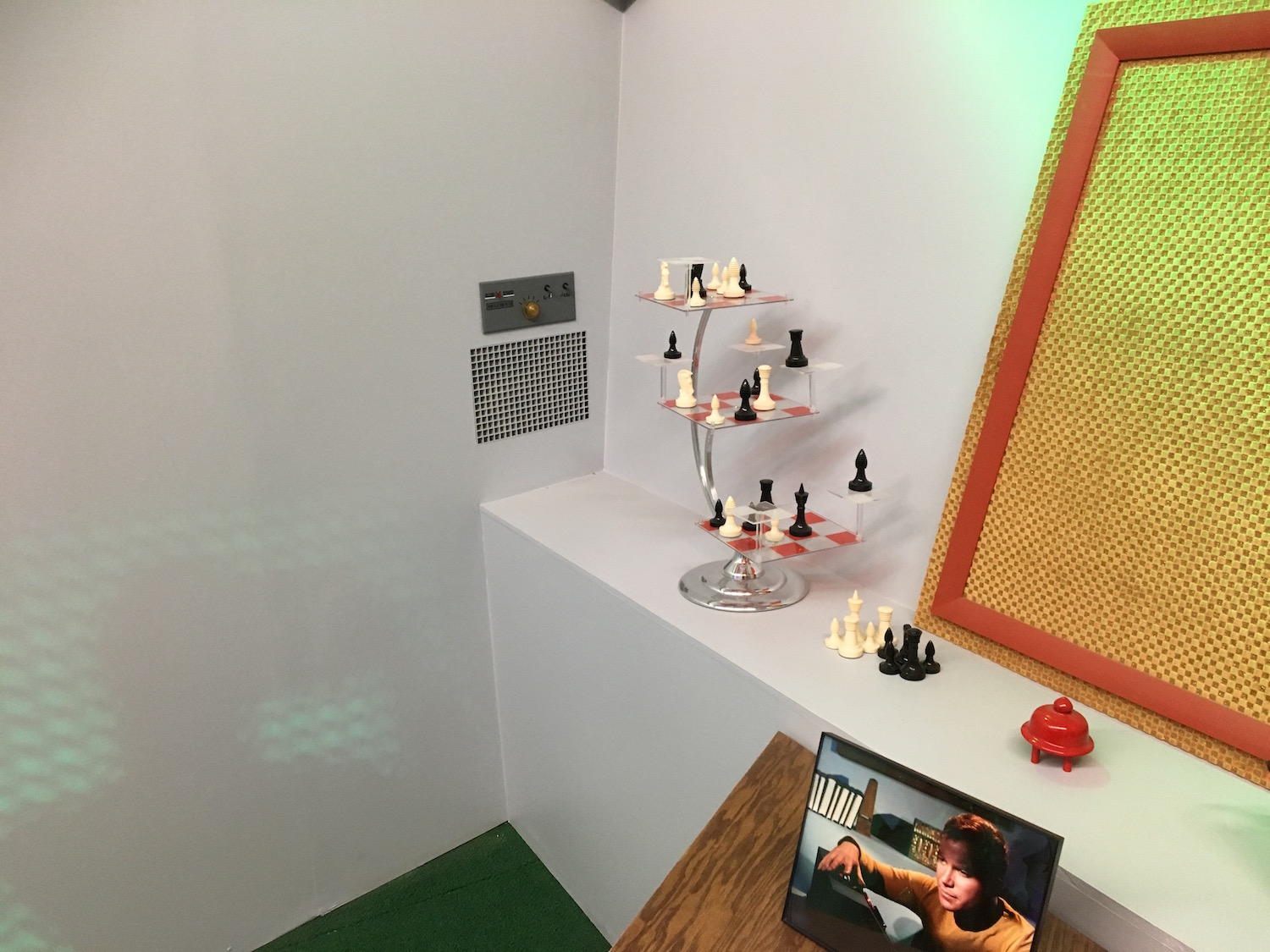


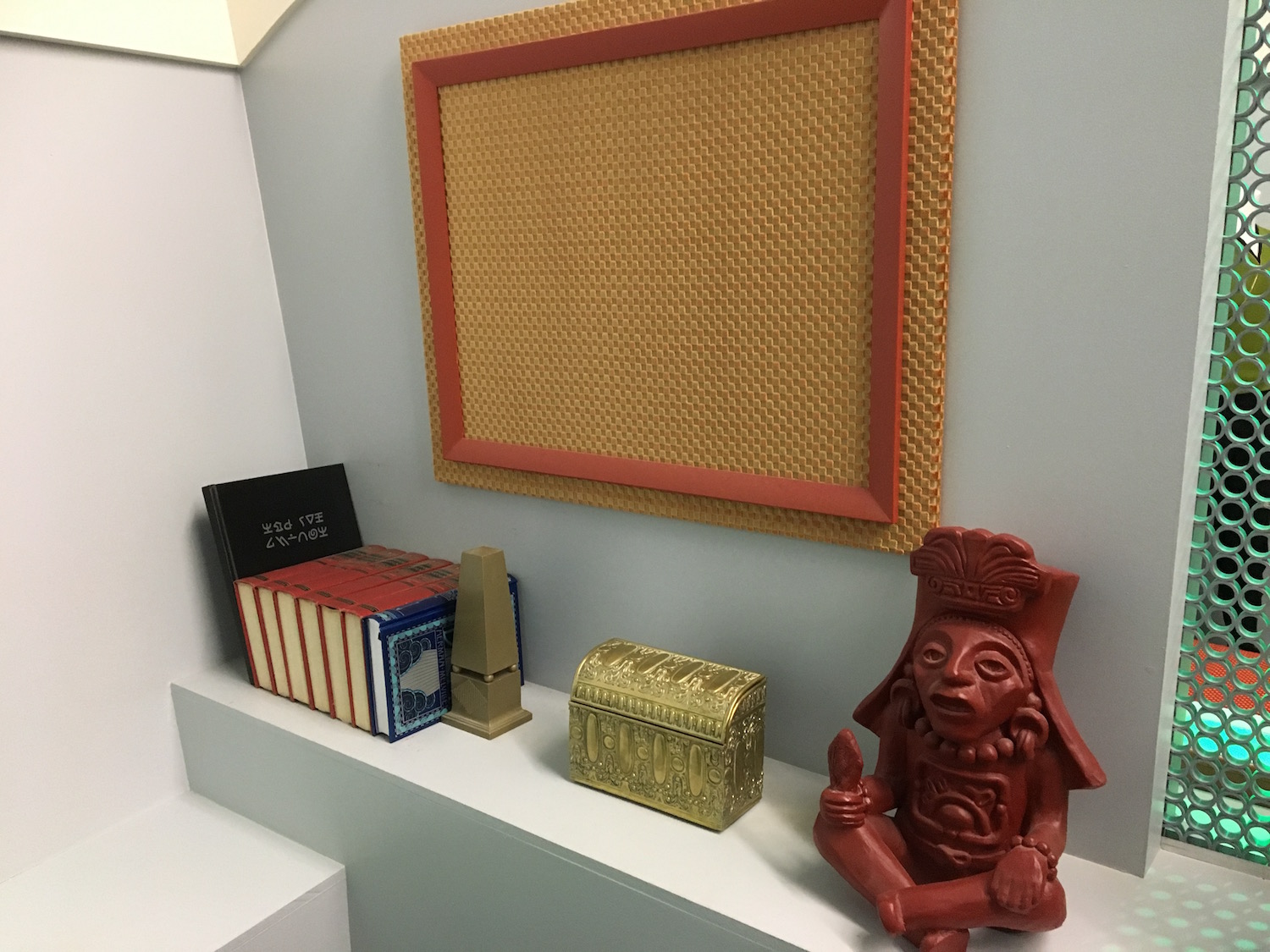
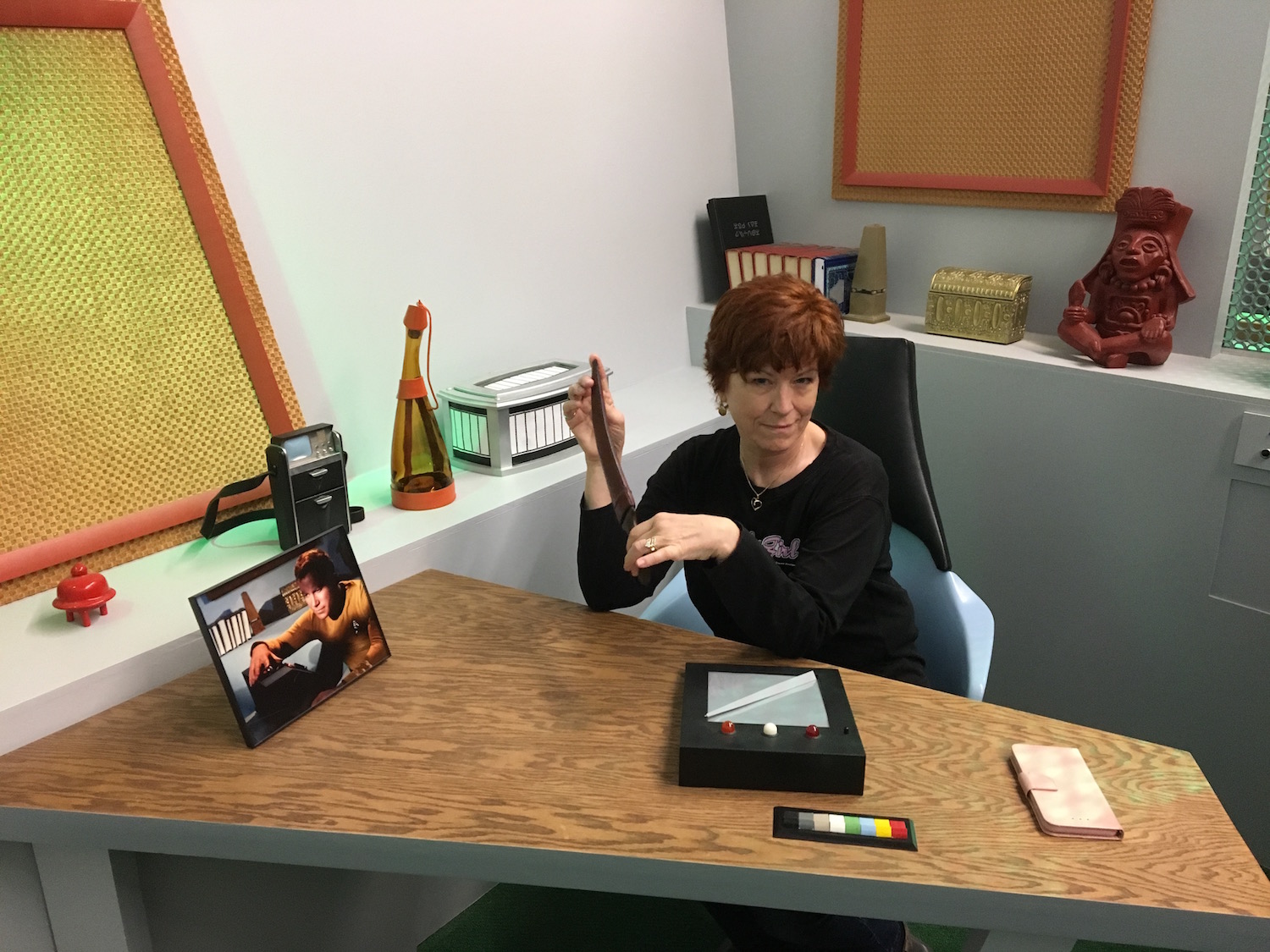
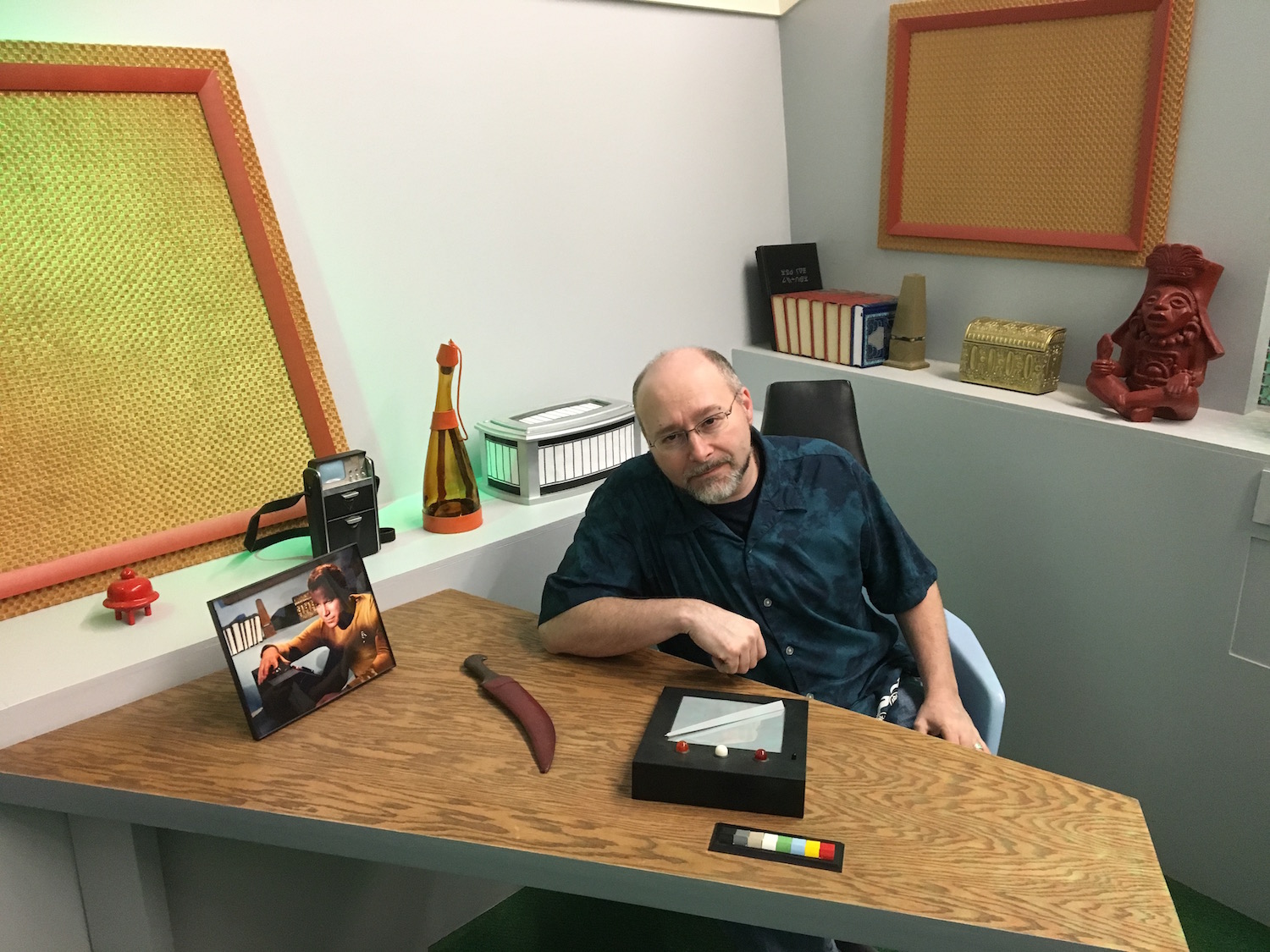
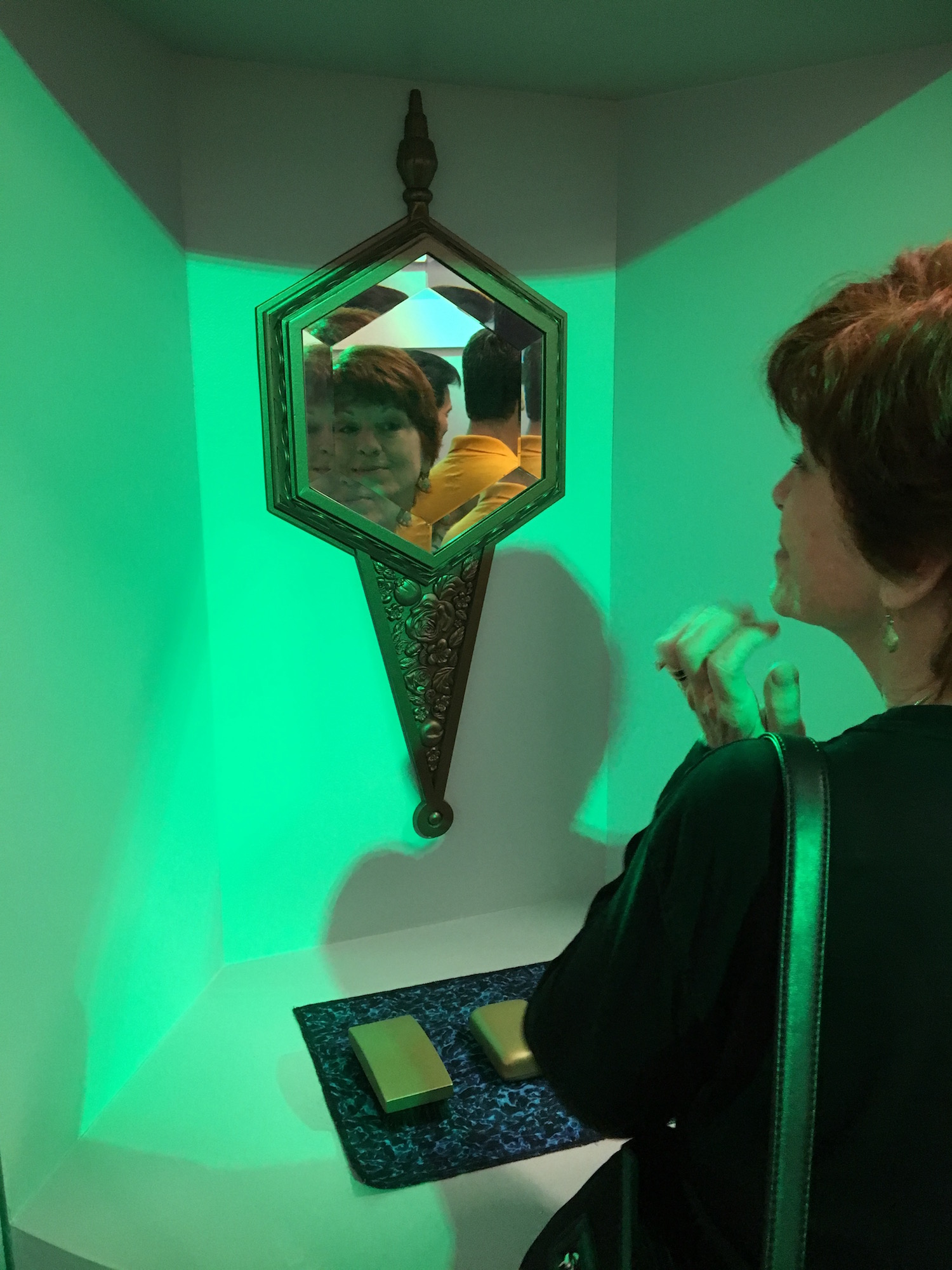
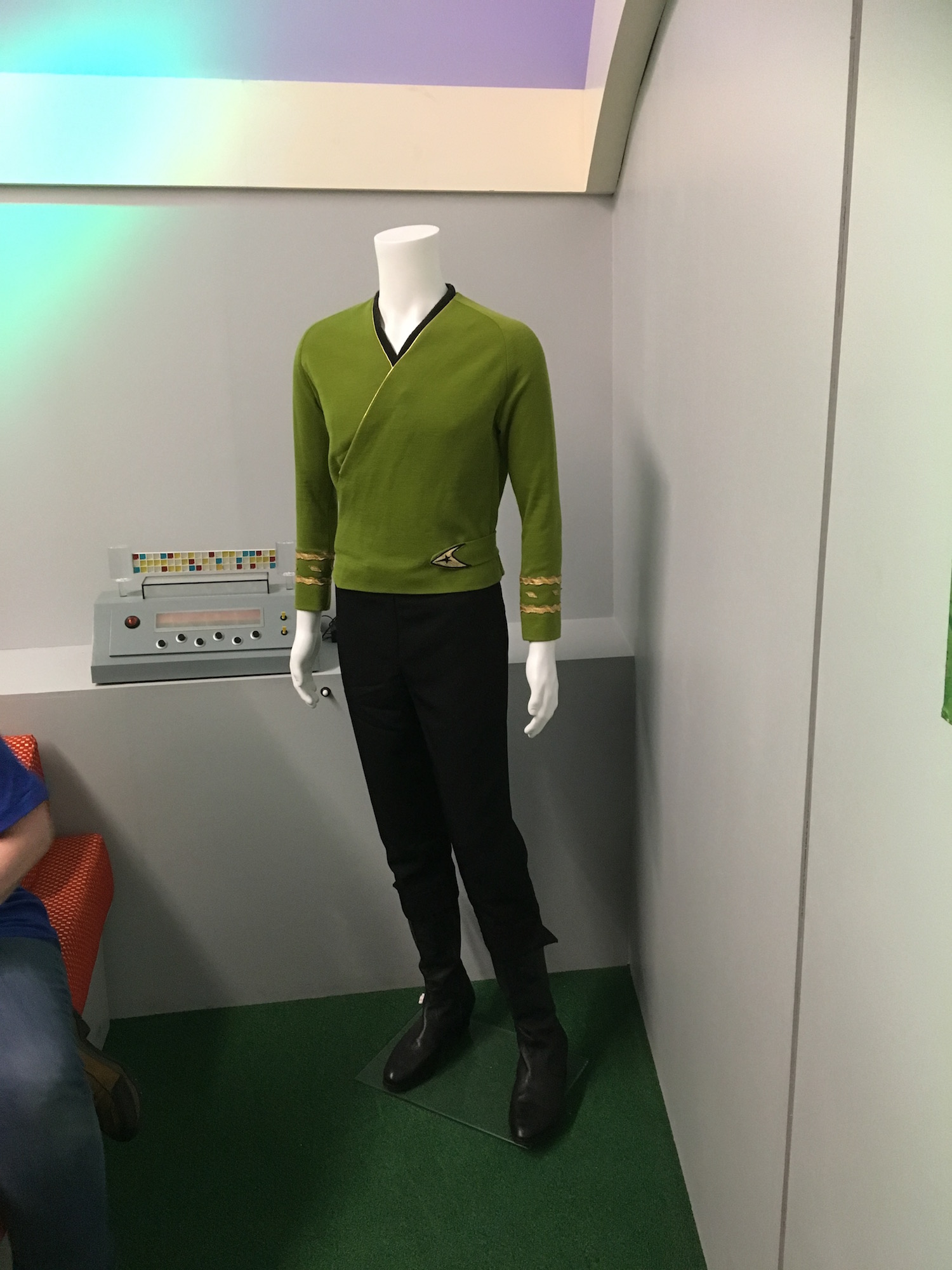


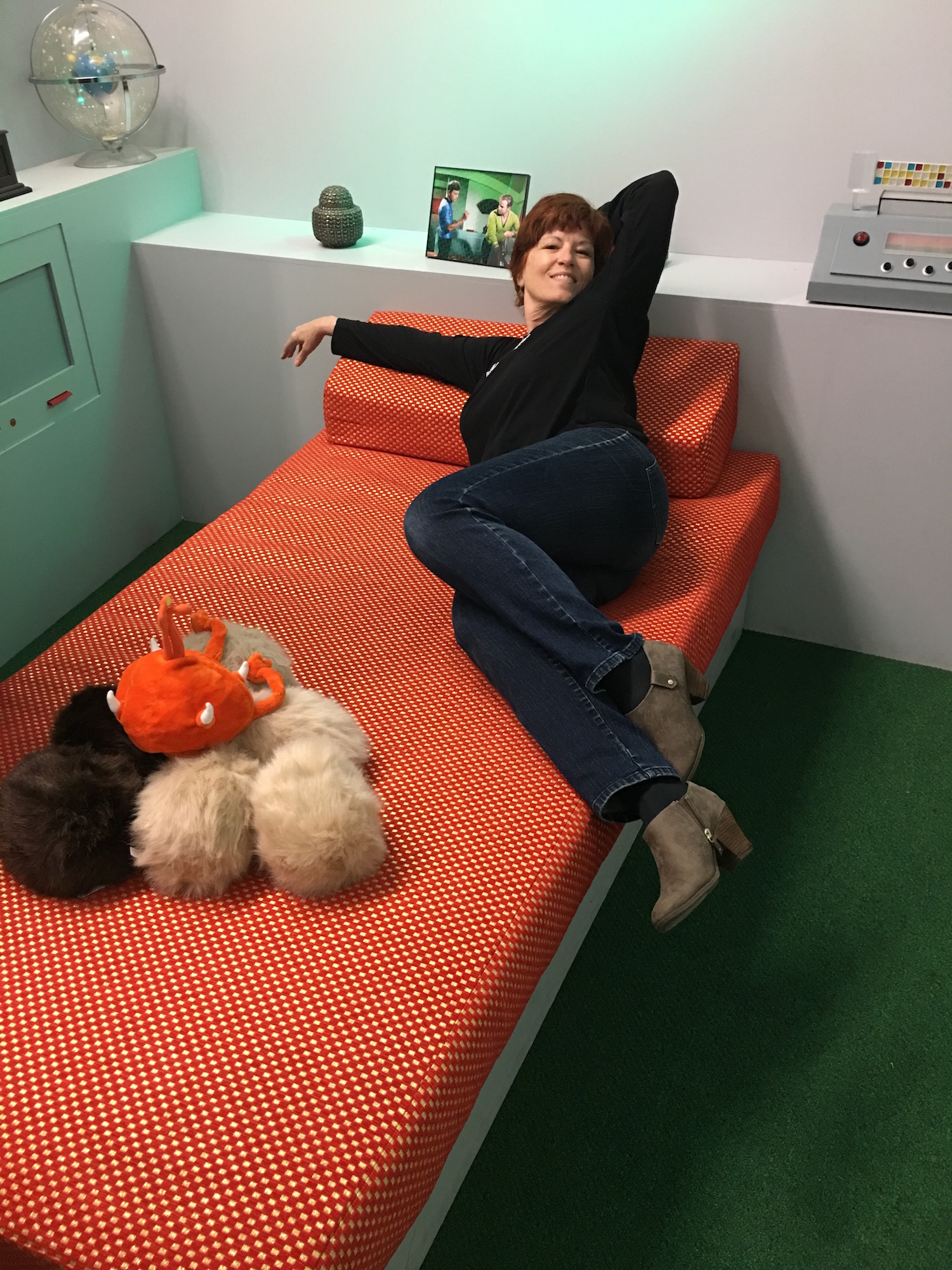
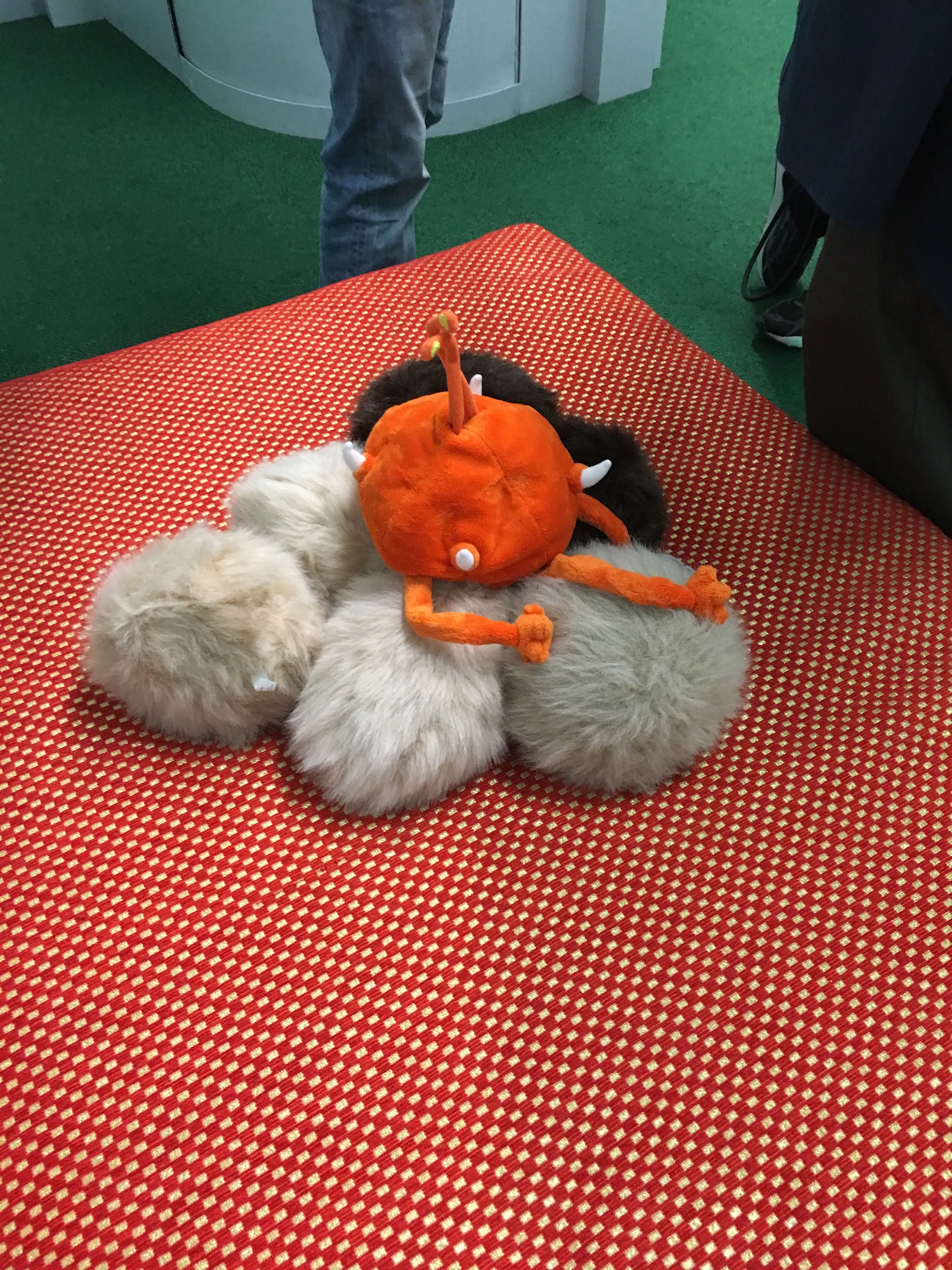
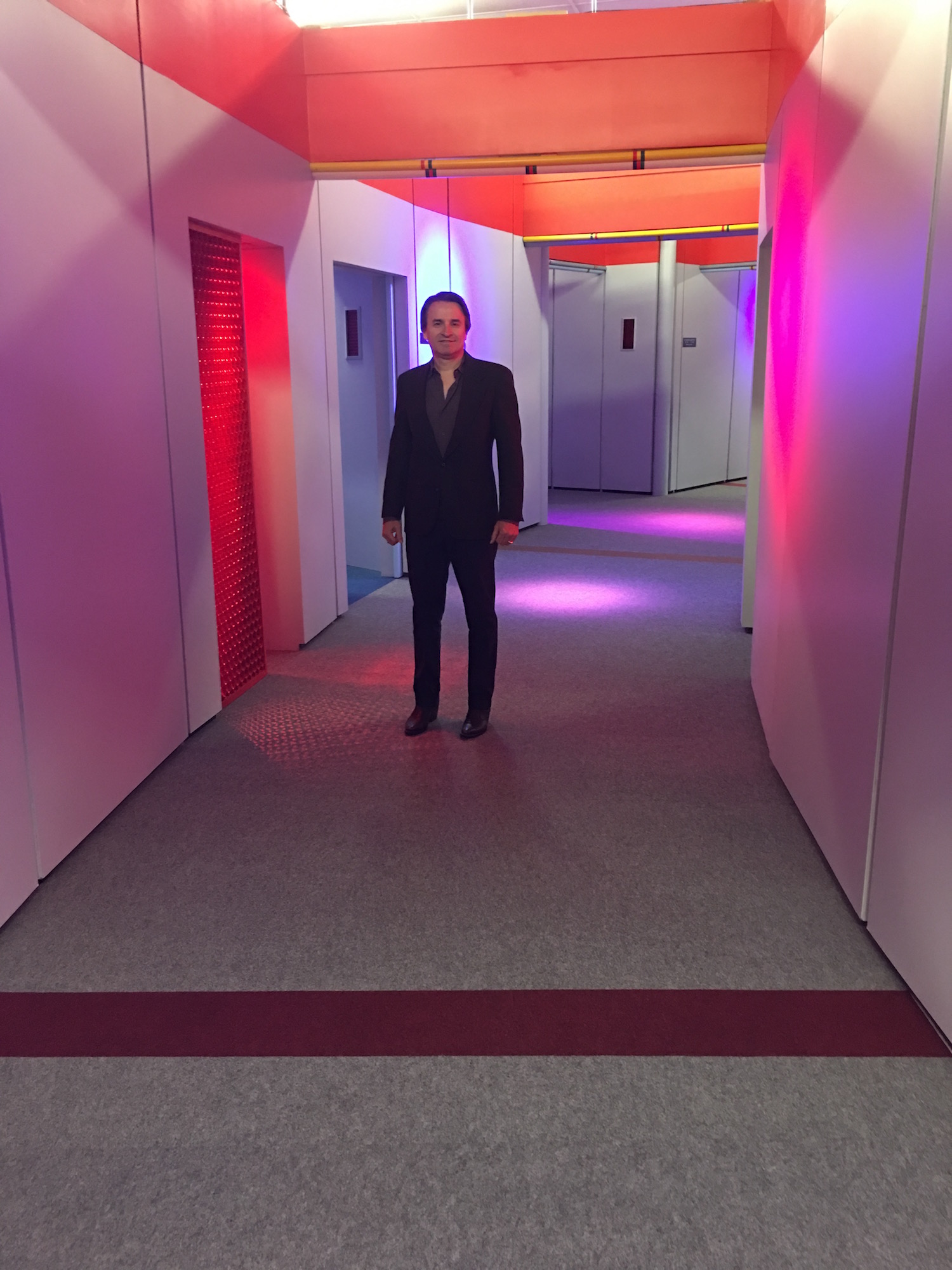
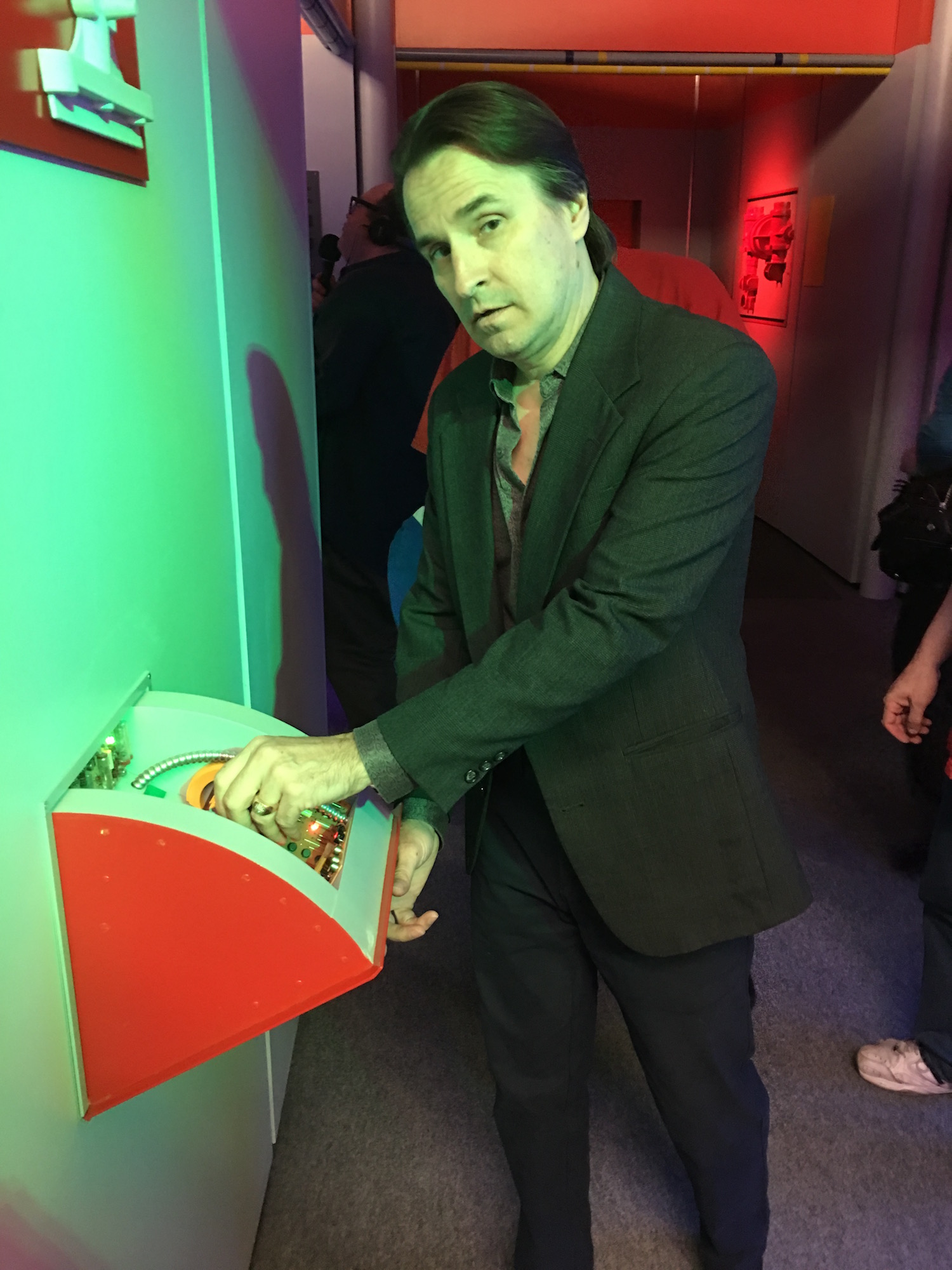
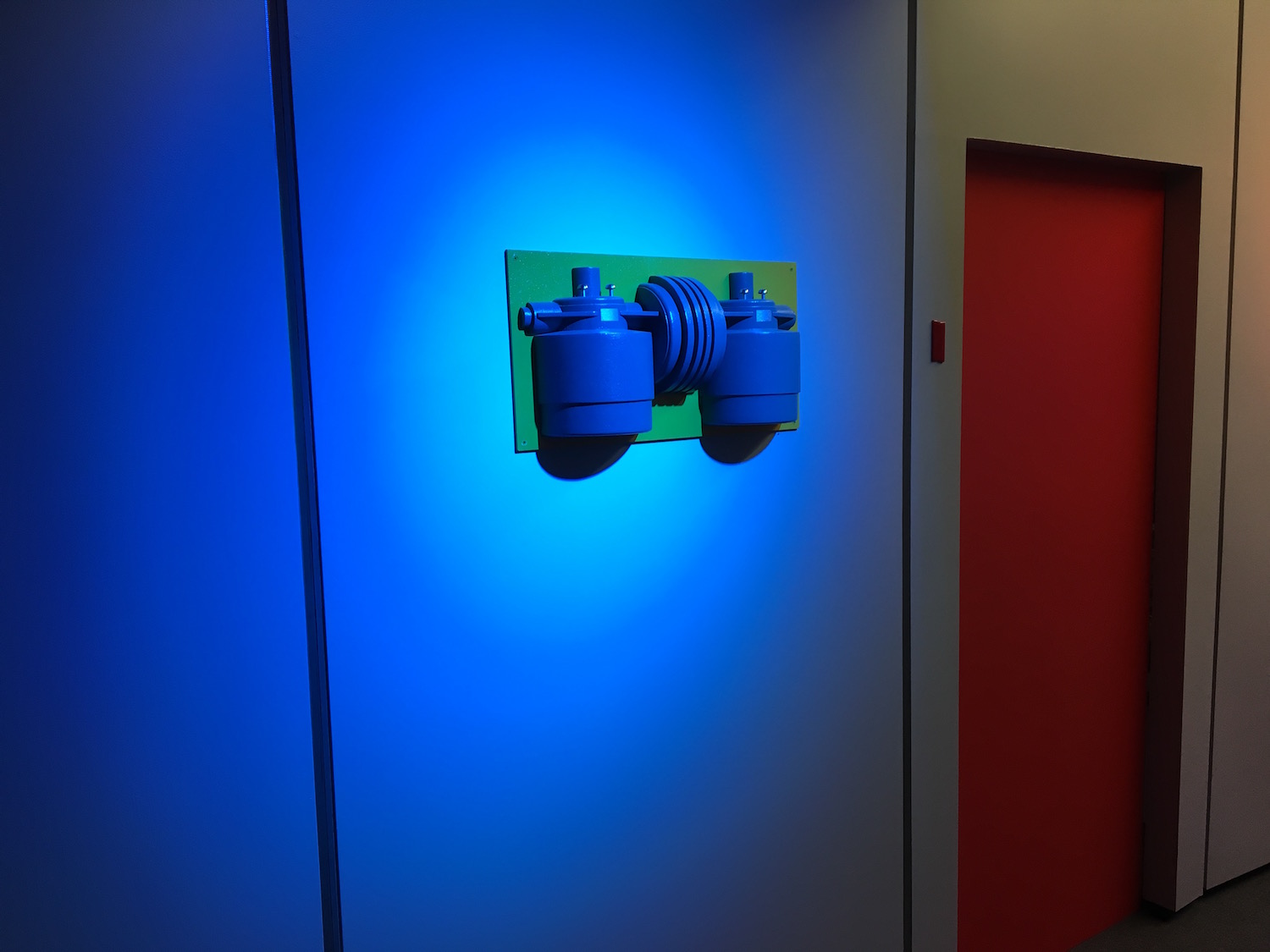
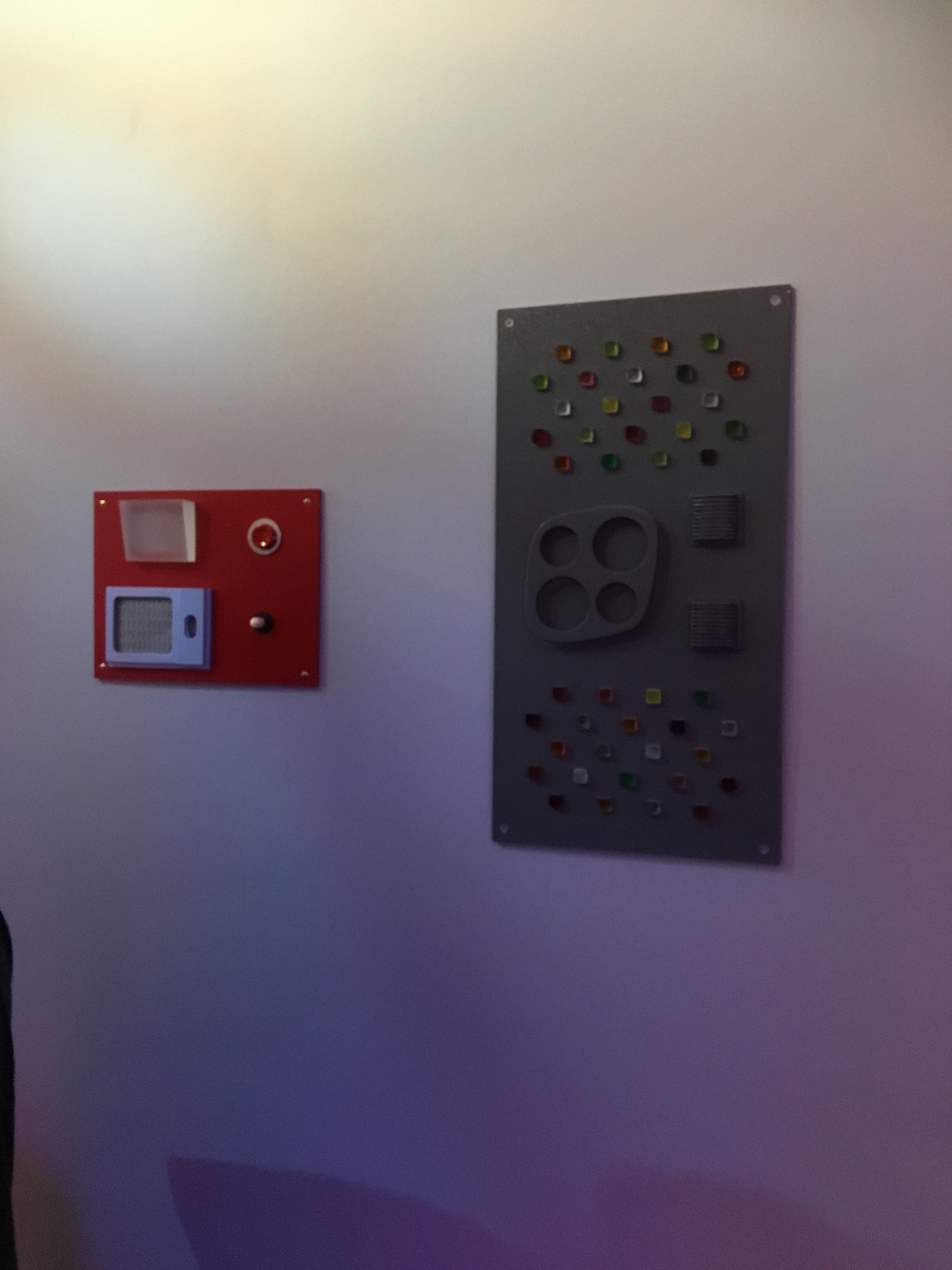
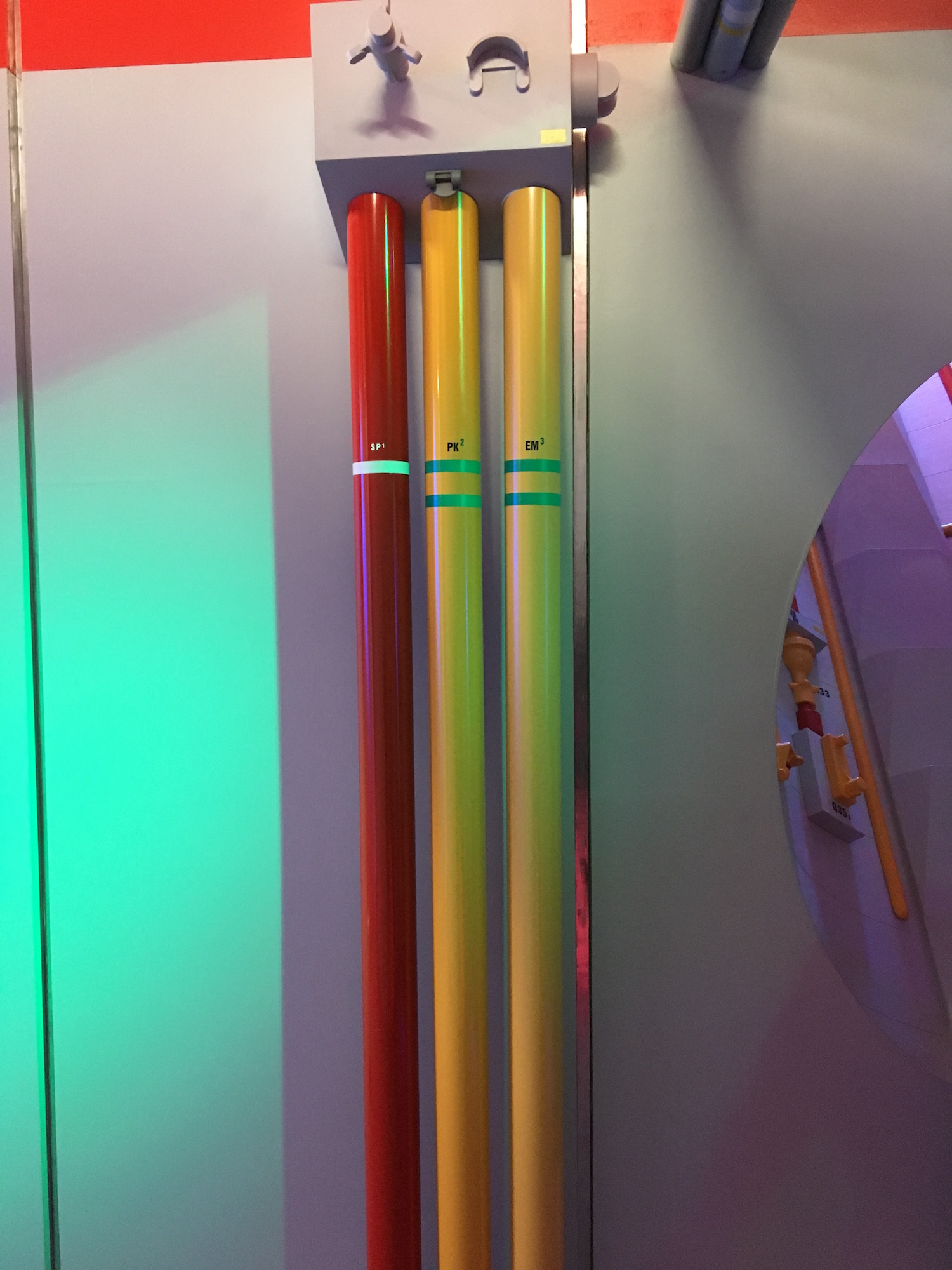
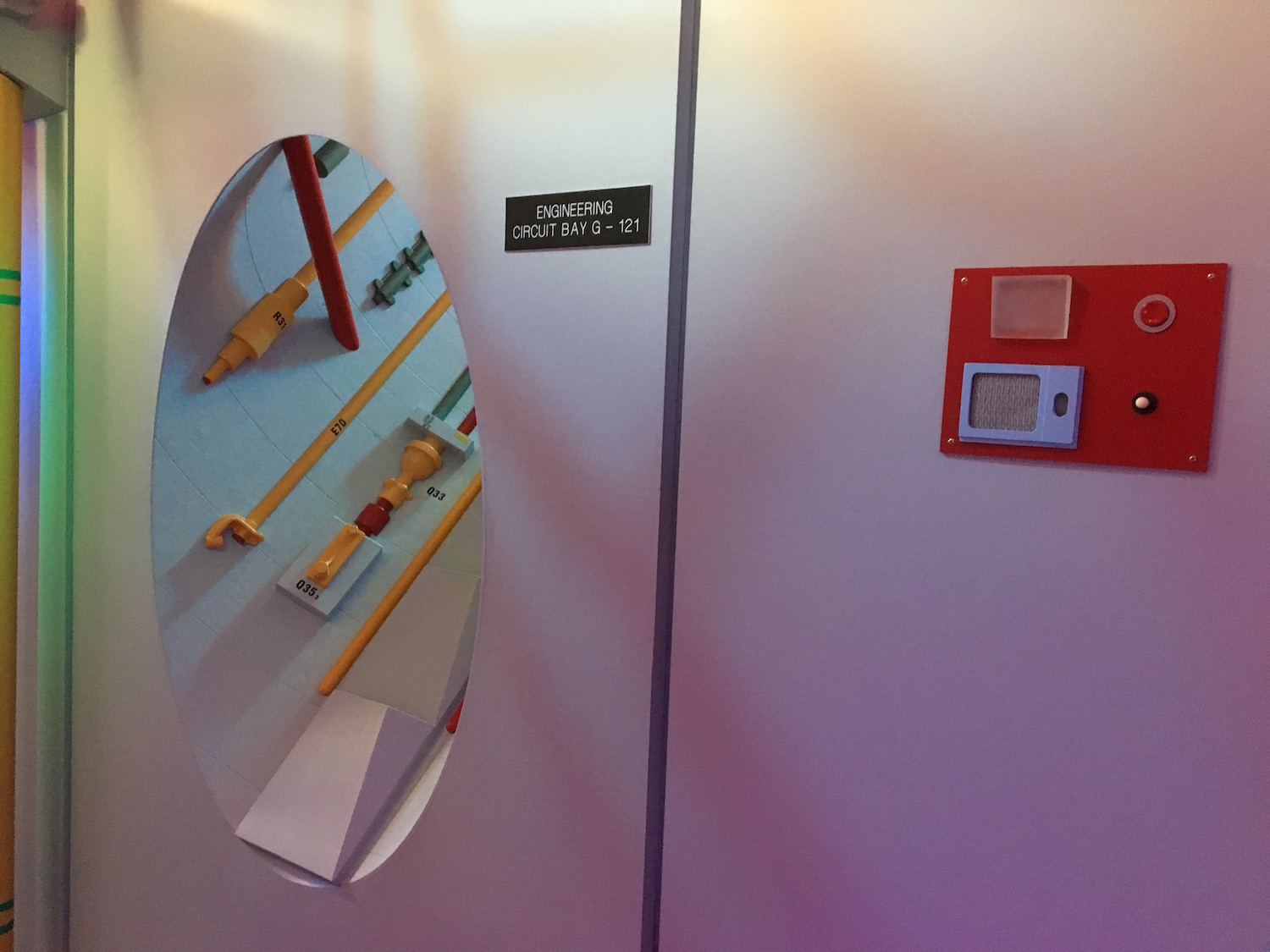

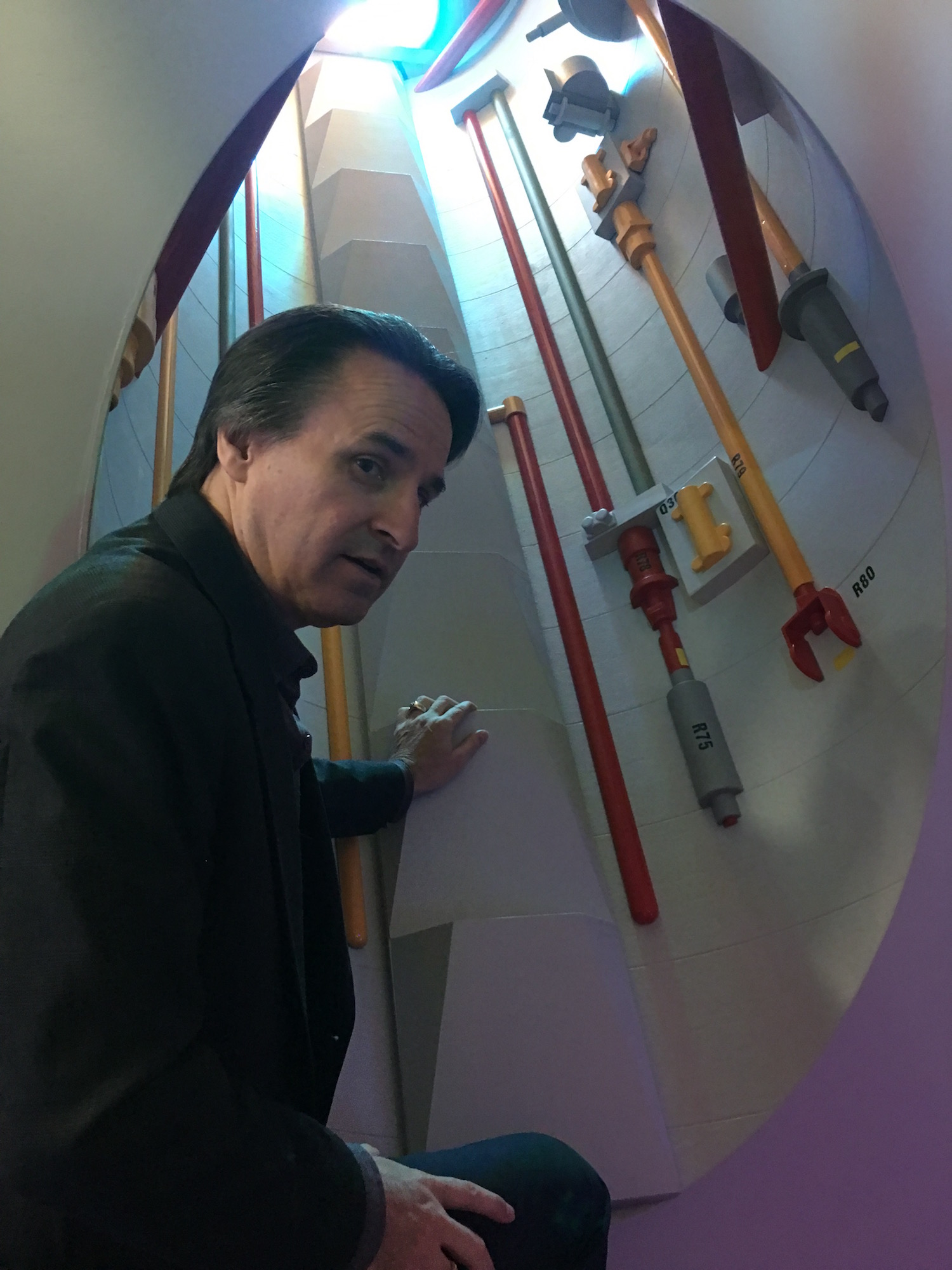
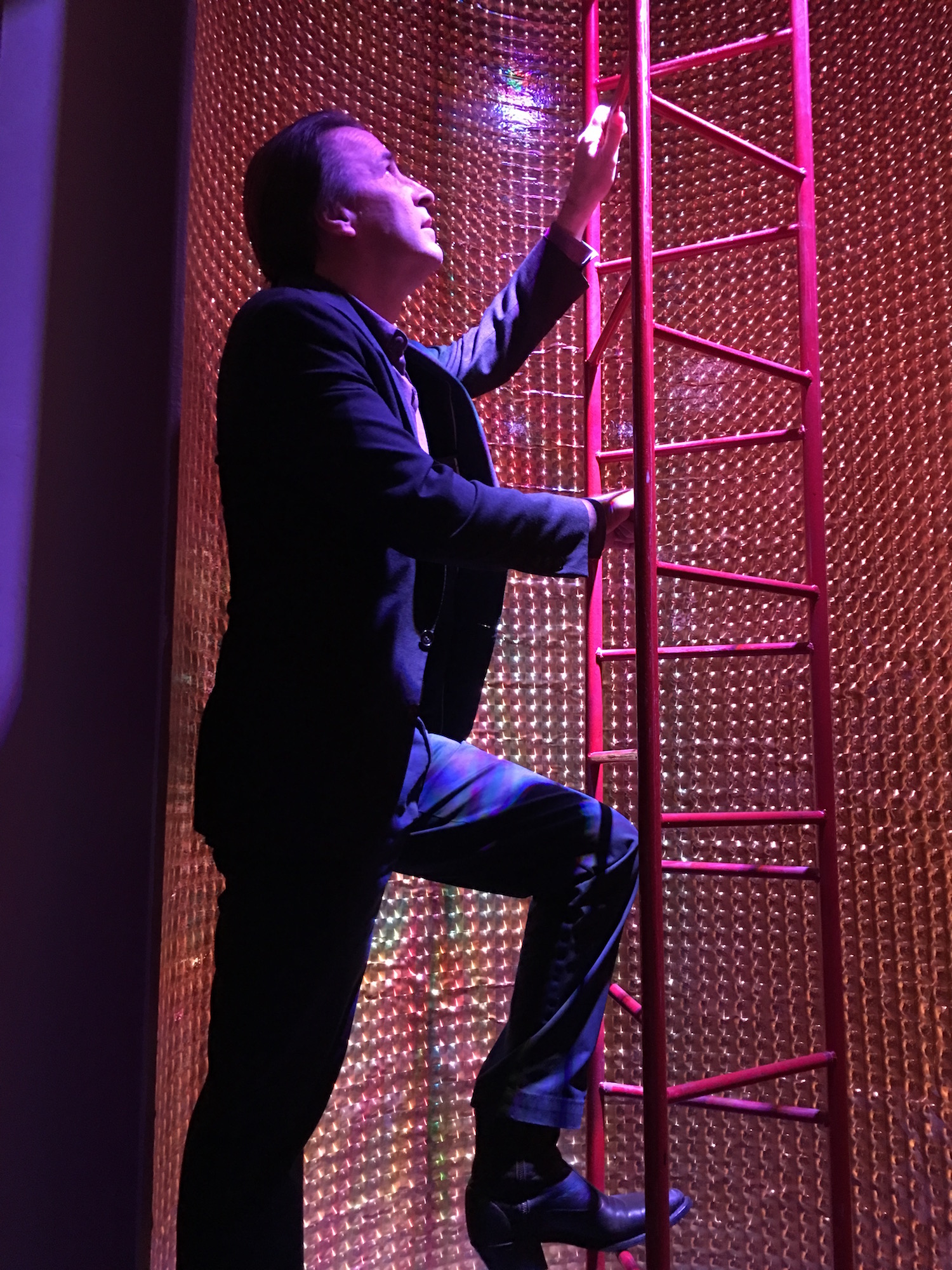
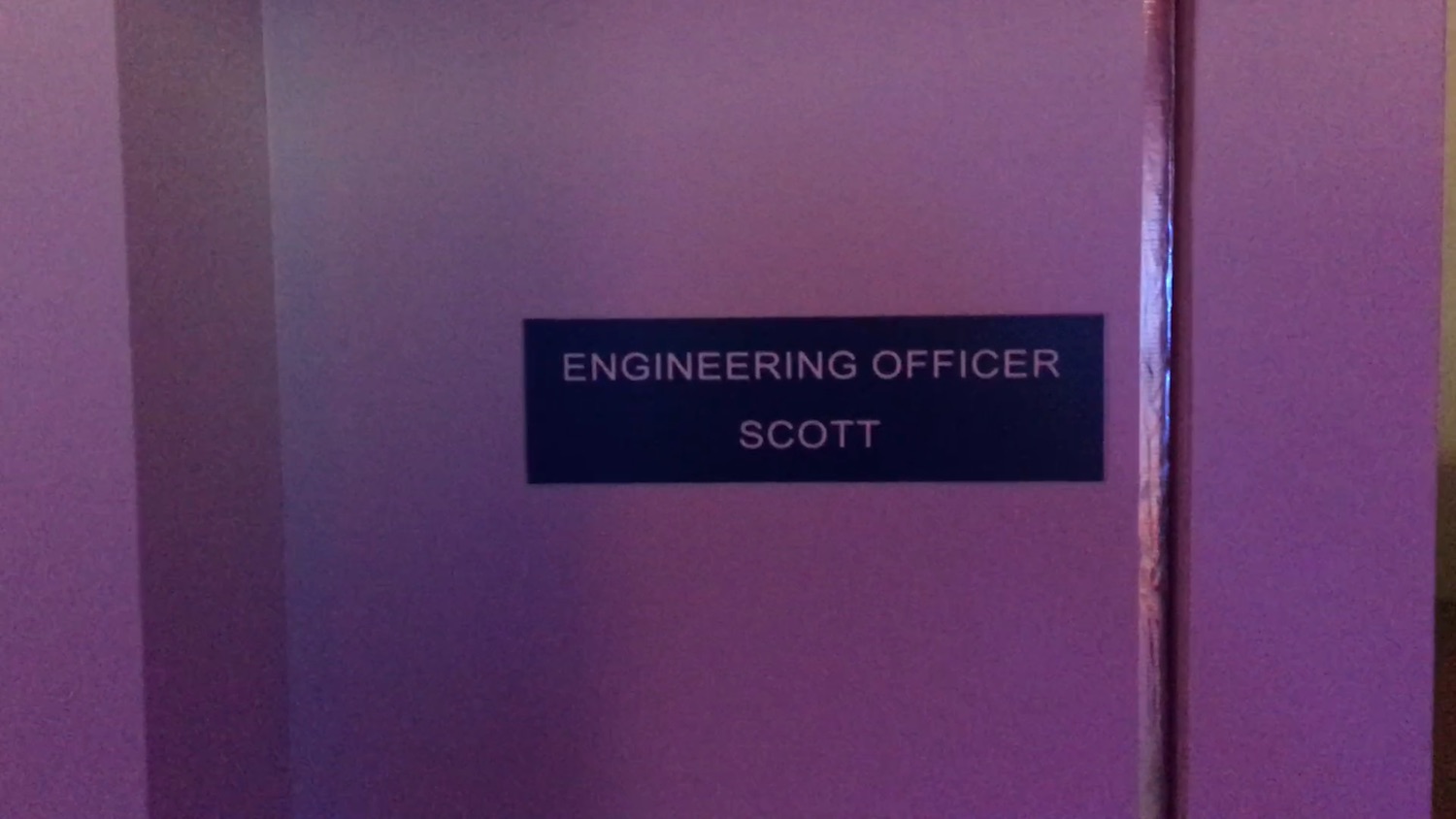
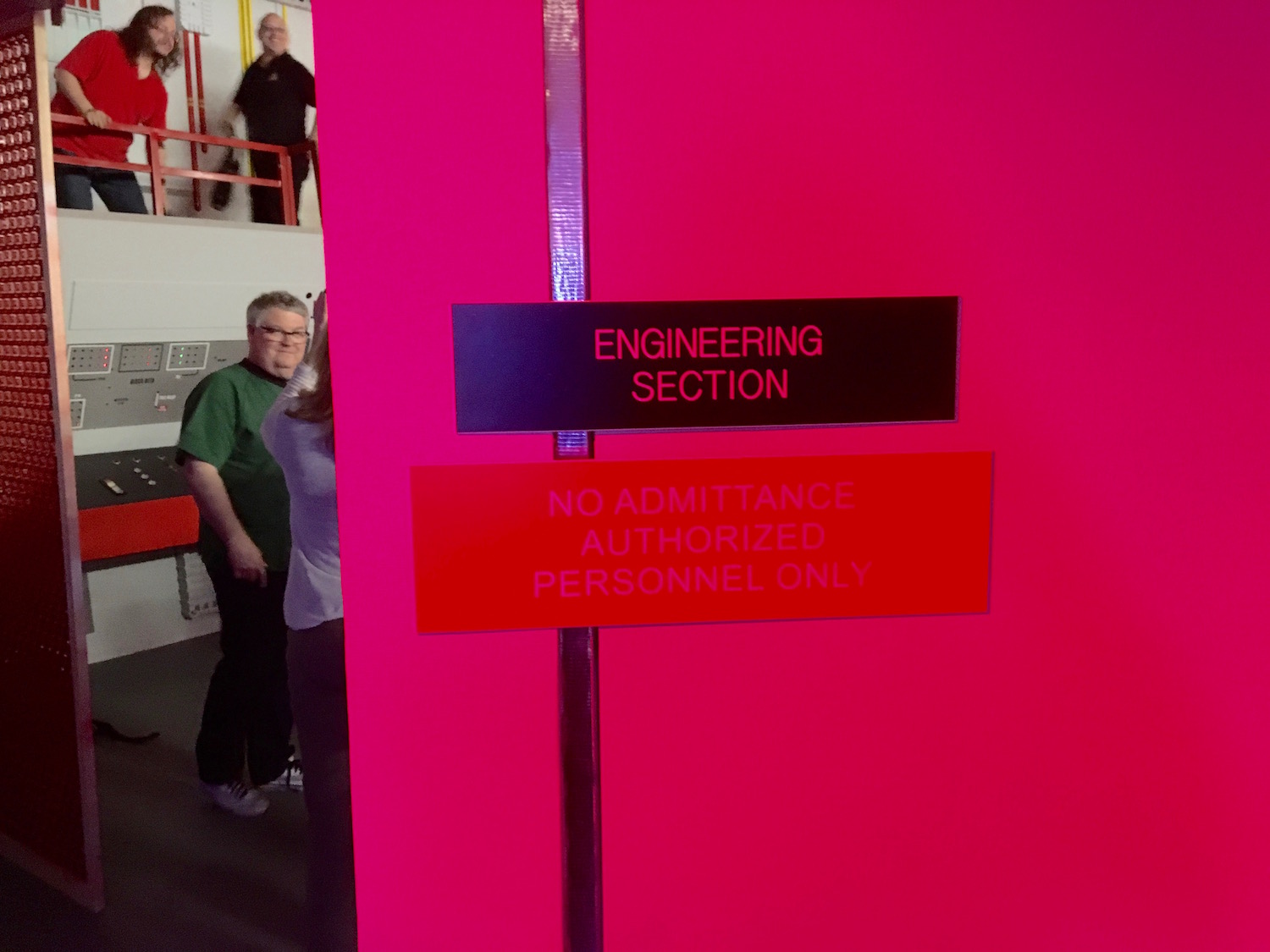

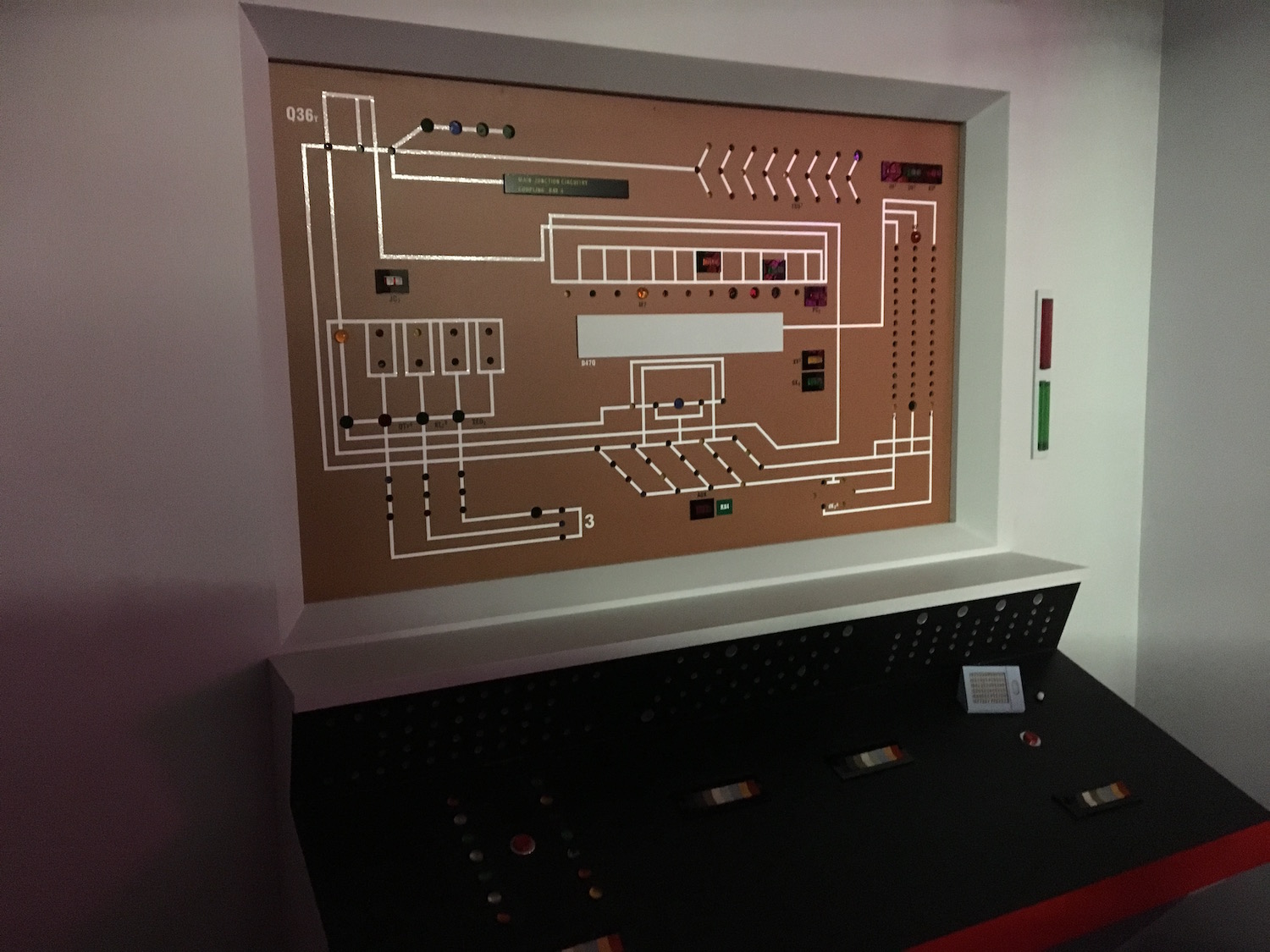

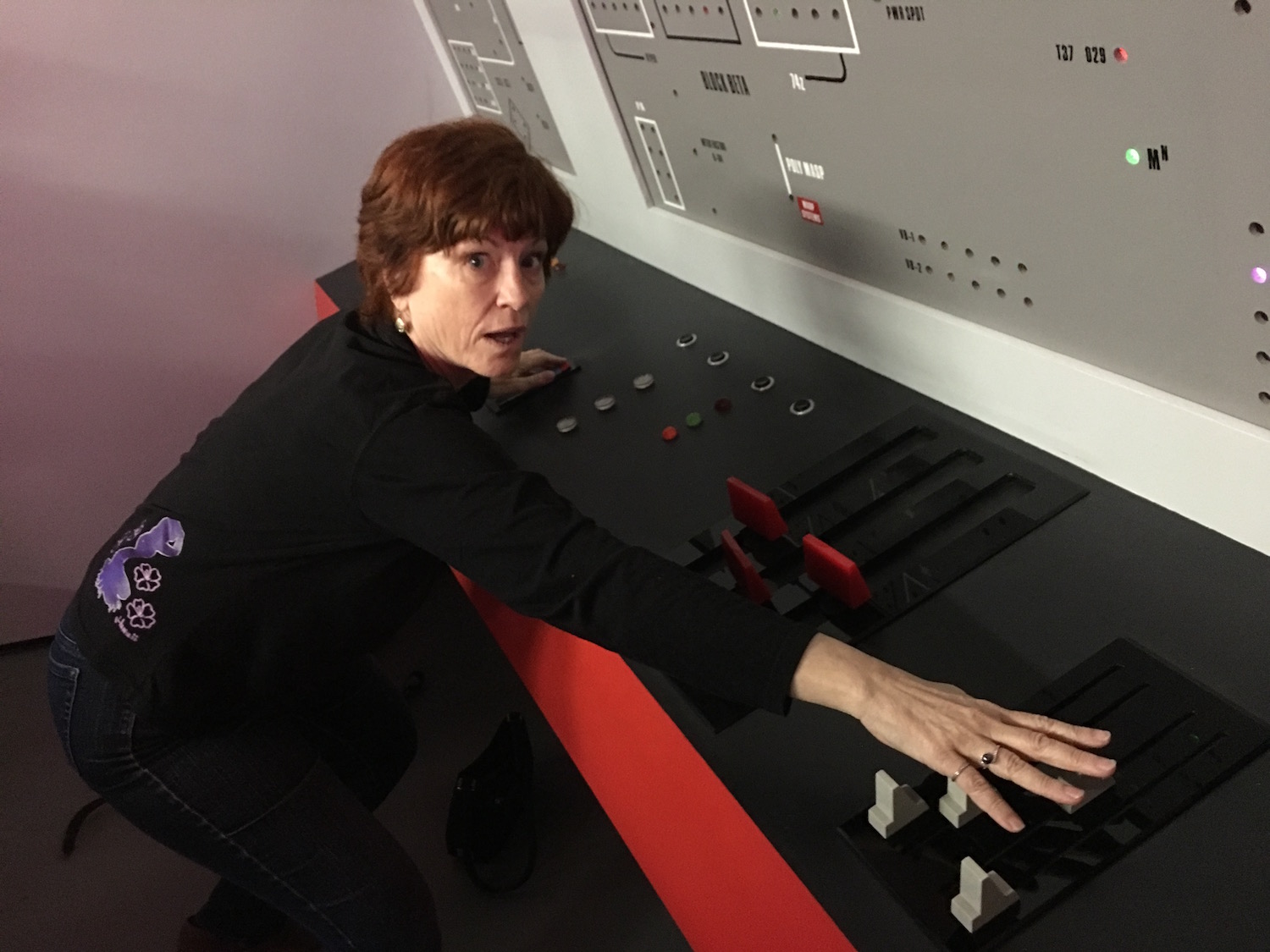
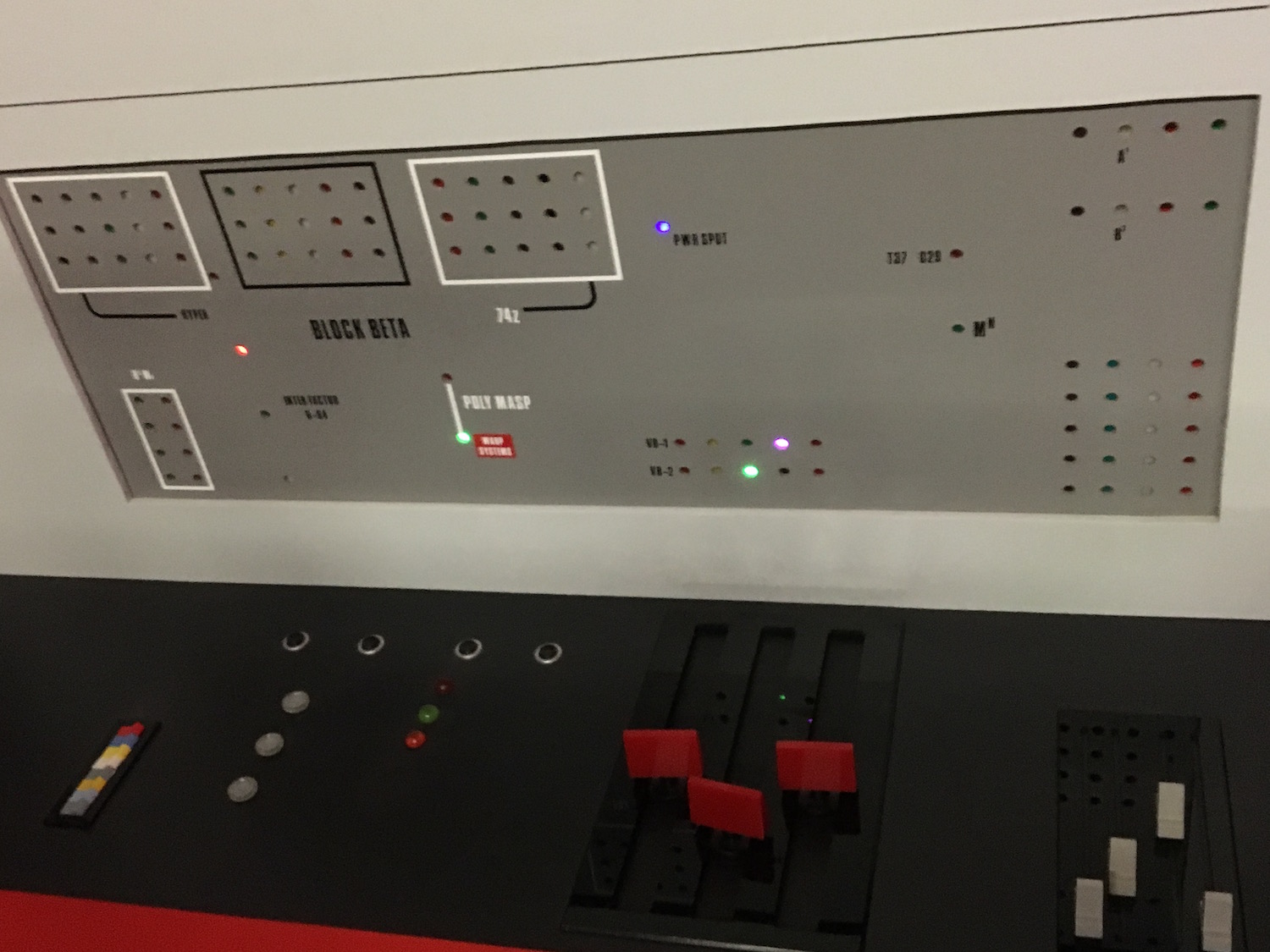
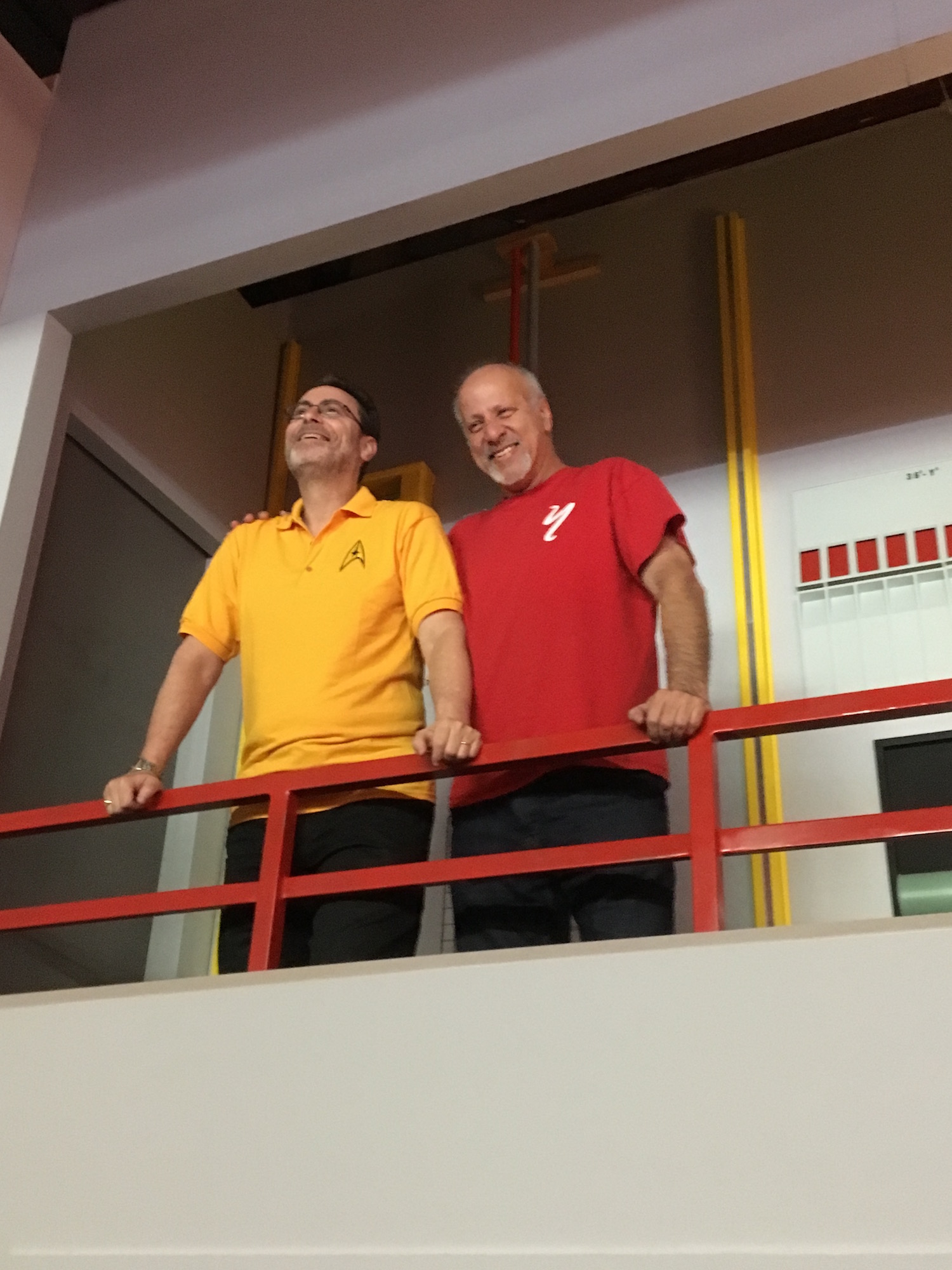
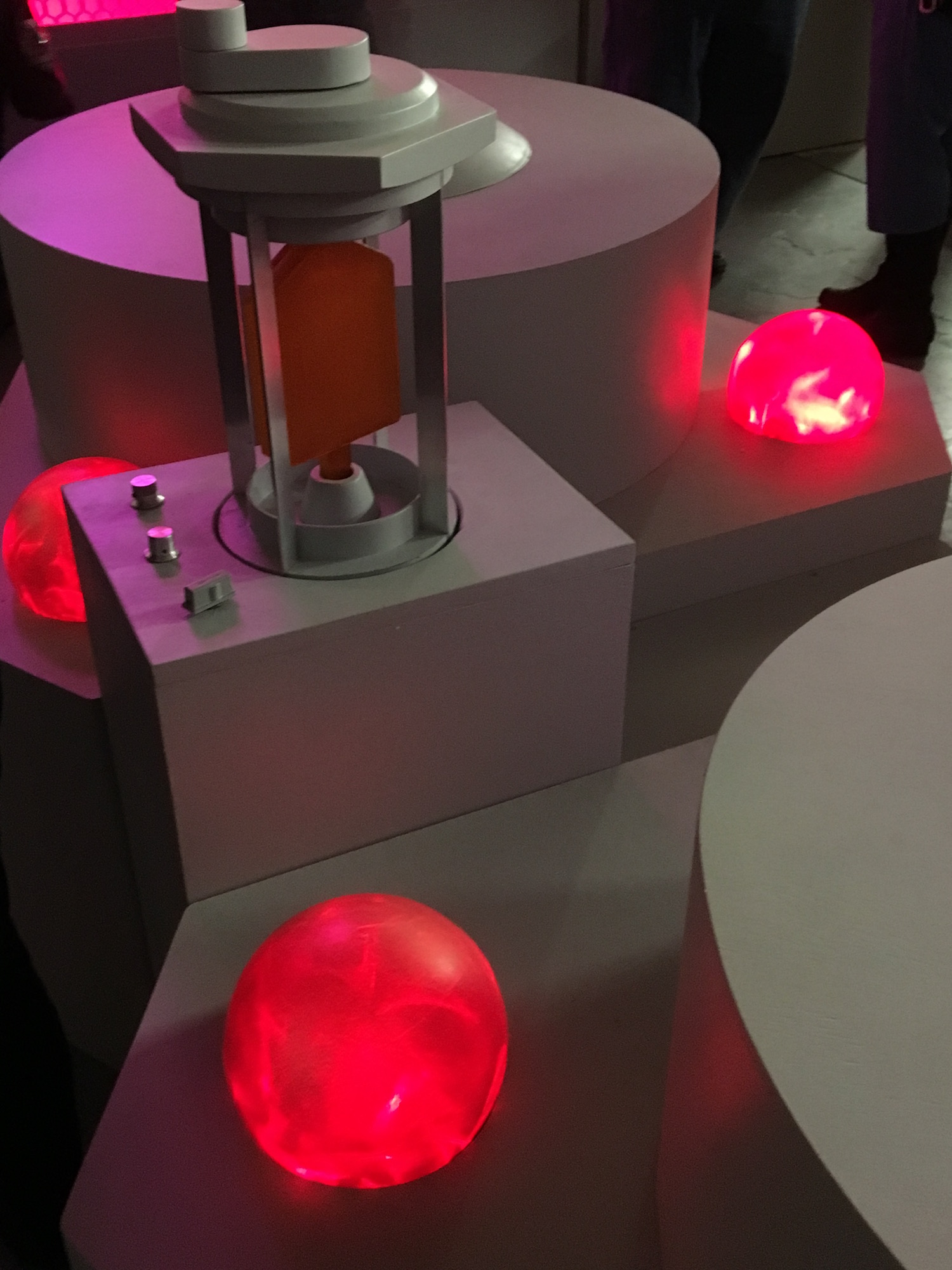
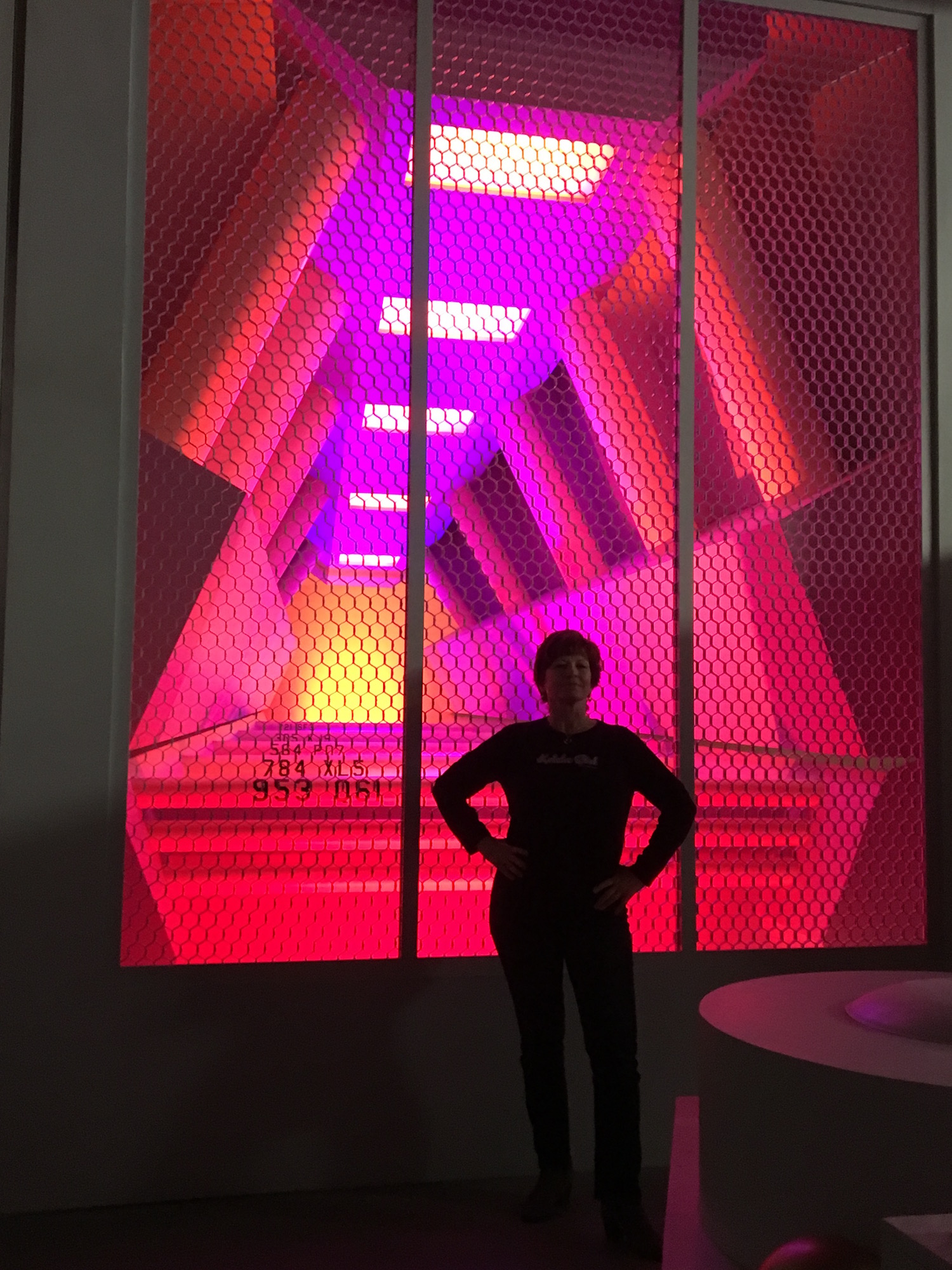
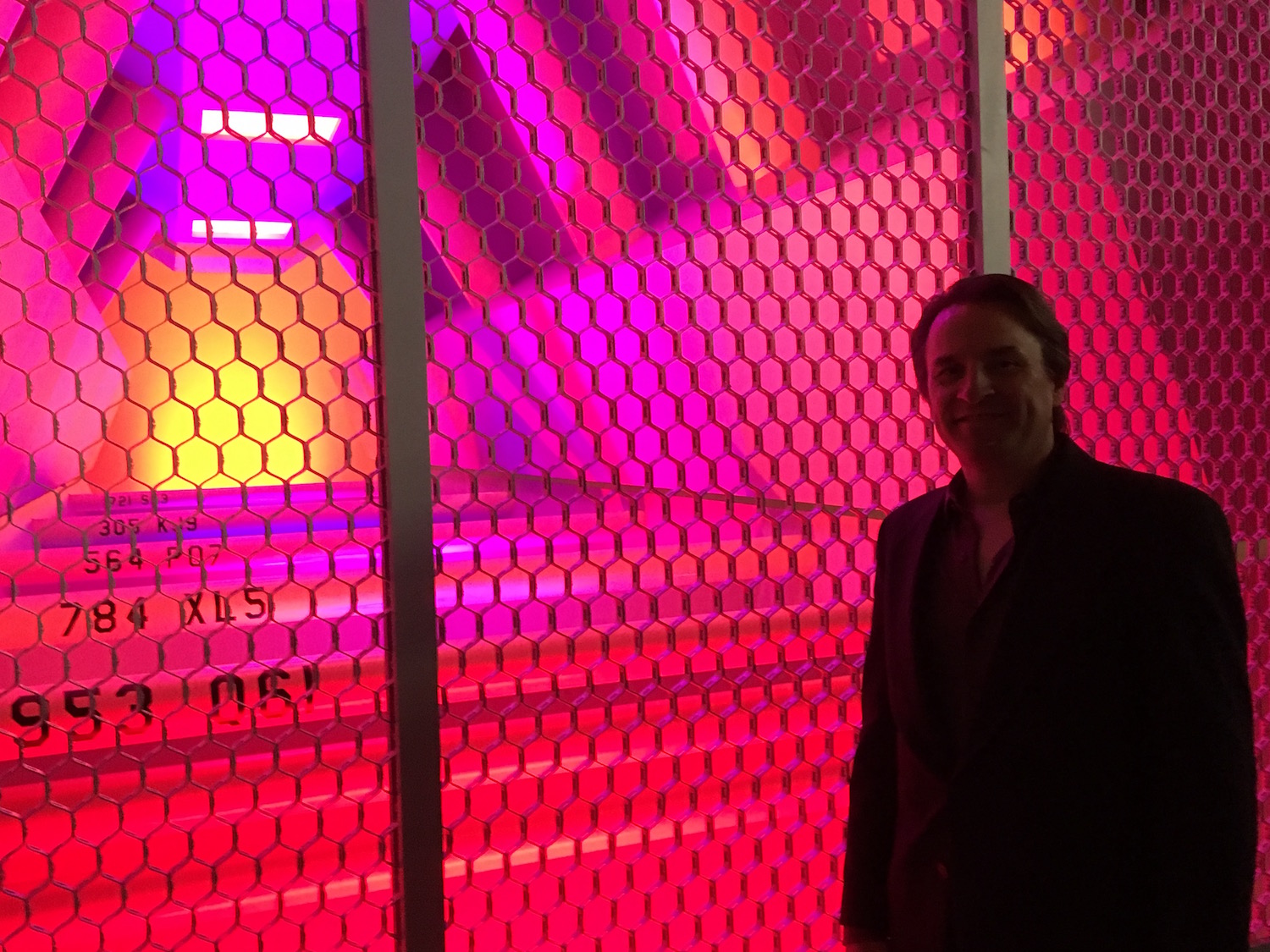
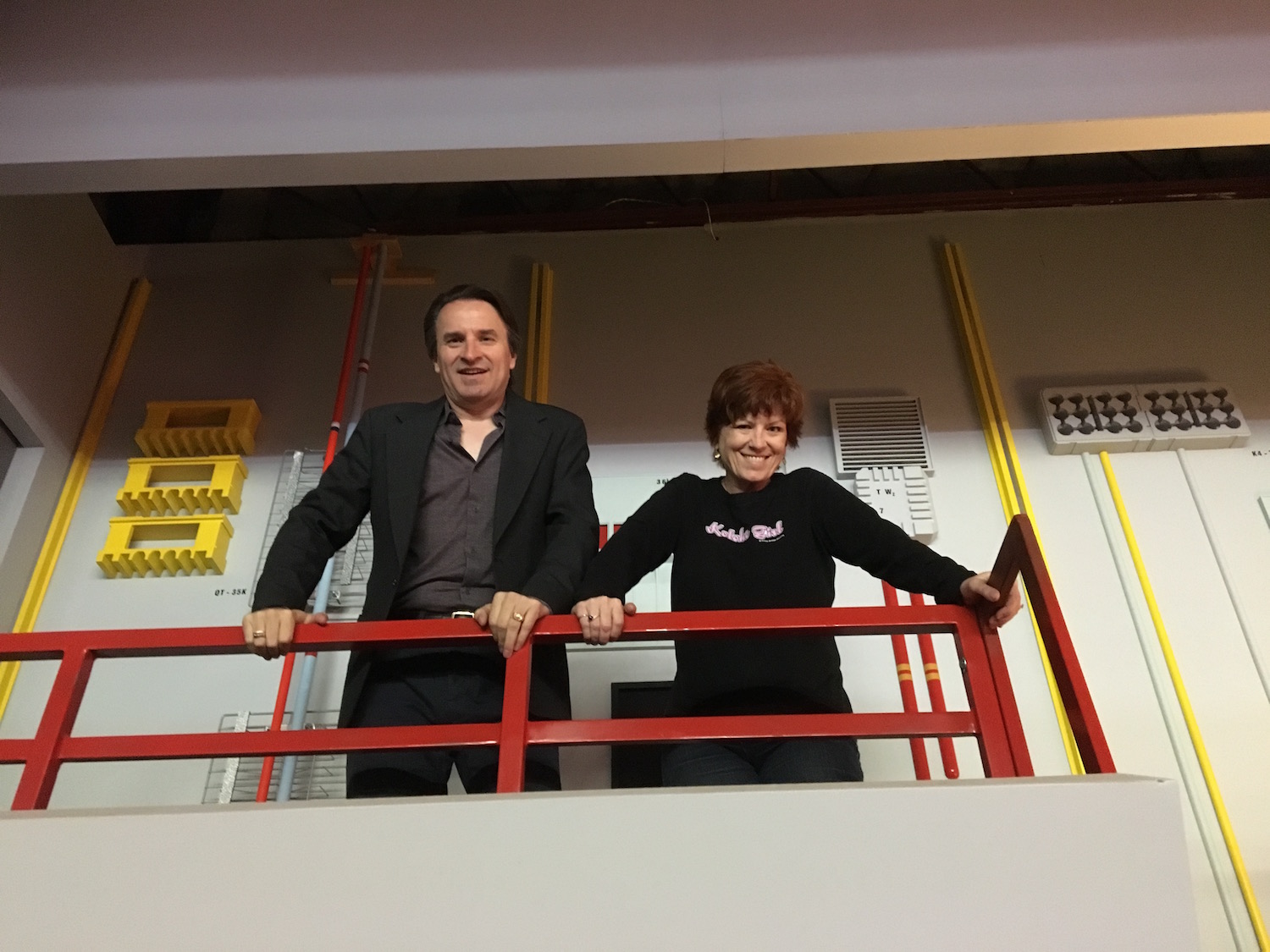
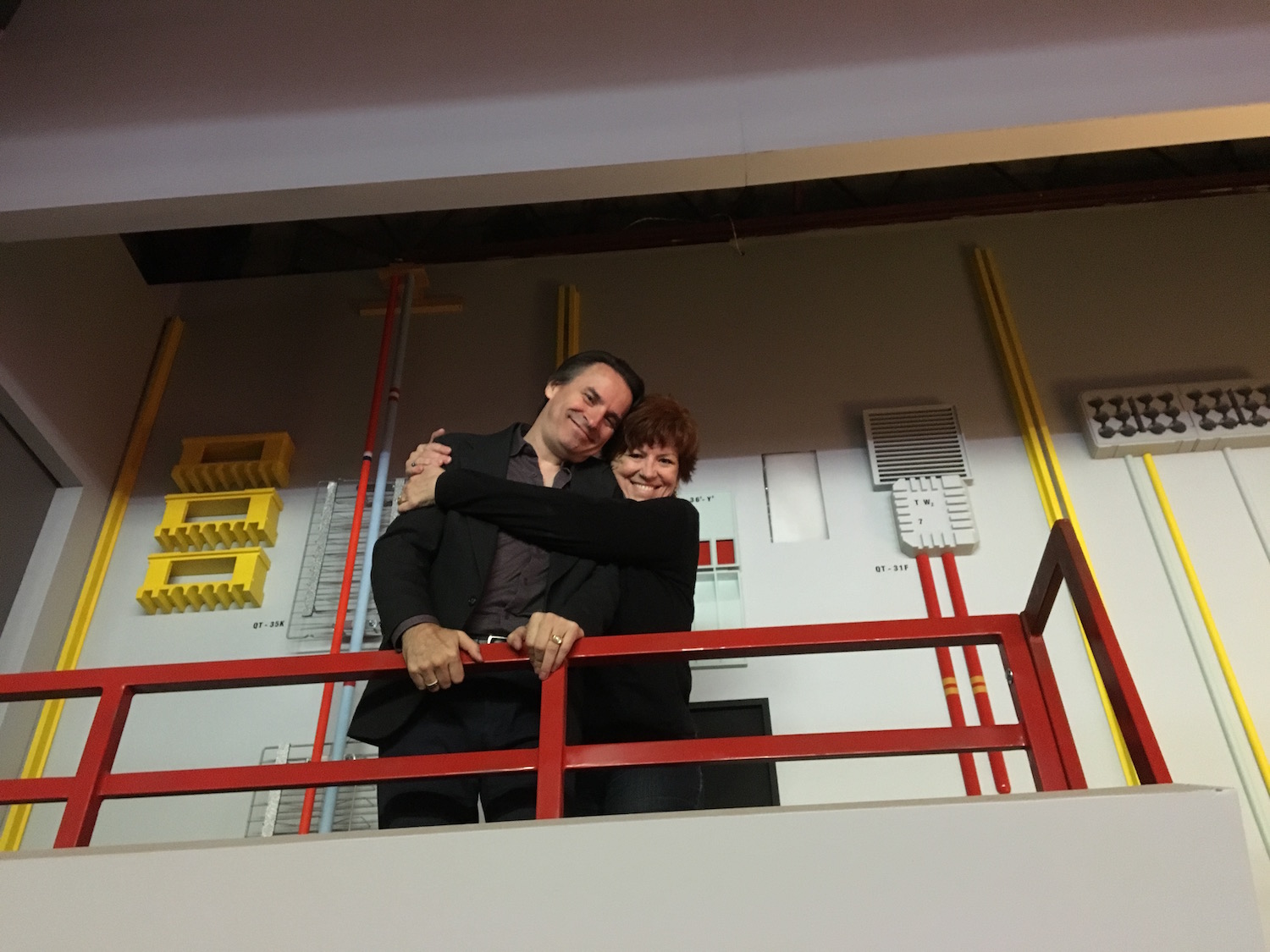
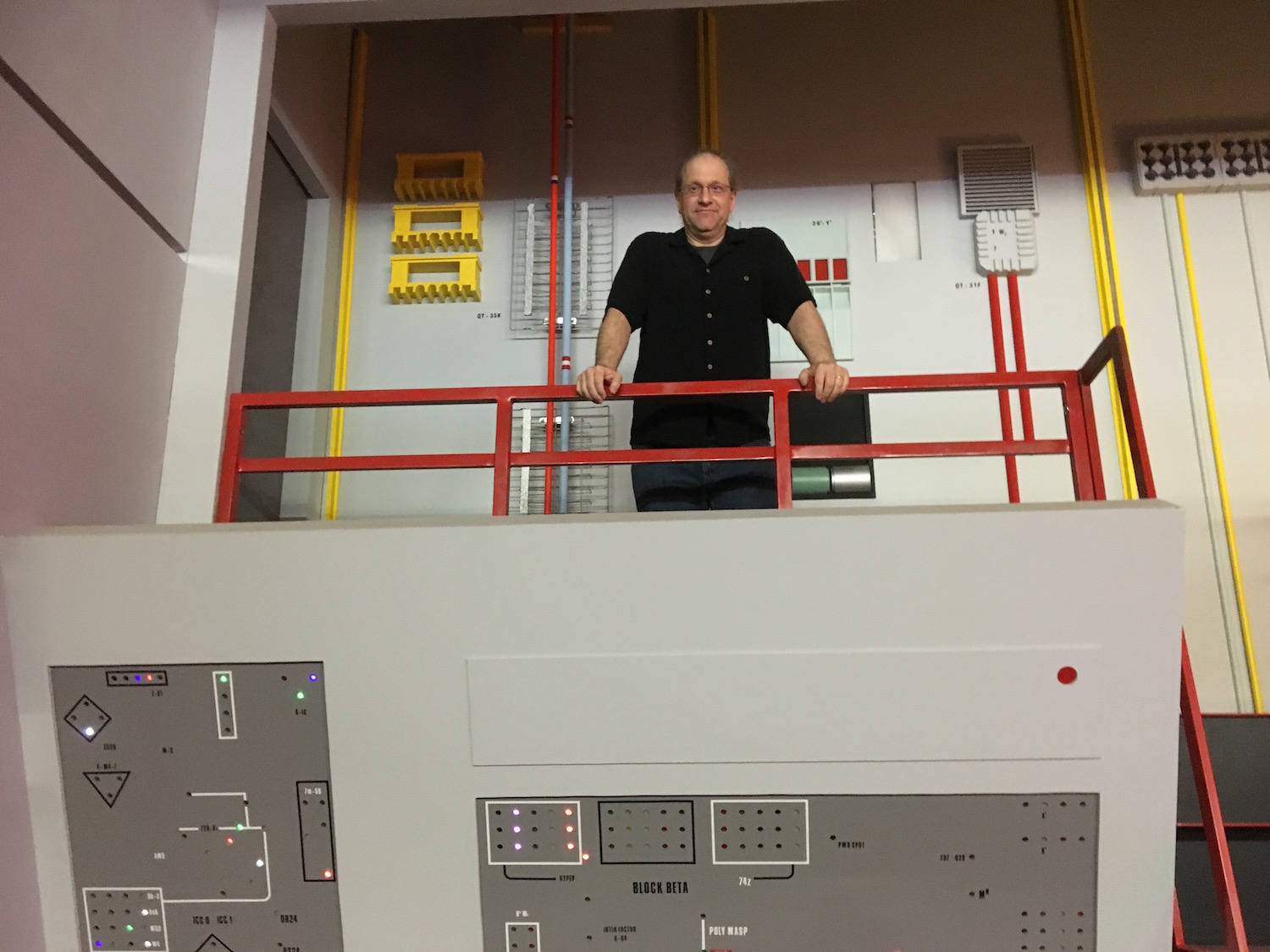
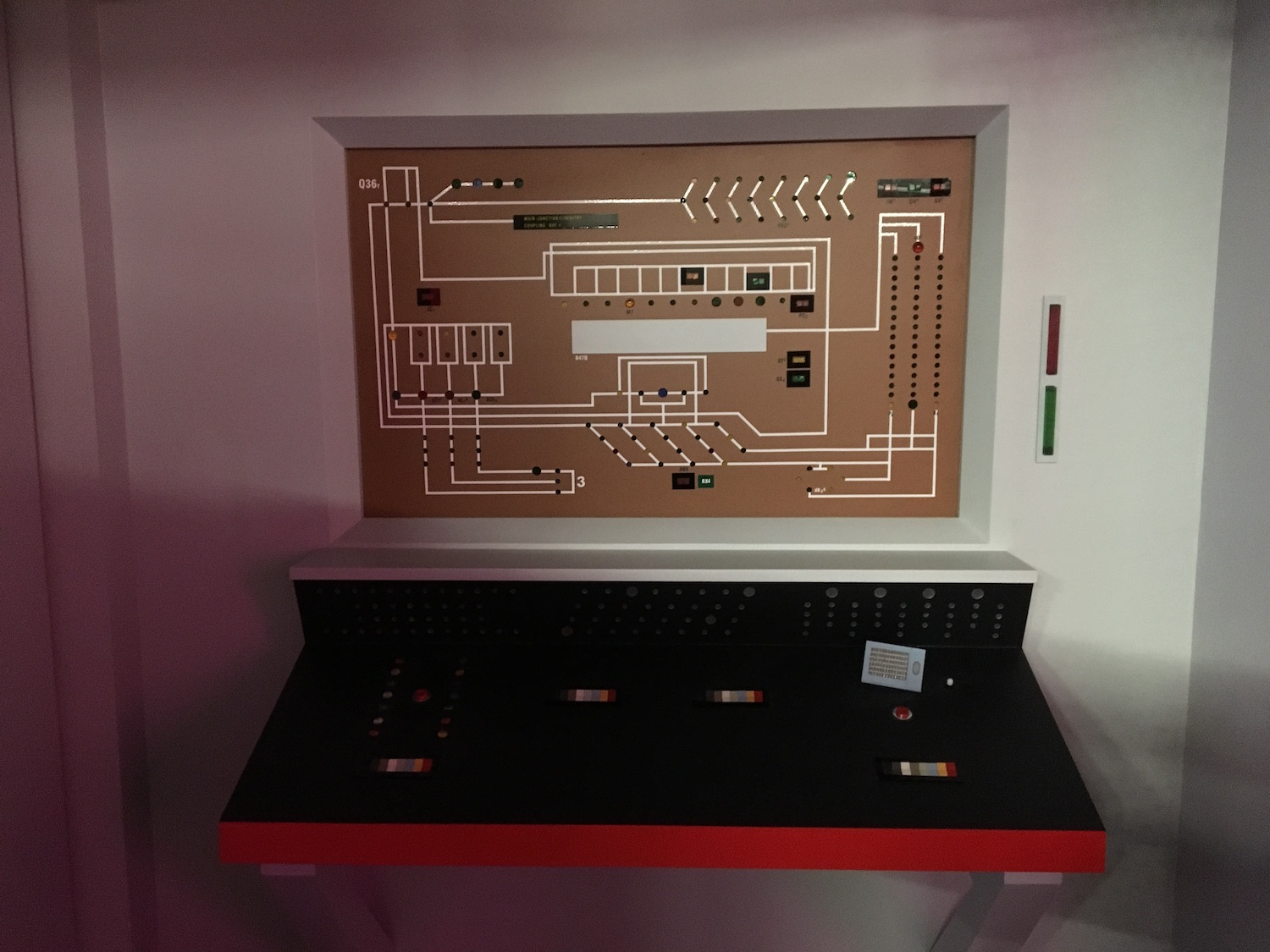
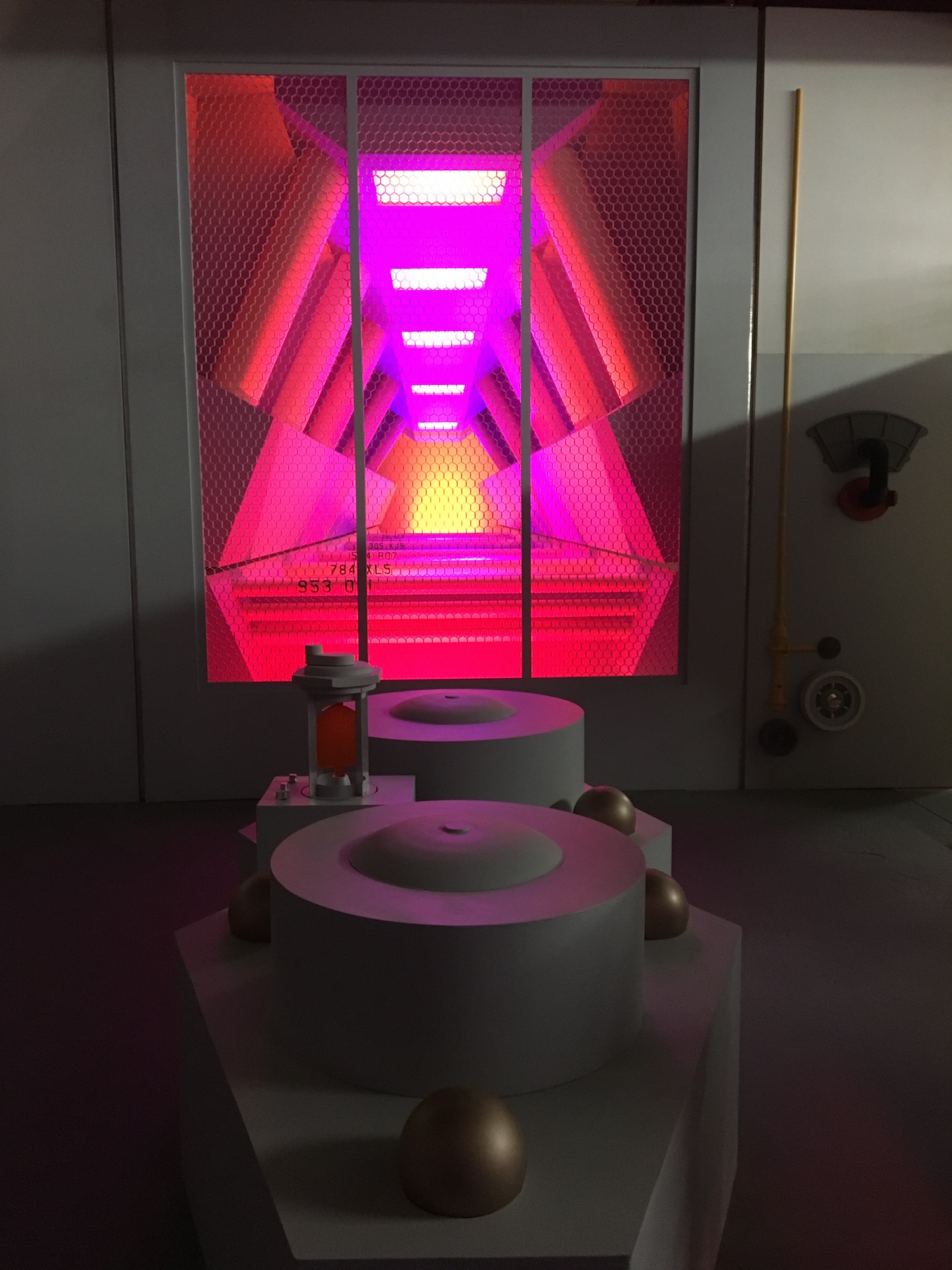
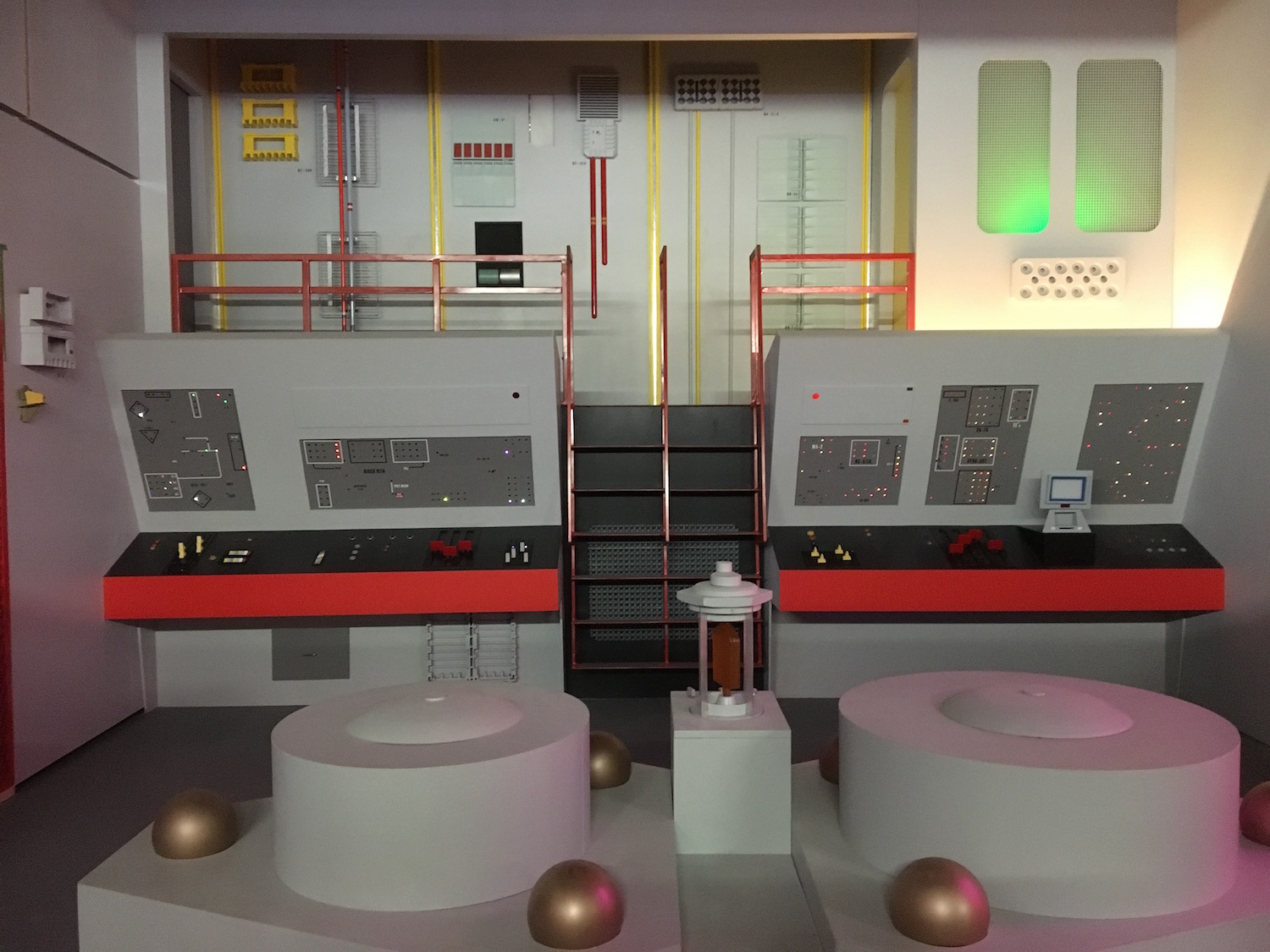
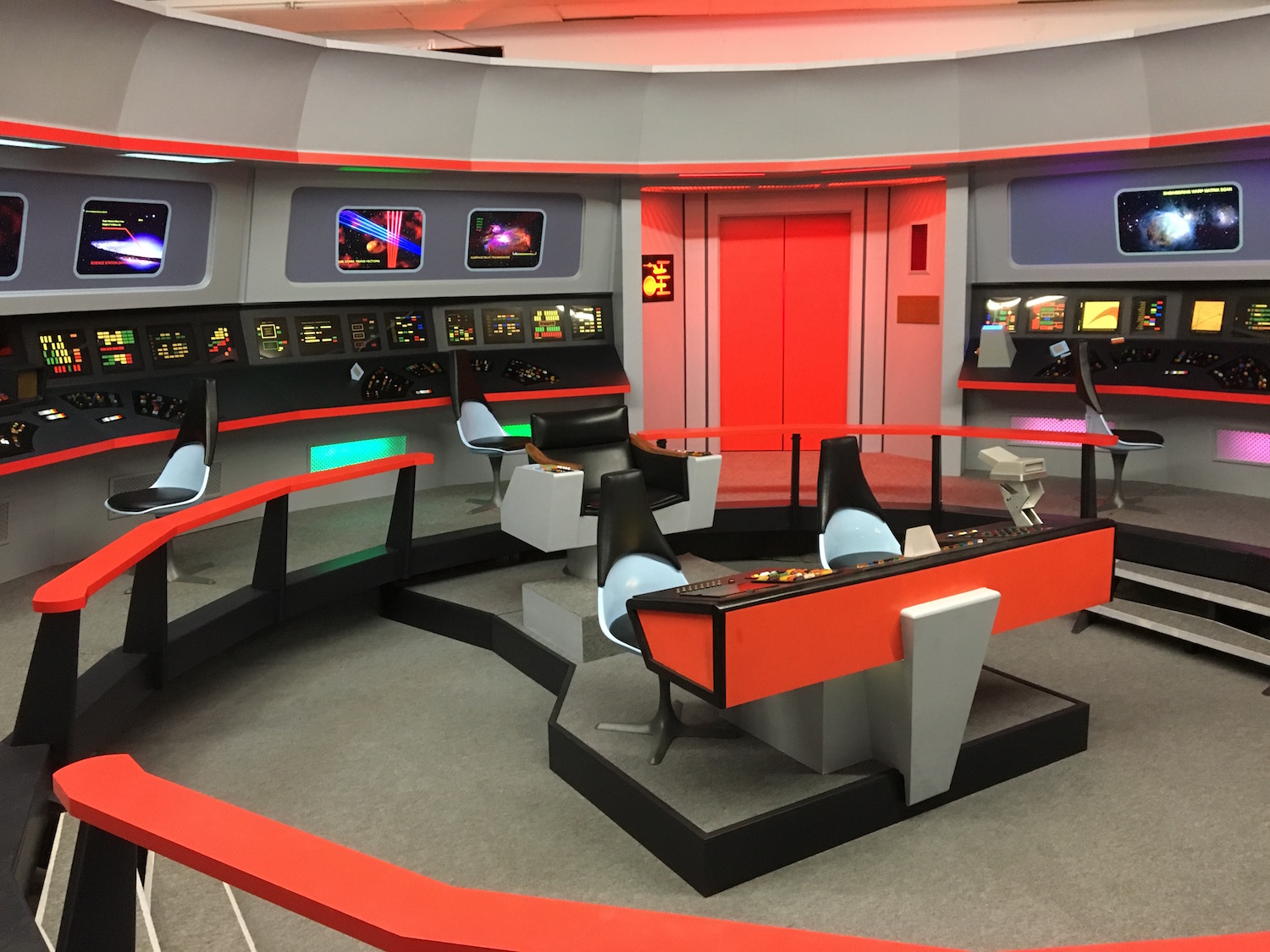
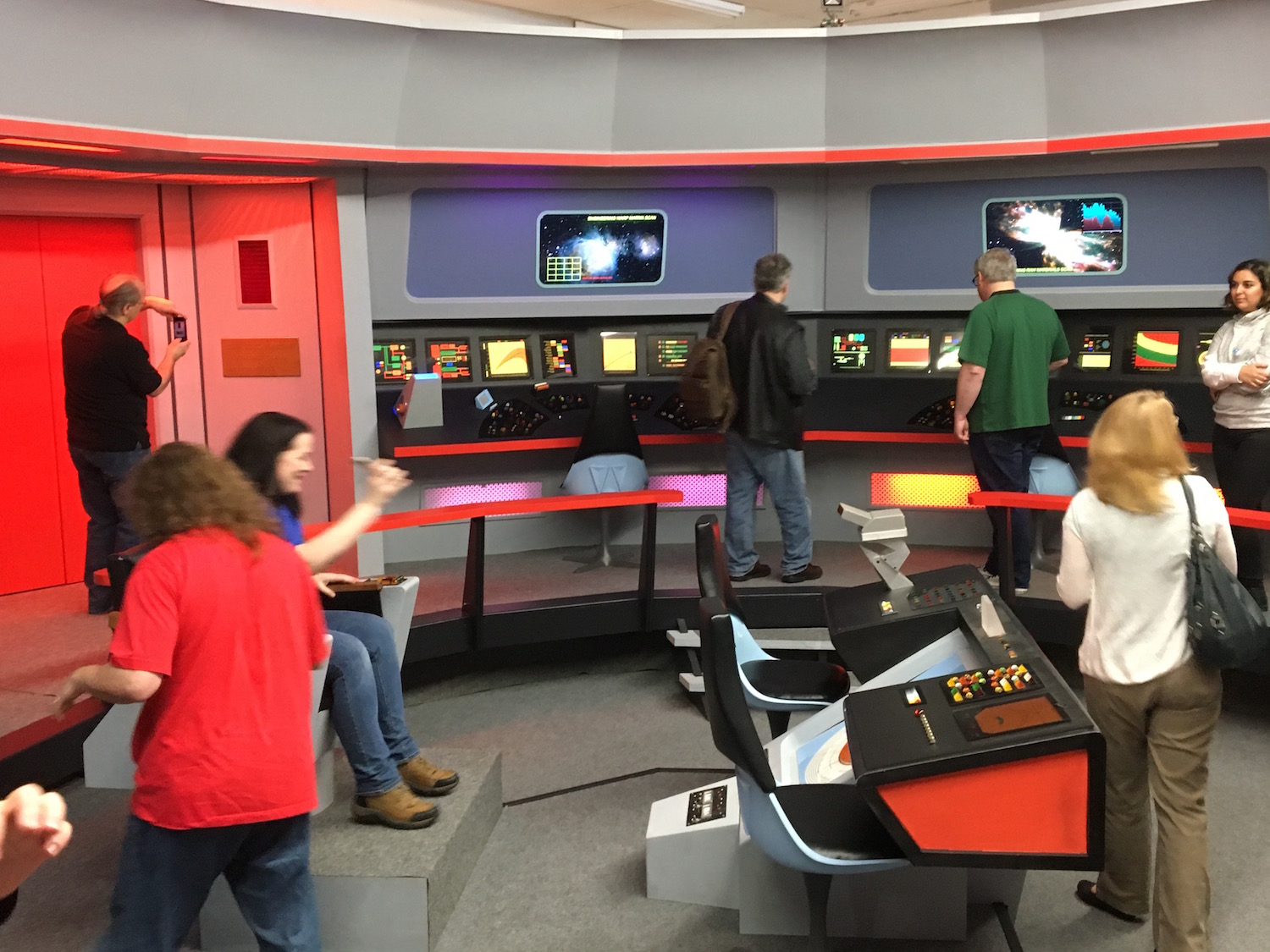
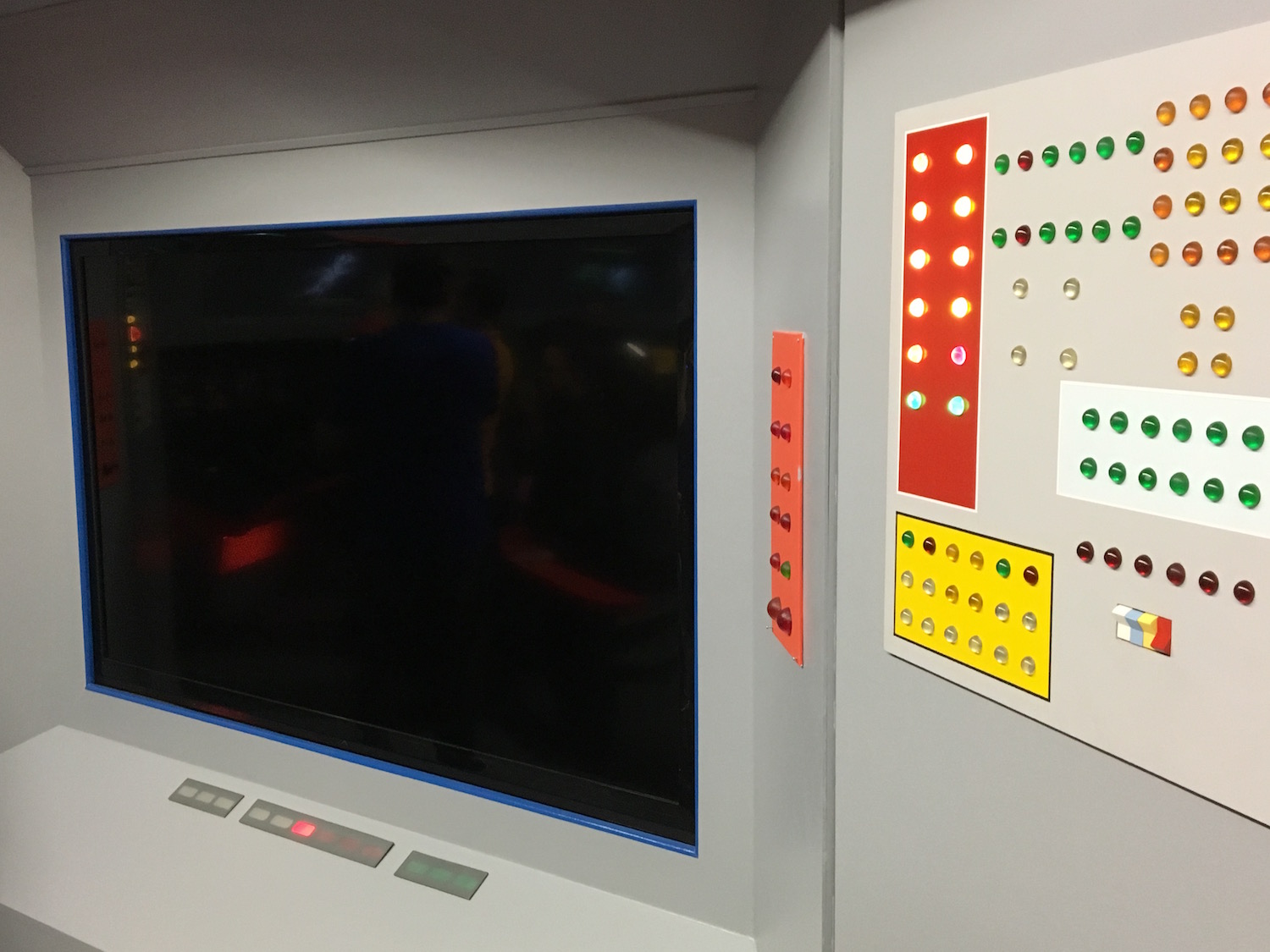
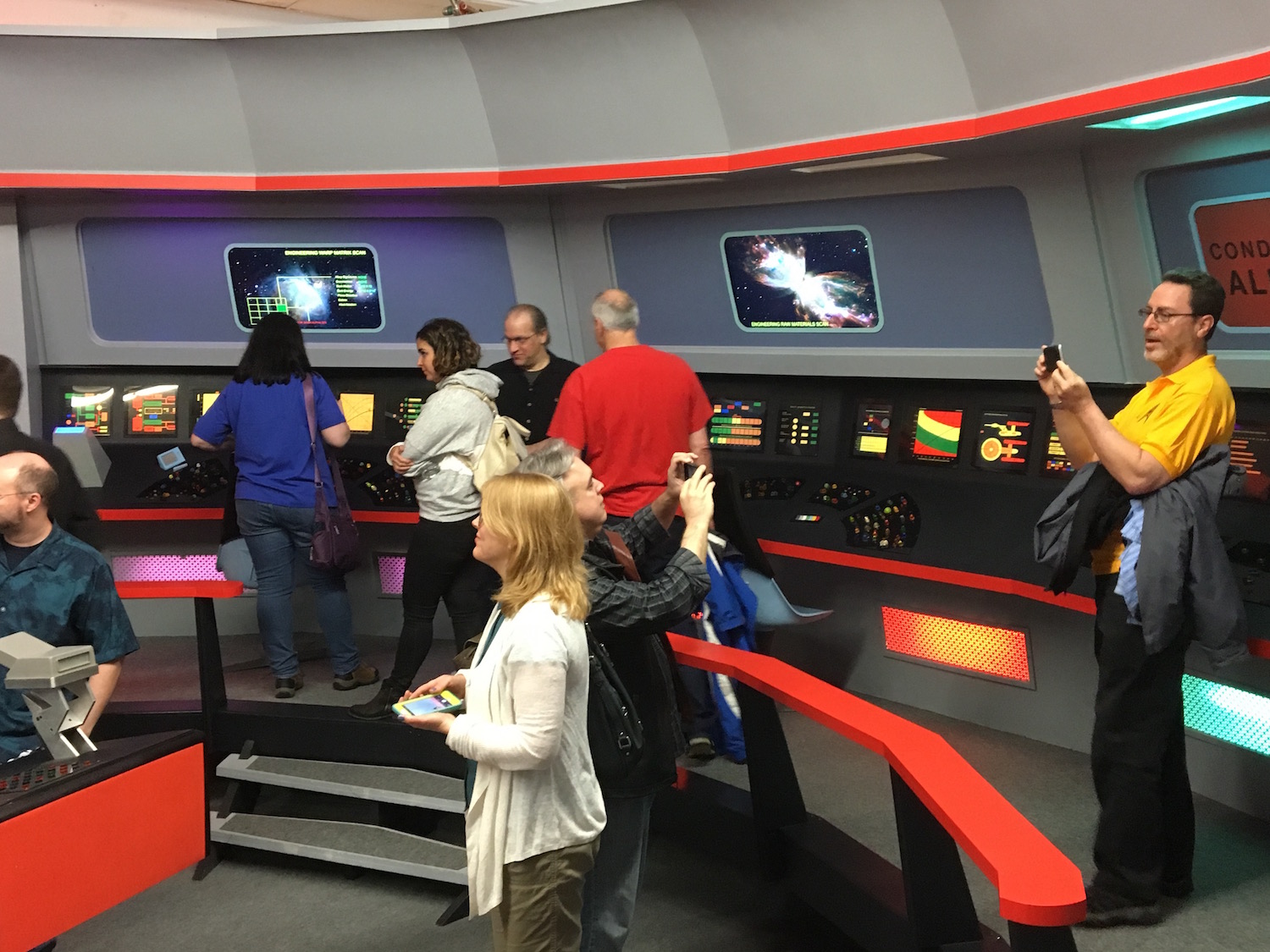

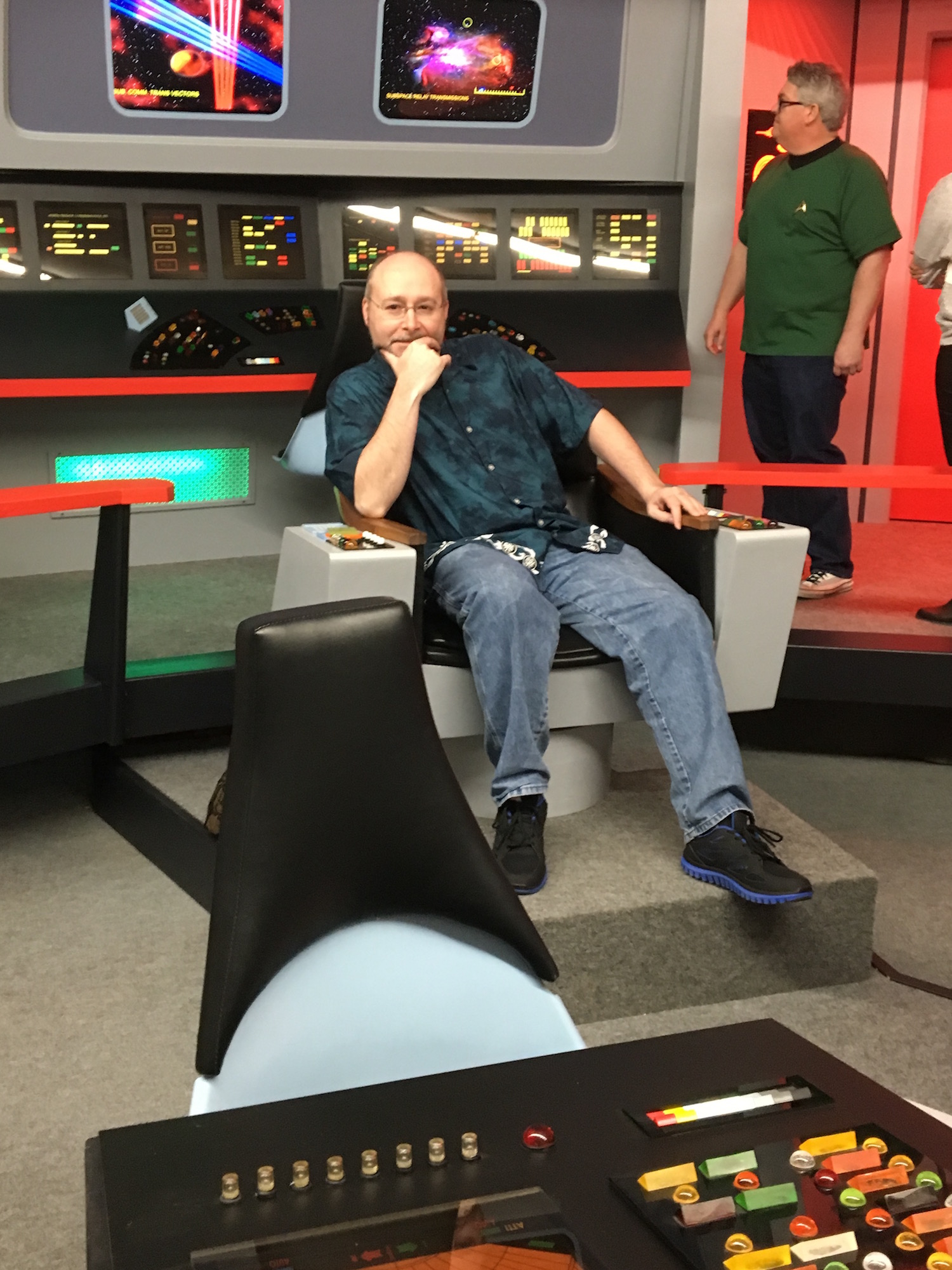
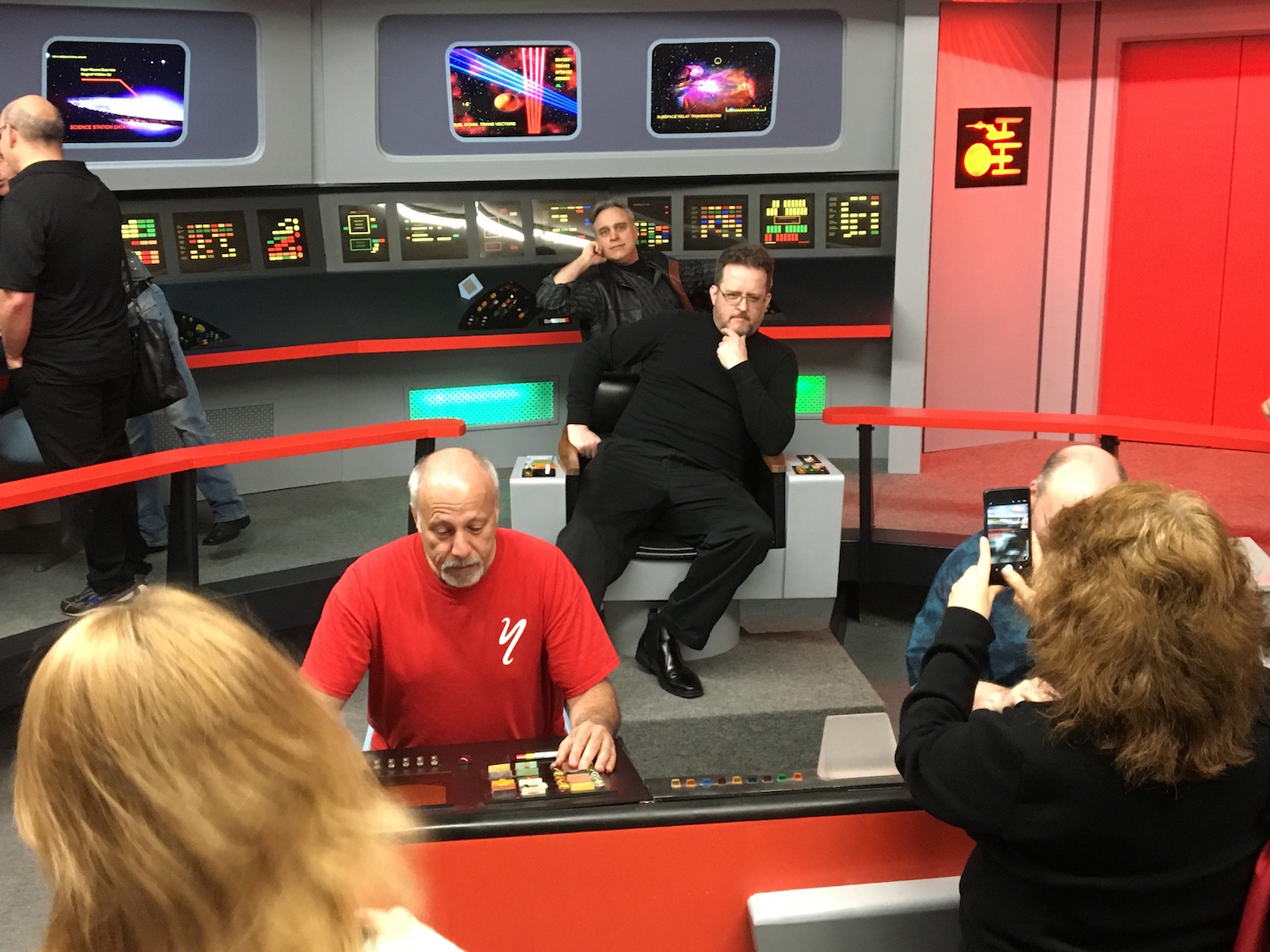
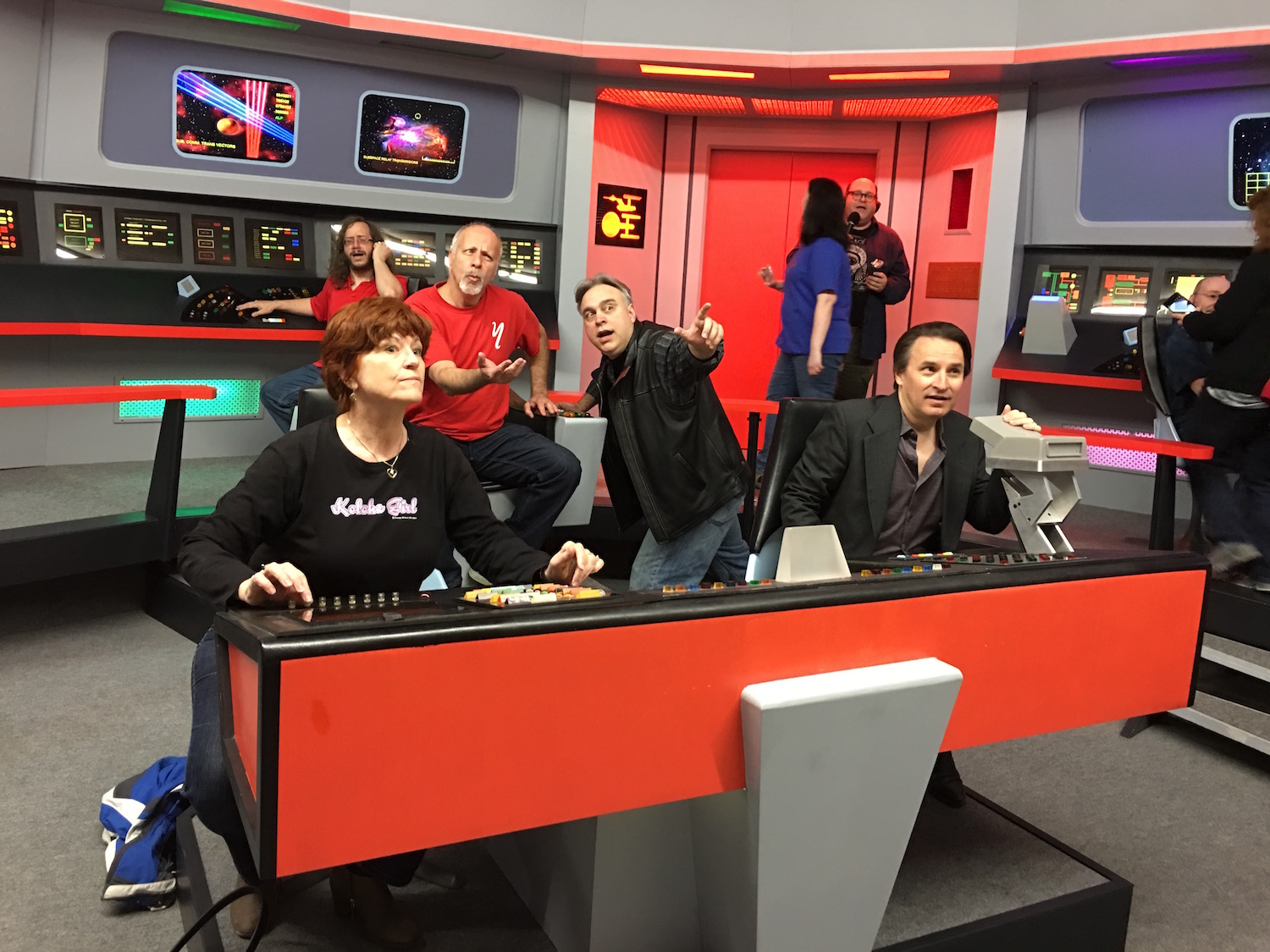
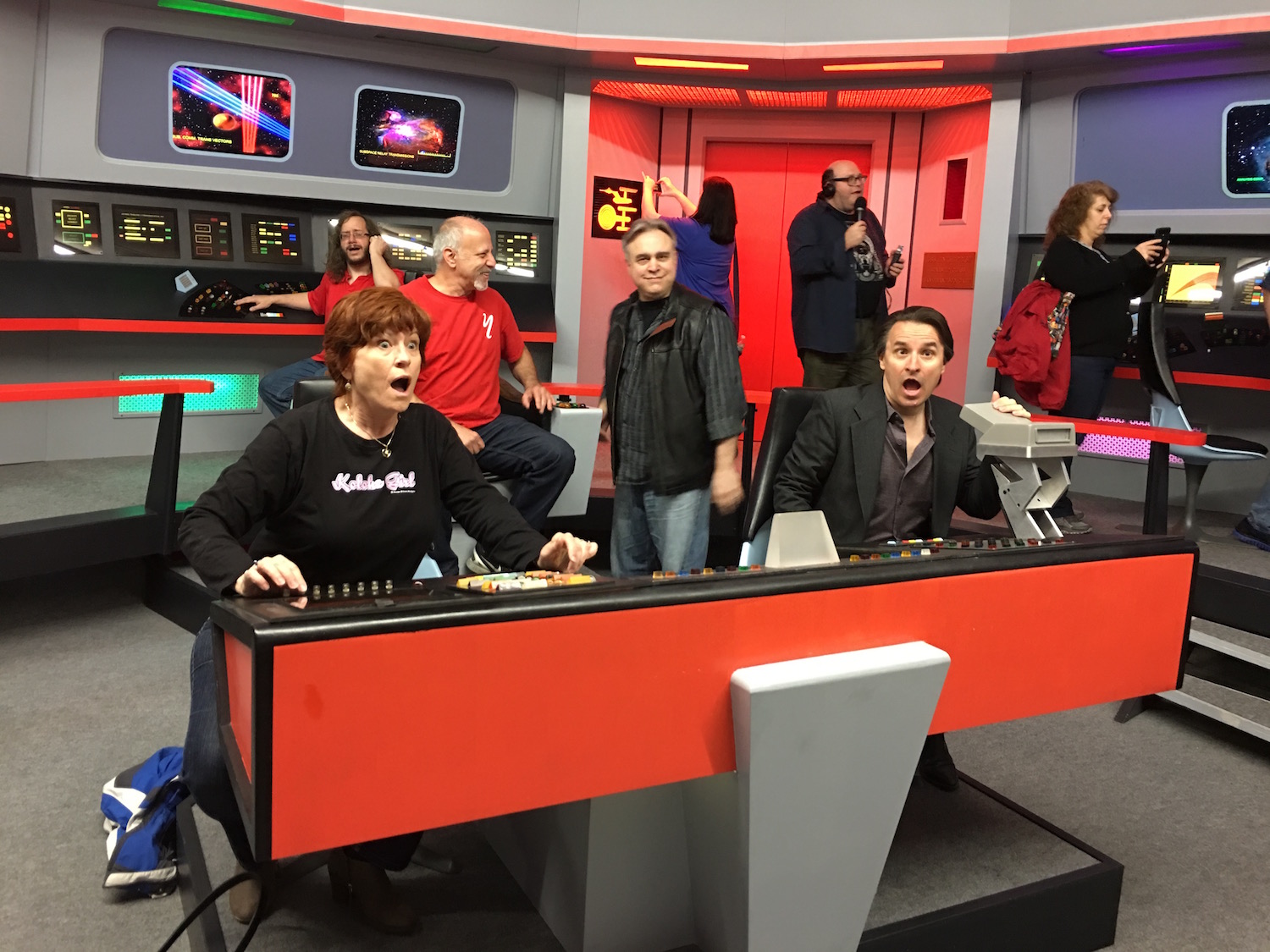
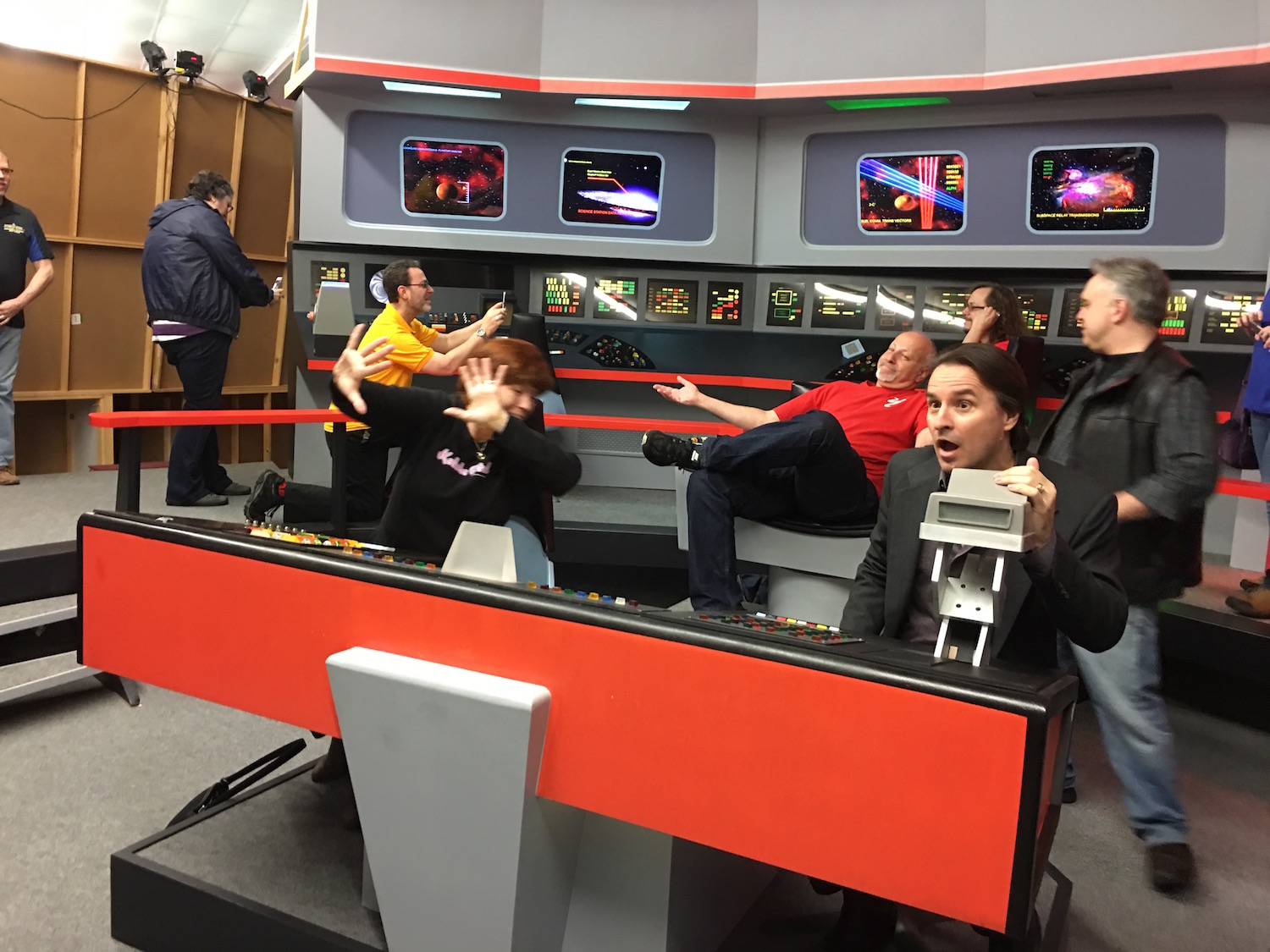

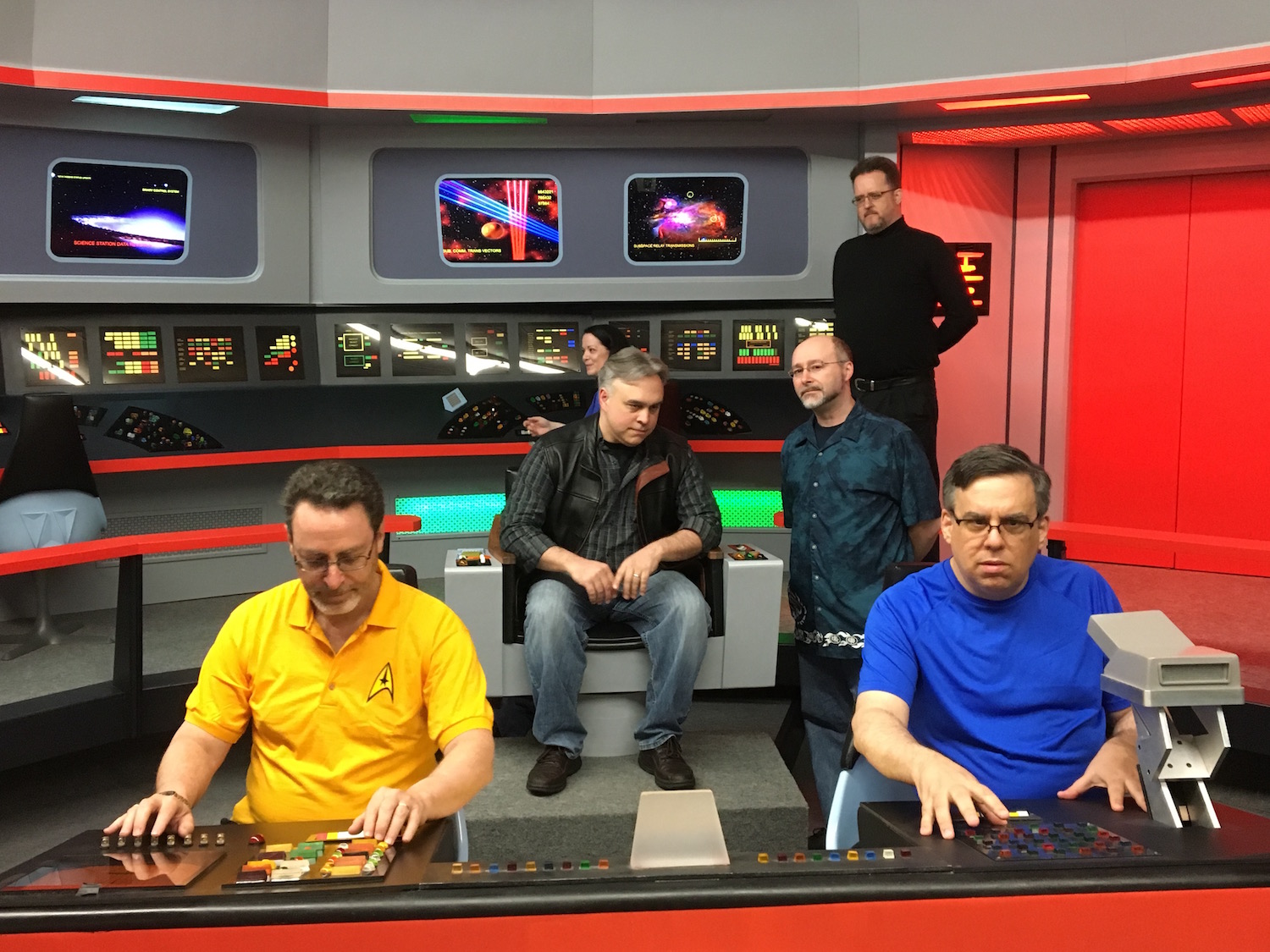

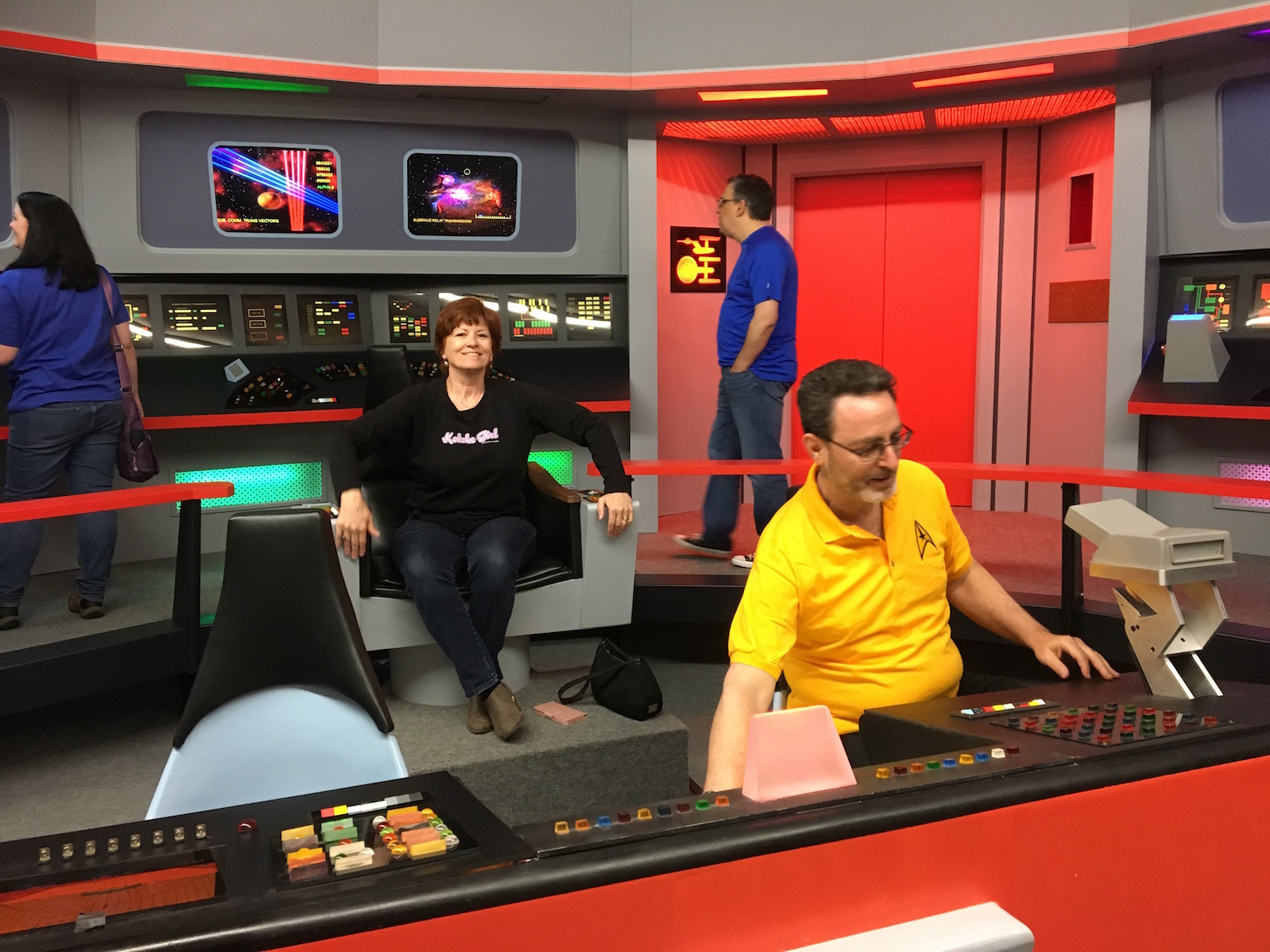
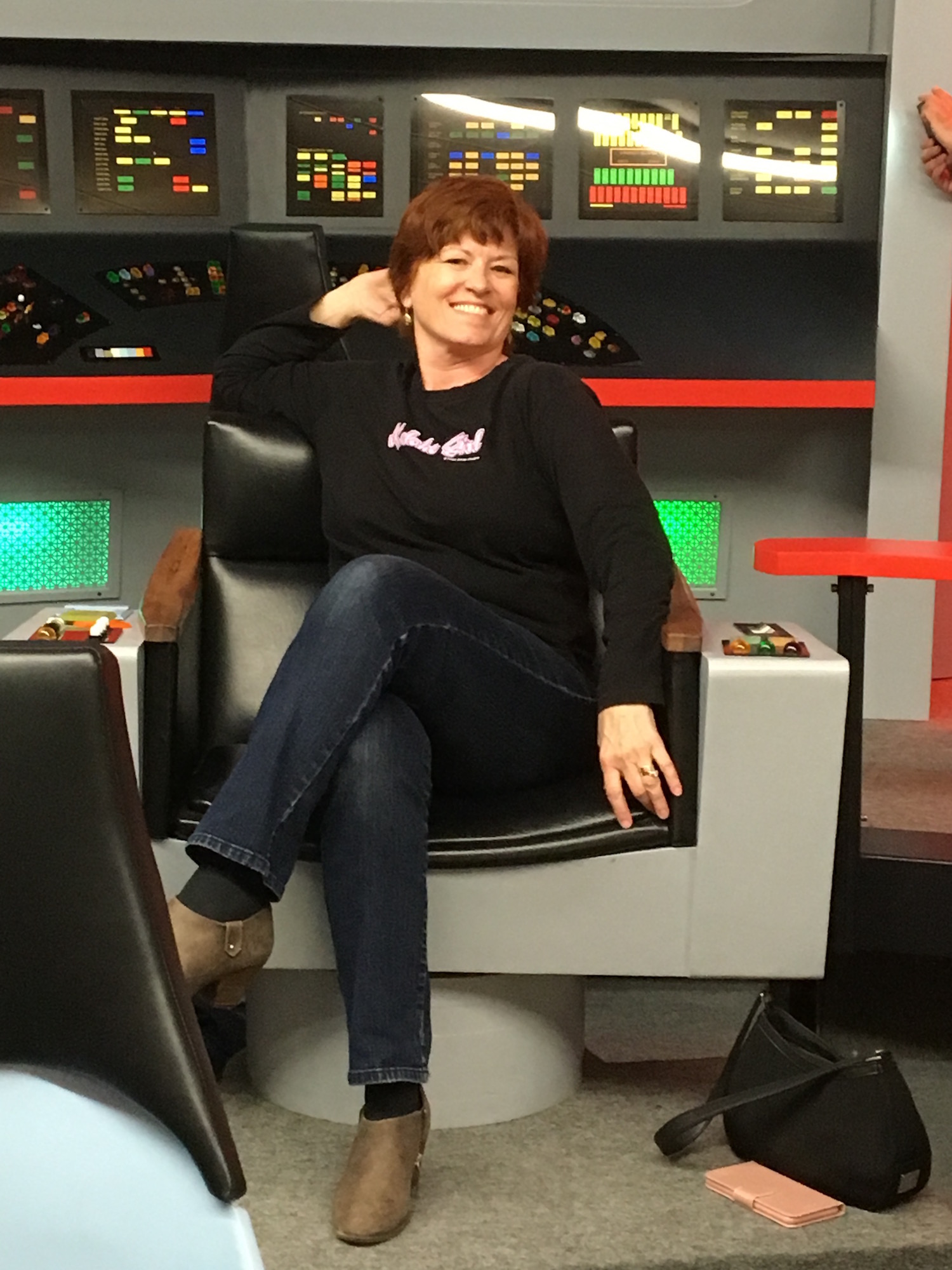
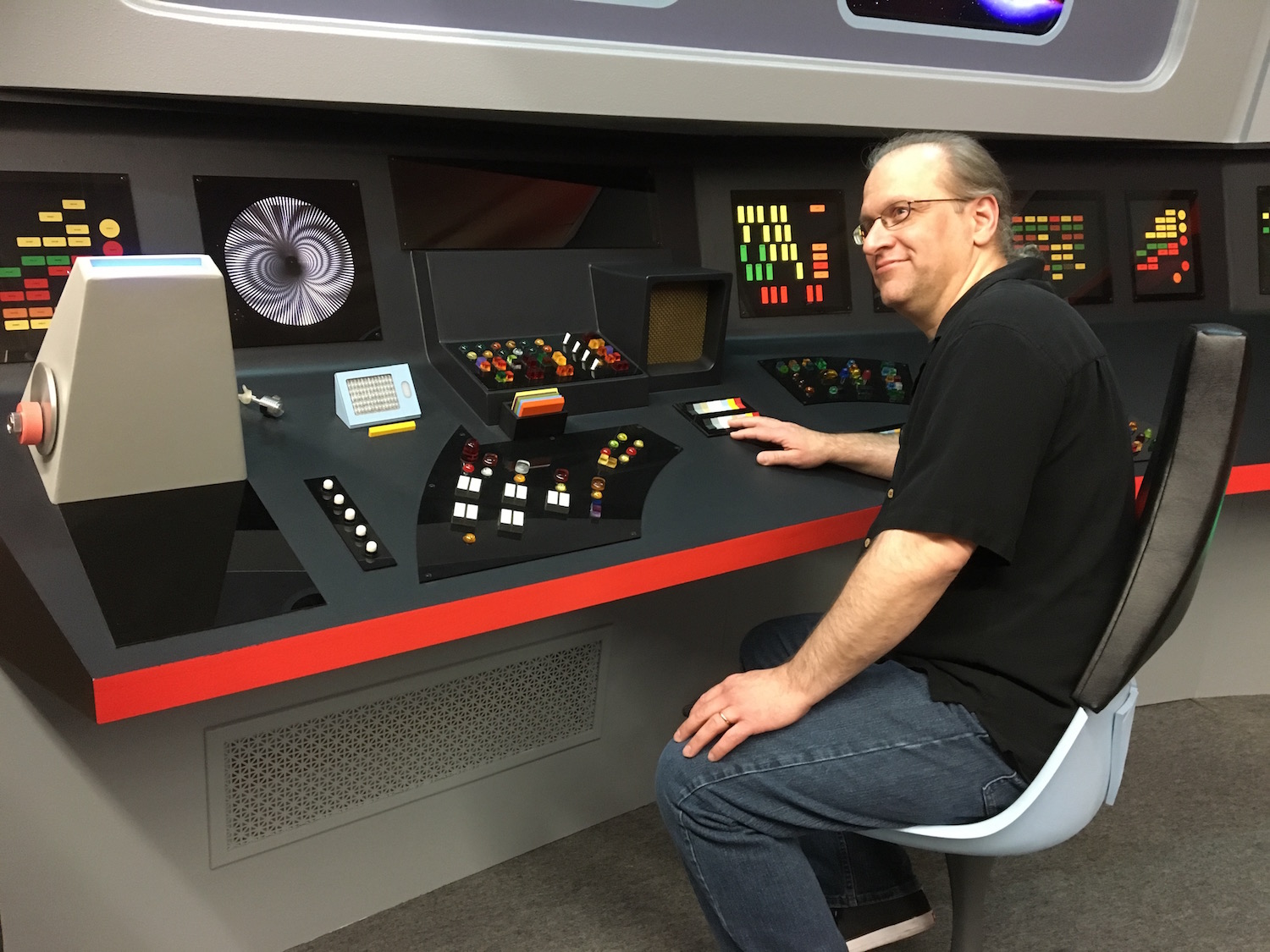
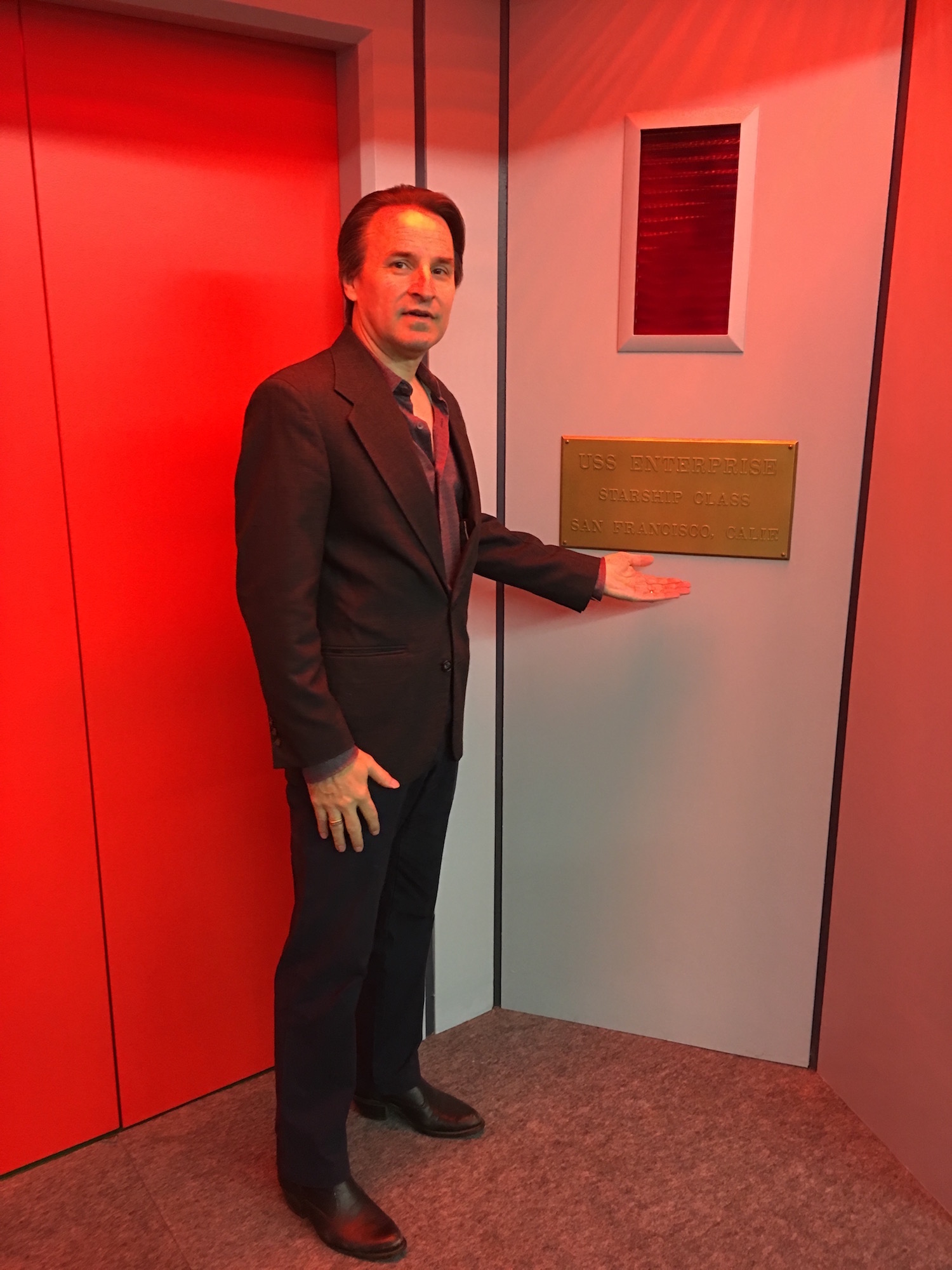





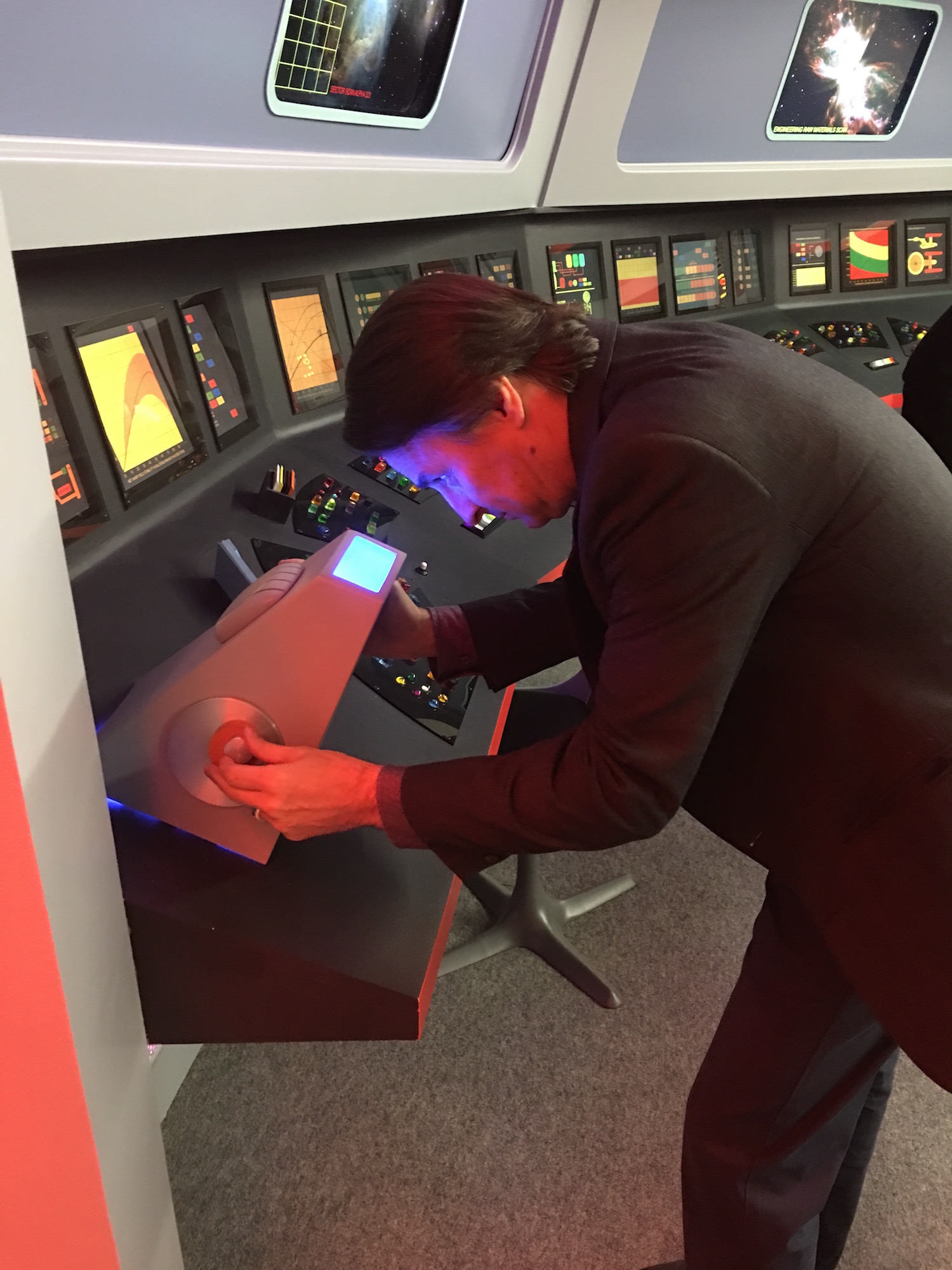
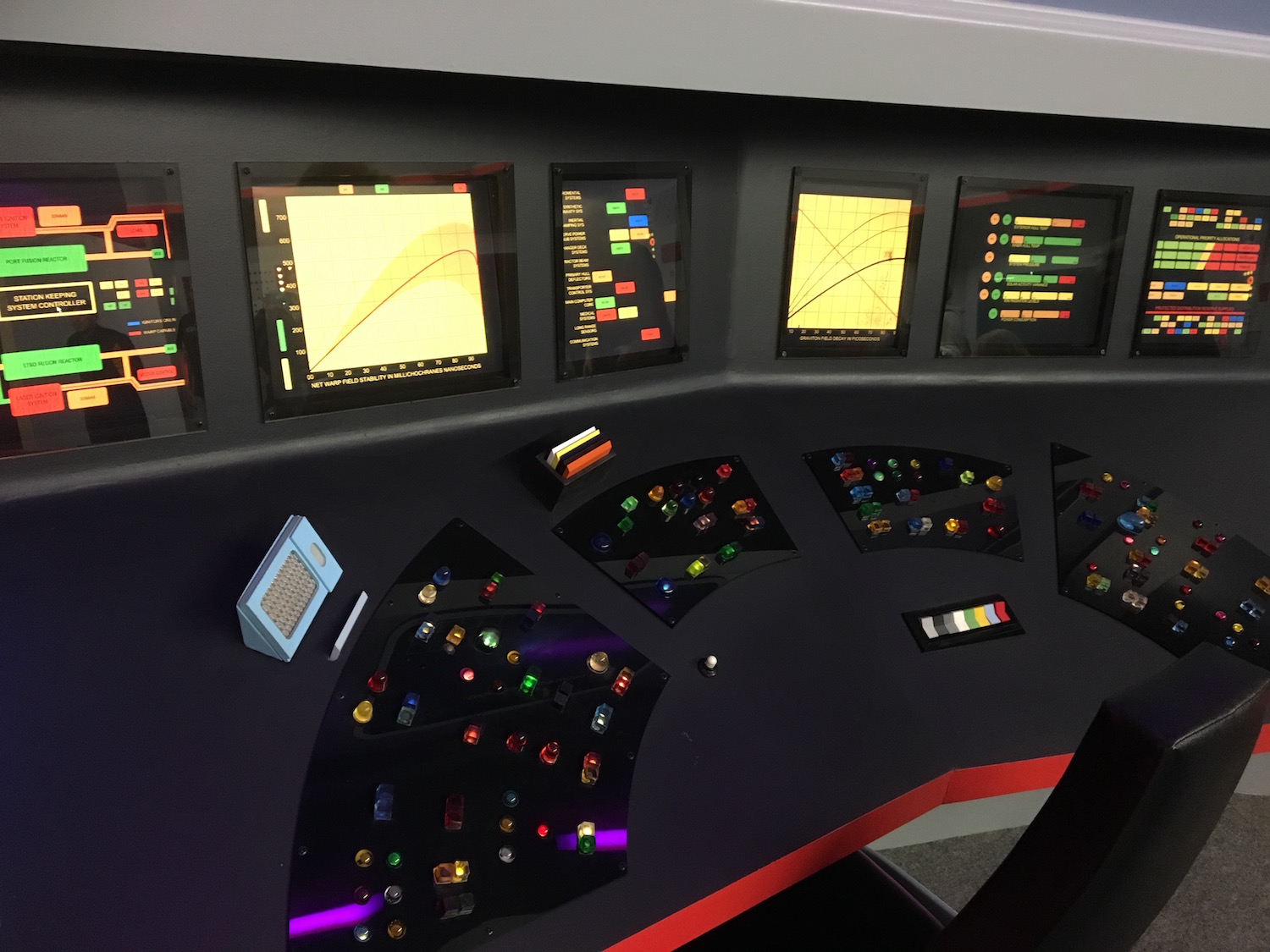

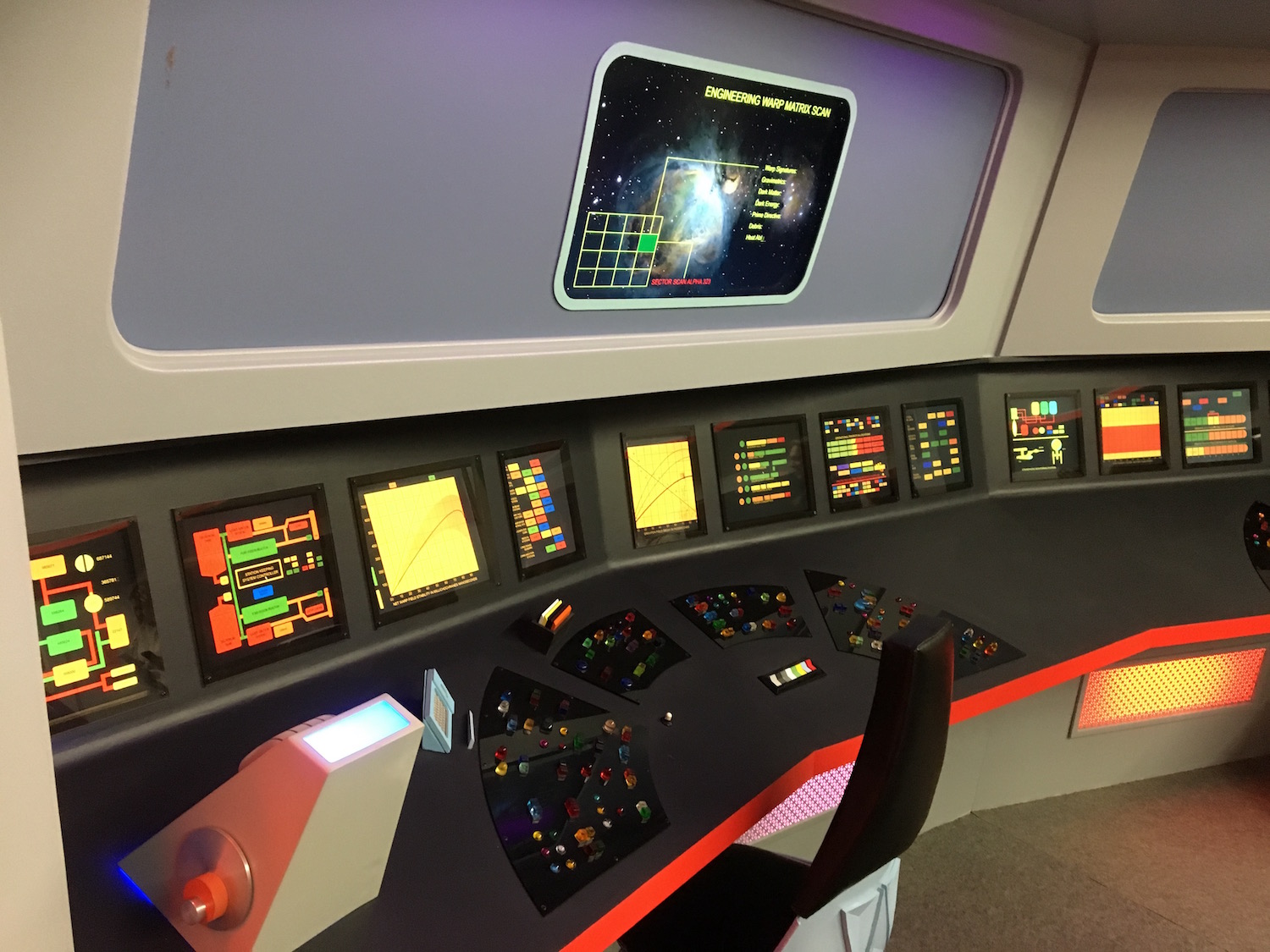
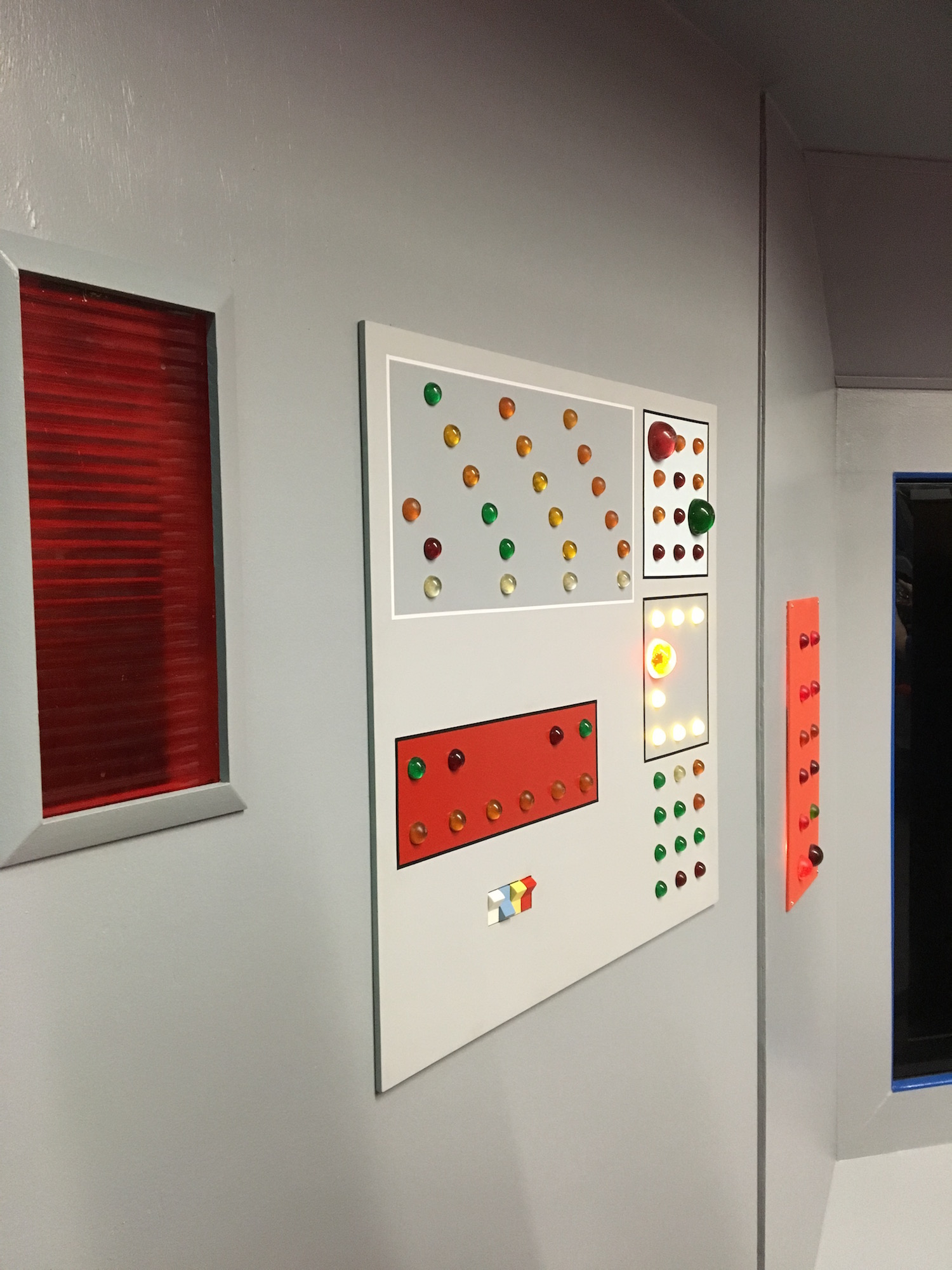
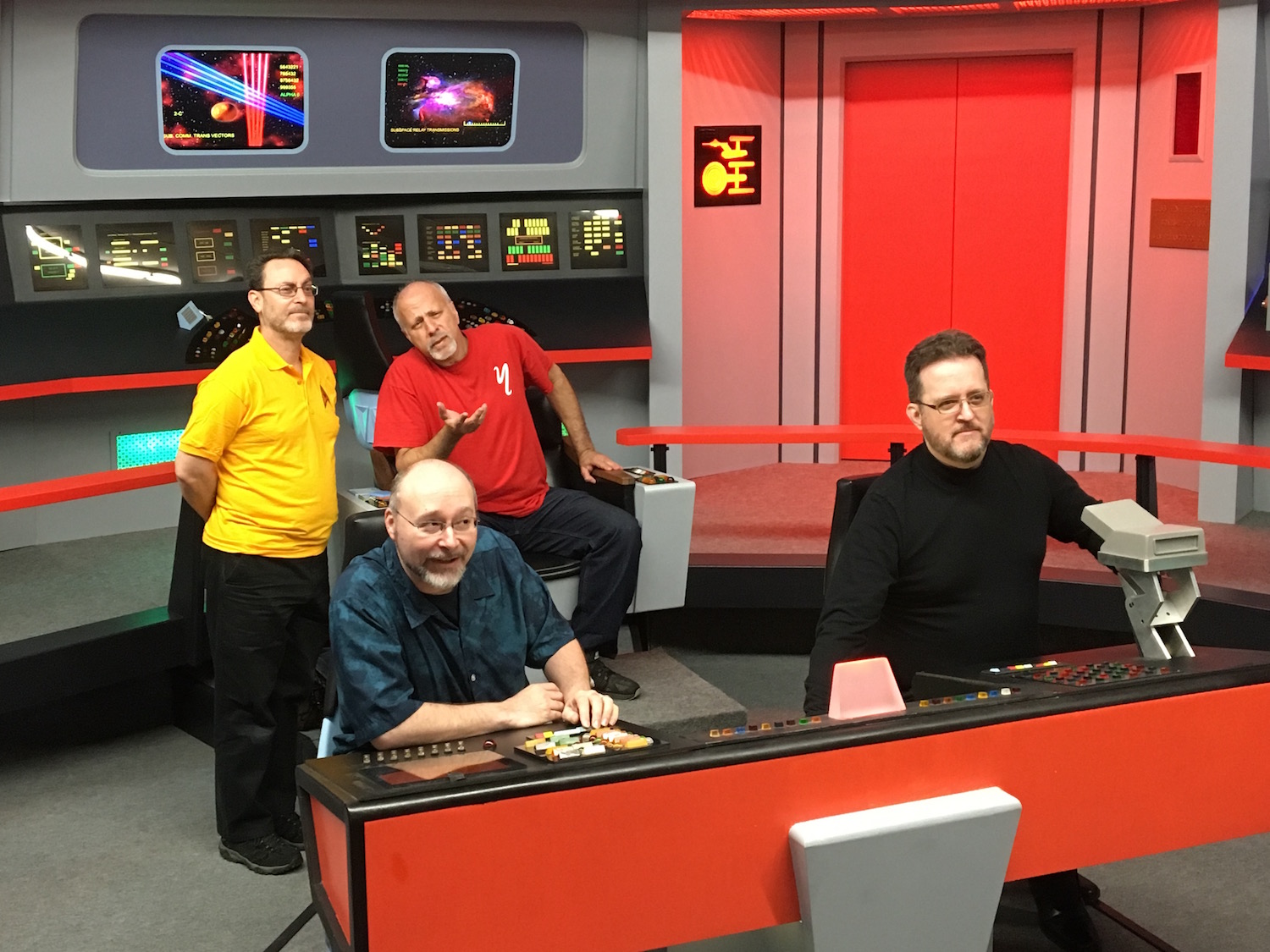
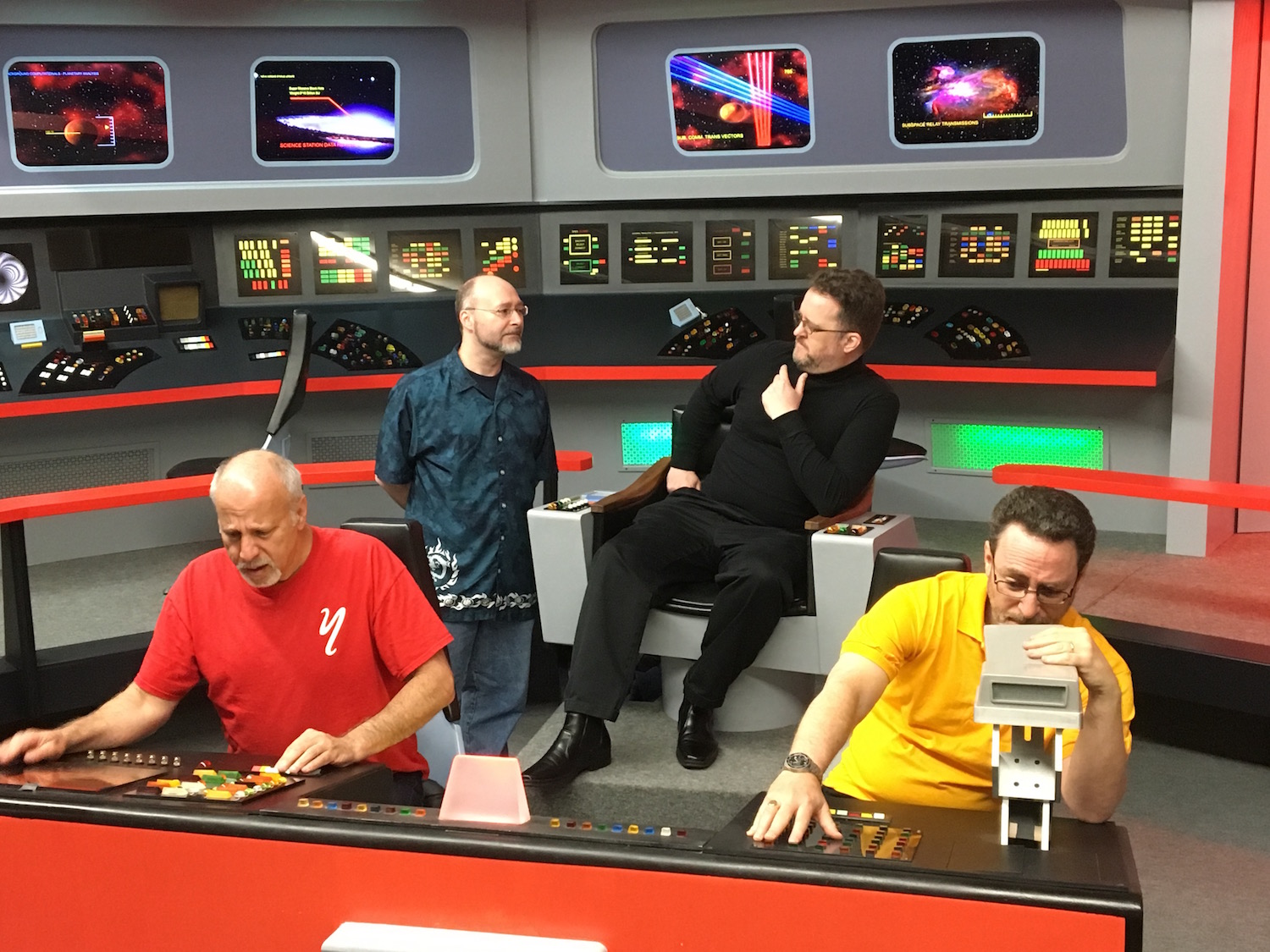
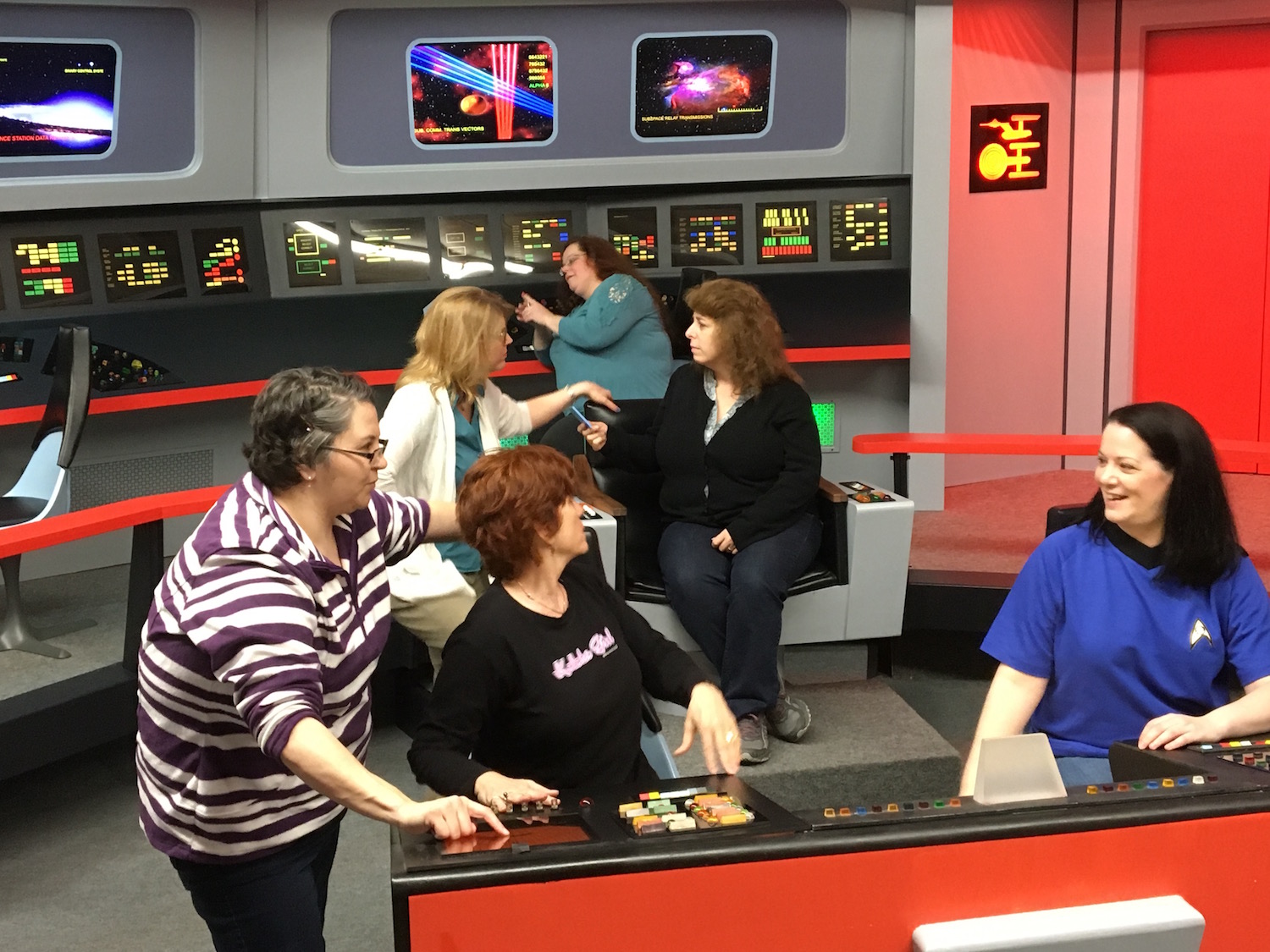
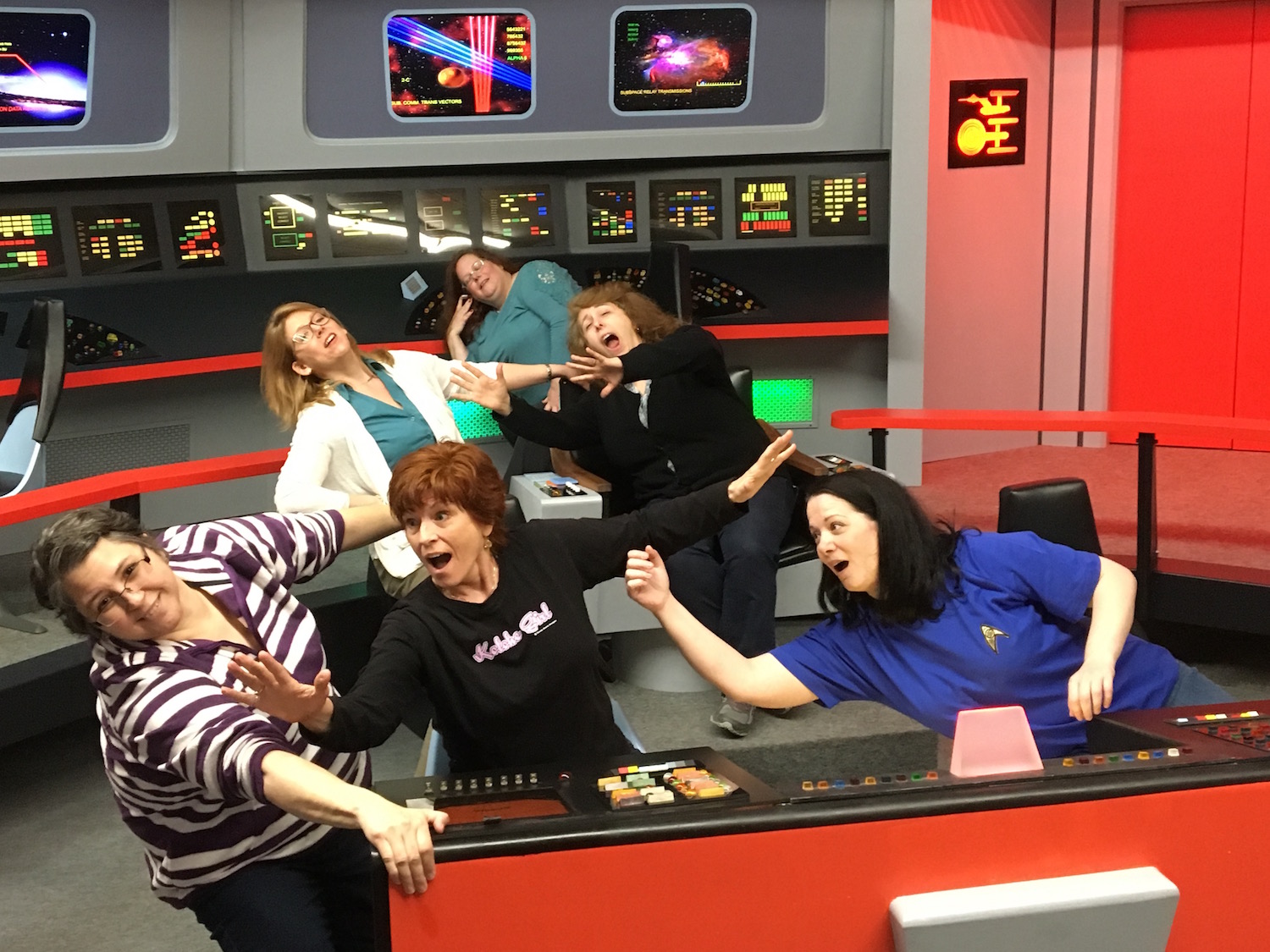

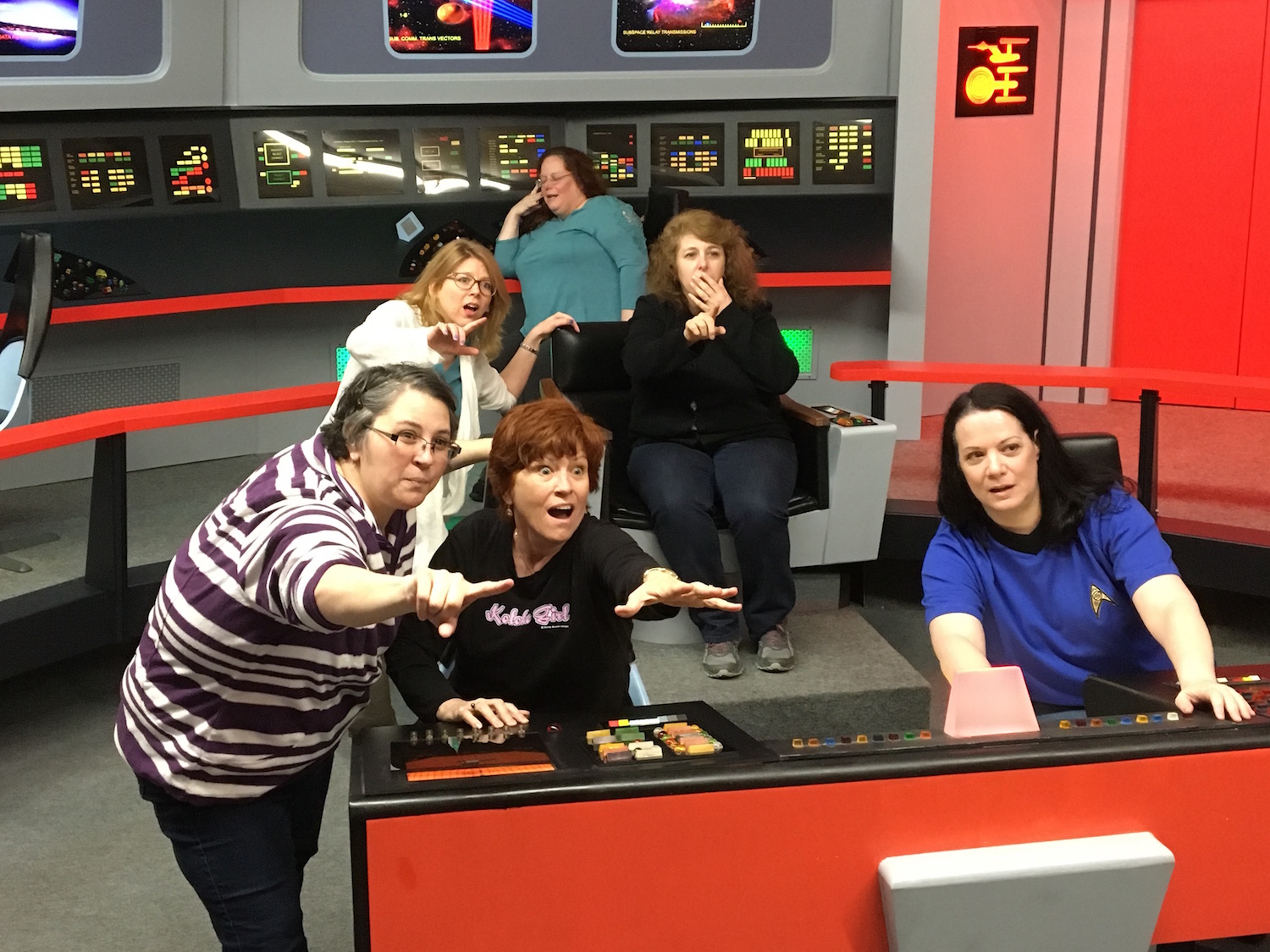
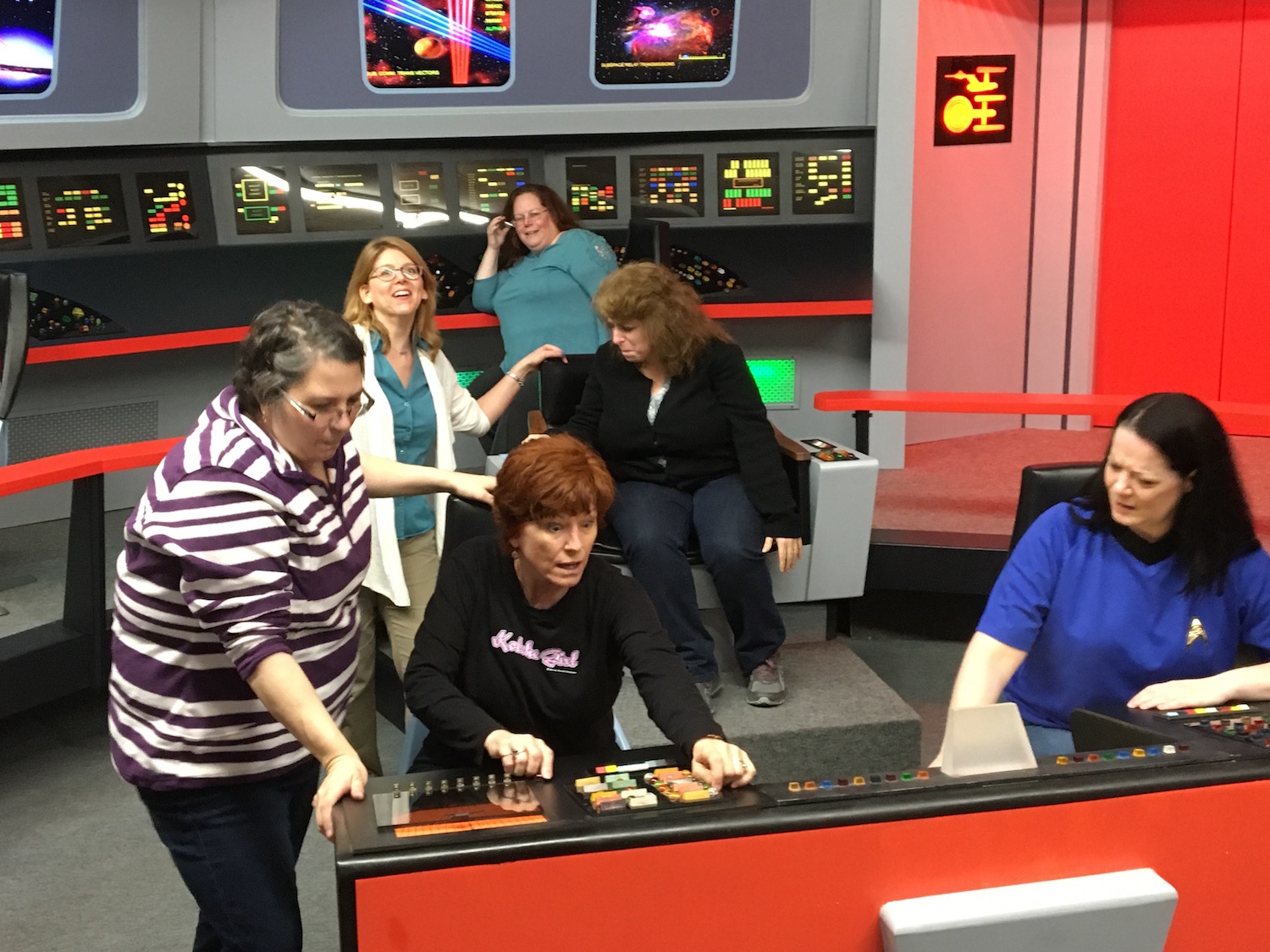
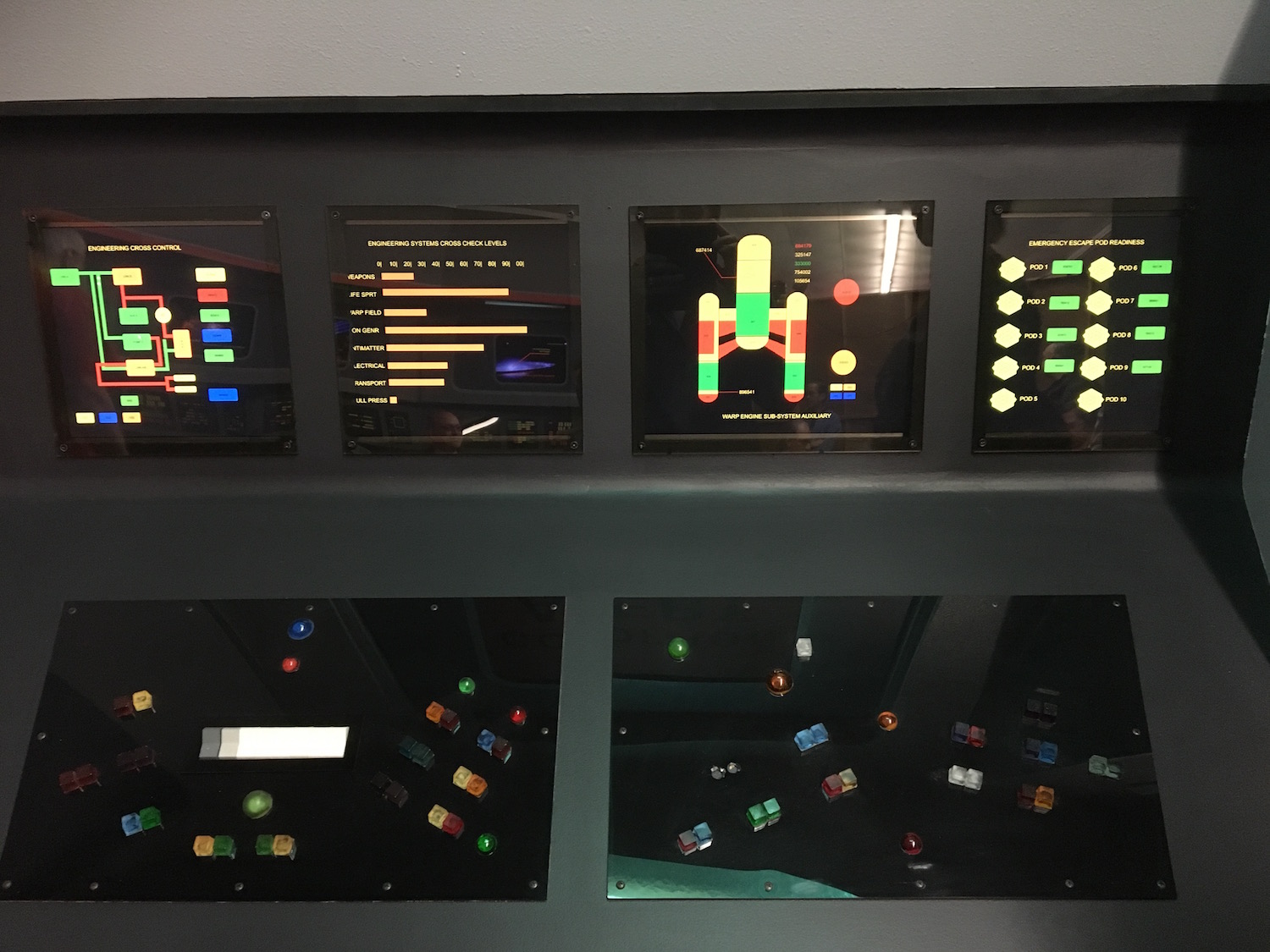
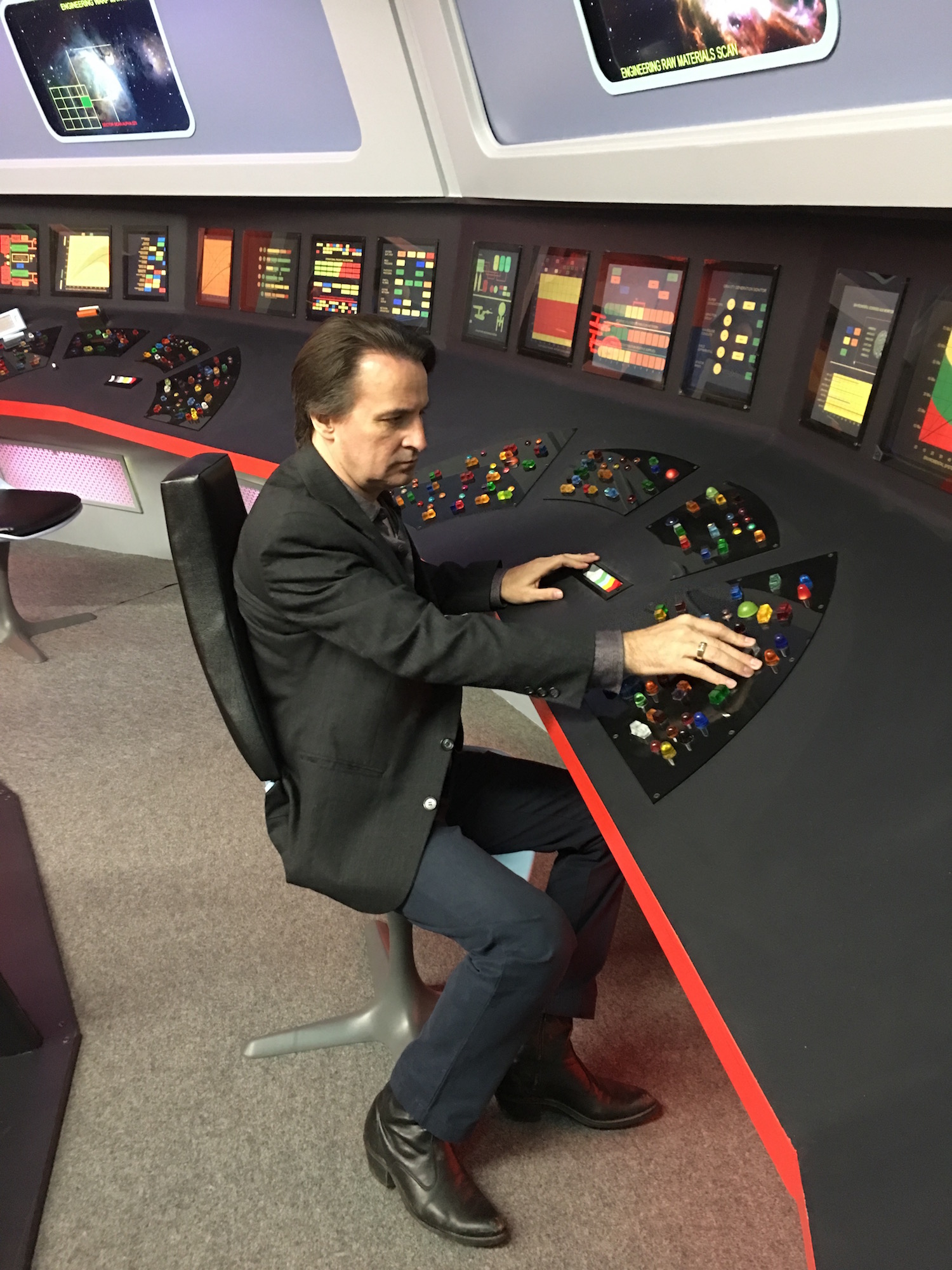
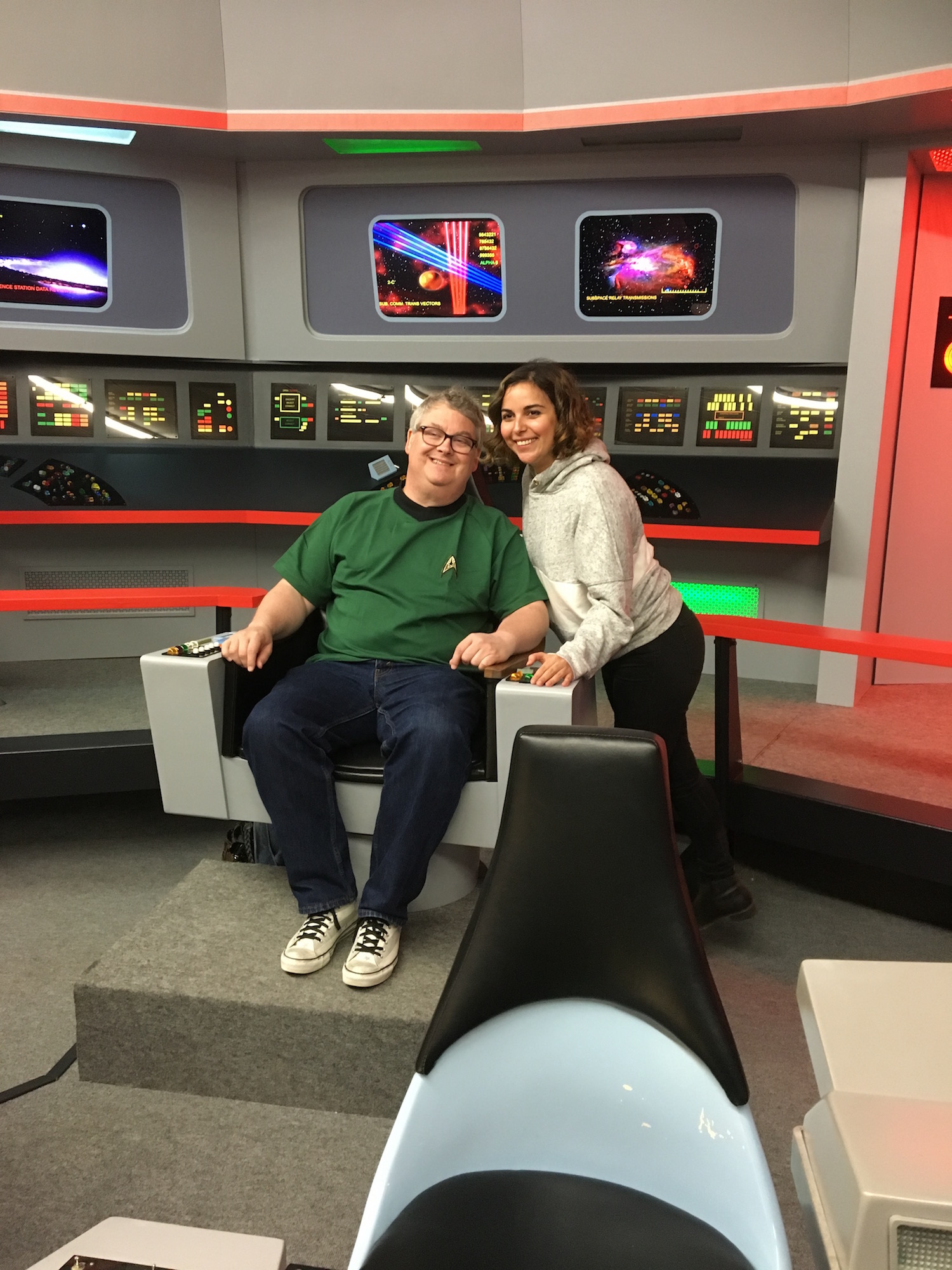


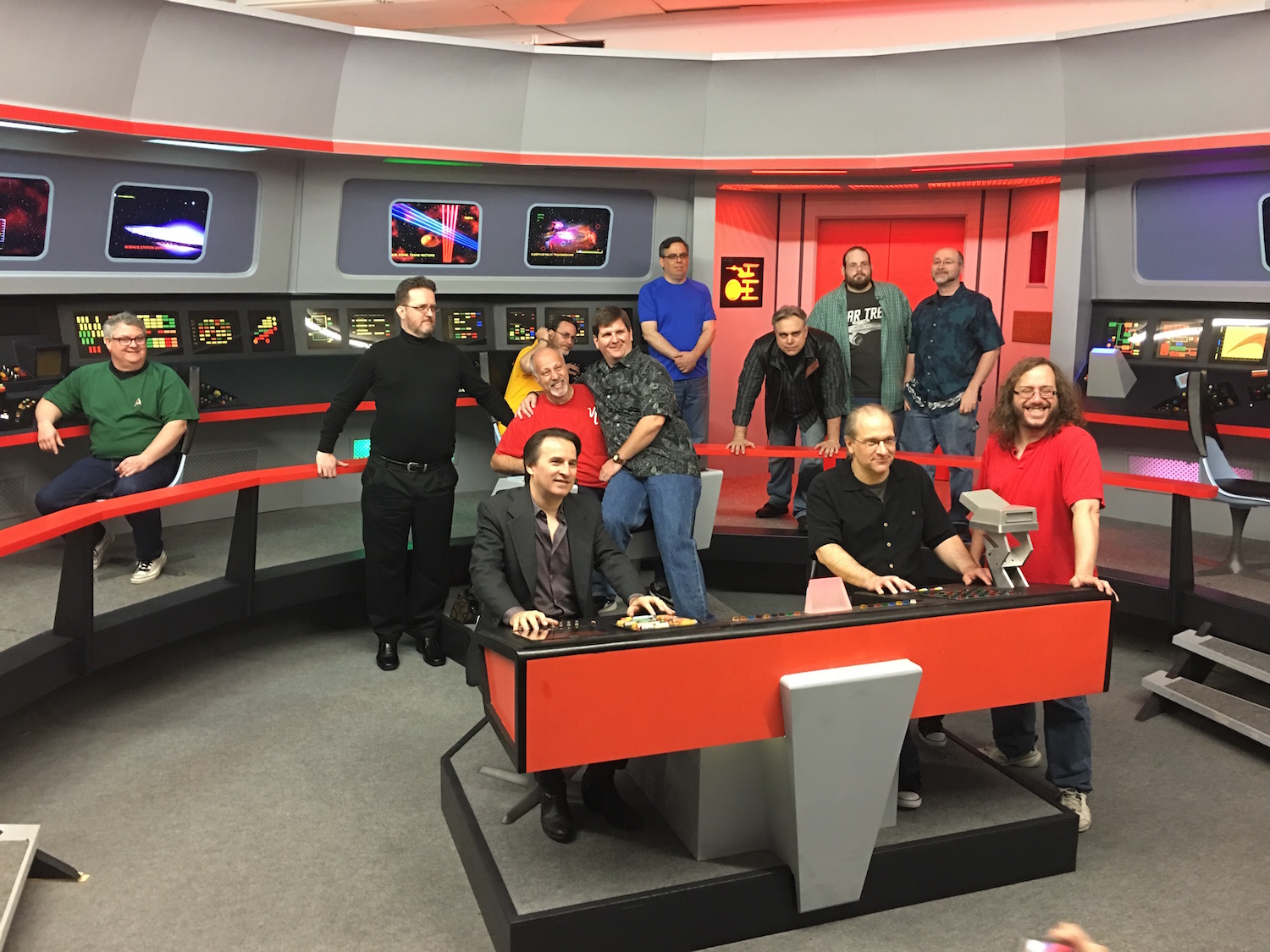
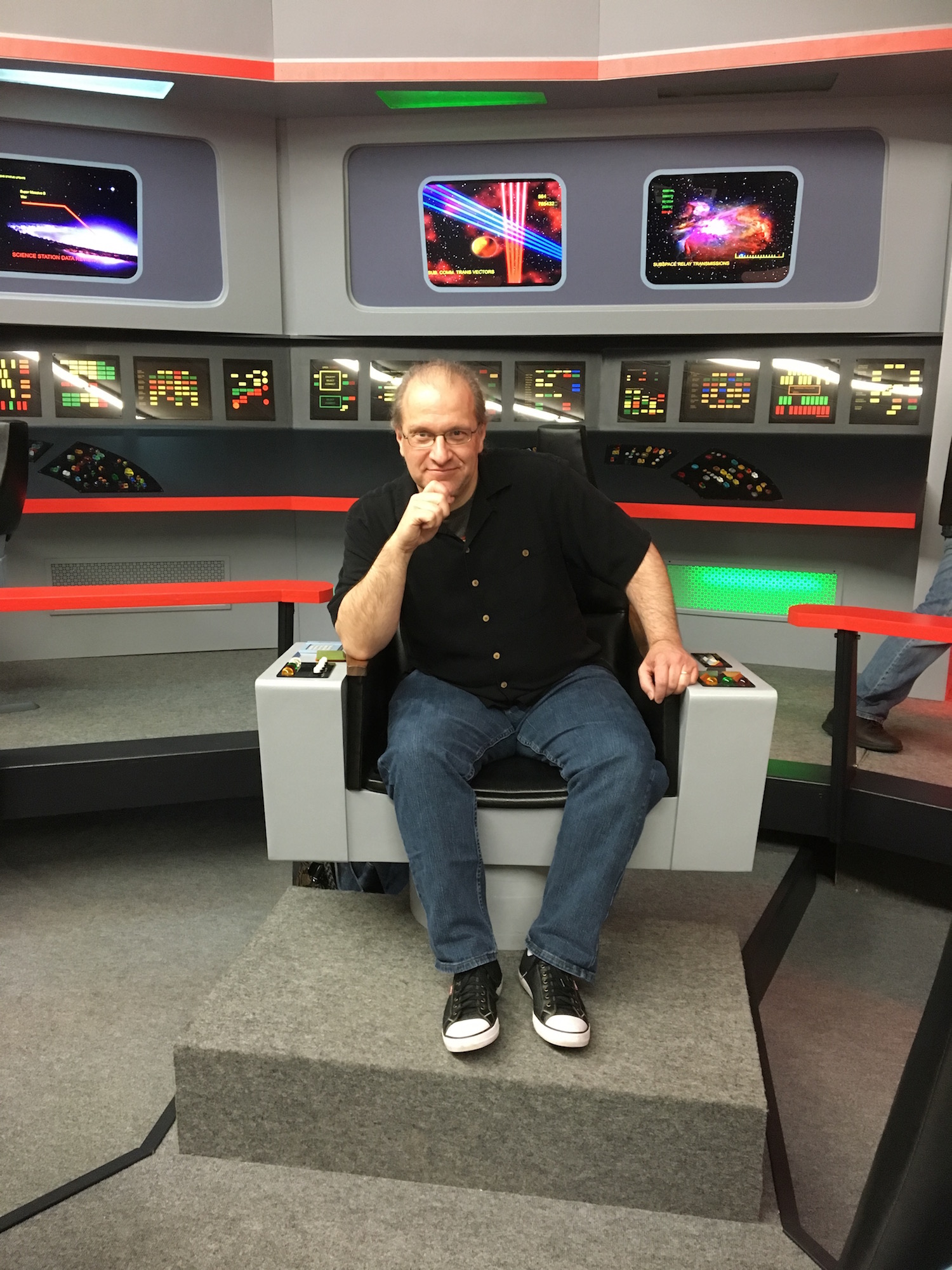

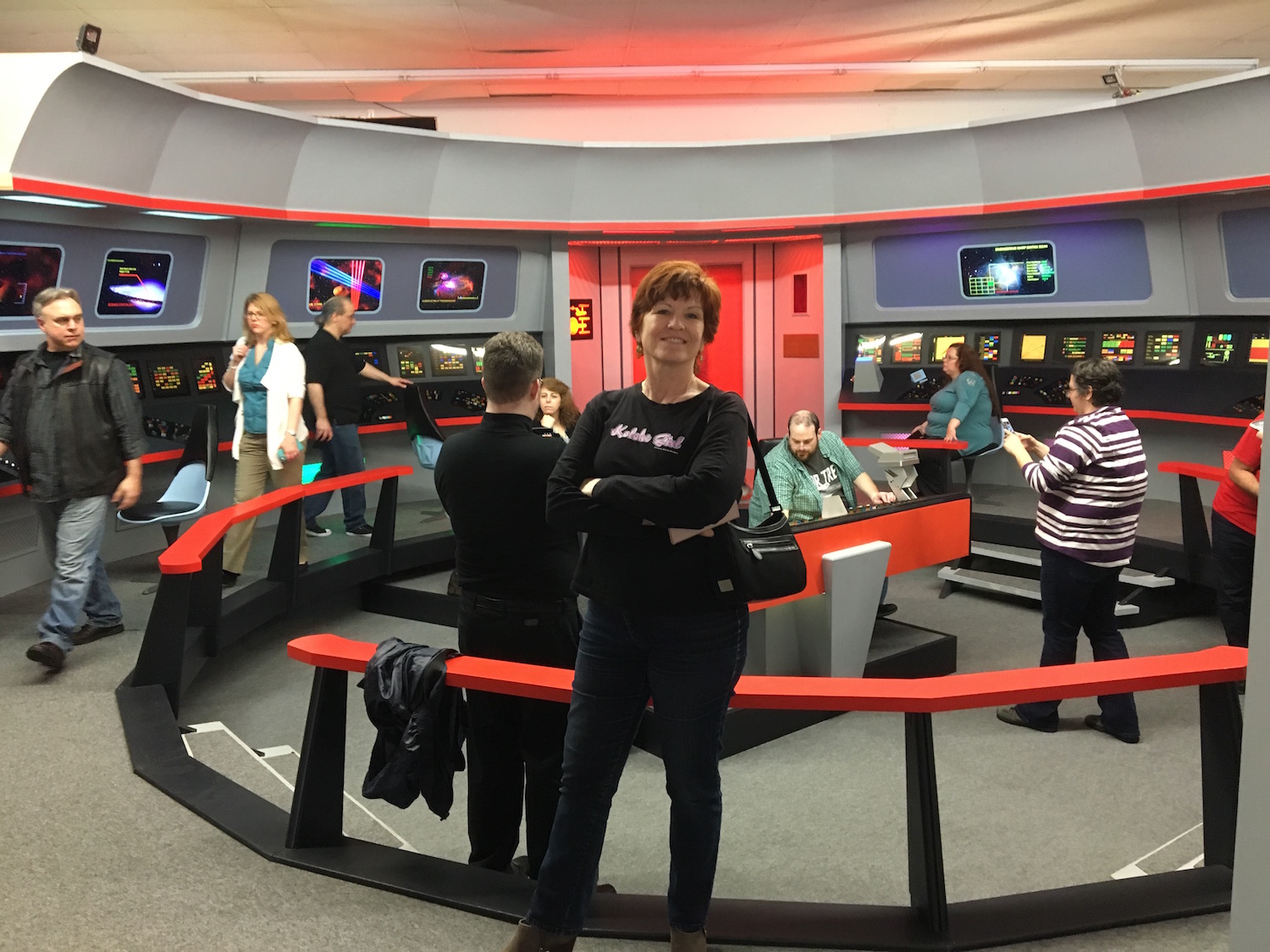

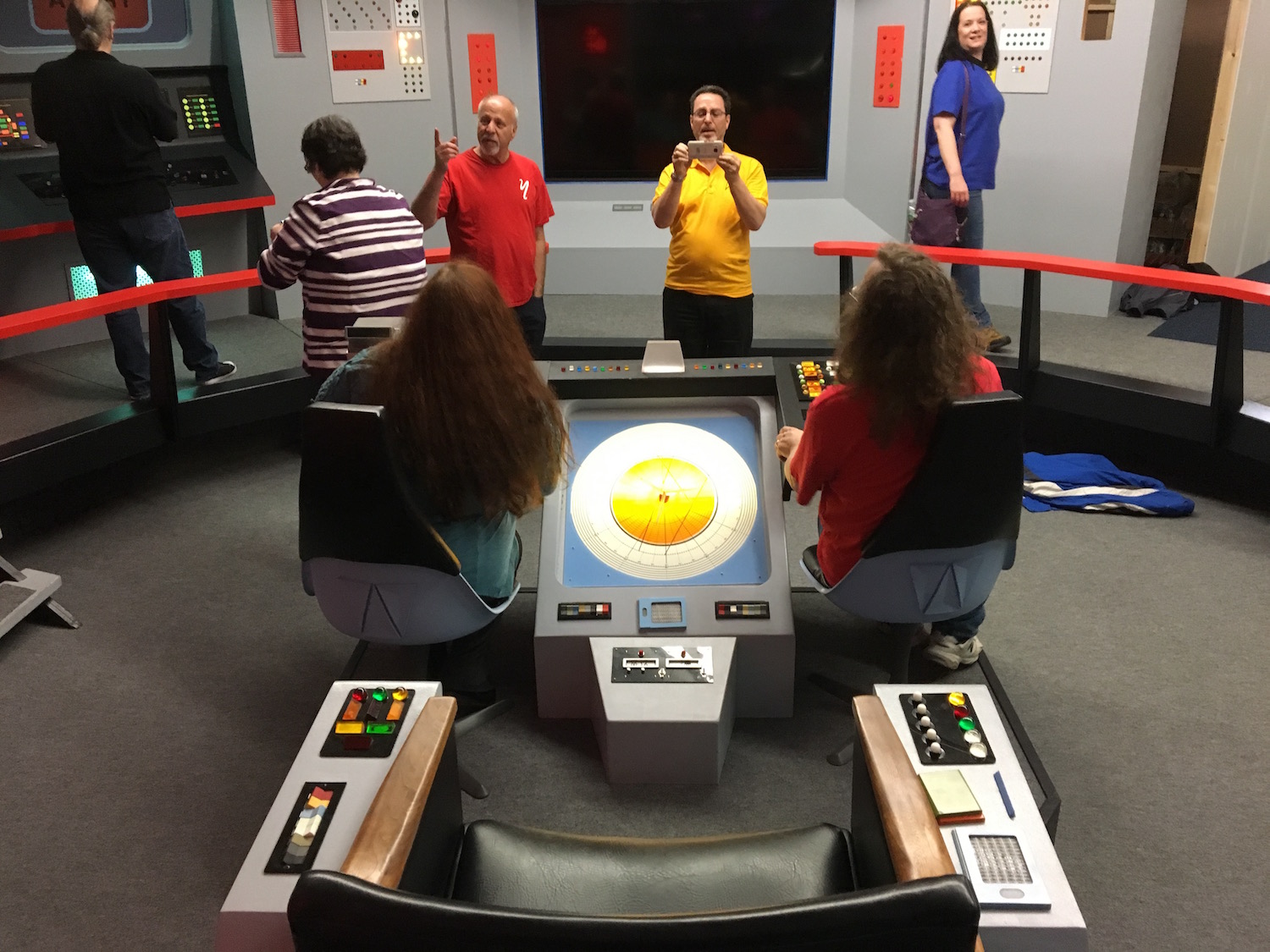
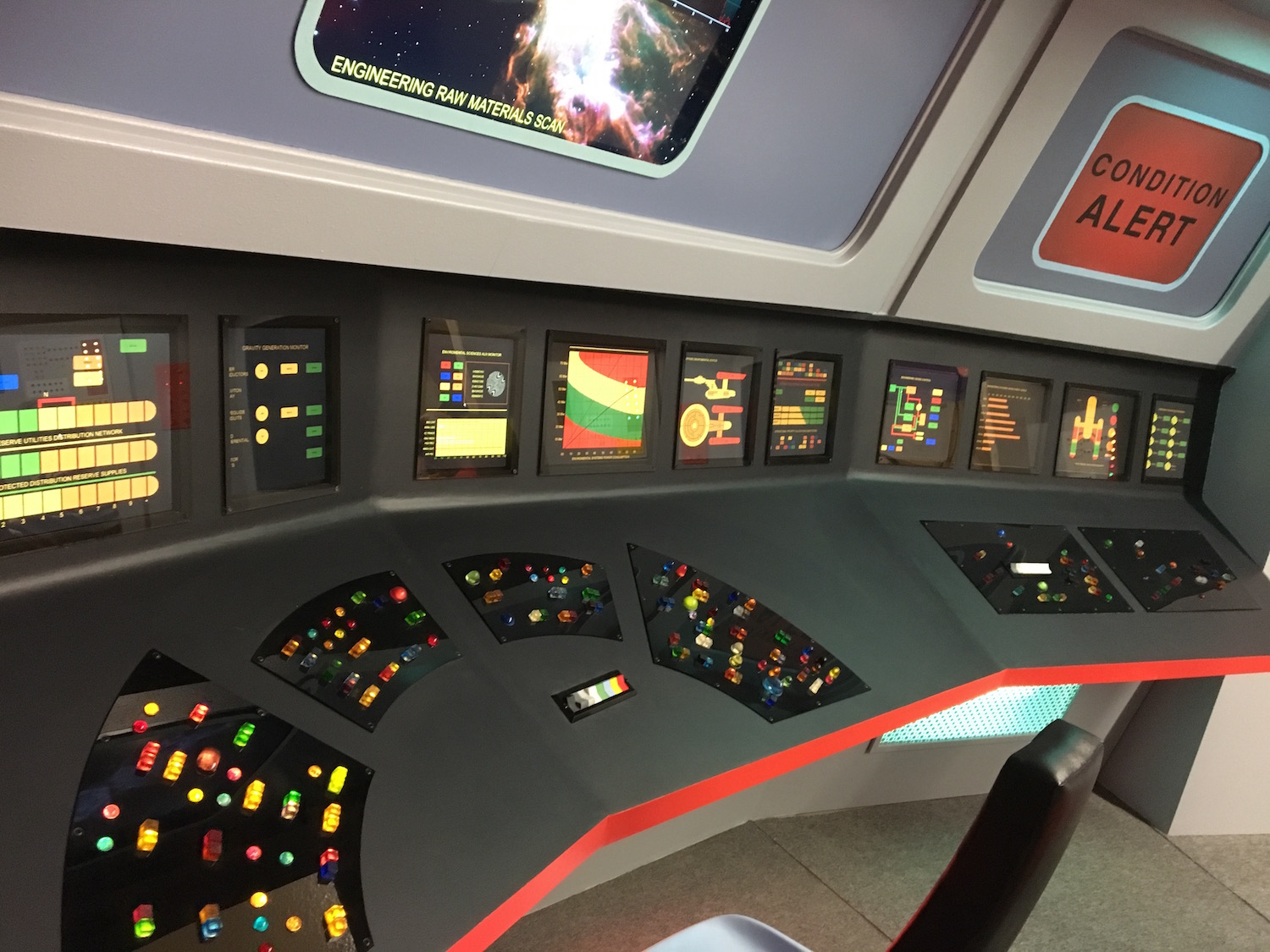
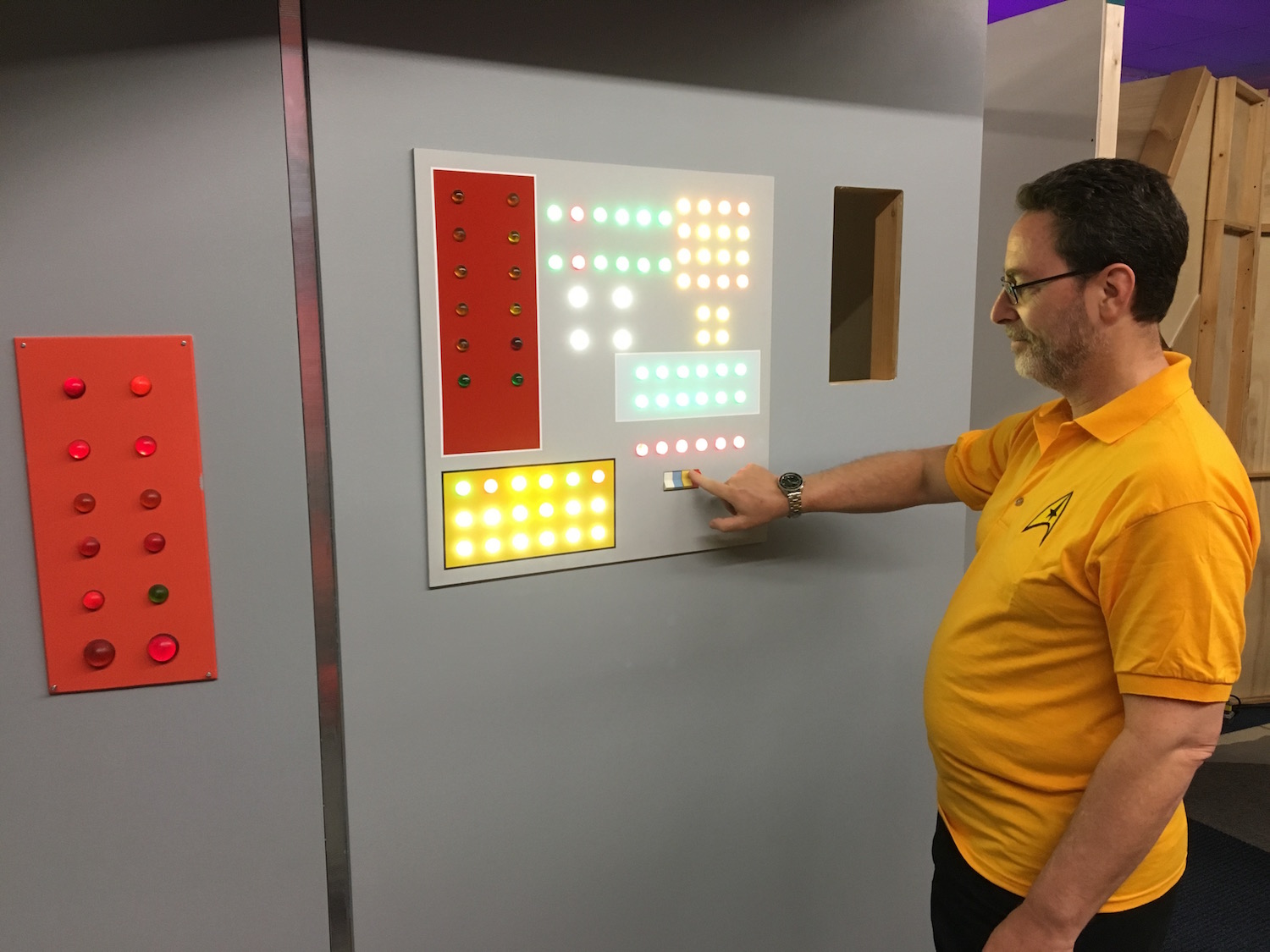
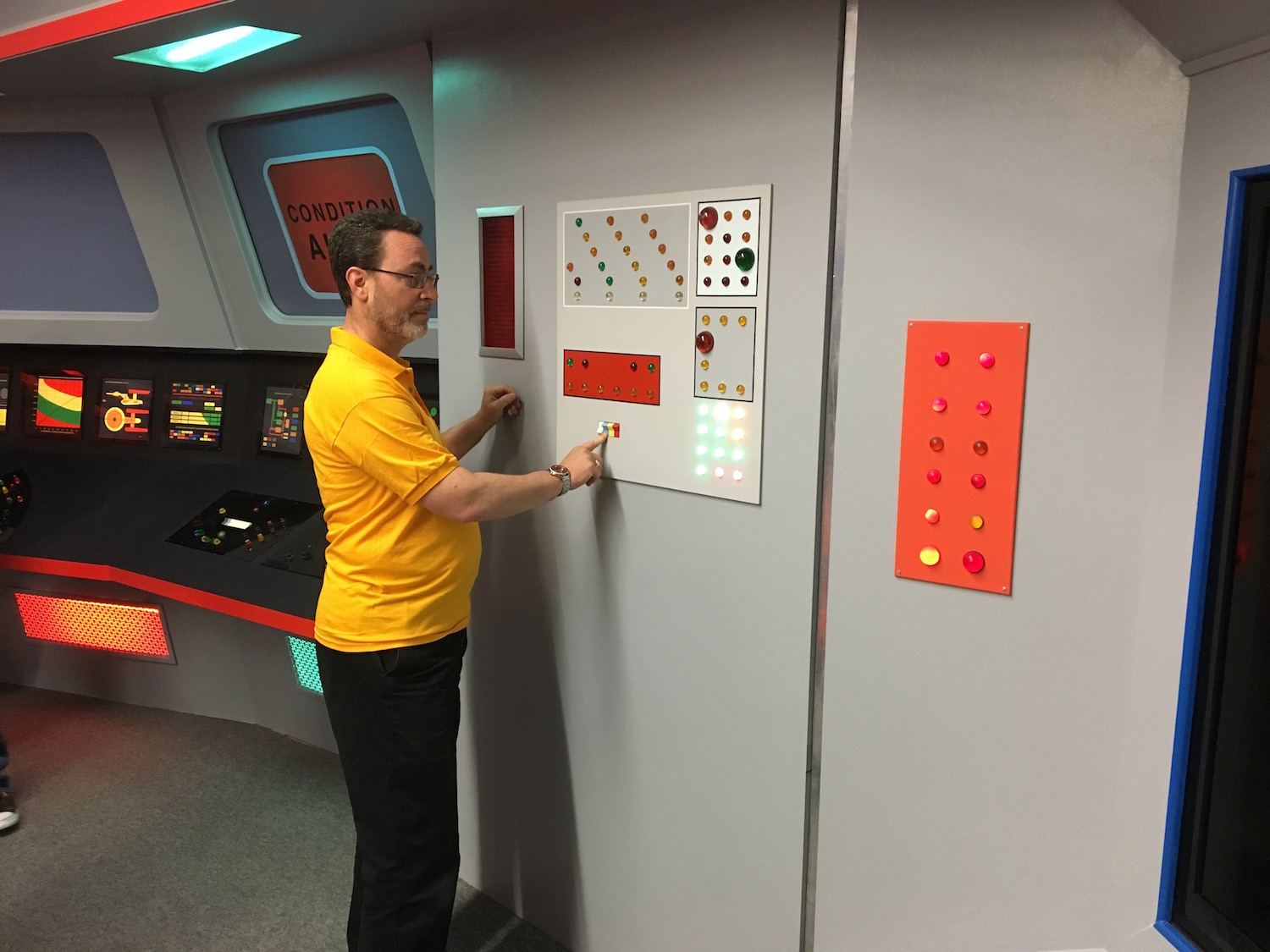
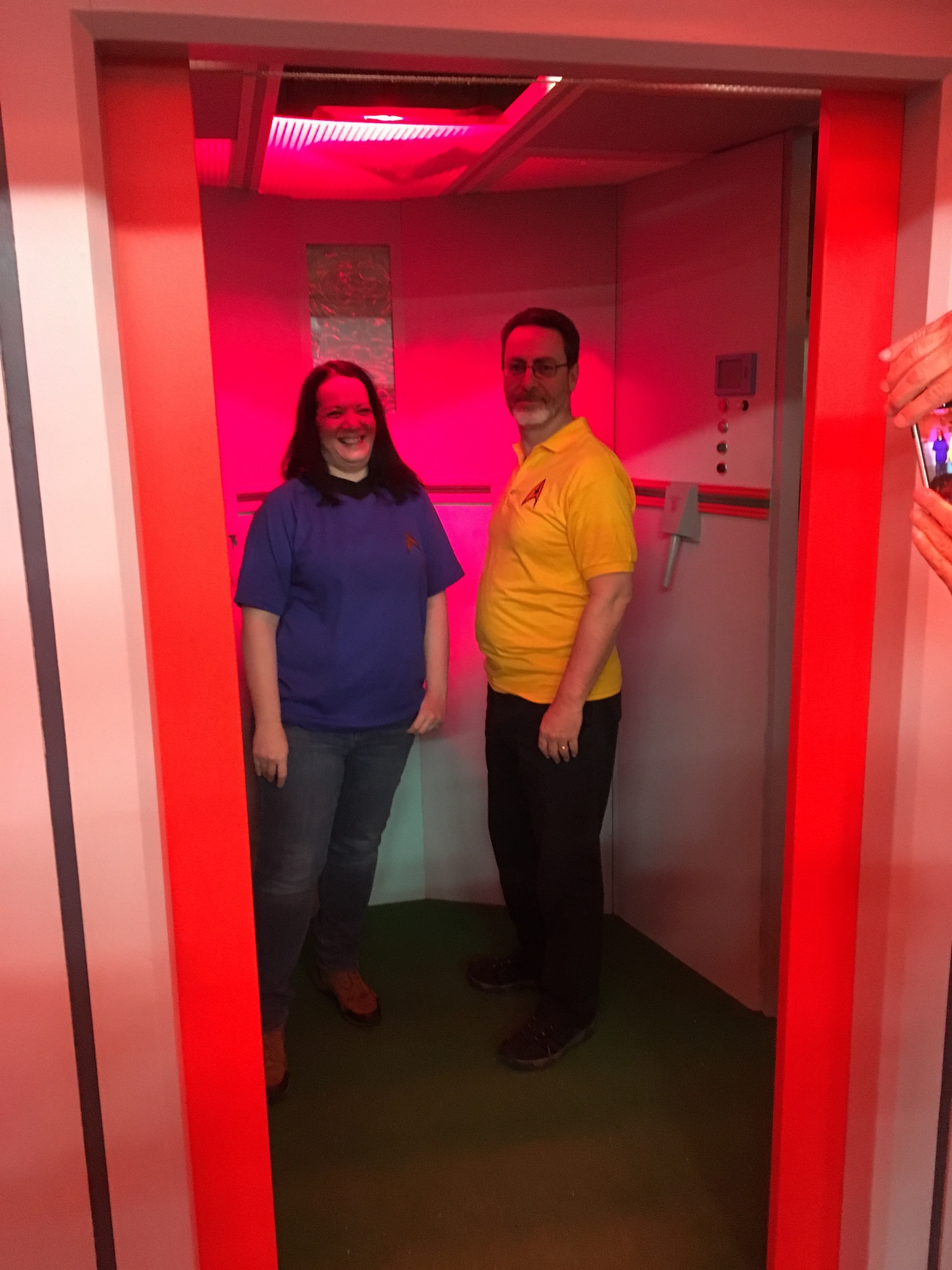

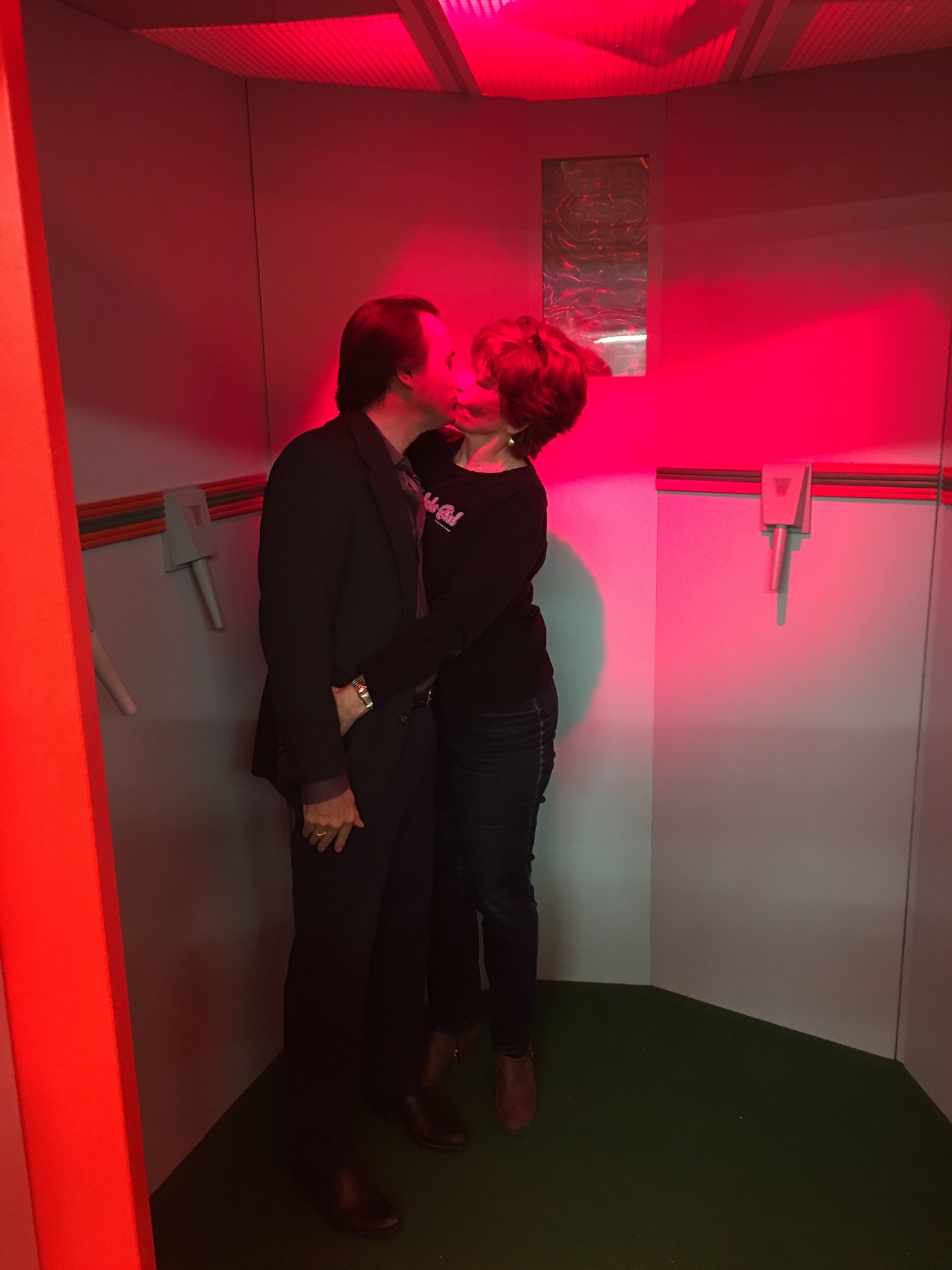
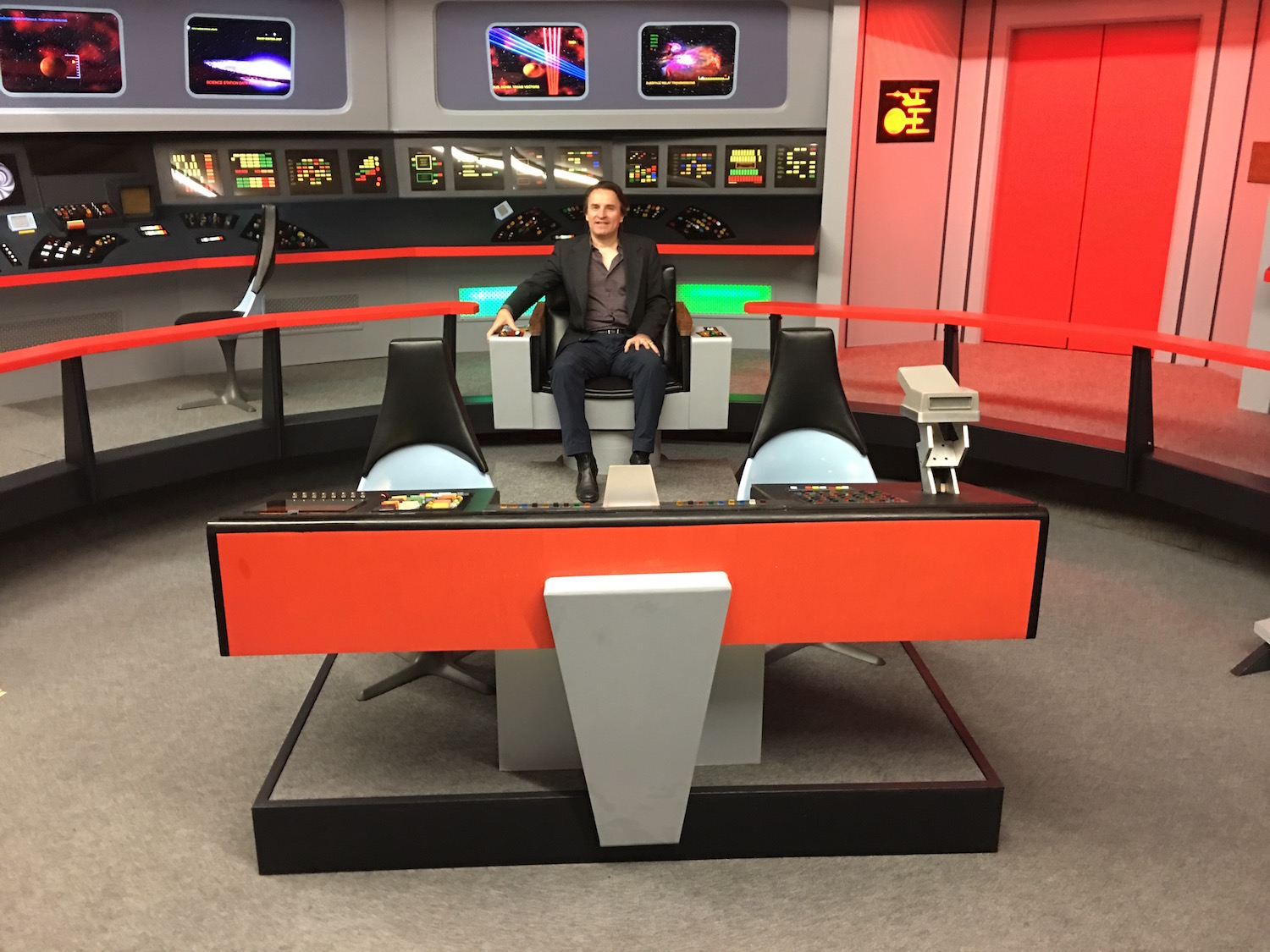
The tour was nothing short of magical. We spent a couple of hours making our way through the sets—our mouths dropping in amazement as we entered each new location, many of us doubling back to previous areas to ensure we recorded all of it with our cameras, and all of us enjoying sharing the day with each other. Even with all of the photographs included in this blog, those images do not fully convey the immersive experience Mr. Cawley has created. While the lighting does not always show up well in pictures, he has done a fine job at reproducing the colors often seen on the series. Mr. Cawley has also included background sound effects on the sets, all completely true to the show.
Perhaps best of all, Mr. Cawley does not run his Set Tour like a museum. His policy is not hands off, but hands on. Visitors can work buttons and switches and toggles, activate intercoms and red alerts. They can sit at a conference table, at Captain Kirk’s desk, in Doctor McCoy’s office, at the various consoles and stations on the bridge, and in the command chair. Every detail of the Star Trek original series sets has been meticulously re-created, and yet guests are invited to touch and interact with virtually all of it.
After the tour, we headed to lunch over at—you guessed it—Burleigh’s Luncheonette. None of us could stop talking about the Set Tour. And we were all happy that we would be returning there after our meal.
When we finished our lunch, we went back to the Set Tour to meet any visitors who wanted to speak with us. Many of the writers set up tables so that they could sell and autograph their work. I hadn’t been able to bring any of my novels across the country with me from California, but I had a fine time talking with fans. In particular, I had a lengthy conversation with a young man named Will who professed a love for Deep Space Nine, both on television and in the post-series run of books that continues the story from the end of the show.
Throughout the afternoon, between speaking with visitors to the Set Tour, we all continued to walk through the sets. I marveled at everything: the physical details, the sound effects, the feel of the entire place. We played like children.
At the end of the day, all of the writers gathered on the bridge set for a group interview to be recorded. I’m not sure where or when it will be posted, but I’ll include a link here when I find out.
At last, as dusk settled on upstate New York, we departed from the Star Trek Original Series Set Tour. We all had dinner together again that night, then stayed up late in the hotel banquet room, visiting with each other as much as we could before we all had to go our separate ways. The group gathered again for breakfast the next morning—not at Burleigh’s Luncheonette, but at the Hot Biscuit Diner. Afterward, several of the writers got in their cars to begin their long journeys home, while several of us made our way to Fort Ticonderoga, a storied military installation dating back to the 17th century. Built by the French during the French and Indian War, the star fort also featured prominently during the American Revolution.
Fort Ticonderoga
© Fort Ticonderoga Association
Writers on the Fort, From Left to Right: Scott Pearson, Bill Leisner, Bob Greenberger, Kevin Dilmore, Michael Jan Friedman, and DRG III
©2017 Karen Ragan-George
Eventually, those of us traveling out of New York—to California, to Maryland, to Minnesota, to Missouri—headed for the airport. Since we were all flying out of gates near each other, we continued to visit, talking about how wonderful our trip had been, and thinking about where next the writers would choose to gather. As I type this now, looking back on the experience, I keep returning to one of Star Trek creator Gene Roddenberry’s beliefs, a statement emblazoned across the front of the Set Tour.
©2017 David R. George III
I can’t wait for our next adventure!
©2017 David R. George III











